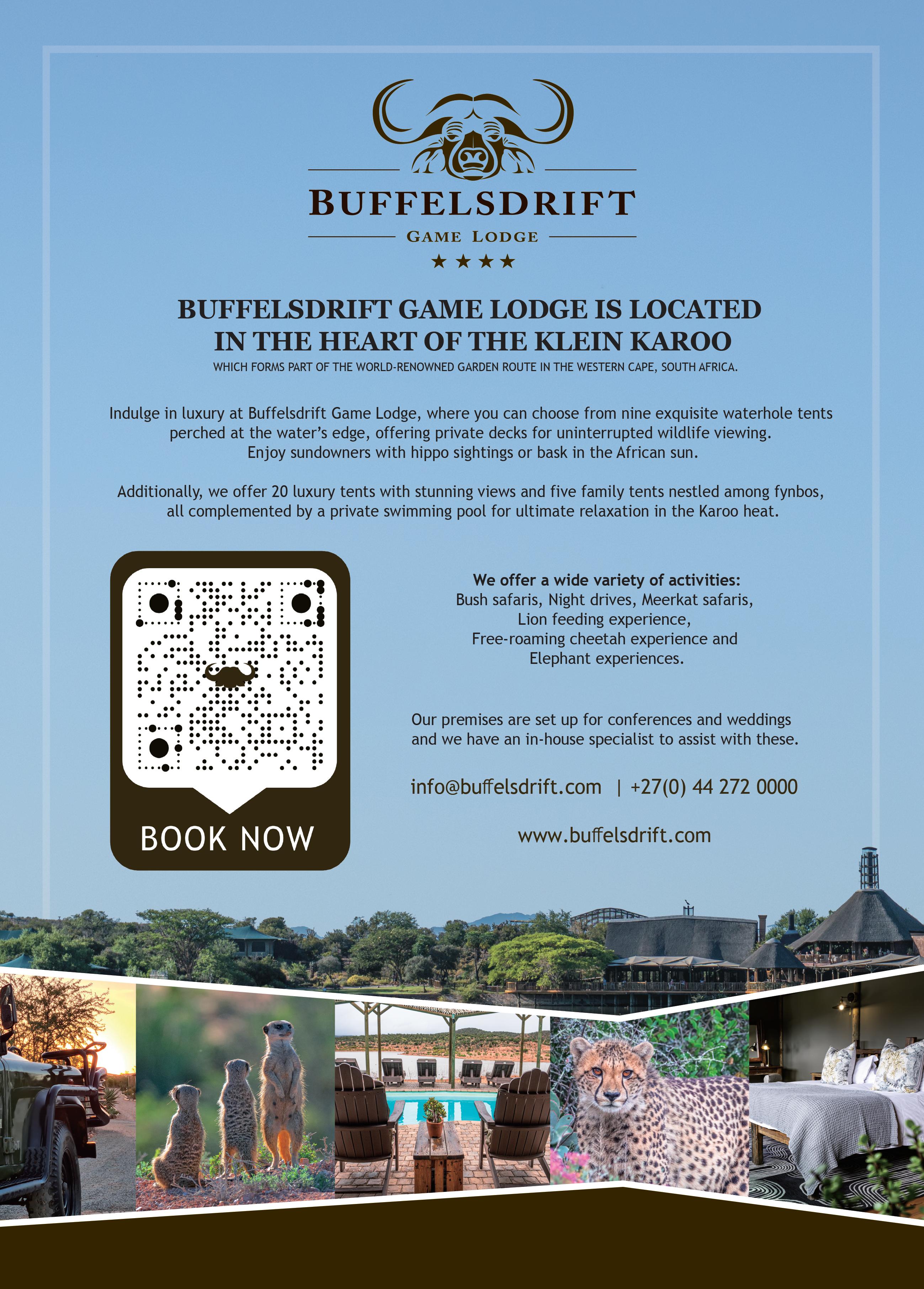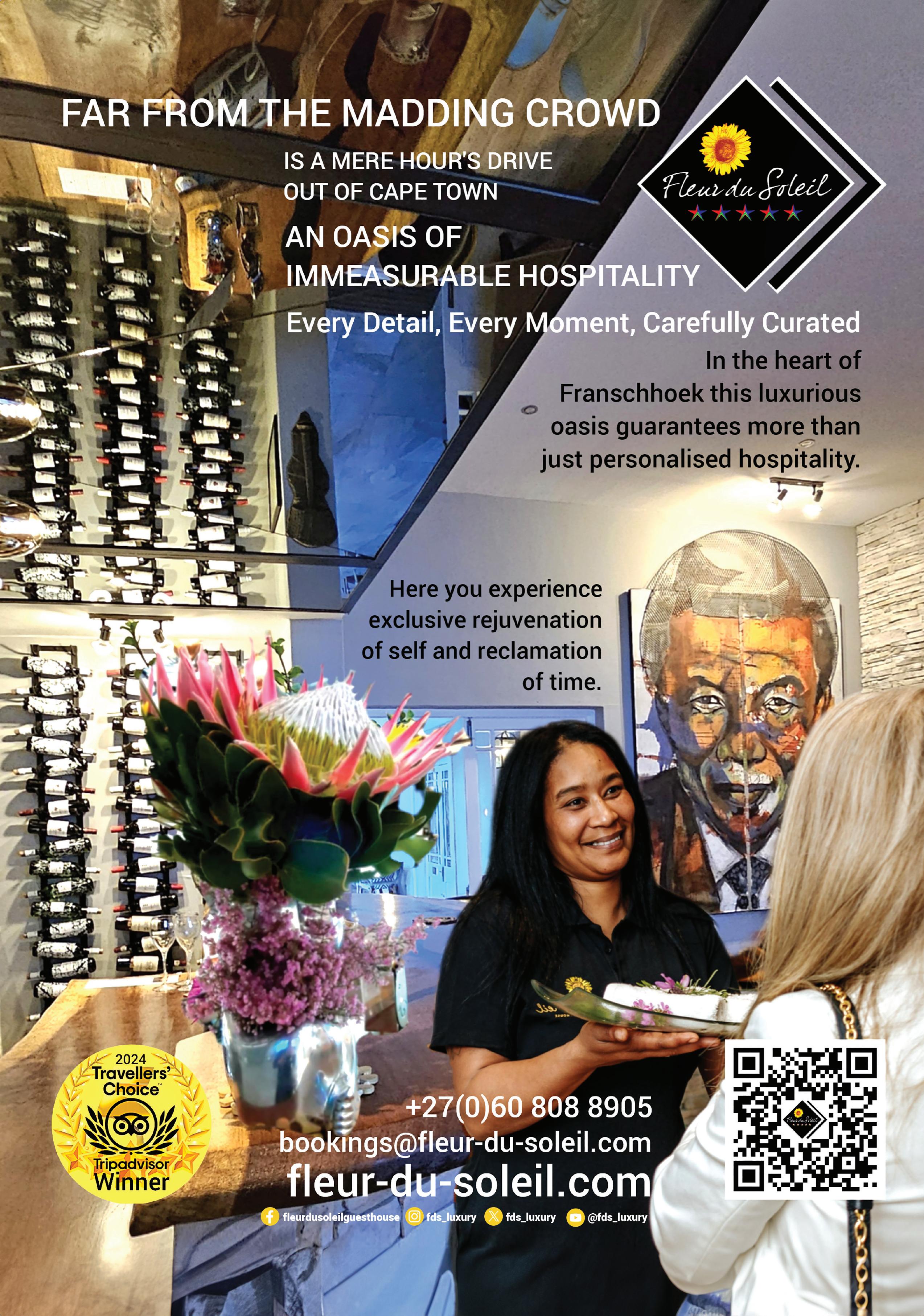












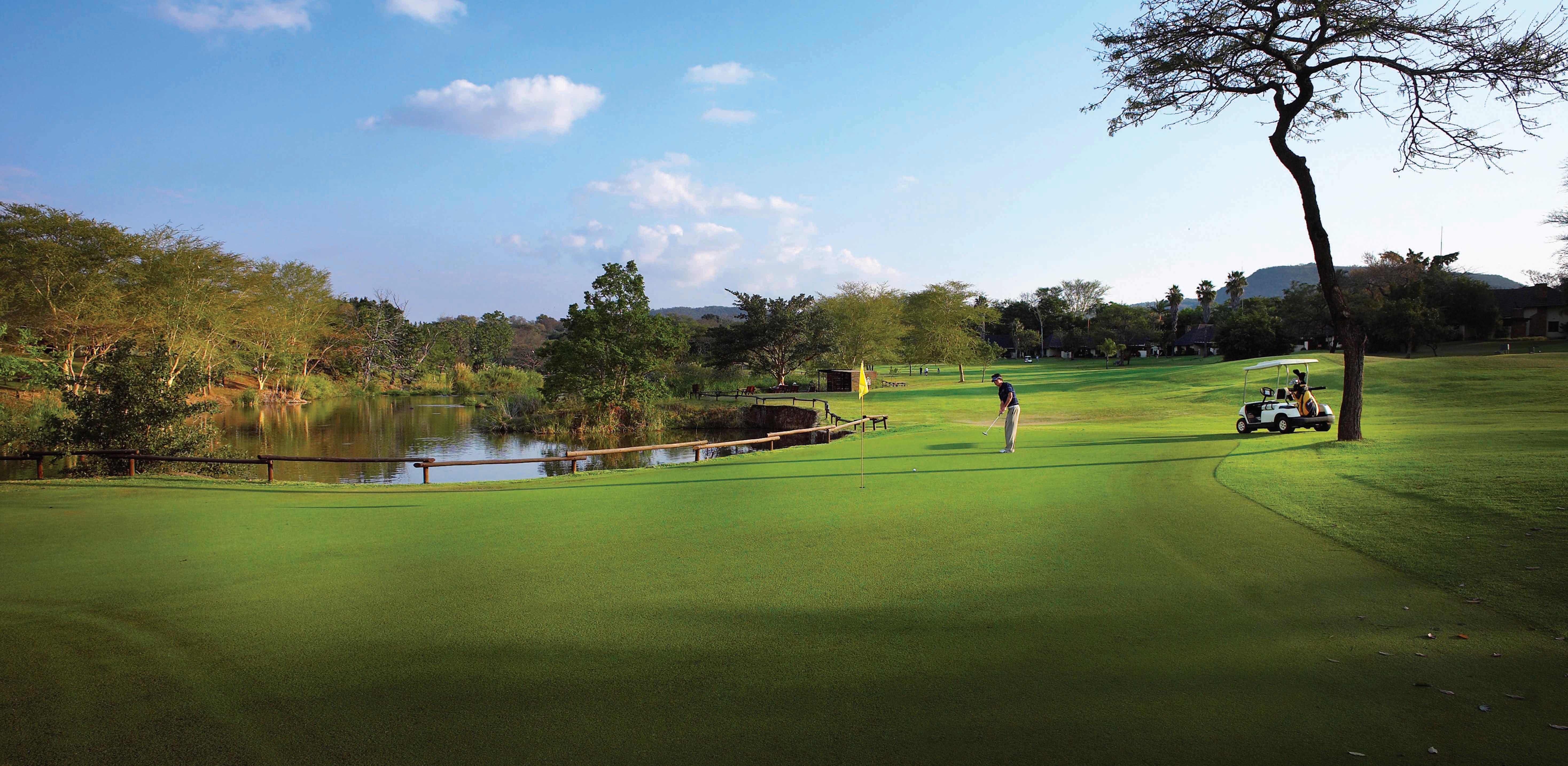
Step into a world of untamed beauty at Sabi River Sun Resort, where every moment promises a fusion of golfing excellence and thrilling safari adventures.
Nestled near the gates of one of the world’s most renowned safari parks, Sabi River Sun Resort beckons with a promise of unparalleled relaxation and adventure. It is easy to see why this resort once again featured on the extensive winners’ list of almost 40 Southern Sun hotels in the 2024 Booking.com Traveller Awards. Whether you’re a seasoned golfer seeking the ultimate challenge or a nature enthusiast eager to explore the wild, this resort offers an experience unlike any other.


At the heart of the resort lies an immaculately crafted golf course. Prepare to be captivated as you tee off amidst lush greens adorned with Champion 12 grass, offering a playing experience that transcends the ordinary. The world-class course ensures that every swing is met with a sense of wonder and appreciation for the natural beauty that surrounds you.
Beyond the fairways, Sabi River Sun Resort invites you to immerse yourself in a world of adventure. From the iconic Kruger National Park to the breathtaking Blyde River Canyon, the wonders of Mpumalanga await just beyond your doorstep. Indulge in a leisurely day at Heather’s Spa or delight in the chance to take a leisurely meander along our shaded paths and spot the resort’s resident hippos - the choice is yours.
Families will delight in the array of activities available, from sparkling swimming pools to sports courts and specially curated programs for children. And after a day of exploration, savour a culinary journey at one of the resort’s acclaimed restaurants, where sumptuous cuisine is served with a side of warm hospitality.
With amenities such as free uncapped WiFi and a host of recreational facilities, Sabi River Sun Resort ensures that every moment of your stay is infused with comfort and convenience. So, whether you seek the thrill of the greens, the allure of safari, or simply precious moments with loved ones, Sabi River Sun Resort promises an oasis of tranquillity amidst the natural beauty of the Lowveld. Book your stay today and discover the perfect blend of golf and adventure in Hazyview.
Visit southernsun.com today to experience the perfect blend of golf and adventure and turn every moment into a cherished memory with Southern Sun.
ADDRESS: R536, Main Sabie Road, Hazyview Mpumalanga, South Africa
HOTEL TELEPHONE: +27 (0)13 737 4600
EMAIL: sabiriversun.reservations@southernsun.com
GPS COORDINATES: 25°02’07.1”S | 31°06’49.2”E
GENERAL MANAGER: Malcolm Bone
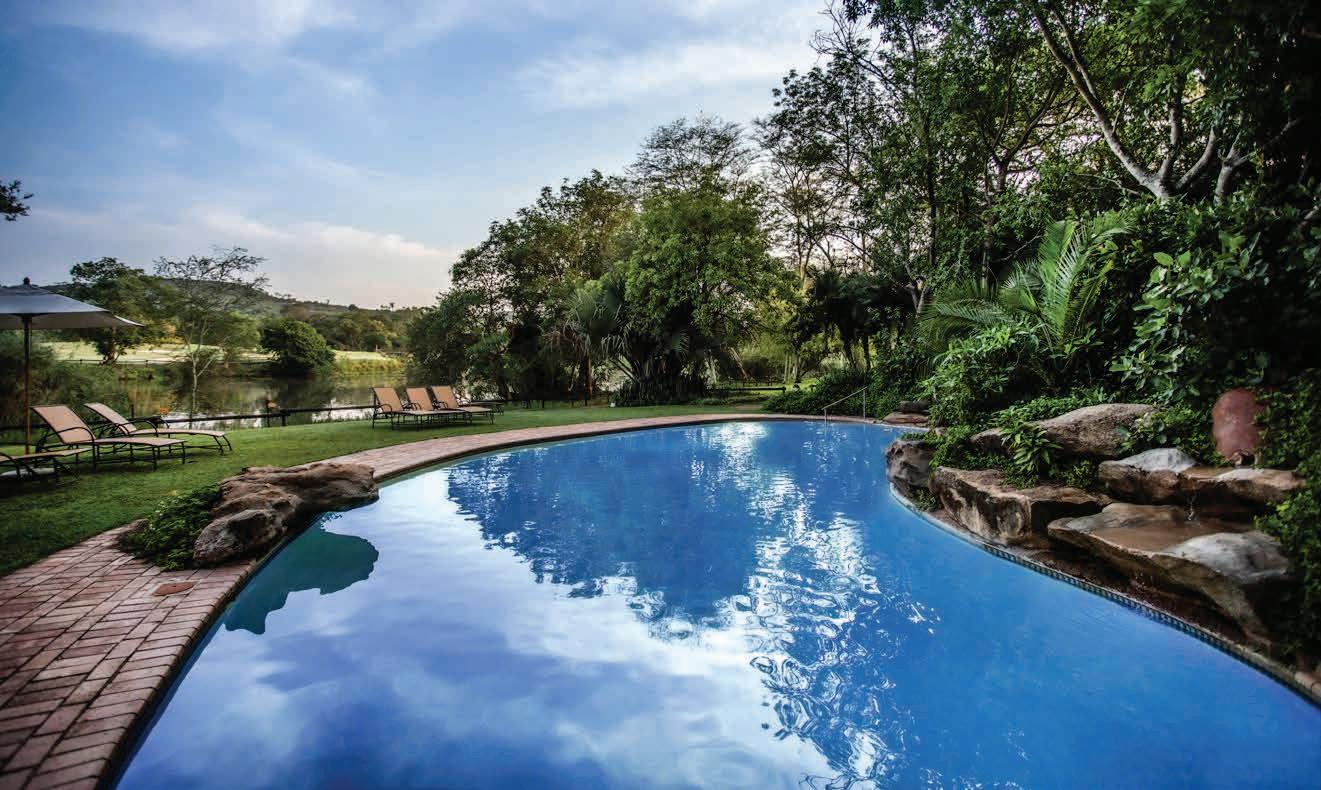



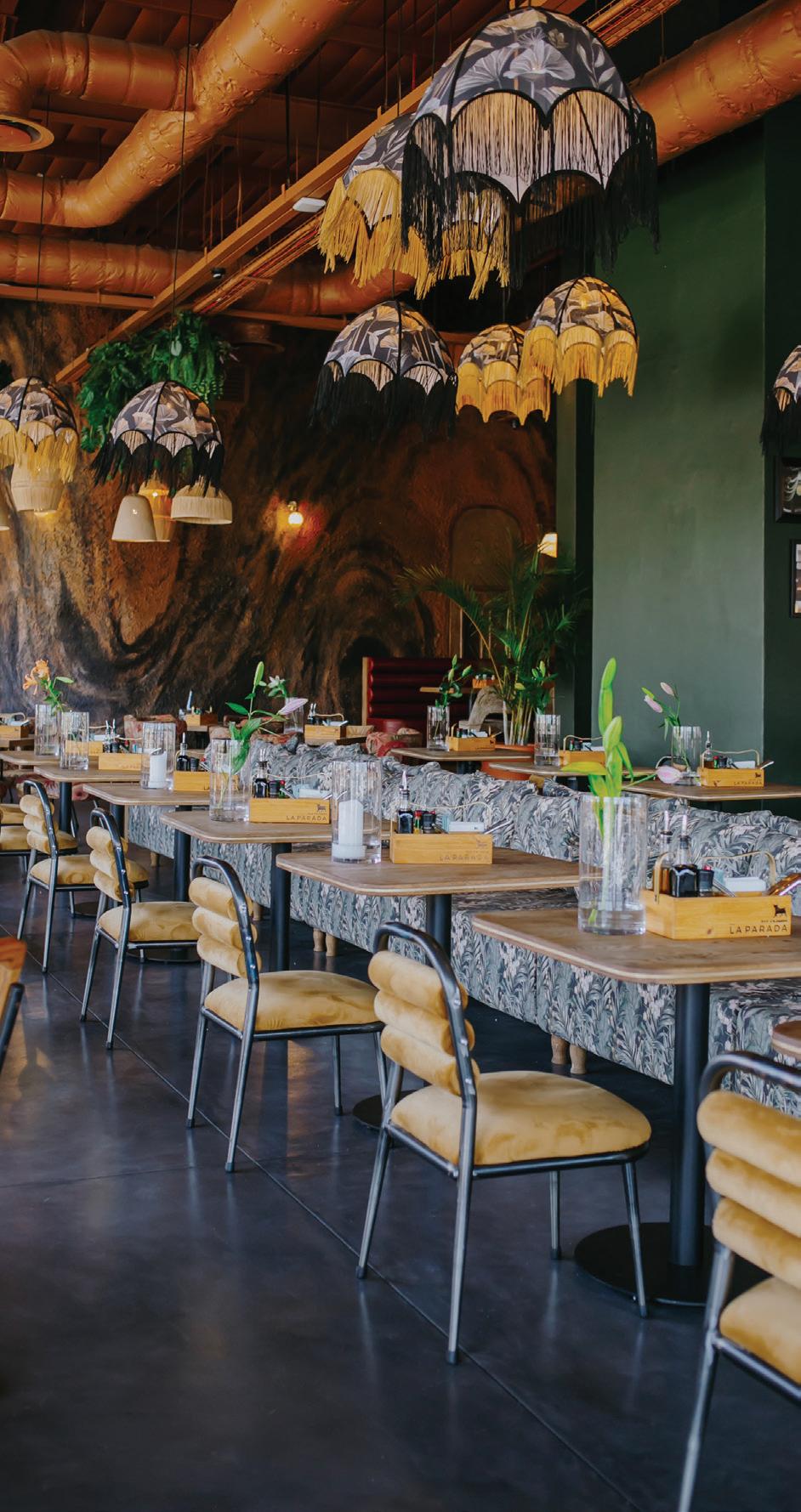


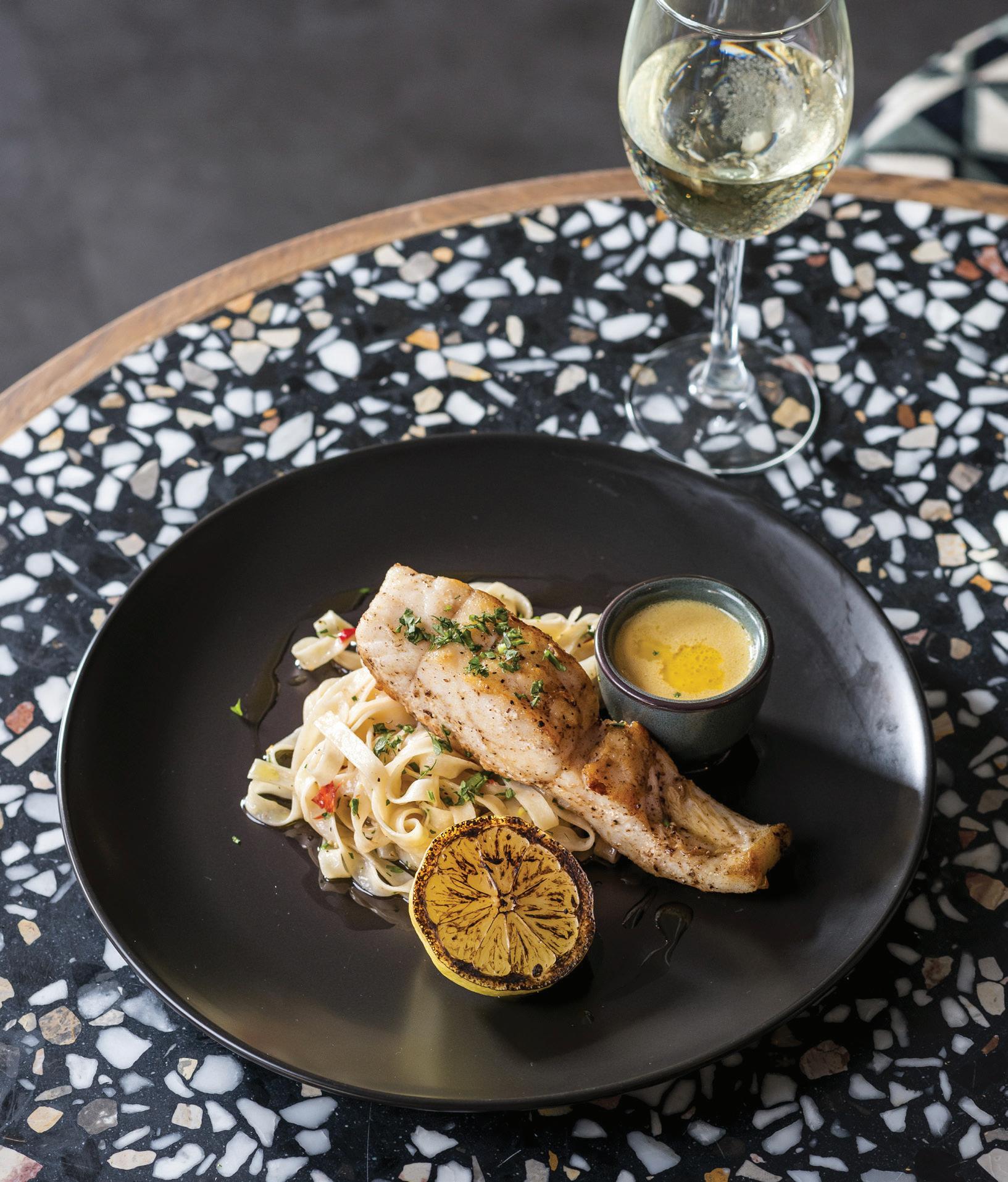












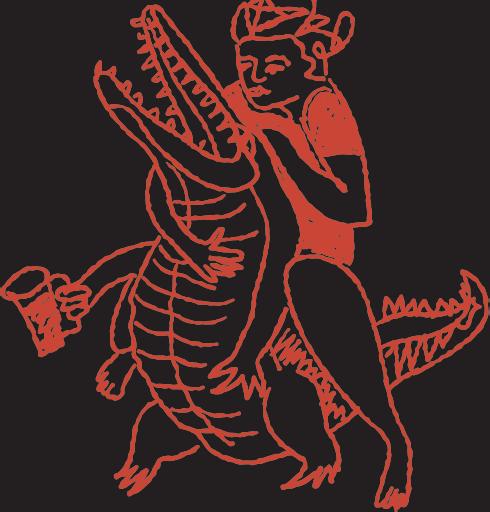



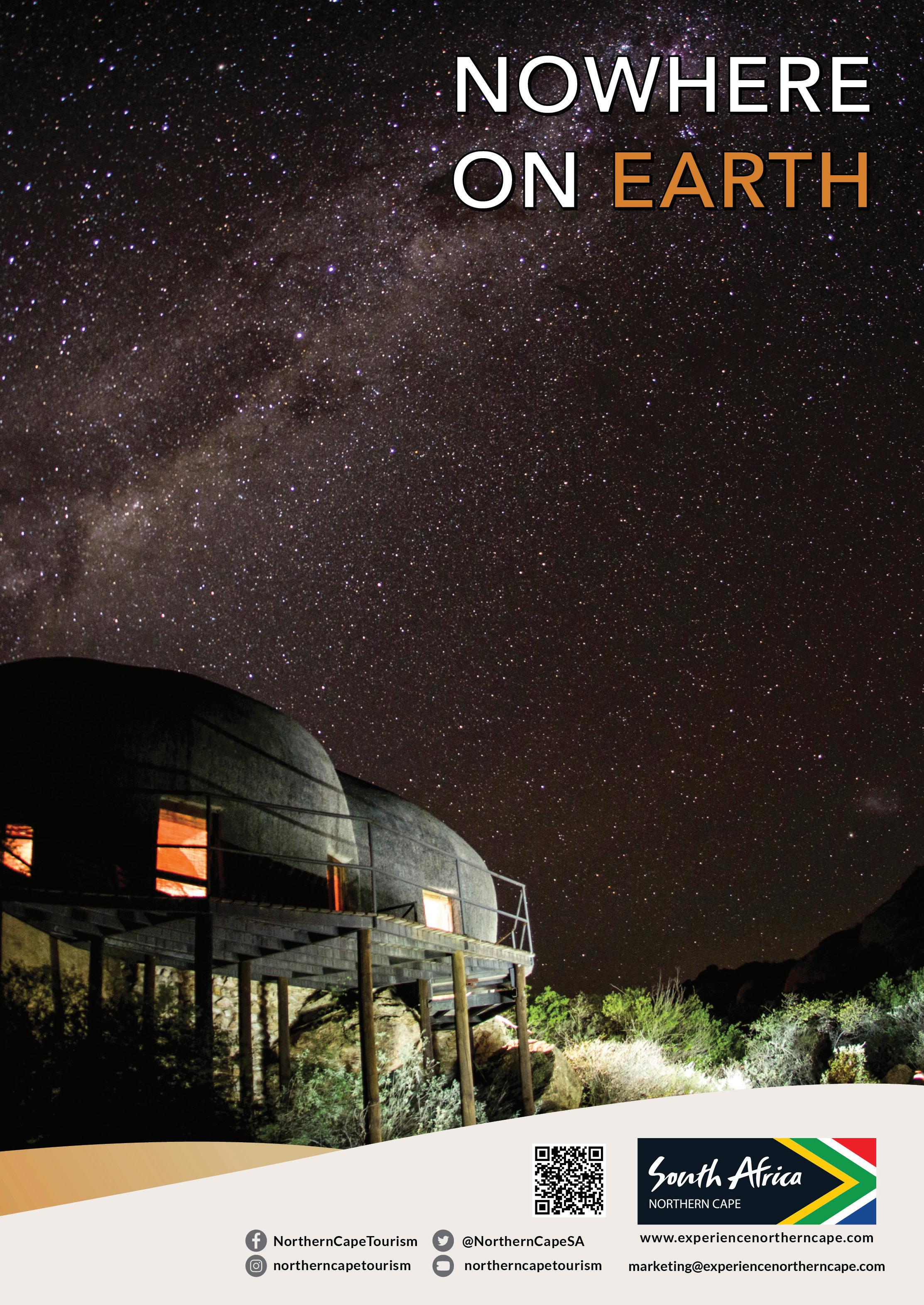

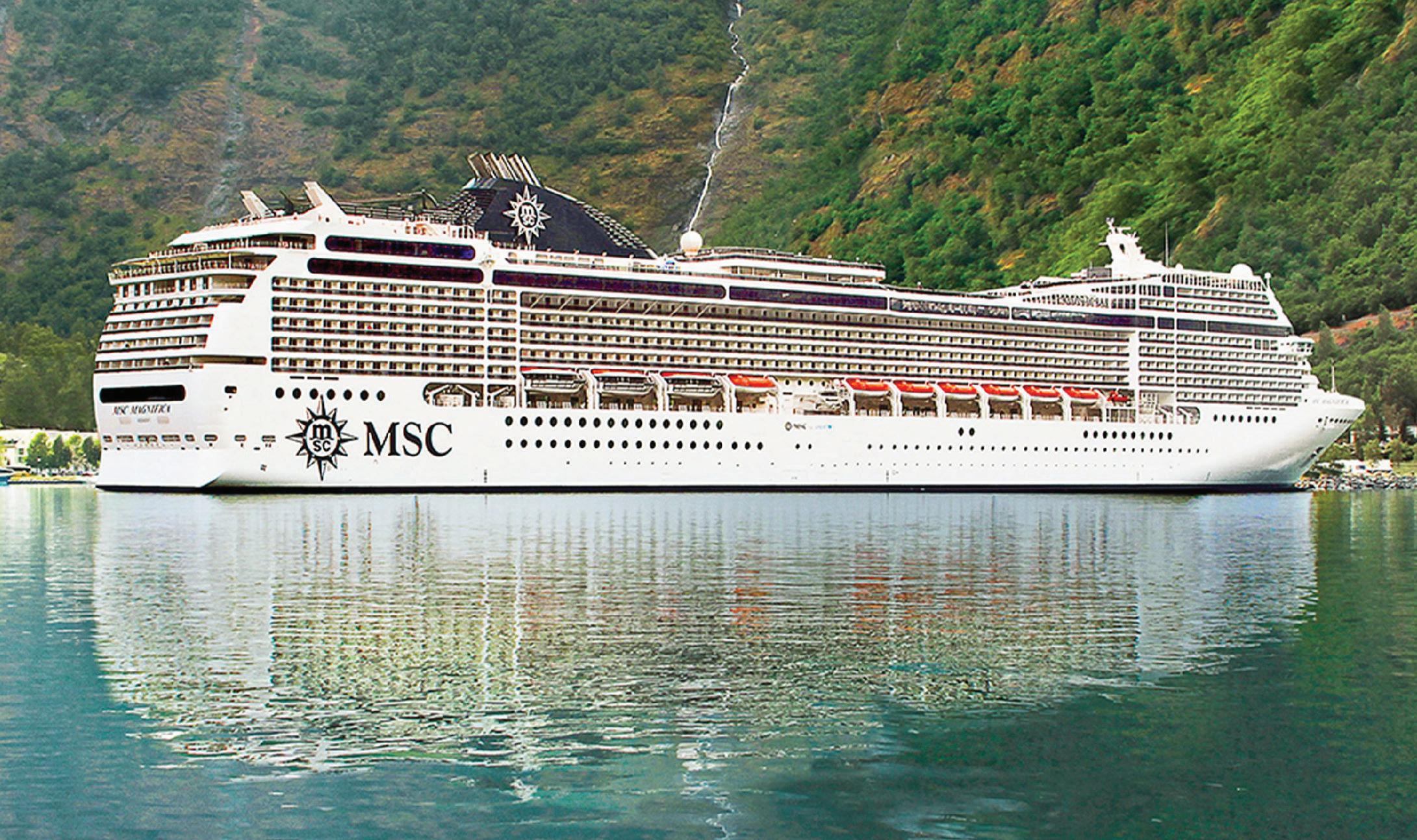
20
Be a Better Traveller
Here’s how to become a ‘regenerative’ tourist this year: enhancing the well-being of places and the people who live in them
26
Floating Hotel
Why cruise holidays offer the ultimate in affordable luxury getaways
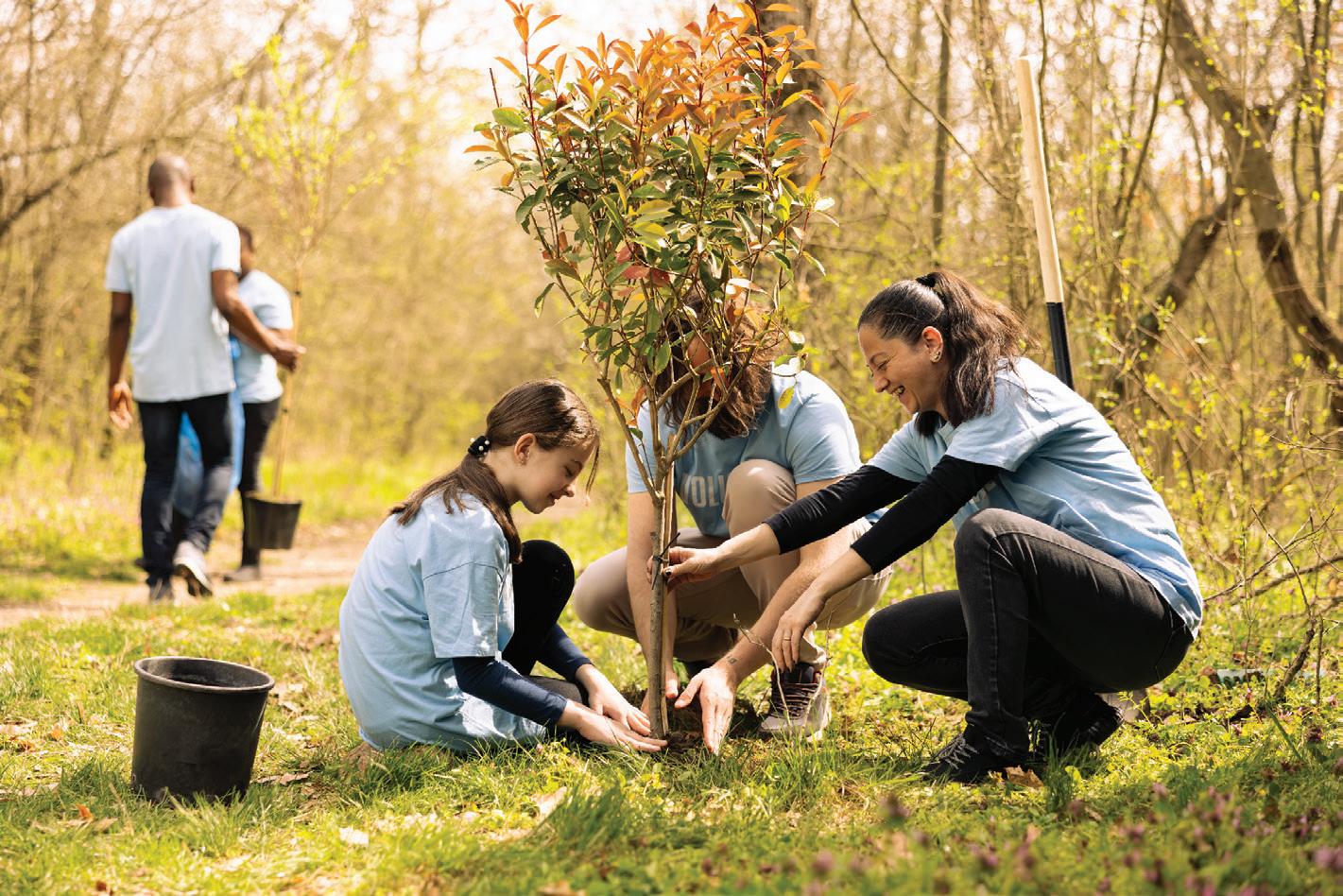























Showcasing and celebrating over 100 years of automotive history with a unique and exciting collection of vehicles, motorcycles, bicycles and memorabilia in the magnificent setting of the L’Ormarins Estate, situated in the picturesque Franschhoek Valley.
R90 adults | R70 pensioners
R70 motor club members
R50 children (3-12yrs)








booking.
LOCAL IS LEKKER
From Sea to Shining Sea
South Africa’s Blue Flag beaches are the benchmark of sustainable tourism, inspiring both locals and visitors to become responsible global citizens
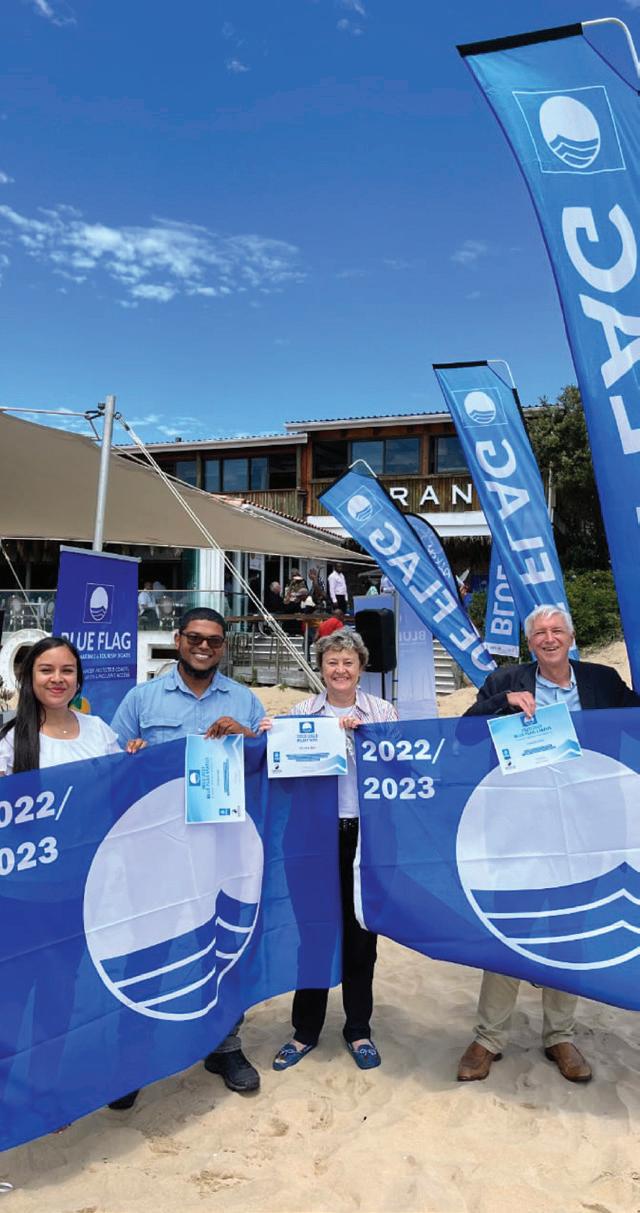
38
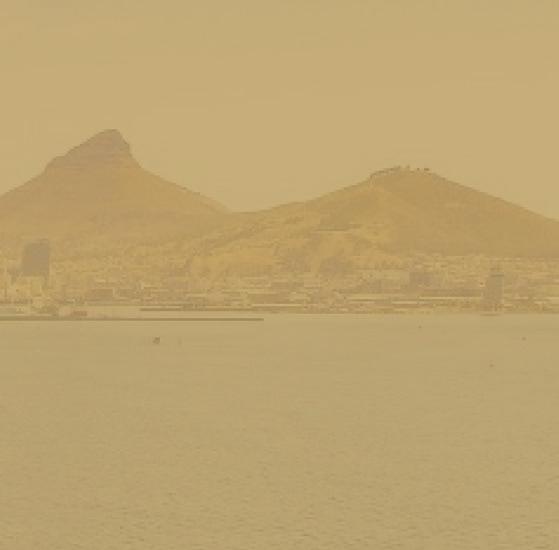
Still Waters
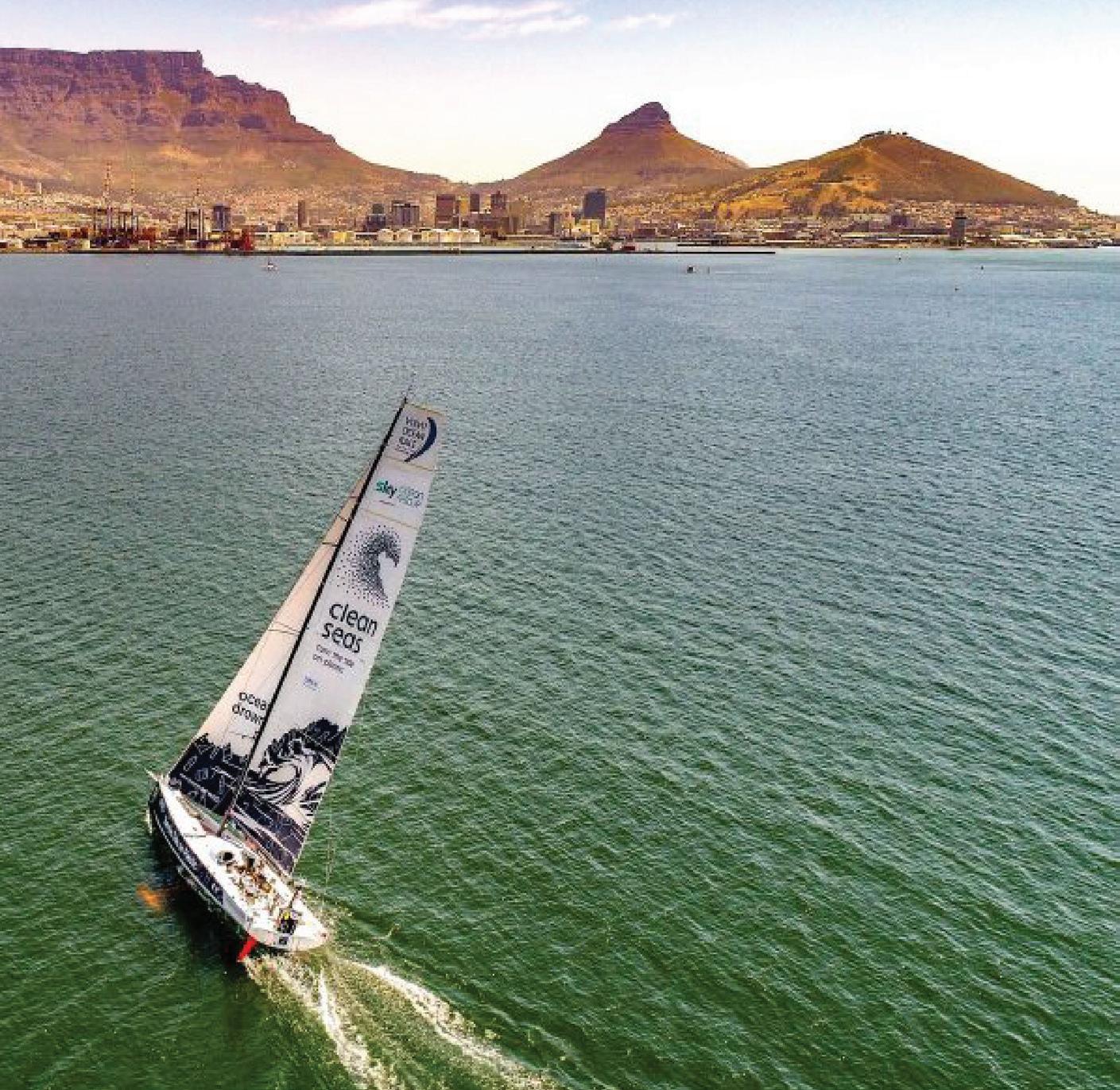
60
An Ocean of Adventure
Let’s take a deep dive into Sodwana Bay on the KwaZulu-Natal Elephant Coast, and immerse ourselves in its crystal-clear waters and vibrant coral reefs
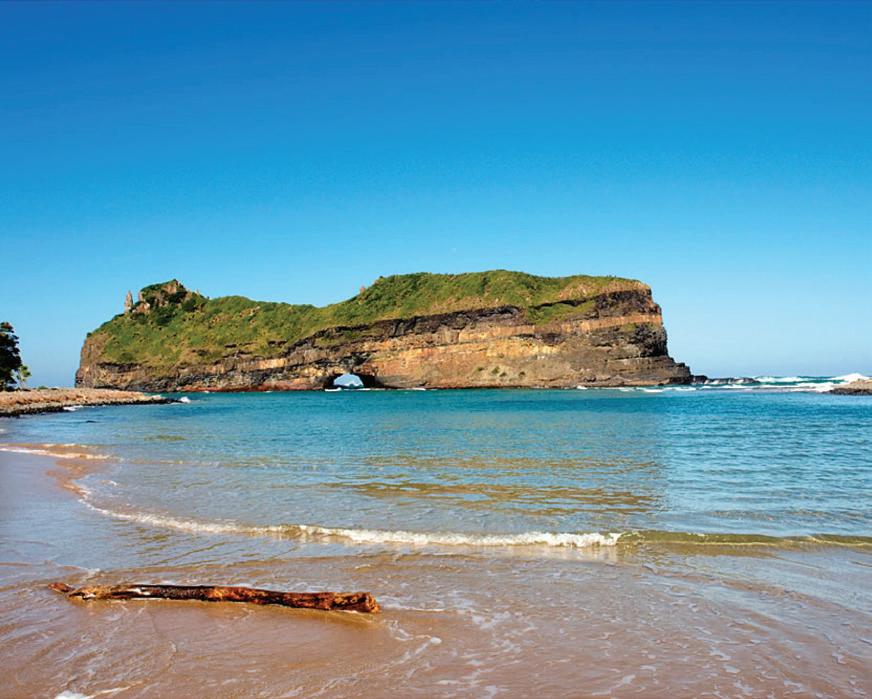
Set your course and hoist the sails, it’s time for a nautical adventure on the Cape West Coast!
44
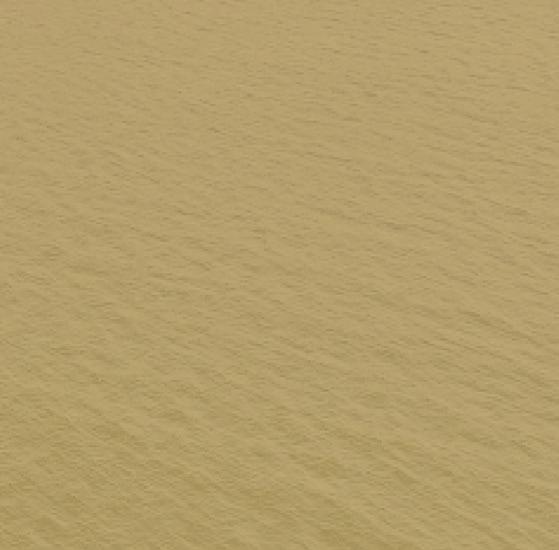
Among The Birdies and Eagles
With its verdant fairways, splendid wildlife and gorgeous surroundings, the Garden Route ticks all the boxes for a memorable golfing getaway
52
Ruggedly Beautiful
The Eastern Cape Wild Coast is calling—pristine nature, exciting adventure, rich culture and unforgettable memories await

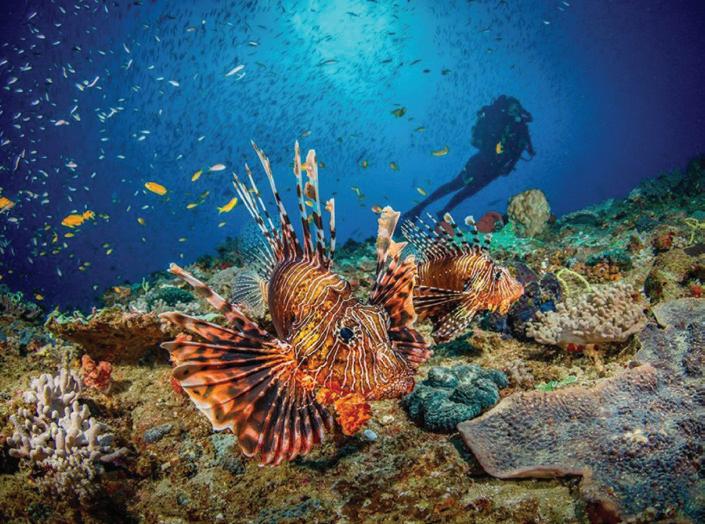

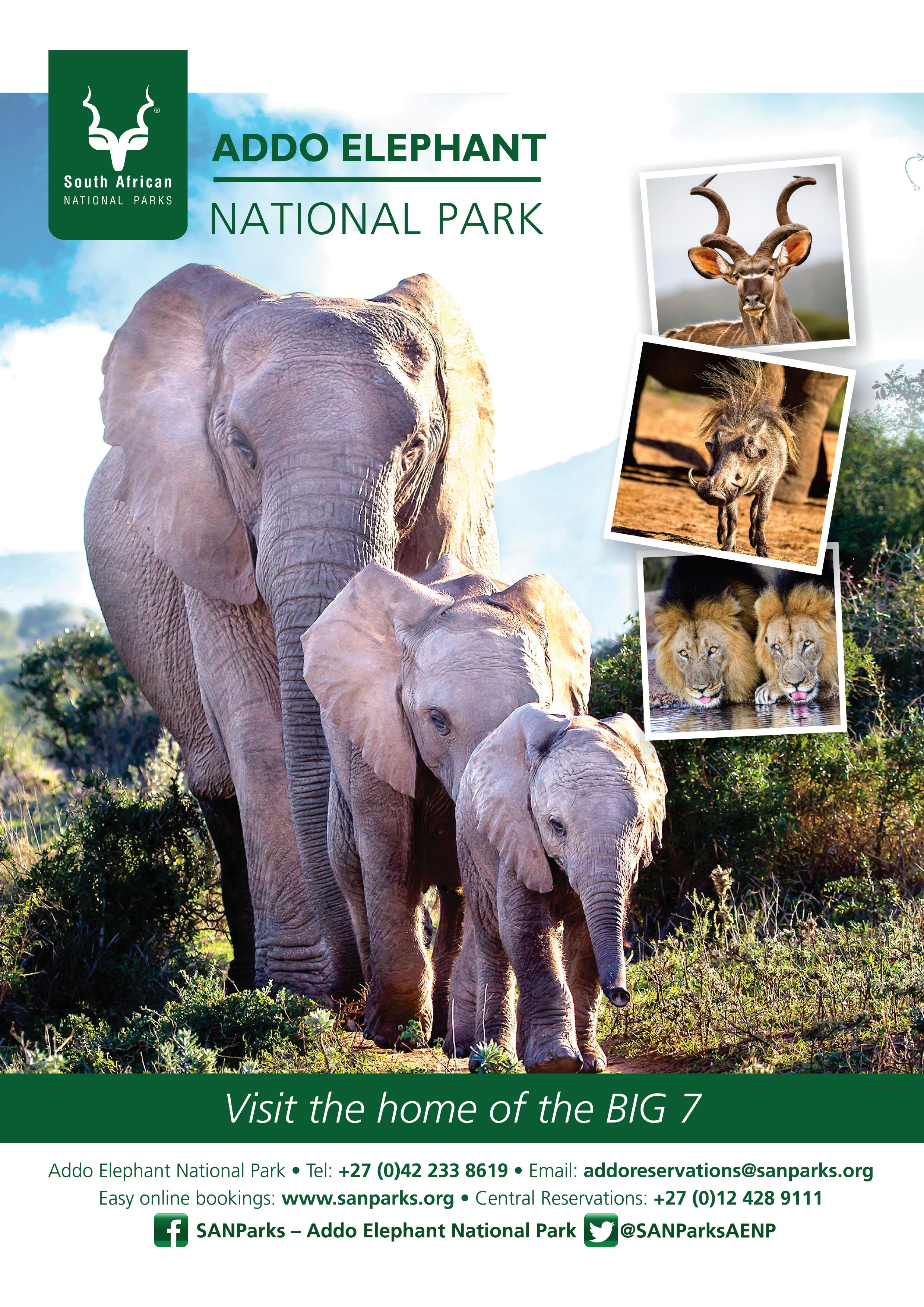
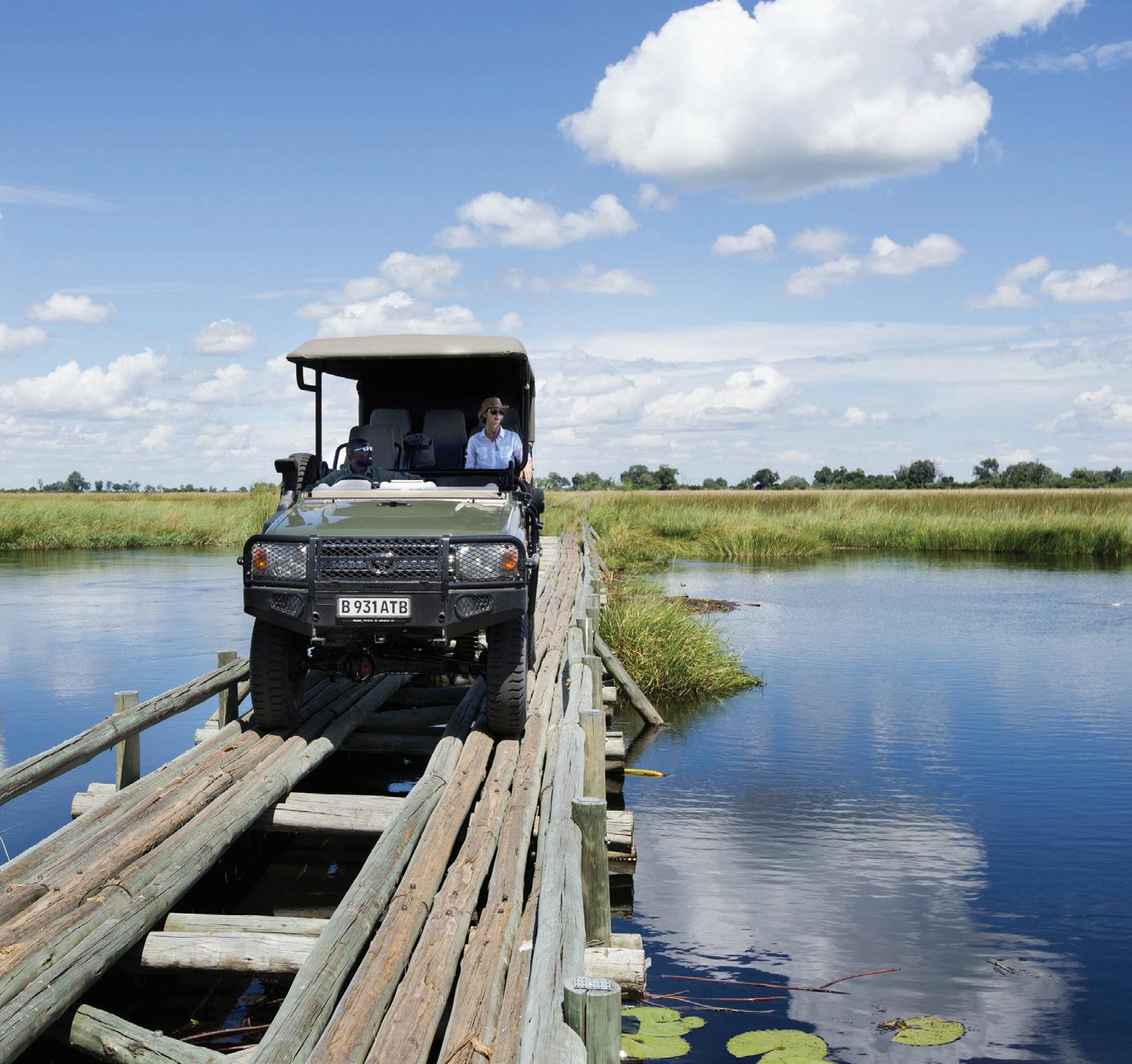
68
5-star Views
Yes, Botswana is a landlocked country, but we couldn’t pass up the opportunity to showcase the beauty of the Okavango Delta. And what better way to experience this water wonderland up close than at a luxury tented safari camp?
74
Vanilla Sky
Prepare to embark on a sensory journey that will leave you enchanted by the charms (and aromas) of Zanzibar, the Spice Island, in Tanzania
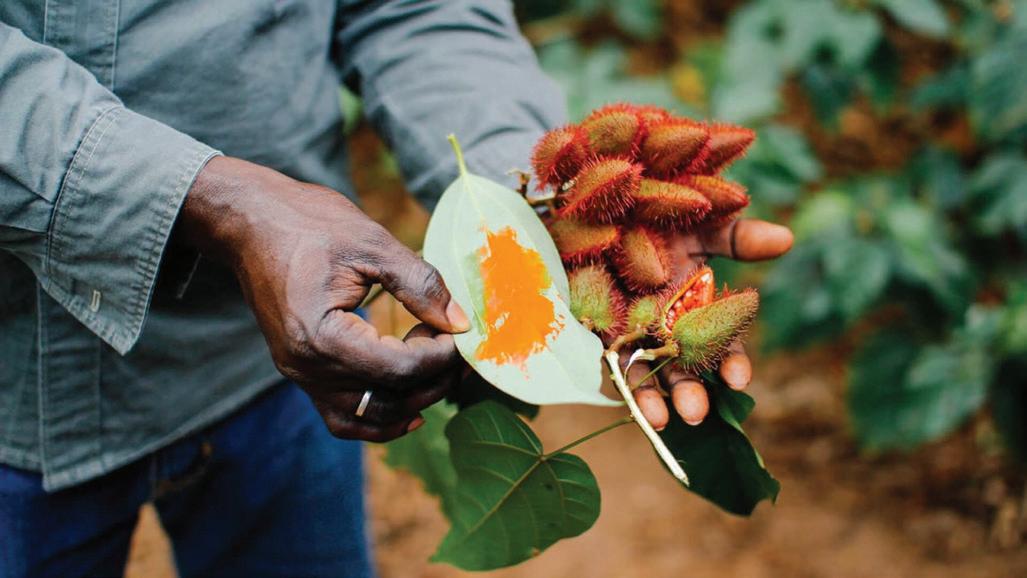
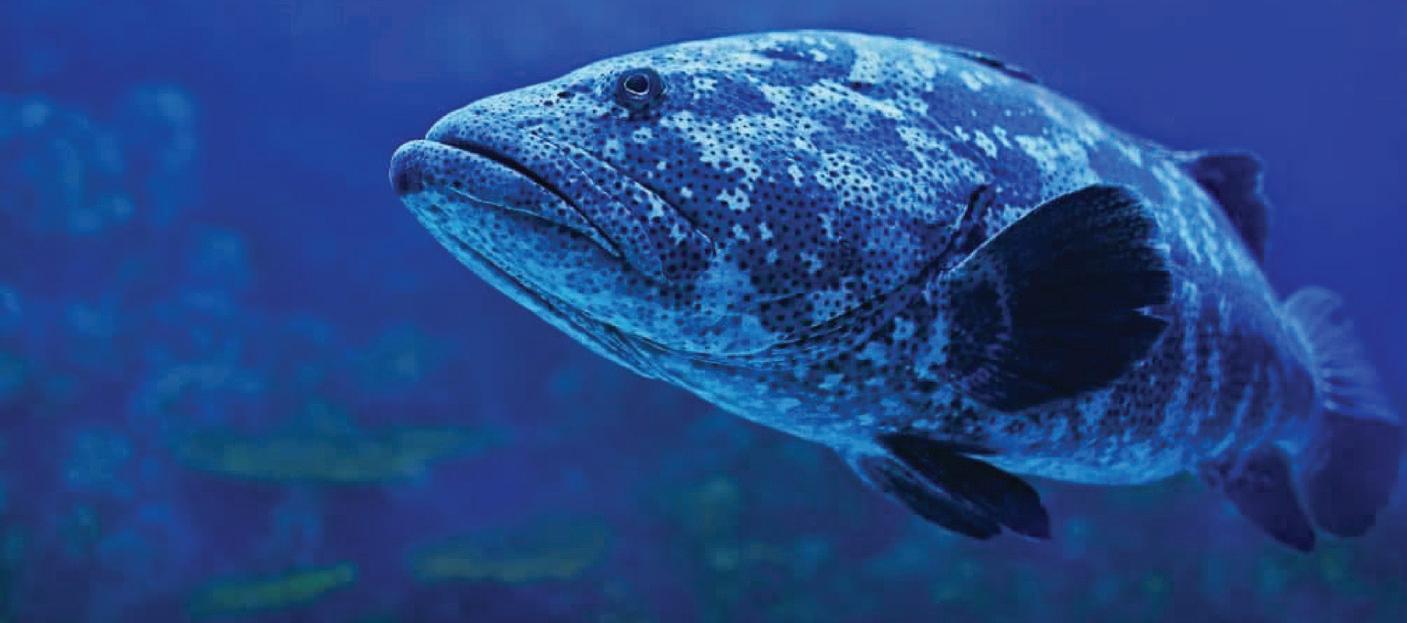
78 Hooked! Get ready for an unforgettable deep-sea fi shing adventure on the waters of Mombasa, Kenya—where the ocean’s bounty awaits
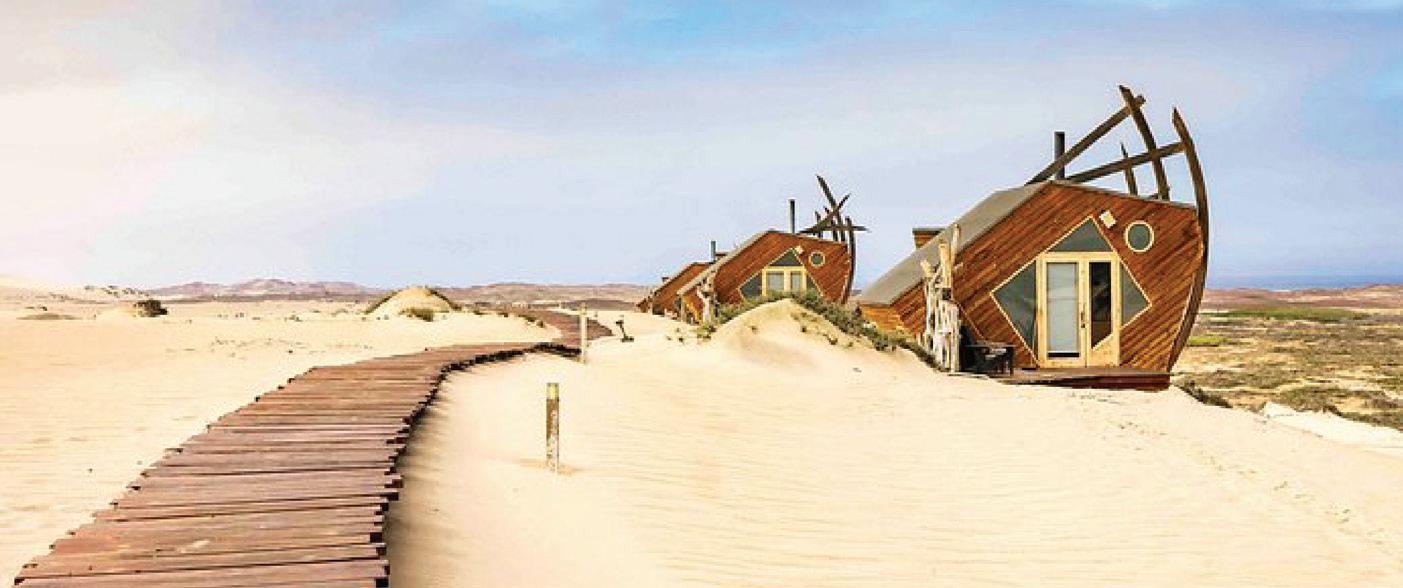
82
Wild Yet Wonderful
For travellers willing to venture into this untamed part of Namibia, the Skeleton Coast promises an experience like no other
12
TEAM MESSAGE
14
CONSERVATION: Sea Sanctuaries
Interesting facts about four of South Africa’s biggest and oldest coastal marine protected areas
91
SUBSCRIPTIONS





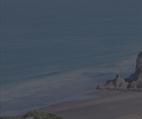







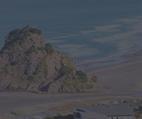




















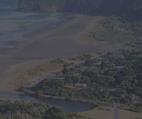






















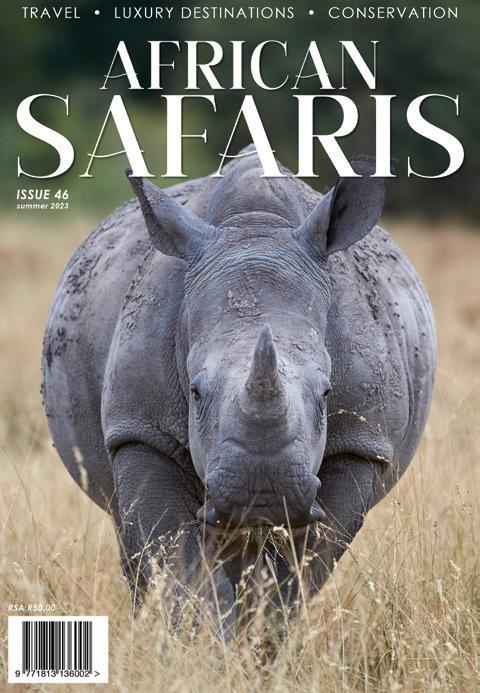











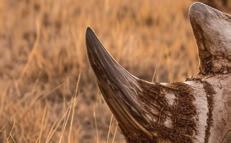

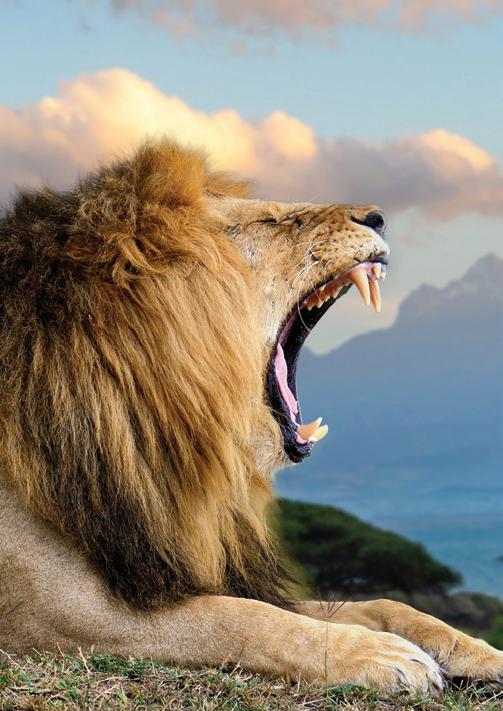




















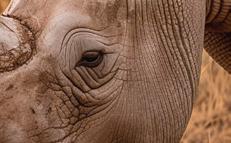

PUBLISHER
MANAGING EDITOR
Donovan Abrahams
Tania Griffin tania@avengmedia.co.za
DESIGN
EDITORIAL SOURCES
Erin Esau
TheConversation.com






Welcome to another edition of African Safaris magazine—the fi rst of 2025! We wish you a year of great travels and memorable experiences. And we kick things off with a journey from Coast to Coast...
Join us as we explore the waters around the southern tip of Africa, all the way up the east coast. We begin in Namibia, where the untamed Skeleton Coast beckons with not only the spectre of death in the many shipwrecks littering the shore but also life in abundance with its unique fauna and fl ora scattered about the mesmerising sand dunes.
Then it’s on to South Africa, where you can experience the bounty of the ocean: soak up the sun at the country’s numerous Blue Flag beaches; enjoy a yachting adventure along the Cape West Coast; putt around on the manicured greens on the Garden Route, with the sea as backdrop; marvel at the Hole-in-the-Wall and other wonders of nature on the Eastern Cape Wild Coast; and deep-dive into Sodwana Bay on the KwaZulu-Natal Elephant Coast to discover an underwater oasis.
Beyond, to the magnifi cent island off the coast of Tanzania—Zanzibar, also known as the Spice Island thanks to its rich history and cultivation of various spices. And lastly to the waters of Mombasa, Kenya for an unforgettable and adrenaline-fuelling deepsea fi shing jaunt.
Continuing the coastal theme, we put the spotlight on South Africa’s biggest and oldest marine protected areas—true sanctuaries of the sea—and reveal why cruises off er the ultimate in aff ordable luxury getaways.
And to give you even more inspiration for 2025, we detail how to become a ‘regenerative’ tourist: shifting toward a more sensitive and responsible form of travel.
Embrace the journey.
Gaby Paton-Thomas Tania Griffin
PHOTOGRAPHIC SOURCES
SALES DIRECTOR
PROJECT MANAGER
ADVERTISING SALES
ONLINE CO-ORDINATOR
IT & SOCIAL MEDIA ACCOUNTS
Adobe Stock Pexels
Donovan Abrahams Wendy Scullard
Kim Jeneke
Tharwuah Slemang
Tharwuah Slemang
Benita Abrahams Bianca Alfos
HR MANAGER
CLIENT LIAISON
Colin Samuels
Majdah Rogers
PRINTER
DISTRIBUTION
Novus Print africansafarisint.co.za www.issuu.com
DIRECTORS
Donovan Abrahams Colin Samuels
PUBLISHED BY
Aveng Media (Pty) Ltd


Address: Boland Bank Building, 5th Floor, 18 Lower Burg Street, Cape Town, 8000 Tel: 021 418 3090 | Fax: 021 418 3064
Email: majdah@avengmedia.co.za
Website: www.africansafarisint.co.za
DISCLAIMER:
© 2025 African Safaris magazine is published by Aveng Media (PTY) Ltd. The Publisher and Editor are not responsible for any unsolicited material.
All information correct at time of print.

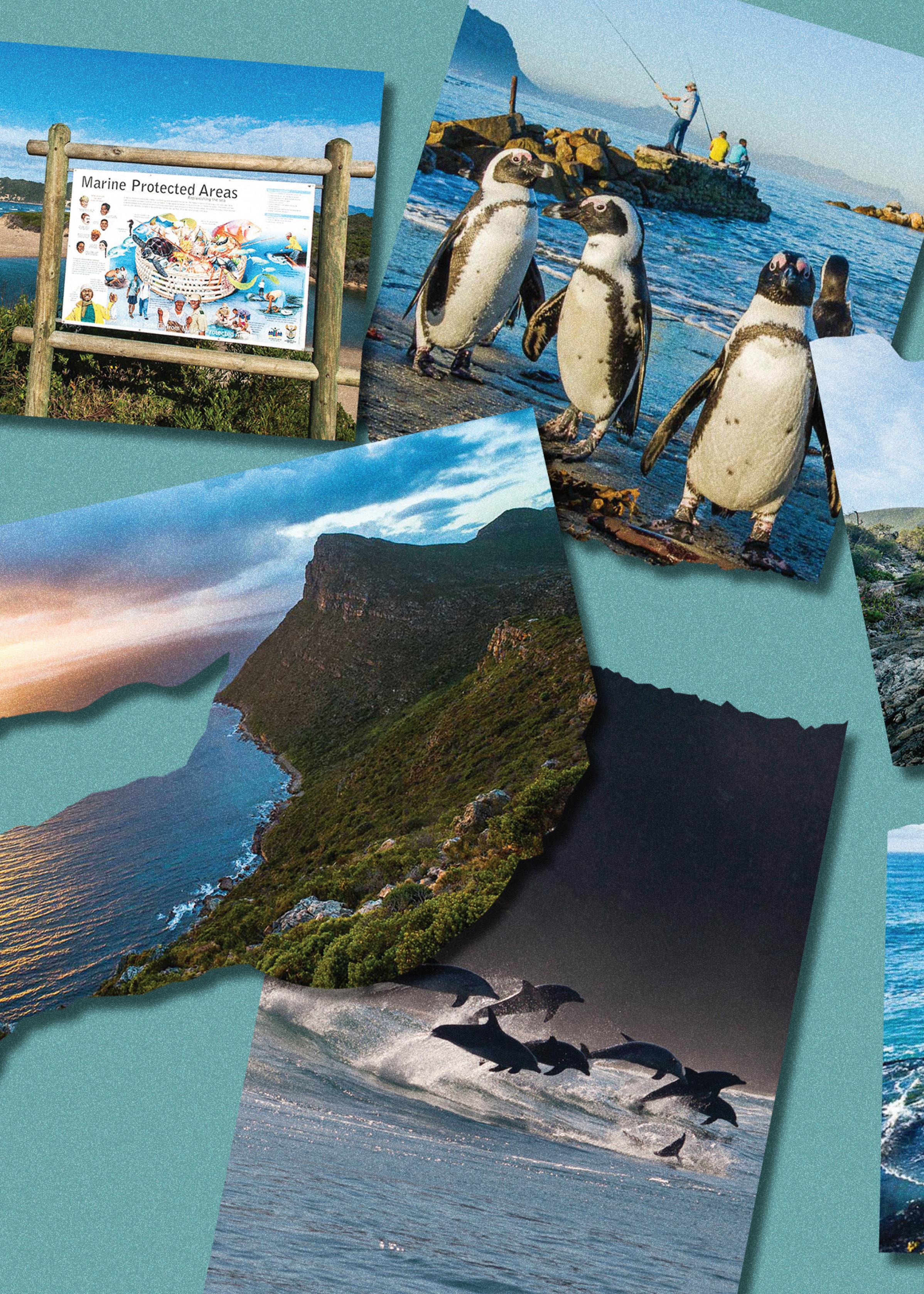
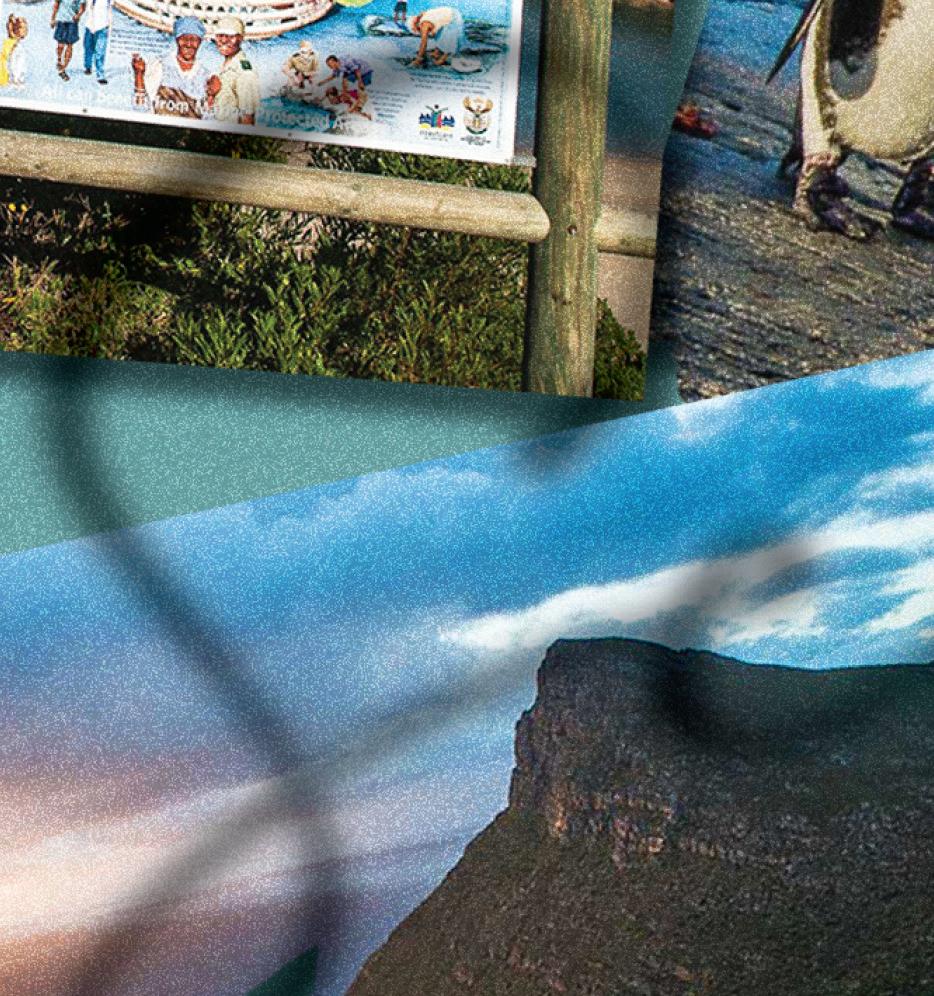
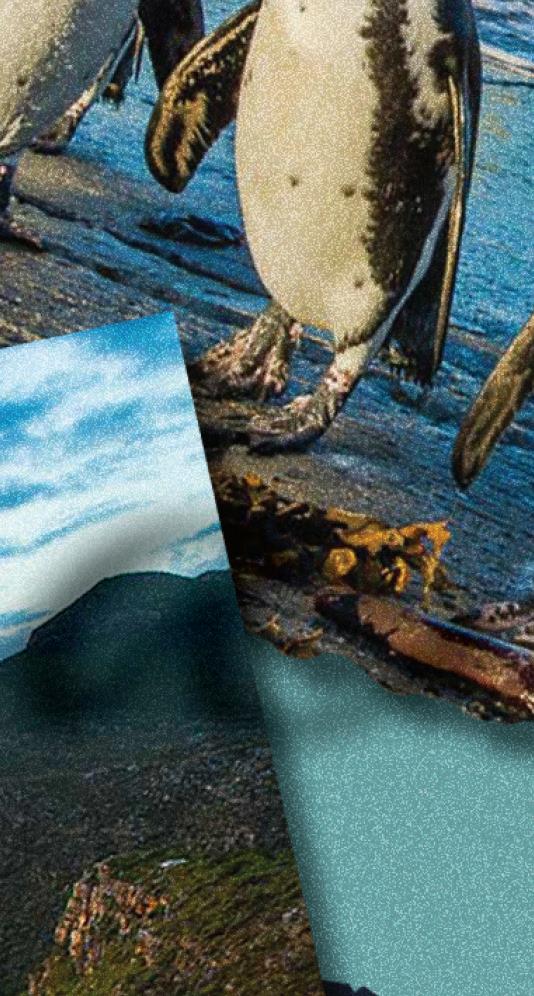





Interesting facts about four of South Africa’s biggest and oldest coastal marine protected areas
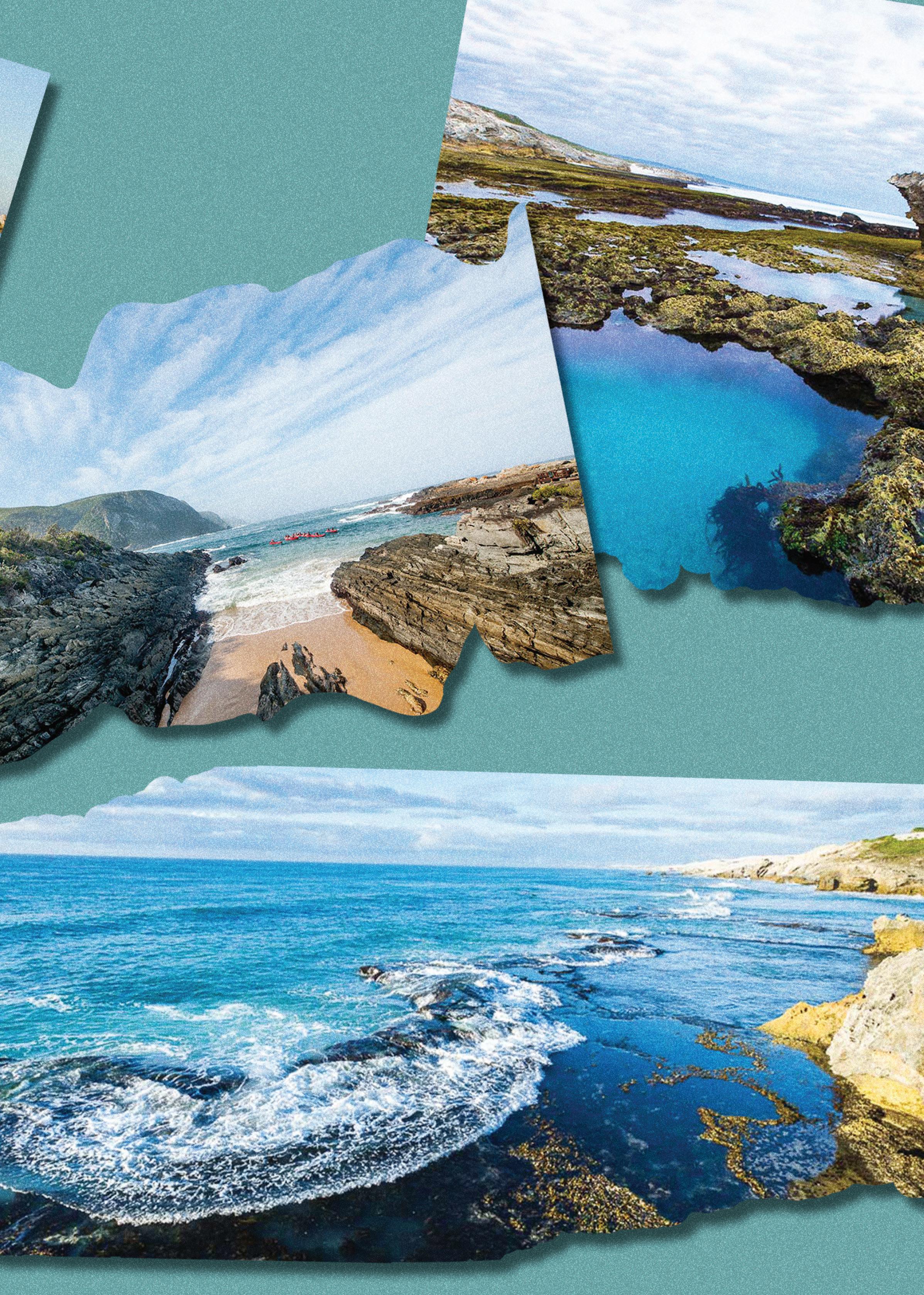
The deeper areas of iSimangaliso are home to dense fields of sea pens, delicate birds-nest glass sponges and other unusual animals adapted to living in this twilight zone.

Marine protected areas (MPAs) are the ‘nature reserves’ of the sea, conserving marine biodiversity to protect threatened species and ocean health.
On the occasion of MPA Day 2024 (see box), Mission Blue chief scientist Tessa Hempson commented: “MPAs are essential for the resilience and health of the ocean. They provide critical refuges where marine life can thrive, supporting biodiversity and ecosystem health. Investing in and expanding MPAs is essential for preserving the intricate balance of our marine environments and securing the long-term health of our planet.”
South Africa is home to some 41 MPAs that play a vital role in ocean conservation, although currently only 5% of the country’s ocean space is protected by these vital areas.
Here’s a look at four of South Africa’s biggest coastal MPAs:
ISIMANGALISO MPA
Translation: “Miracles and wonder”
Location: Maputaland, KwaZulu-Natal North Coast
This MPA, which forms part of the iSimangaliso Wetland Park, is home to the rediscovered coelacanth, a fish that has existed since the dinosaurs. This is also an important nesting ground for leatherback and loggerhead turtles.
The beautiful coral reefs off Sodwana are enjoyed by thousands of local and international scuba divers. The offshore waters are teaming with gamefish that attract many recreational ski-boat anglers every year.
Although pelagic game fishing is permitted in zoned areas, no bottom fishing is allowed, which protects reef fish.
The offshore expansion of this MPA that took place in 2019 now safeguards the feeding grounds of critically endangered leatherback turtles while protecting the entire continental shelf slope, including numerous submarine canyons where coelacanths live.
The deeper areas are home to dense fields of sea pens, delicate birds-nest glass sponges and other
unusual animals adapted to living in this twilight zone.
Benefits of the iSimangaliso MPA:
• Safeguards breeding and feeding areas of leatherback and loggerhead turtles.
• Protects some of the world’s southernmost coral reefs.
• Offers world-class scuba diving and game-fishing.
• Protects submarine canyons where coelacanths live.
• Protects reef fish spawning aggregations and spillover to adjacent exploited areas supports fisheries.
• Protects a wide diversity of shark and ray species.
Translation: “Waterfall wonderland”
Location: Pondoland Coast, Eastern Cape
This unique 90-kilometre stretch of the Wild Coast is home to many threatened and endemic reef fishes located within the 1 237km2 protected area, extending from the Mzamba River south of Port Edward to the Umzimvubu River at Port St Johns and about 10km offshore.
Some of the country’s healthiest estuaries are protected within this MPA, which is characterised by rocky shores backed by grasslands and forests that form part of the Pondoland Centre of Endemism.
Along Waterfall Bluff, which is part of the Egosa Fault north of Mbotyi, waterfalls drop nearly 100m directly into the ocean.
Transitioning between subtropical waters and warm temperate waters, the Pondoland MPA is home to a high percentage of endemic species found nowhere else in the world and is an important spawning ground for several migratory fish species such as yellowtail and geelbek.
This MPA forms part of the route of the annual Sardine Run during winter; while in summer, large shoals of adult giant kingfish visit the Mtentu Estuary for refuge when the sea is cold.
Benefits of the Pondoland MPA:
• Protects some of South Africa’s healthiest estuaries.
• Protects overexploited linefish and allows for their recovery.
• Enhances adjacent fished areas through spillover.
• Protects a wide diversity of invertebrates and seaweeds found nowhere else in the world.
• Offers tourists and divers access to the annual Sardine Run, known as “The Greatest Shoal on Earth”.
• Protects submarine canyons where coelacanths live.
• Protects reef fish spawning aggregations and spillover to adjacent exploited areas supports fisheries.
• Protects a wide diversity of shark and ray species.
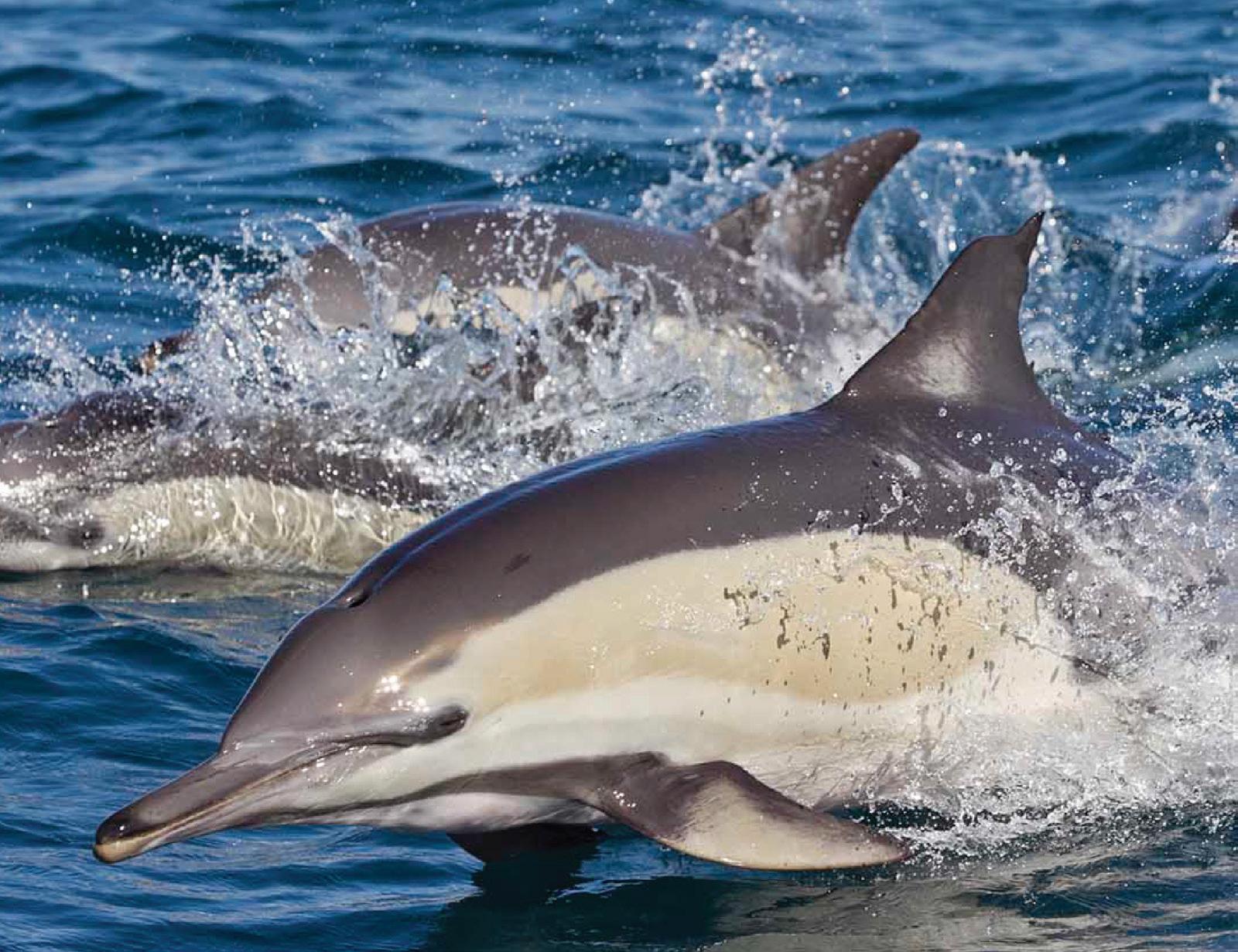

Translation: “Place of much water”
Nickname: The Crown Jewel of South African MPAs
Location: Garden Route, on the border between the Eastern and Western Cape
Established in 1964, this 294km2 MPA is an invaluable national asset extending 60km from Groot Rivier East to Groot Rivier West and 5.6km out to sea. This wild coastal stretch is characterised by dramatic cliffs and rugged rocks, with forests home to ancient yellowwood trees and fynbos grasslands, all protecting endemic species of the warm temperate Agulhas Ecoregion.
Benefits of the Tsitsikamma MPA:
• Protects unique marine biodiversity characteristic of this warm temperate ecoregion.
• Protects endemic fish and allows for spillover into adjacent areas, supporting local fishers.
• Provides a benchmark for scientific study into healthy, unexploited fish and invertebrate populations.
• Tsitsikamma is the marine equivalent of the Kruger National Park, attracting thousands of visitors—with the famous Otter Hiking Trail often being booked over a year in advance.
• Local businesses benefit from the tourists attracted to the Tsitsikamma MPA.
Translation: “The hope”
Nickname: Whale Trail
Location: Near Cape Agulhas, Western Cape
The beautiful beaches and fynbos of this 289km2 MPA make this a tourist haven, extending 48km from Witsand to Skipskop on the southern Cape coast and extending 5.6km out to sea. Considered one of the best places in the world for shore-based whale watching from May to June when southern right whales calve, up to 350 southern right whales have been recorded at one time. Migrating hammerhead sharks, mega-pods of dolphins and flocks of Cape gannets feasting on sardines can also be seen.
Intertidal rocky platforms and rocky subtidal reefs are home to incredible marine life.
Benefits of De Hoop MPA:
• Protects vulnerable surf-zone fish, shark and ray species.
• Supports fish populations in adjacent, exploited areas through spillover.
• Provides a safe haven for breeding whales.
• An important area for tourism and environmental education, which supports local businesses.
• The adjacent De Hoop Nature Reserve is home to the amazing plant diversity of the Cape fynbos, as well as bird and antelope species.
• Fish tagging has demonstrated the movement of galjoen (South Africa’s national fish) out of the MPA and how it benefits adjacent fisheries.
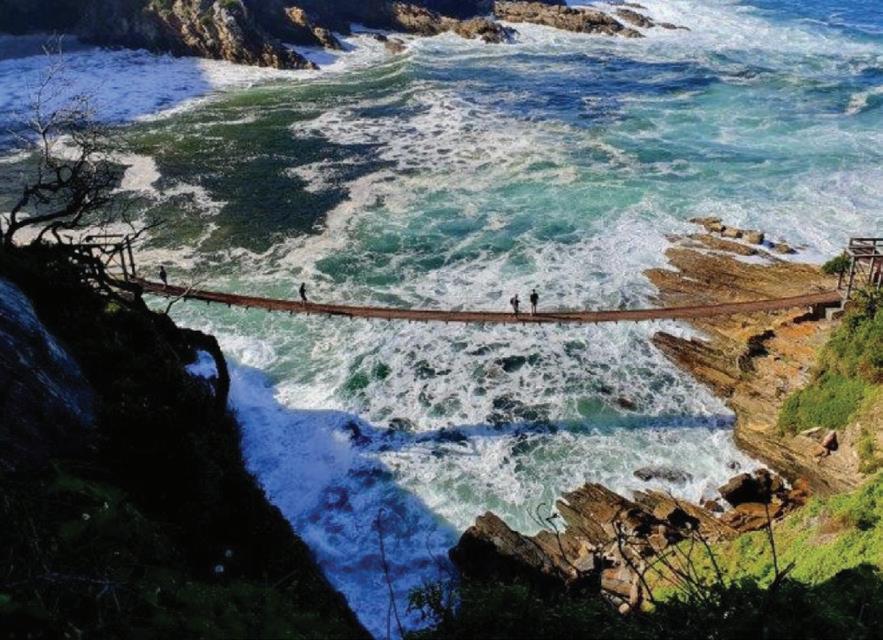
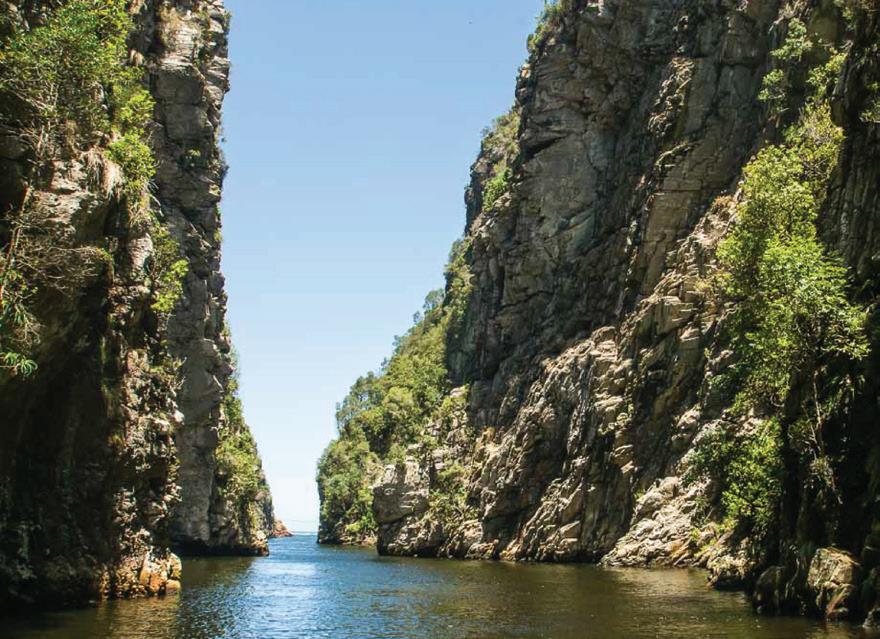
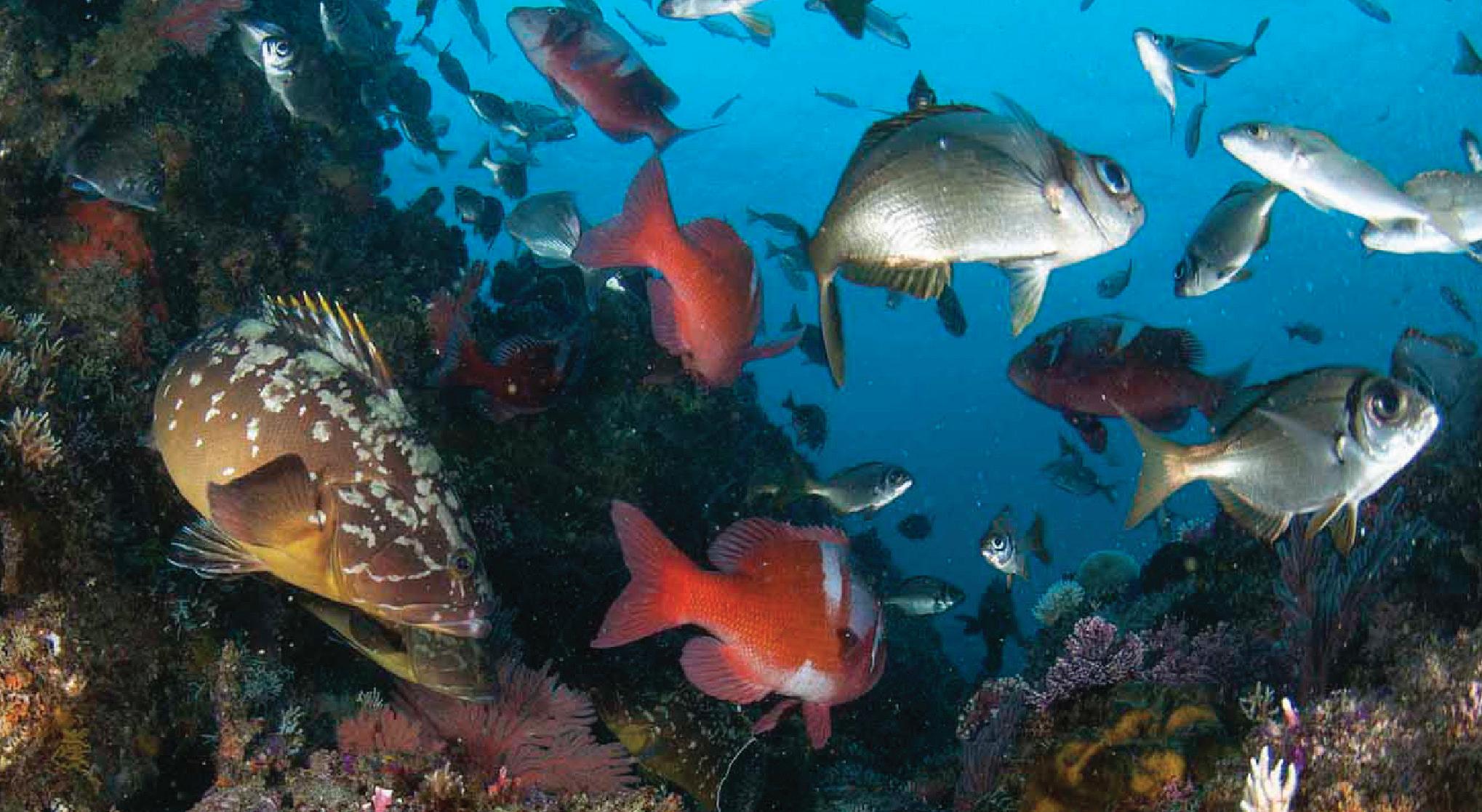
The beautiful beaches and fynbos of the 289km2 De Hoop MPA make this a tourist haven

The annual MPA Day invites people across the globe to recognise the importance of these ‘nature reserves of the sea’. It helps us collectively appreciate the value of MPAs and how they benefit both humans and the incredible marine biodiversity they are designed to protect. It’s a day to share stories and information about why and how we need to conserve our oceans.
The inaugural MPA Day was held on 1 August 2021 in South Africa. Since then, MPA Day has grown and has now become a truly international celebration. Find more information at MPAday.org



Here’s how to become a ‘regenerative’ tourist this year: enhancing the well-being of places and the people who live in them
By Veselina Stoyanova



At the start of a new year, many of us contemplate resolutions aimed at self-improvement and a better lifestyle. It’s also a time when many of us start thinking about holidays.
But have you considered combining the two? Could 2025 be the year when you resolve to be a better traveller?
For in 2024, many tourists were on the receiving end of a very loud and very clear message. In some of Europe’s most popular holiday destinations, including Barcelona and Mallorca, there were large protests against the negative effects of mass tourism.
Overcrowding, environmental damage, unaffordable housing and cultural erosion appear to have pushed communities to their limits. There are vocal demands to make tourism more sustainable.
So, perhaps it’s time for travellers to shift toward a more sensitive and responsible form of travel.
Regenerative tourism, for example, aims to enhance the well-being of places and the people who live in them. Unlike mass tourism, which often strains resources and compromises residents’ quality of life, regenerative tourism is about giving back—by supporting local economies, preserving cultures and nurturing the environment.
This means treating your holiday as more than a personal escape. Instead of just lying on a sun lounger, consider planting trees in a reforestation project or learning traditional crafts from local artisans and participating in cultural events. Depending on the location, there may be chances to join in community programmes or ‘voluntourism’ projects (www.volunteerworld.com) that help alleviate poverty or improve the lives of indigenous communities. These actions can empower locals and help create a more inclusive environment.
Wherever you go, you can seek out experiences that help restore and sustain the places you visit. For instance, you could support local communities in remote villages by staying in family-run guesthouses or B&Bs.
Or you could join farm-to-table dining experiences and visit organic farms to help promote local food production and food security.
There may be local events or workshops you can join, cooking classes you can take, or cultural festivals where you can interact with residents and appreciate their perspective.
All of these—and countless other examples—are opportunities for travellers to make a contribution to the places they visit, leaving a positive impact. They also offer the traveller the chance to make personal connections and unforgettable memories, providing moments to engage directly with locals people, to ask questions and learn about local culture and history and community activities.
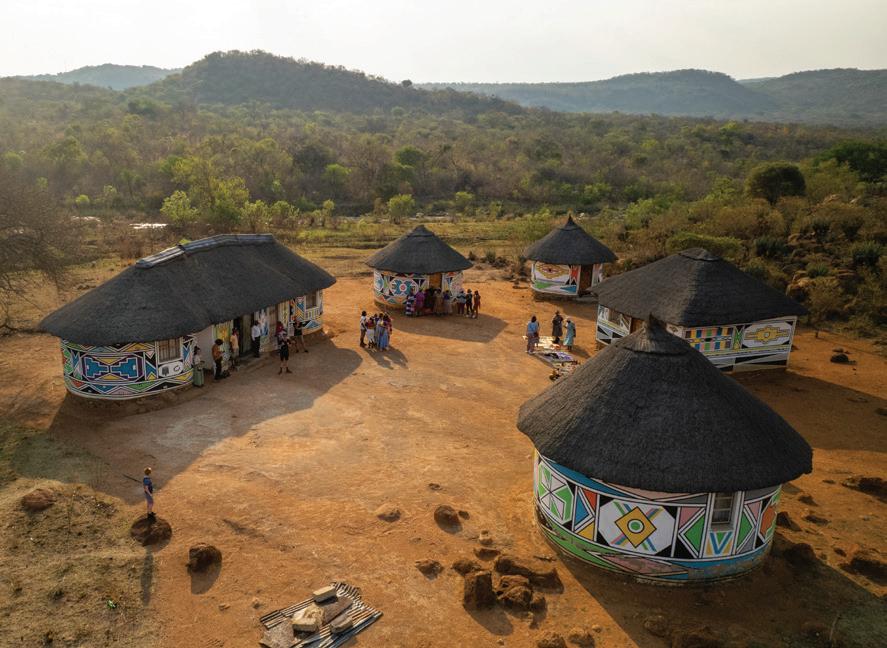
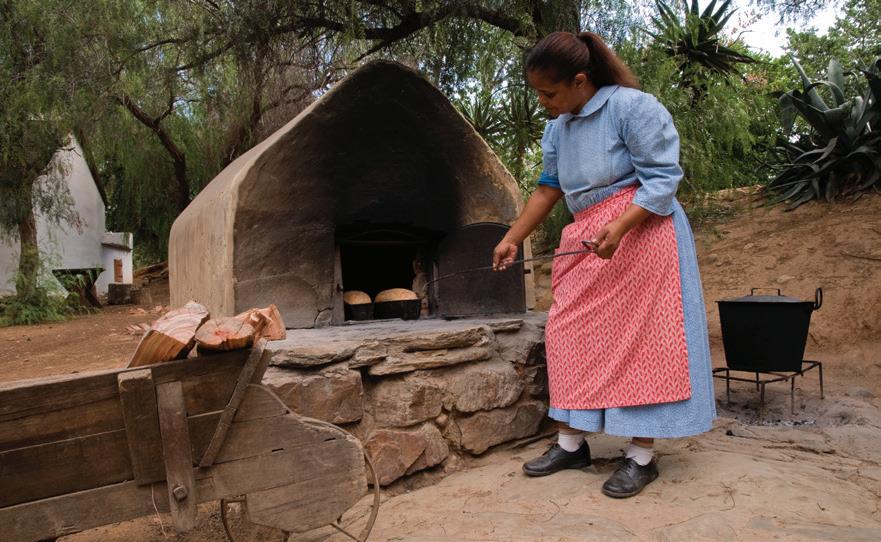



Perhaps it’s time for travellers to shift toward a more sensitive and responsible form of travel



Being a gracious guest promotes goodwill and strengthens the bond between travellers and locals.
These connections also make holidays not merely about personal enjoyment but about something deeper, with a positive effect on the places we visit.
So, as you browse the idyllic destinations to which you may decide to travel in 2025, it’s worth asking yourself whether you want to be a passive tourist, or a regenerative traveller who combines a sense of curiosity with a sense of responsibility.
Tourism in 2025 will be a big part of many countries’ economies, but not everyone is happy with the industry and its impact on the world.
Yet, consumers can change its direction.
The choices we make about our travel plans could mean the difference between a holiday that contributes to a legacy of positive change or one that perpetuates the social and environmental issues facing the planet and its people.
As we look ahead, the question is not just where to travel on holiday but how to travel.
Perhaps 2025 could be the year your adventures inspire transformation, creating a sustainable and inclusive future for tourism. It’s a resolution worth thinking about for years to come.




Instead
of just lying on a sun lounger, consider planting trees in a reforestation project or learning traditional crafts
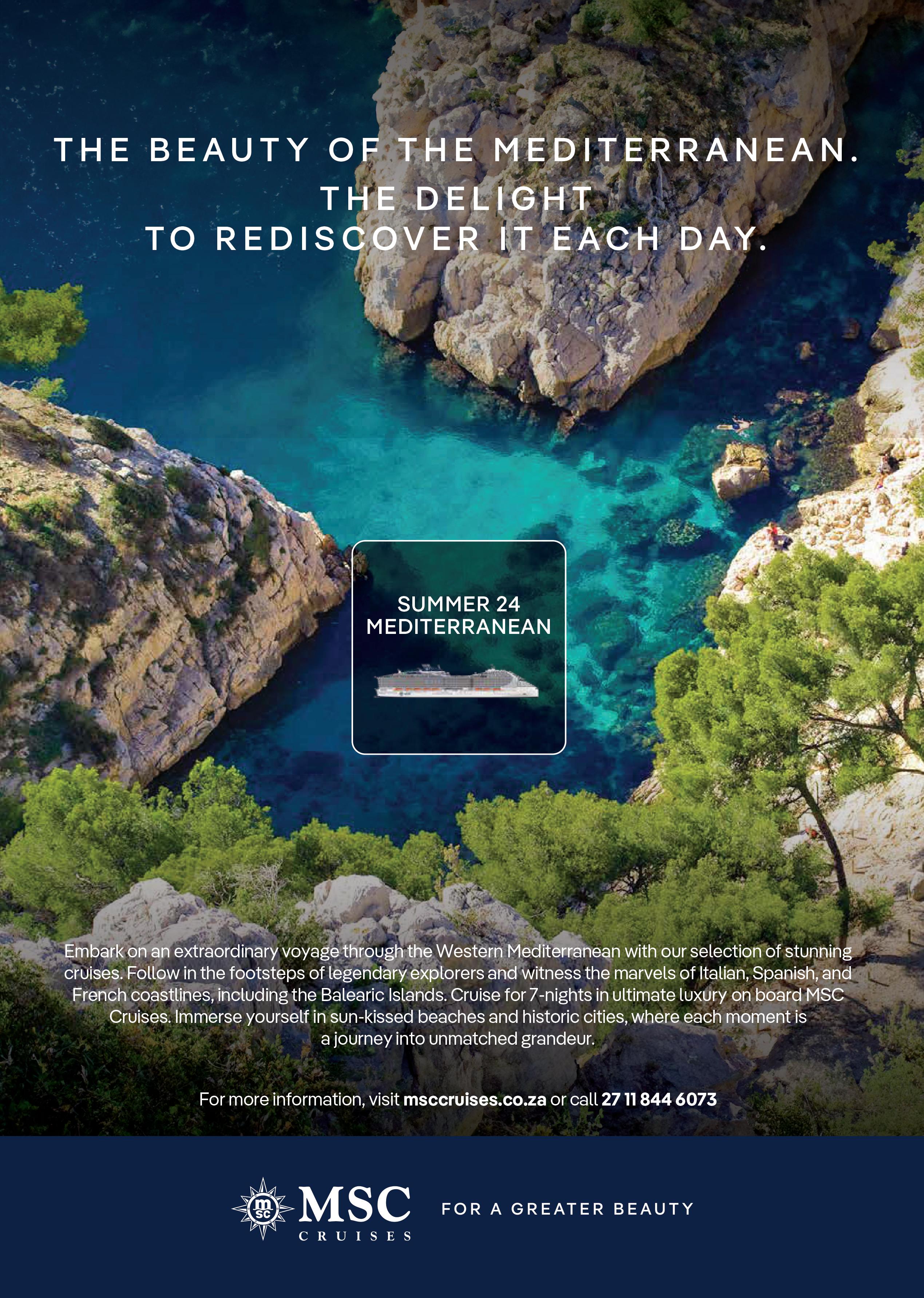
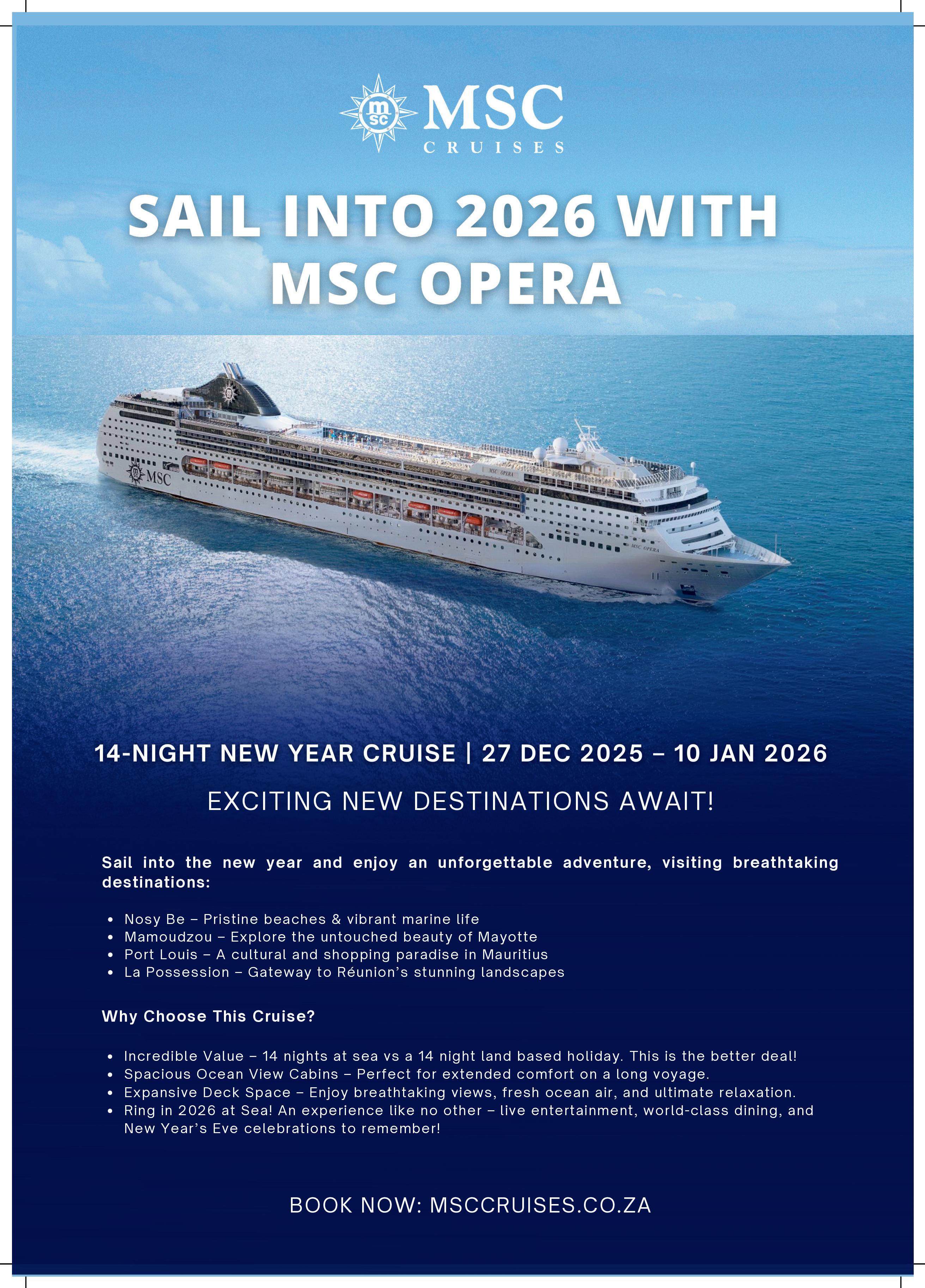




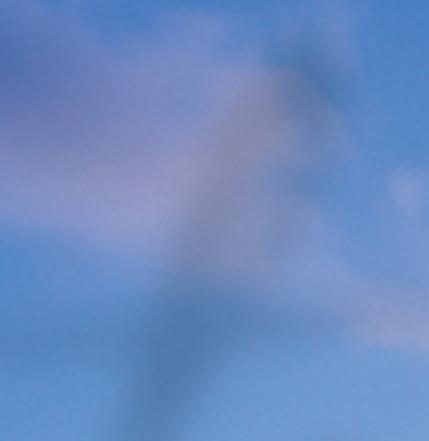
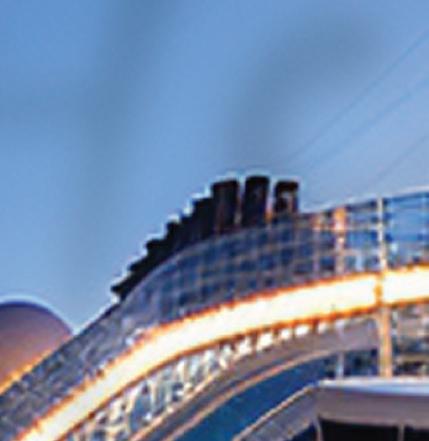
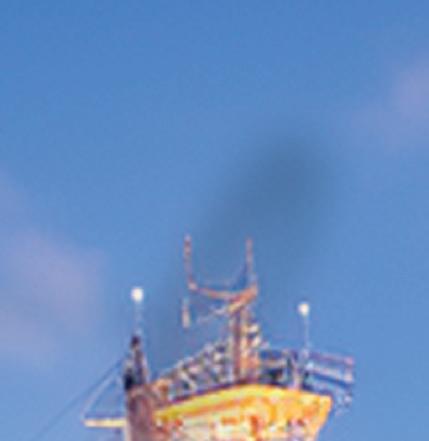
Why cruise holidays offer the ultimate in affordable luxury getaways
By Samantha Pillay
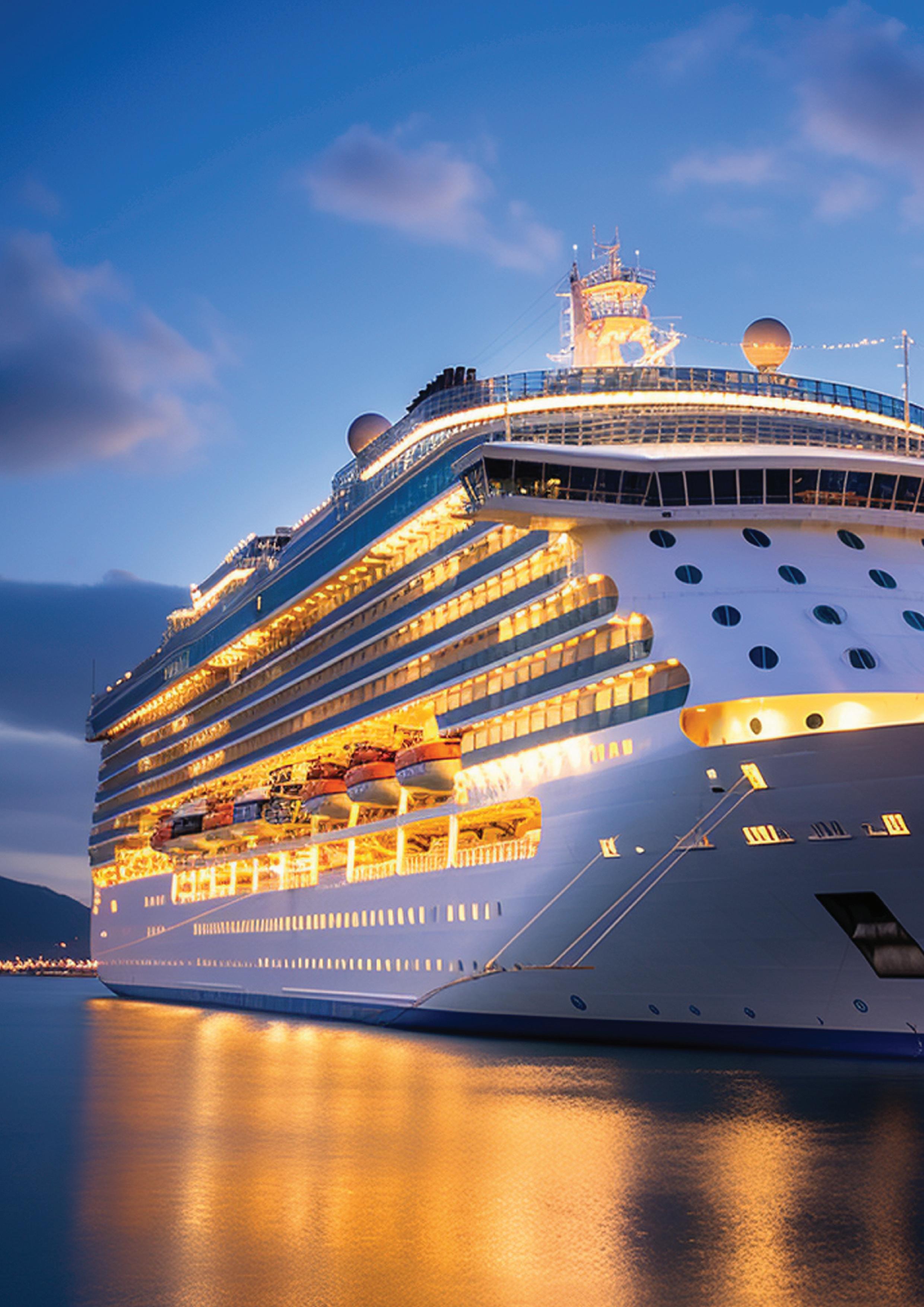
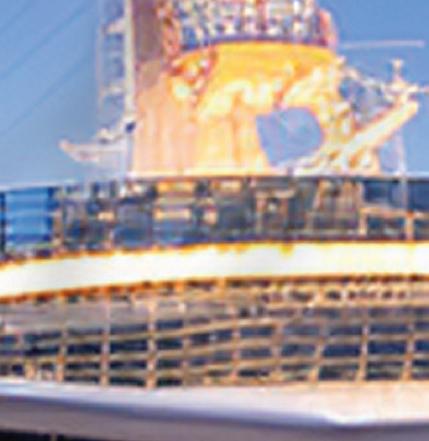

Onboard staff cater to your every need, ensuring you bask in the lap of pure indulgence, totally carefree.














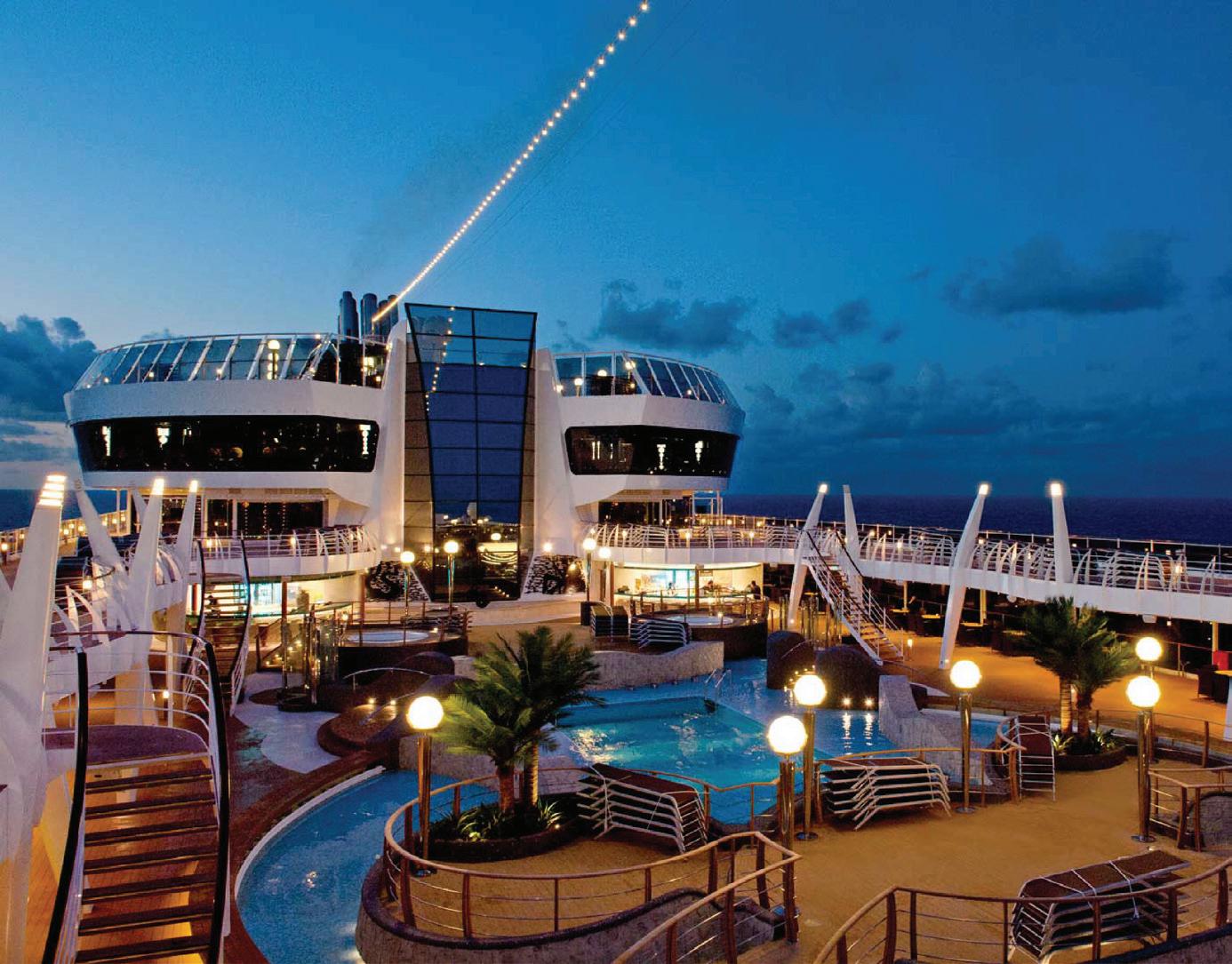

Samantha Pillay is the director of ekko (www.ekko.co.za), a lifestyle brand tailored for millennials.
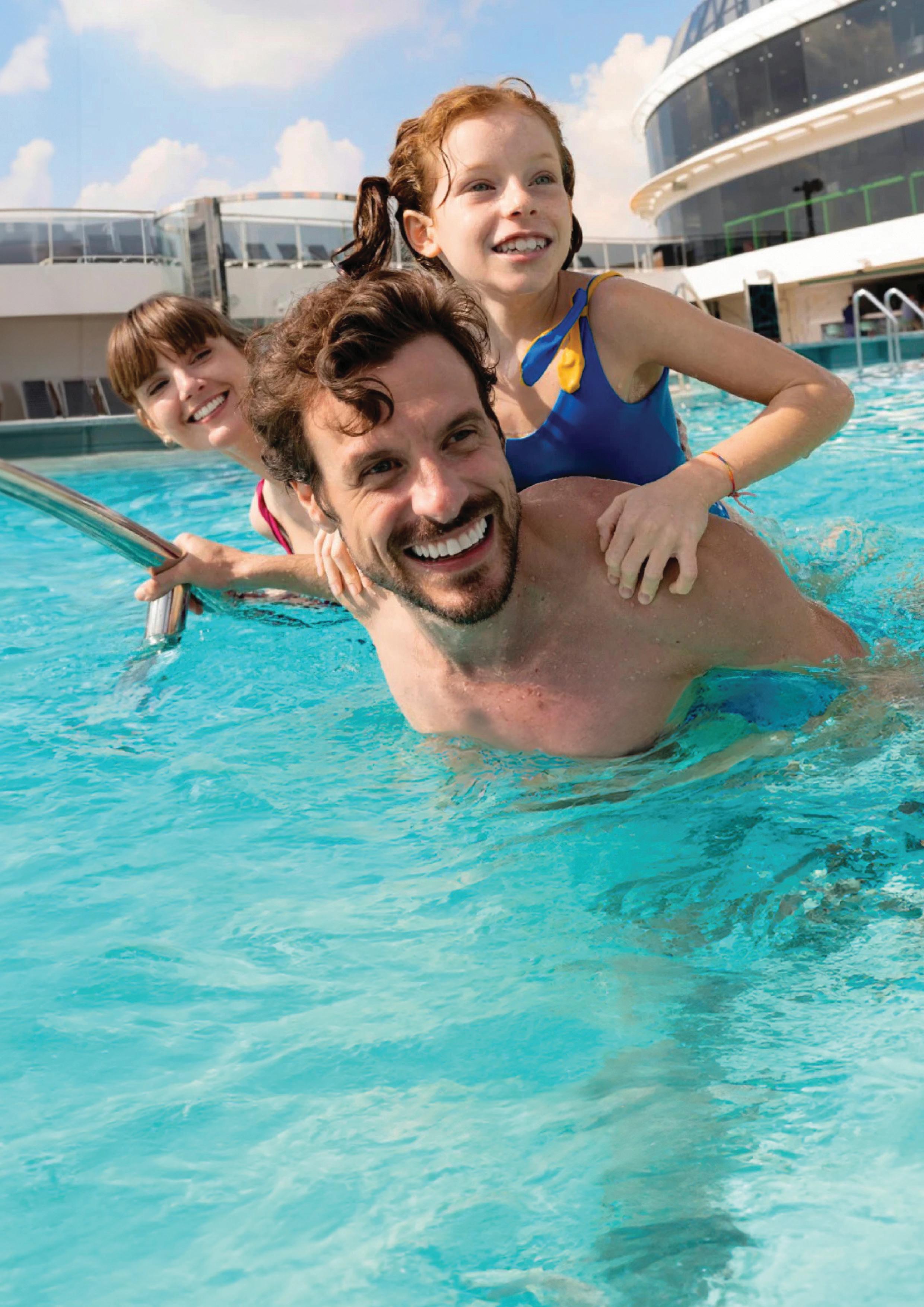

Imagine a world where the boundaries of opulence expand far beyond what you thought possible. Picture yourself in a floating hotel, on a majestic vessel that takes you to exotic destinations, offering unparalleled indulgence and convenience...


For many, a cruise has long occupied a coveted spot on their bucket list, but is often seen as an experience reserved for a privileged few. However, those days are giving way to a new era where luxury travel is increasingly within the grasp of people from all walks of life.

In the world of travel, accessibility is the true mark of progress.
Cruise liners have created budgetfriendly packages that become even more affordable when you have a share portfolio with a lifestyle brand like ekko, thanks to fantastic discounts that also include flights. These discounts not only amplify affordability but also pave the way for a broader audience to take trips they previously never thought possible.
dream; it’s become a journey awaiting discovery. Here are six reasons cruise vacations are the ultimate in affordable luxury getaways:

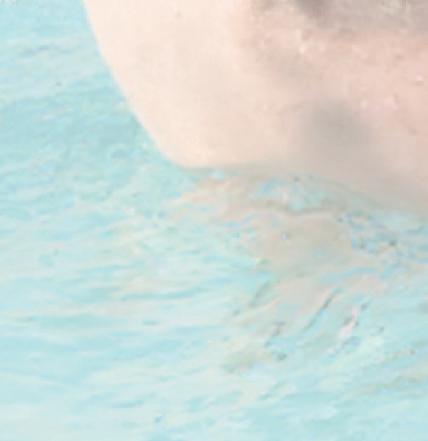
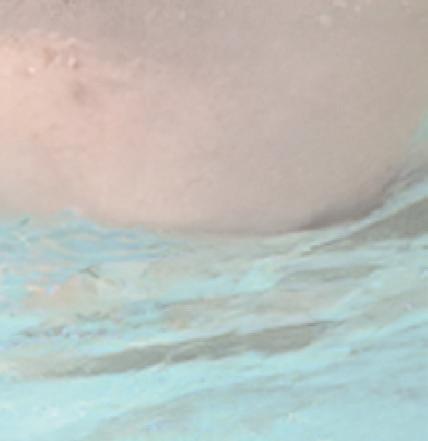
The hallmark of leisure is the absence of chores, which are often still required even when you’re on holiday. Bid farewell to mundane tasks like cooking and cleaning! Onboard staff cater to your every need, ensuring you bask in the lap of pure indulgence, totally carefree.




A cruise is no longer just a distant
Cruise ships are like floating paradises filled with a plethora of activities. No matter if you seek relaxation or adventure, there’s something for everyone—all the time. Join in the fun at the pool hosted by the resident entertainment crew, enjoy a lively game of bingo, or test your knowledge in a quiz. Dance the night away at a nightclub, dress up for a themed evening, have a pint in the

pub or chill in a lounge to the mellow sounds of live piano music.

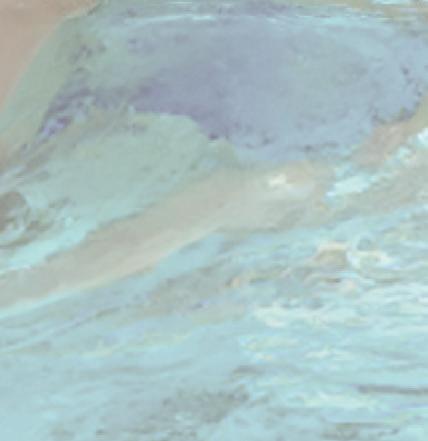
Some cruise ships even have water parks and golf-related activities like putting greens or driving cages, but regardless of size or cruise line, they all have oceans of entertainment in common.
And you set your own pace: whether it’s joining in the fun of lively activities or finding a quiet nook to unwind with a book and a cappuccino or a cocktail.



An added bonus for moms and dads is the childcare facilities and entertainment tailored to various age groups including babies, toddlers, tweens and teens, ensuring parents can enjoy some well-deserved downtime to unwind.


Then, of course, there’s duty-free shopping for days with various shops selling name-brand goods including clothes, cosmetics, watches, handbags, perfume and alcohol. And when you’ve shopped ‘till you dropped, indulge in a rejuvenating spa treatment, treat yourself to a

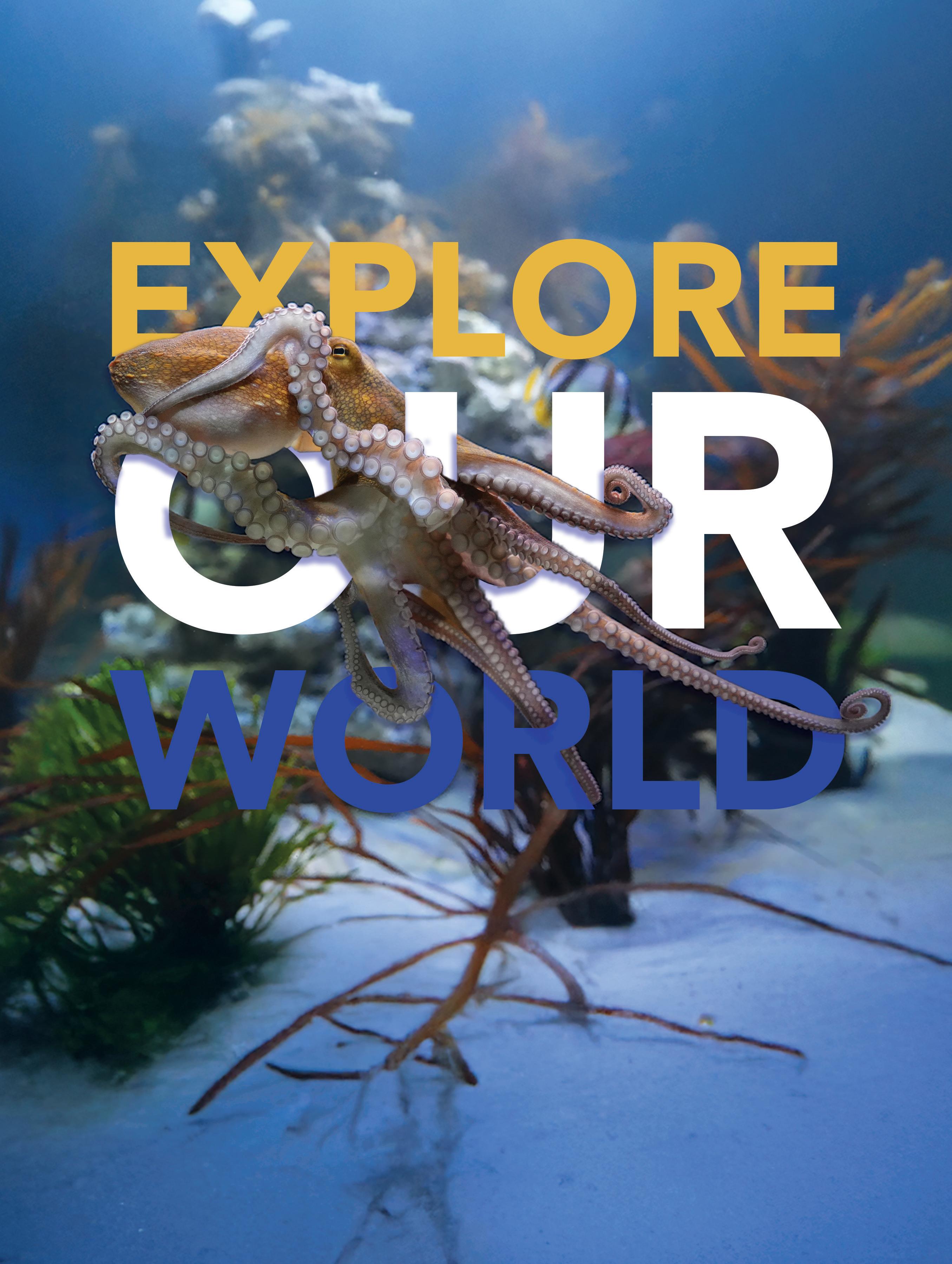

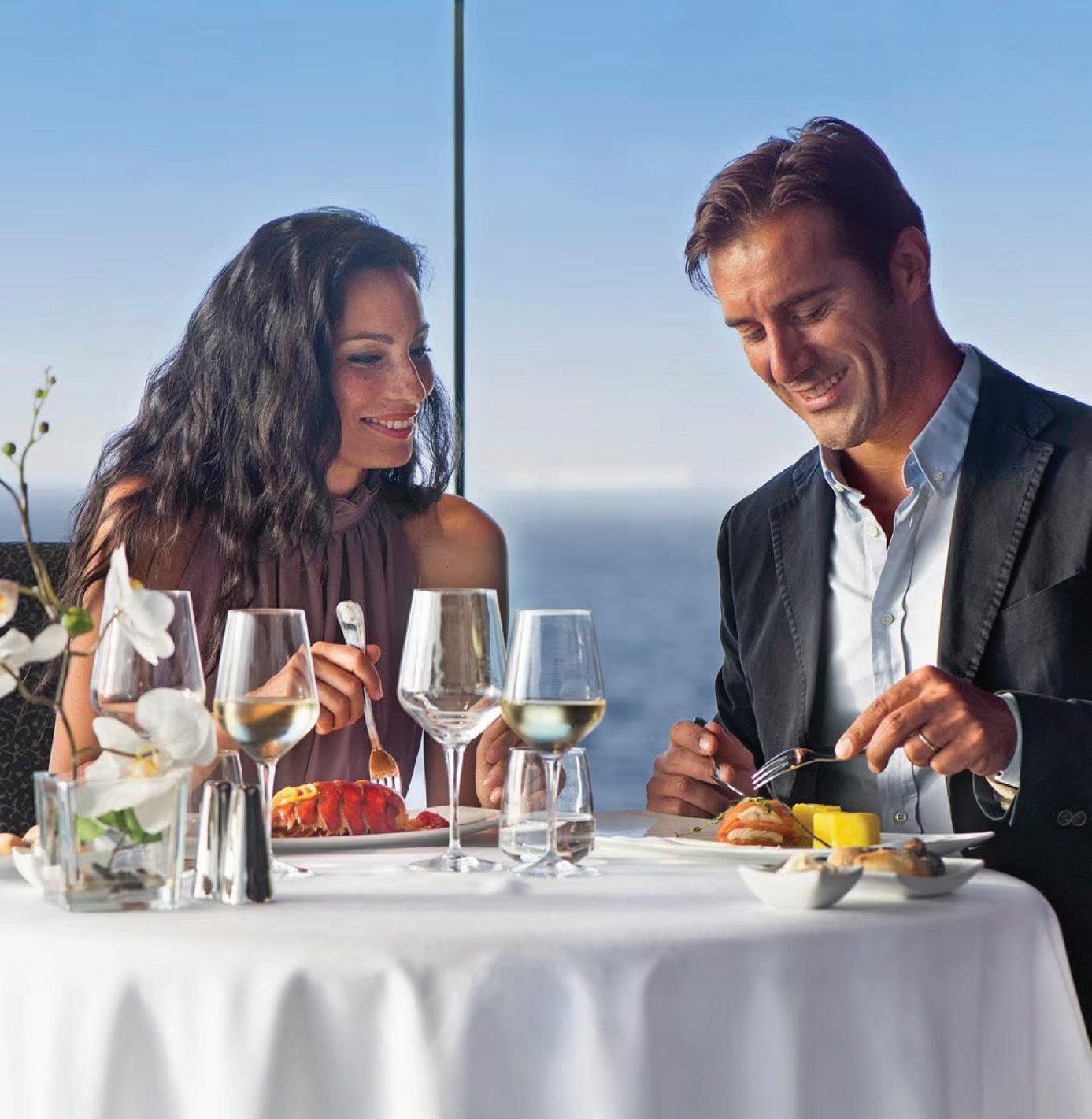
new look at the onboard hairdresser, or try your luck at the casino. These magnificent liners have it all—and more.
Dining on a cruise is a culinary adventure, featuring three-, four- and even five-course meals. Whether you prefer the elegance of a formal dining room where your meals are served to you, or the relaxed atmosphere of a casual venue serving breakfast and lunch buffets, there’s something to suit every taste.
Fast food options are also available throughout the day, and for those late-night cravings after lighting up the dance floor, enjoy snacks at quickserve spots available around the clock. Yes, you read that right—24/7 snacks are a reality! And, let’s be honest, there’s nothing quite like the pleasure of being able to indulge in great food any time of the day or night without having to make it yourself.
Additionally, many of the bigger cruise ships boast speciality restaurants offering a variety of cuisines. These unique dining experiences,
albeit at an extra cost, take your culinary journey to new heights with next-level gourmet dishes, adding even more indulgence to your adventure.
Cruise ships are equipped with excellent theatre facilities, so passengers can enjoy outstanding entertainment. Enjoy Broadwaycalibre shows and comedy acts each evening as well as live music at various venues as part of your all-inclusive package. The array of top entertainment is a signature feature that adds to the luxury of the experience.
5.
Then there’s the excitement of visiting new and exciting destinations. Regardless of it being a local or international cruise, the thrill of exploring somewhere different—be it a tropical island or a bustling port city—and taking in the sights is an integral part of the cruise experience. Imagine wandering around vibrant markets, visiting scenic tourist sites or
simply lazing on pristine beaches.
The traditional path to luxury travel can often be complicated. Cruise vacations, however, provide streamlined booking and itinerary planning. Choose your dream destination, cruise line and departure date, and let the experts handle the rest.
Oh, and just another reminder, there are no onerous chores to worry about. It’s worth mentioning again because that’s what makes a cruise the ultimate in relaxation!
So, as you ponder your next escape, remember that stepping aboard a cruise ship is unlike any other experience. Cruises are an exquisite fusion of opulence, convenience and affordability and promise unforgettable experiences for every traveller.
If your dreams involve exploring faraway destinations, being pampered in beautiful surroundings or simply breaking free from the mundane, a cruise can bring all those dreams to life in one unforgettable experience.
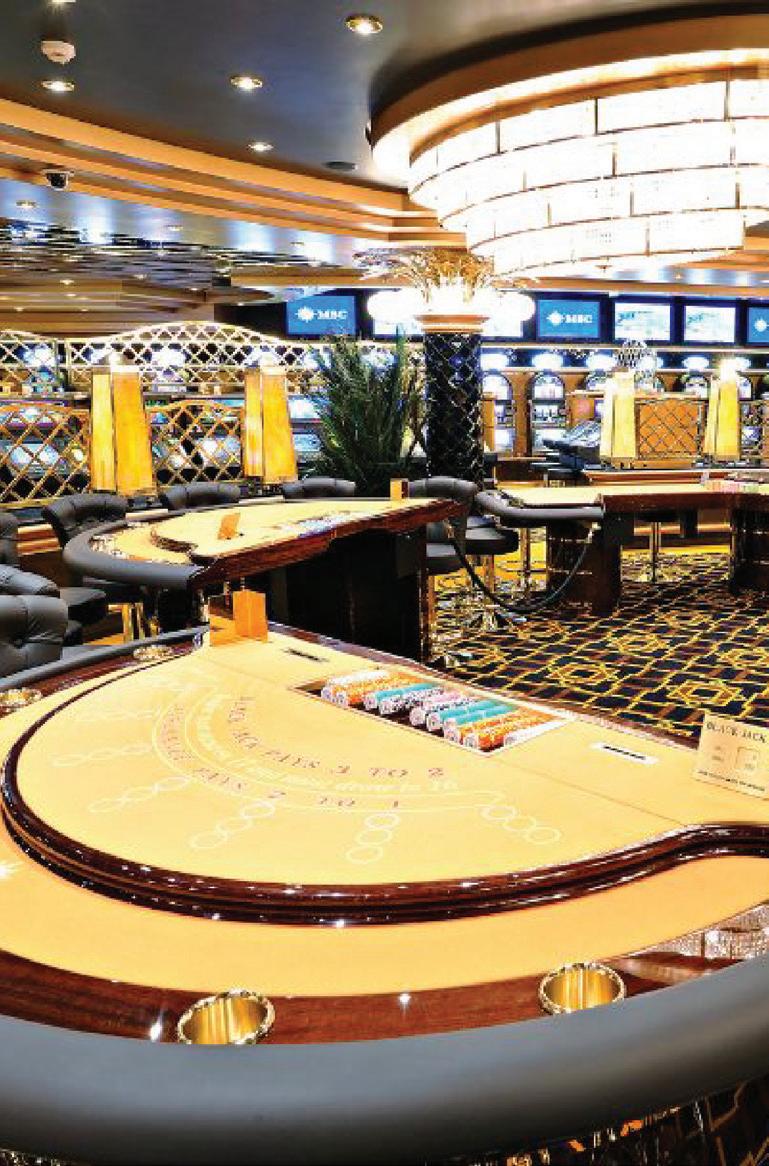
Samantha Pillay is the director of ekko (www.ekko.co.za), a lifestyle brand tailored for millennials.
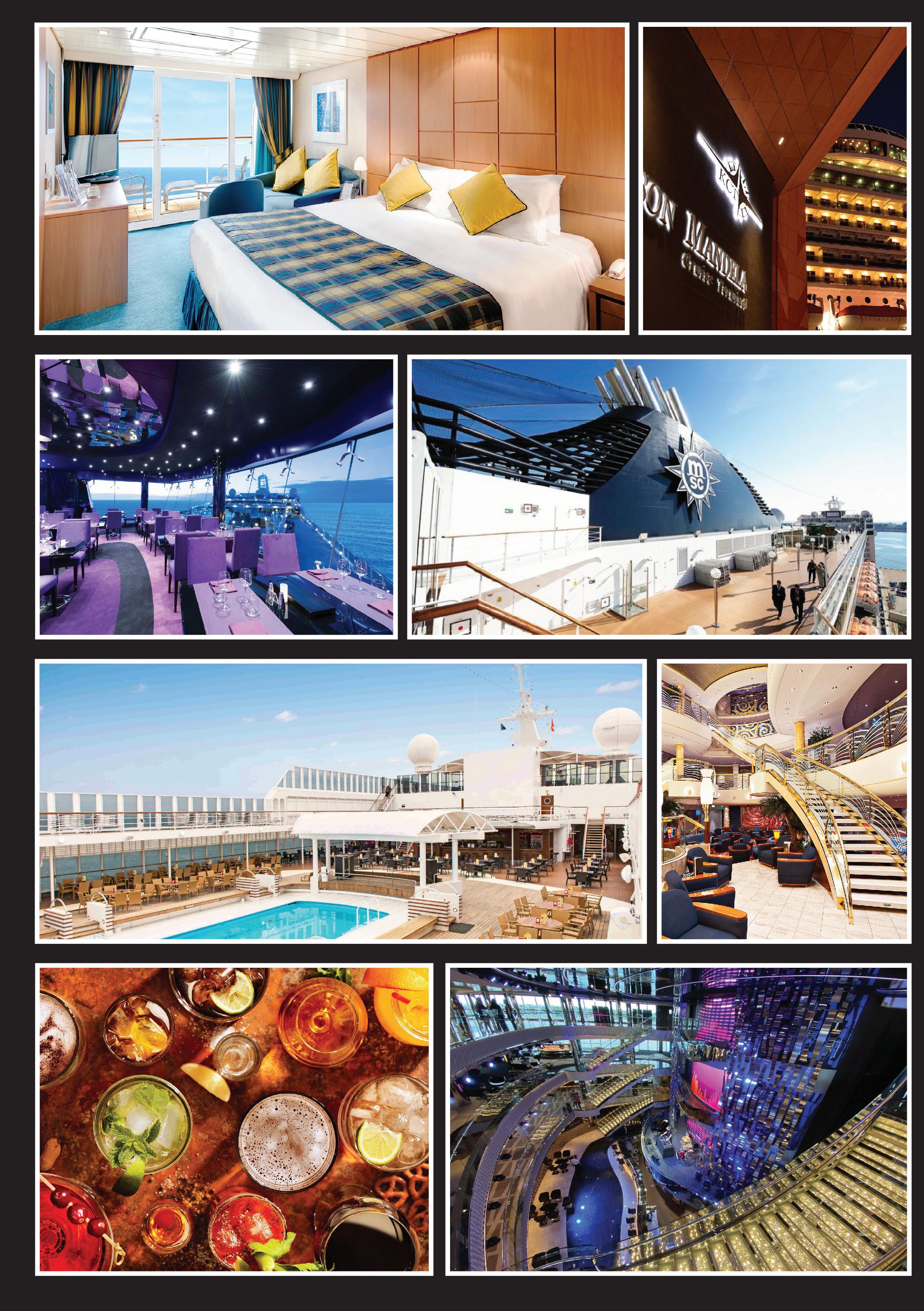












South Africa’s Blue Flag beaches are the benchmark of sustainable tourism, inspiring both locals and visitors to become responsible global citizens
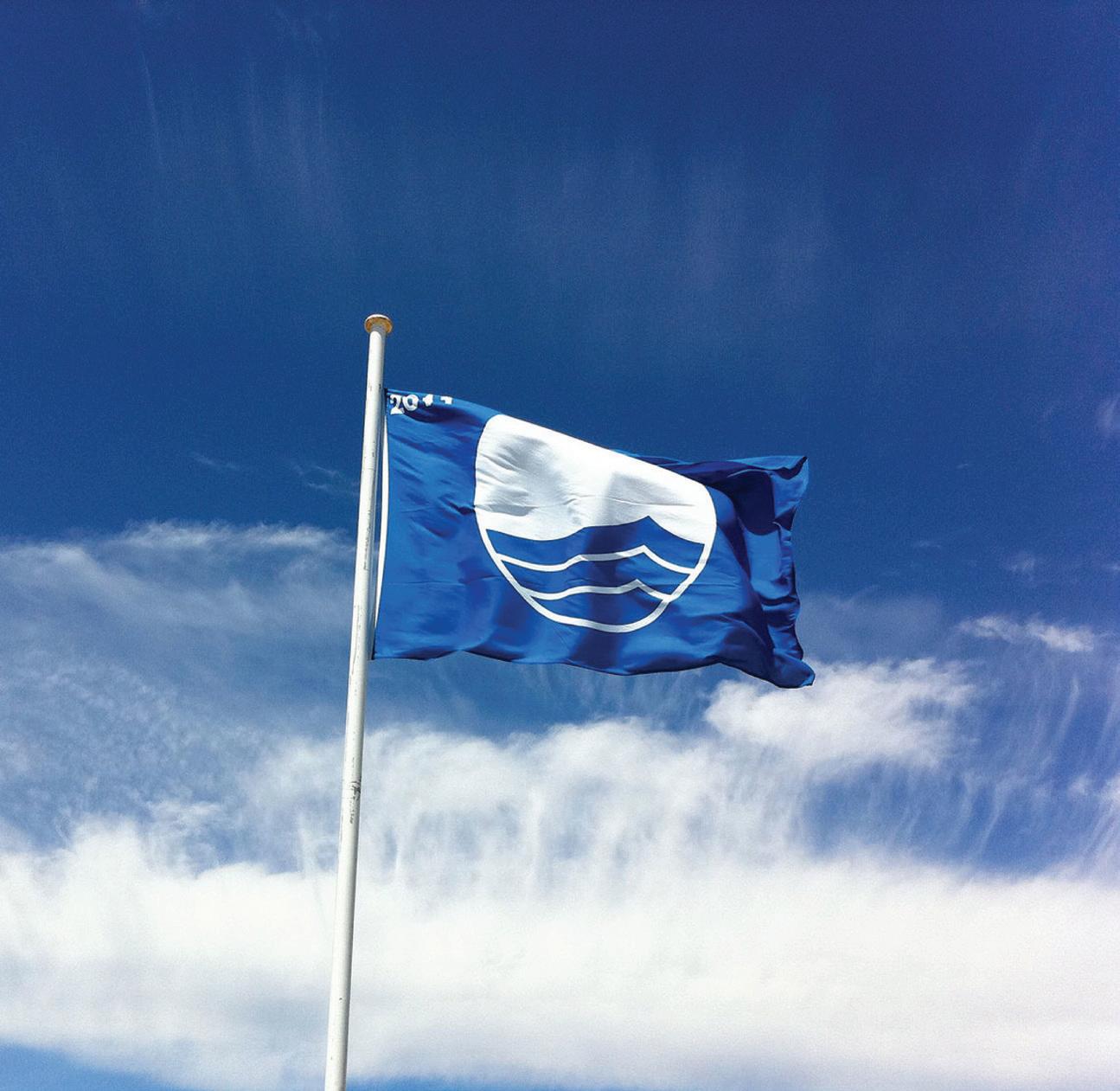
Qualifying involves a series of stringent environmental, educational, safety and accessibility criteria that must be met and maintained
When summer’s in full swing, there’s no better place to be than at the beach. And with South Africa’s world-class Blue Flag beaches, you’re guaranteed a fun, safe and clean environment for your and your fellow sun-seekers. It’s truly a premier coastal destination.
For the 2024/5 season, the country has 48 beaches, four marinas and seven tourism boats recognised for their efforts in meeting the minimum requirements for Blue Flag status. There are also 18 pilot beaches, making good progress in striving for Blue Flag status.
In addition, seven sites were awarded Green Coast status: community-driven coastal conservation areas of high biodiversity and ecotourism value which appeal to people seeking adventure and nature-based experiences.
The iconic Blue Flag is one of the world’s most recognised voluntary awards for beaches, marinas and sustainable tourism boats. The Blue Flag designation is a benchmark for sustainable tourism, where qualifying involves a series of stringent environmental, educational, safety and accessibility criteria that must be met and maintained. By meeting these rigorous standards, Blue Flag beaches, green coastlines and marinas inspire visitors to become responsible global citizens.
Primarily, Blue Flag is an educational programme designed to encourage participating municipalities to meet high environmental and international sustainability standards.


An interesting piece of history: The Blue Flag was originally a symbol of an environmental awareness initiative in which French schoolchildren were invited to write a message and put it in a plastic bottle along with their name and the name of their nearest beach. These bottles were then collected by the French military and flown out to sea where they were dropped.
The idea was that the messages would drift back to shore where they would land up at different points along the coast to where they originated, thereby highlighting the problem of dumping litter into the world’s oceans and the impact this has not just locally but for communities miles away, too.
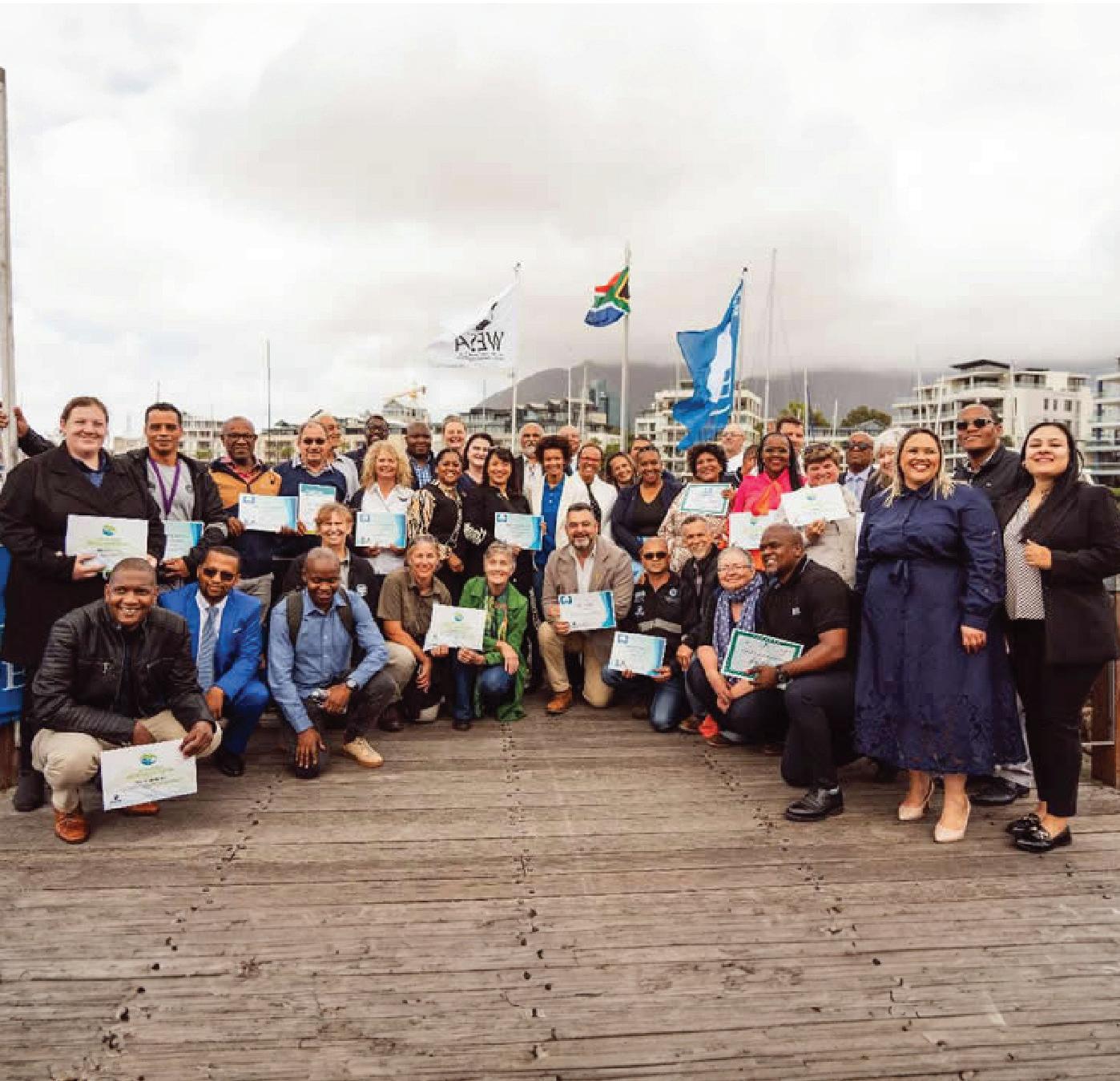
Unfortunately for the schoolchildren, very few of the bottles were ever seen again... but in a roundabout way, this initiative led to the formulation of the Blue Flag!
The Blue Flag criteria are developed in partnership with experts to ensure they are sound. Additionally, Blue Flag reviews its criteria and develops new ones to ensure the Blue Flag stays a symbol of excellence, and to encourage site owners always to do better.
The global programme has been locally managed by the Wildlife and Environment Society of South Africa (WESSA) since 2001 in partnership with the Foundation for Environmental Education and

participating coastal municipalities. WESSA says it takes great dedication and effort to manage a beach or marina to meet the rigorous standards set out for this prestigious award. Achieving the Blue Flag ecolabel is not just a status symbol but an indication of collective effort, commitment and compliance by local authorities, communities and volunteers.
By providing ongoing education programmes and training, WESSA is able to provide citizens with key information about beach quality management at Blue Flag sites. It is also a way to recognise the hard work done by municipalities in providing safe natural spaces and preserving our natural resources for future generations.
WESSA aims to have 100 Blue Flag sites by 2030.
Primarily, Blue Flag is an educational programme designed to encourage participating municipalities to meet high environmental and international sustainability standards.
Following a national audit of beaches submitted for assessment by each local municipality, WESSA uses 33 stringent criteria to determine if each beach meets the level of service excellence required for Blue Flag recognition. Each beach is measured in four categories: Environmental Education and Awareness; Water Quality; Environmental Management; and Safety Services.
The individual criteria allow for an in-depth analysis of a variety of areas of competence, including:
• Universal access (for the disabled, elderly and mothers with young children).
• Control of domestic animals (such as dogs on beaches).
• Availability of interpretive signage.
• Effective waste management.
For more information, visit www.wessa.org.za.

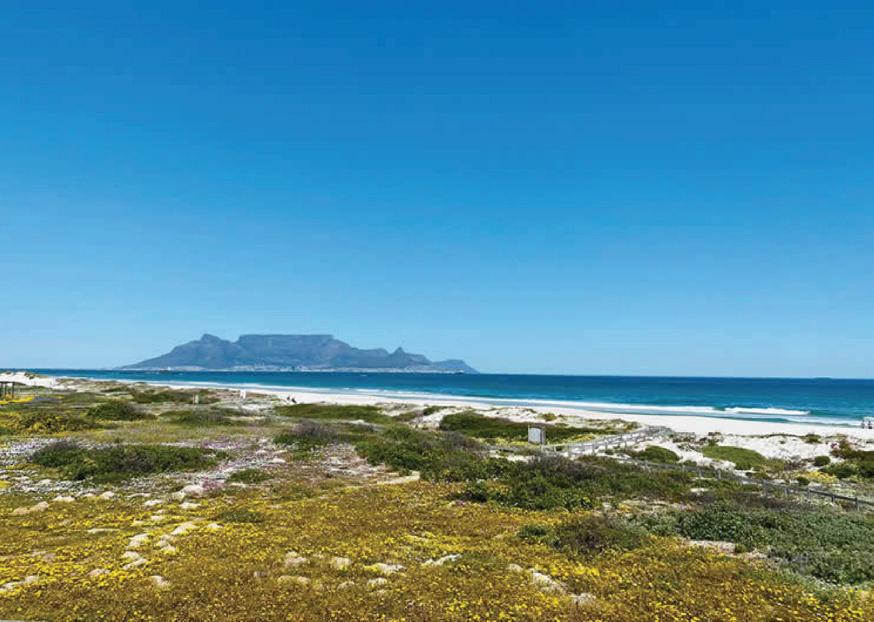

Here’s a list of all the beaches around South Africa that have full Blue Flag status for the 2024/5 season;
EASTERN CAPE
Dolphin, Jeffreys Bay Cape St Francis Kings, Humewood
Humewood
Hobie, Summerstrand Kariega, Kenton-on-Sea
Kelly’s, Port Alfred Middle Kenton-on-Sea
KWAZULU-NATAL
Marina, outside Margate Trafalgar Southport Umzumbe, Port Shepstone Ramsgate Hibberdene
Pennington (new)
Blythedale, outside Tinley Manor
Thompson Bay, outside Ballito
WESTERN CAPE
Silwerstroomstrand, outside Melkbosstrand
Clifton 4th
Camps Bay
Llandudno
Muizenberg
Bikini, Gordon’s Bay
Melkbosstrand
Fish Hoek
Kleinmond
Grotto, Hermanus
Struisbaai
Witsand
Preekstoel, Stilbaai
Lappiesbaai, Stilbaai Jongensfontein
Gouritsmond, outside Mossel Bay
Stilbaai Wes
De Bakke, Mossel Bay
Hartenbos, outside Mossel Bay
Klein Brak, outside Mossel Bay
Santos, Mossel Bay
Glentana
Herold’s Bay
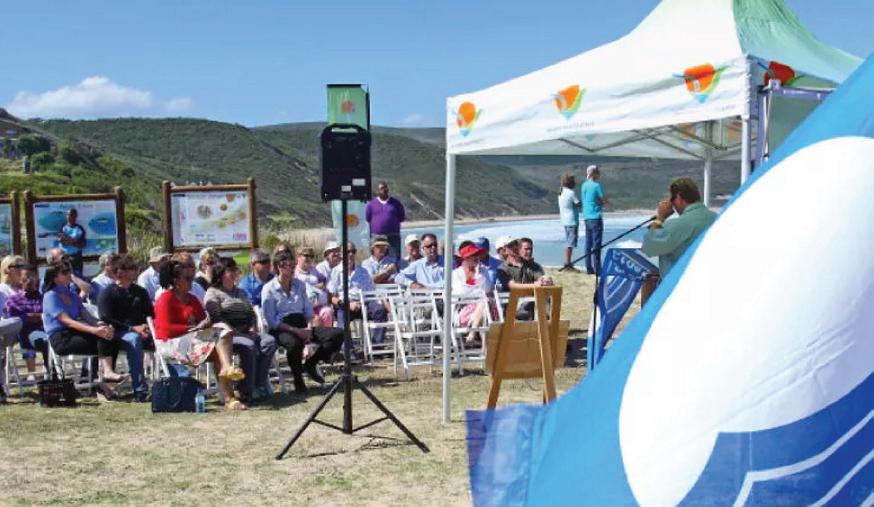

Victoria Bay
Wilderness
Robberg 5, Plettenberg Bay
The Waves at Keurboomstrand, outside Plettenberg Bay
The Dunes at Keurboomstrand, outside Plettenberg Bay
Lookout, outside Plettenberg Bay
Singing Kettle, Plettenberg Bay
Nature’s Valley






Set your course and hoist the sails, it’s time for a nautical adventure on the Cape West Coast!
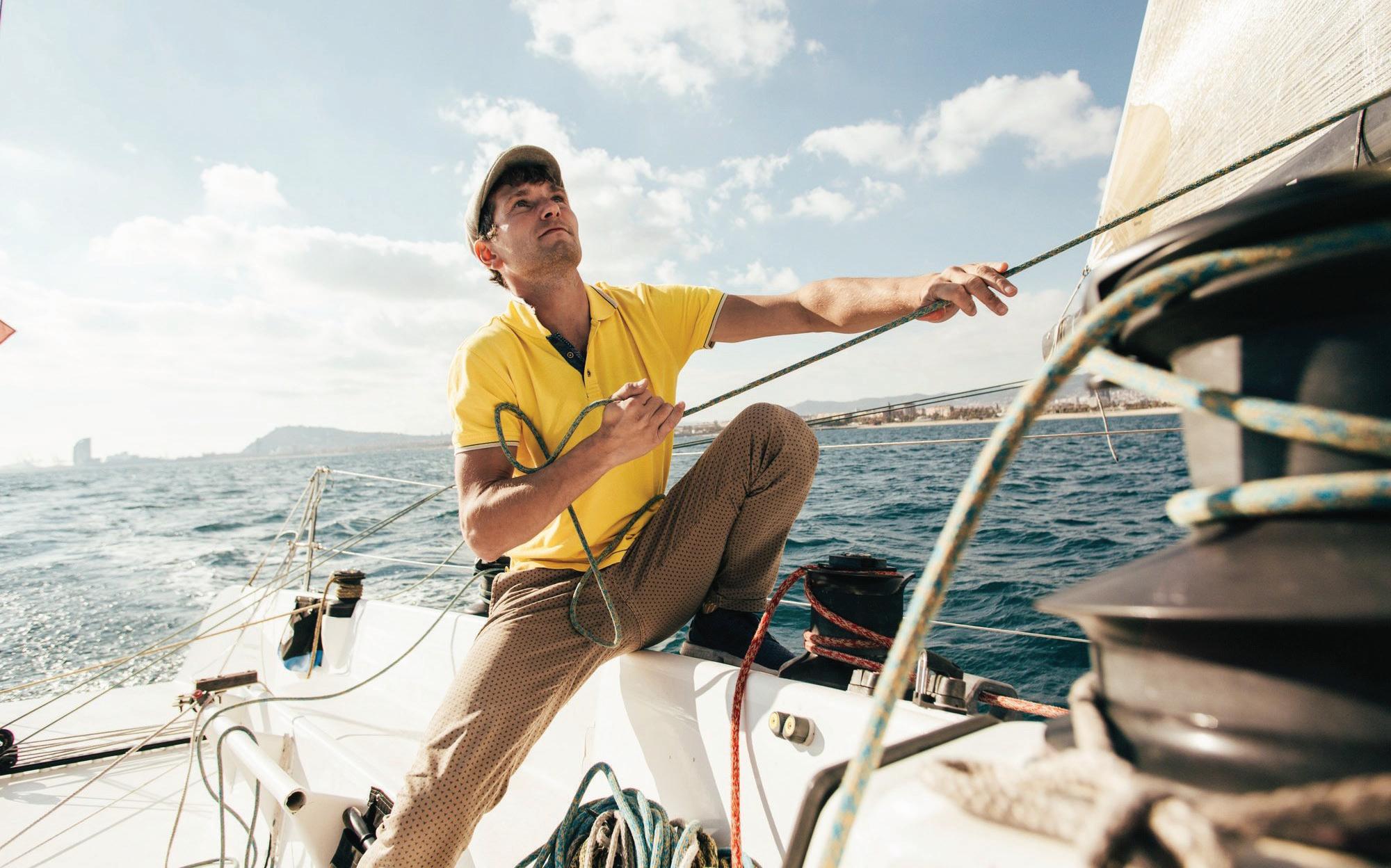
The warm Mediterranean climate, combined with reliable winds, offers perfect sailing conditions throughout the year.

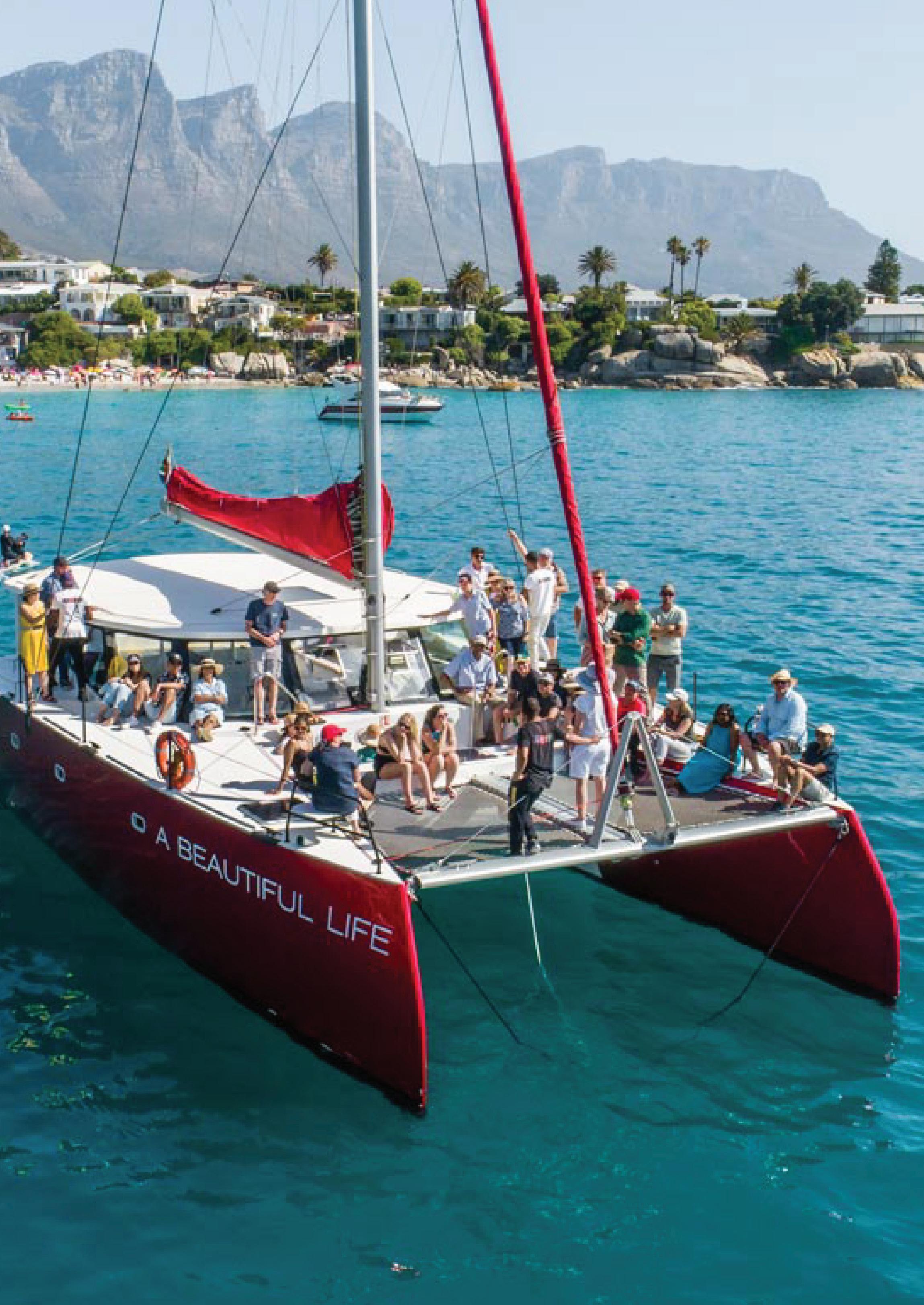
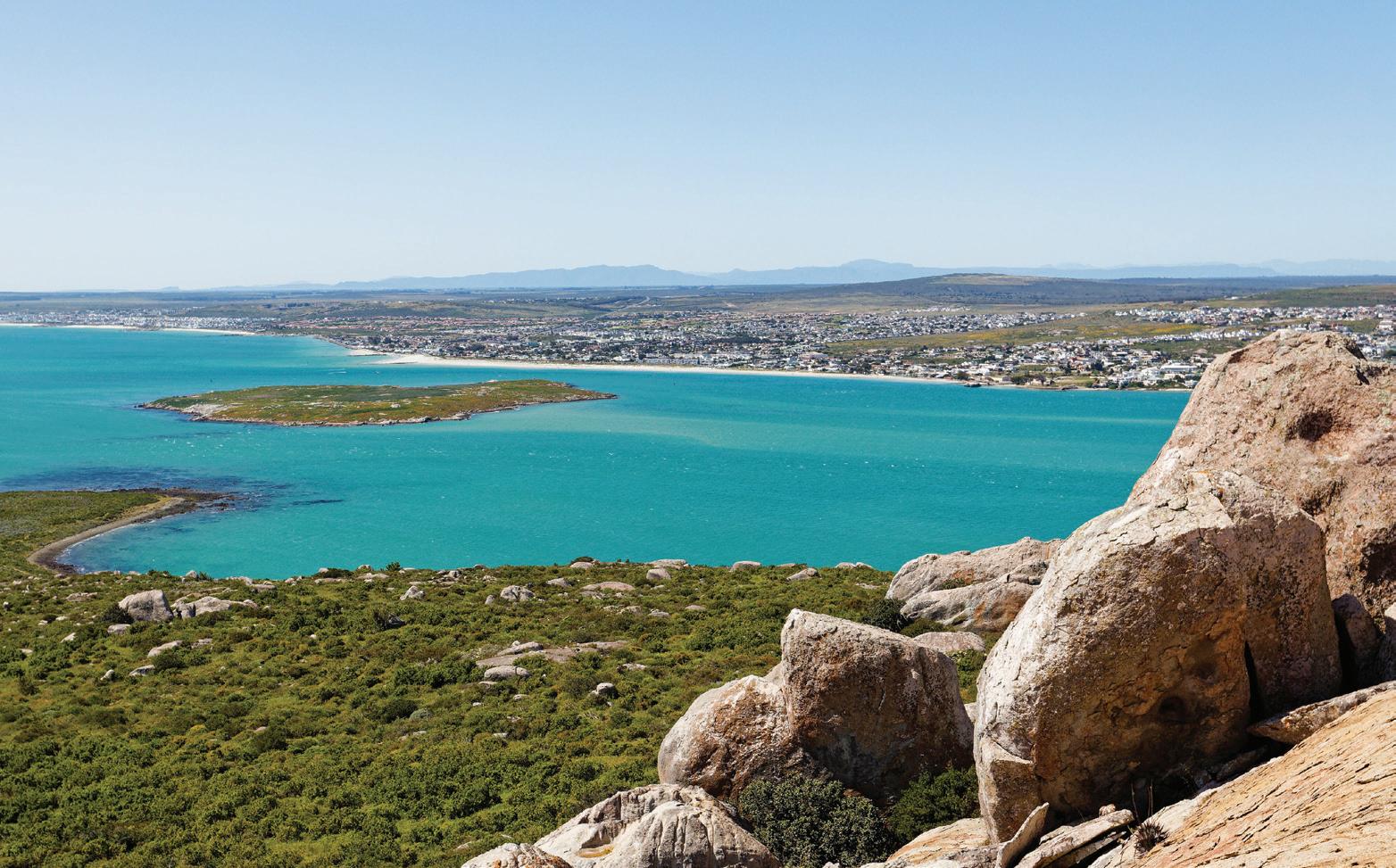
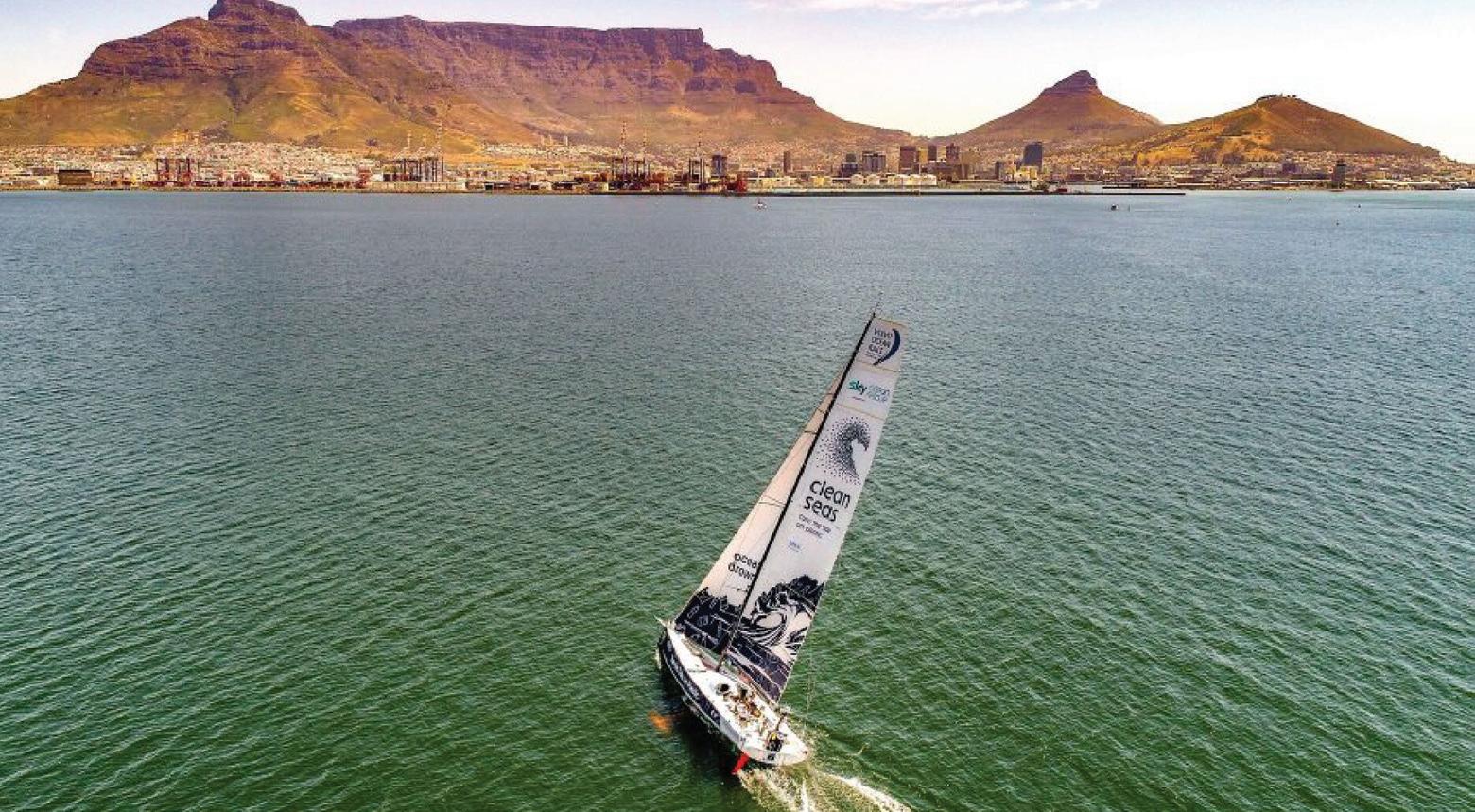
Nestled along the southwestern coast of South Africa, the Cape West Coast offers a breathtaking tapestry of landscapes, vibrant marine life and rich cultural heritage. With its windswept beaches, quaint fishing villages and stunning nature reserves, this region is a paradise for yachting and sailing enthusiasts.
Whether you’re a seasoned sailor or a novice looking for adventure, the Cape West Coast beckons with its promise of unforgettable experiences on the open water.
The Cape West Coast stretches from the vibrant city of Cape Town to the rugged landscapes of the West Coast National Park. This stretch of coastline is characterised by its unique blend of wild beauty and calm waters, making it ideal for sailing. The warm Mediterranean climate, combined with reliable winds, offers perfect sailing conditions throughout the year.
One of the standout features of
the region is the array of protected bays and natural harbours. Places like Langebaan and Saldanha Bay provide sheltered waters that are ideal for leisurely sailing or adventurous water sports. Here, you can experience the thrill of navigating through clear blue waters while soaking in the spectacular views of Table Mountain in the distance and the surrounding landscapes.
For those looking to embark on a yachting adventure, several reputable charter companies operate along the coast. From luxury catamarans to more modest sailboats, there’s something to suit every preference and budget. Many of these charters also offer guided tours, ensuring you have an expert crew to help navigate the waters and share insights about the region’s rich maritime history. Langebaan is often the starting point for many sailing adventures. This charming coastal town boasts
a lagoon known for its turquoise waters and white sandy beaches. Before setting sail, consider spending a day exploring the town’s vibrant atmosphere, indulging in fresh seafood at local restaurants or relaxing on the beach.
For those looking to embark on a As you set out into the shimmering waters of Langebaan Lagoon, the experience is nothing short of magical. The gentle breeze fills your sails, propelling you past stunning vistas of rolling sand dunes and vibrant wildflowers. The lagoon is a birdwatcher’s paradise, home to various species including flamingos and oystercatchers. Keep your camera ready – these picturesque scenes are perfect for capturing memories.
Sailing northward, you’ll reach the iconic town of Saldanha Bay. Known for its deepwater harbour and fishing industry, Saldanha offers a more industrial charm. However, the bay is also surrounded by natural beauty, with dramatic cliffs and secluded beaches waiting to be discovered.
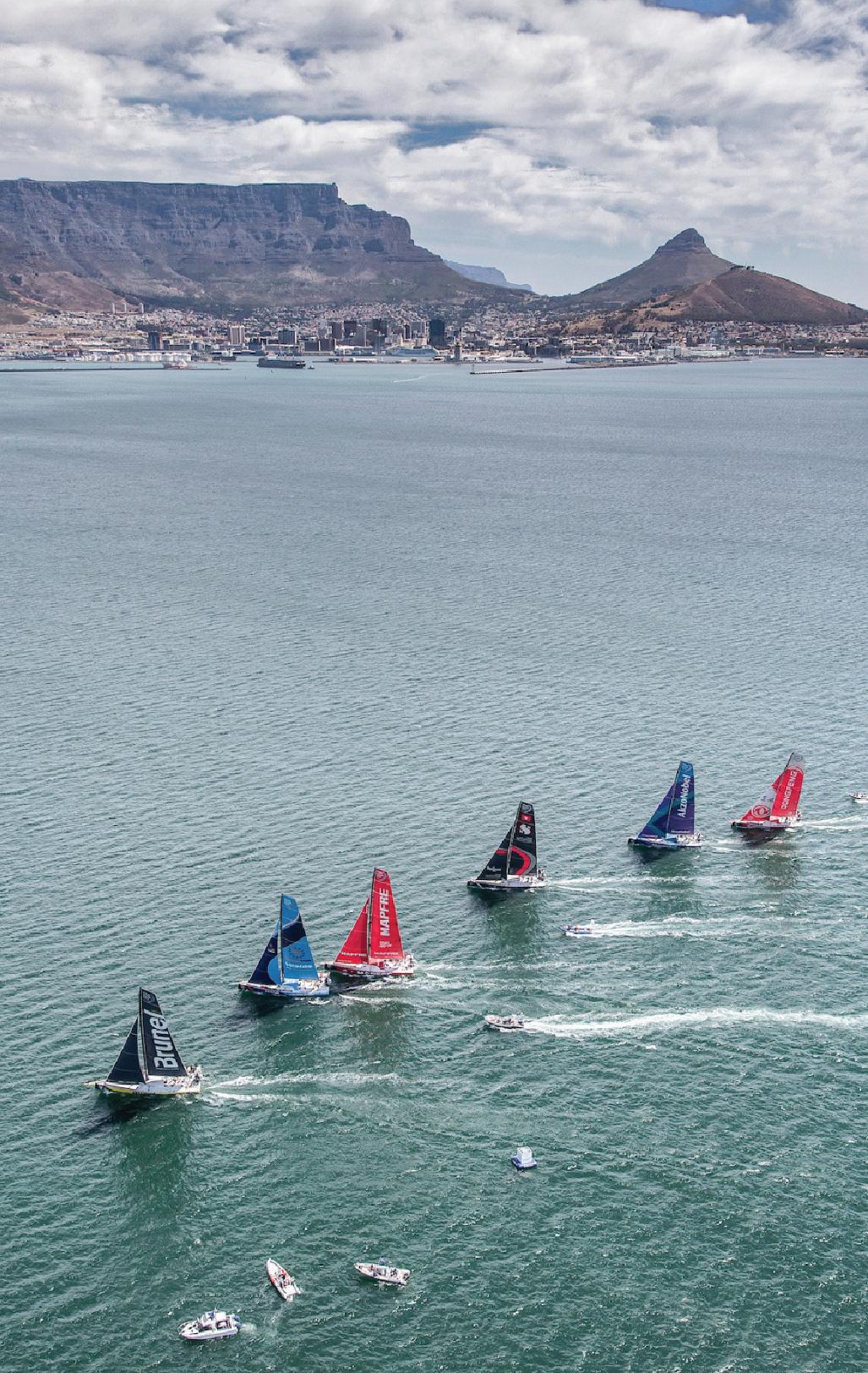
Consider dropping anchor and exploring the coastline by kayak or paddleboard, offering a unique perspective on the stunning scenery.
One of the most captivating aspects of sailing along the Cape West Coast is the chance to encounter its diverse marine life. Keep an eye out for playful seals, pods of dolphins and, if you’re fortunate, the majestic southern right whales that visit these waters from June to November. Whale watching from the deck of your yacht is an experience that will leave you in awe of these gentle giants as they breach and splash in the ocean. The region is also home to a variety of fish species, making it a popular destination for angling enthusiasts. Whether you’re keen to drop a line off the side of your boat or participate in a guided fishing expedition, the waters around the Cape West Coast promise a bountiful catch.
As you sail further along the coast, be sure to explore some of the region’s hidden gems. One such destination is Dassen Island, a small, uninhabited island that is a bird sanctuary. Here, you can anchor and take a short hike to experience its stunning landscapes and observe the abundant birdlife. The island’s isolation offers a serene escape, perfect for picnicking or simply enjoying the tranquility of nature.
Further down the coast, the charming fishing village of Paternoster invites visitors to explore its whitewashed cottages and scenic beachfront. This picturesque town is famous for its delicious seafood, and dining at one of its local restaurants is a must. Enjoy freshly caught fish, succulent crayfish (rock lobster) and traditional South African dishes while overlooking the ocean.
No sailing adventure is complete without immersing yourself in the local culture. The Cape West Coast is rich in history and heritage,
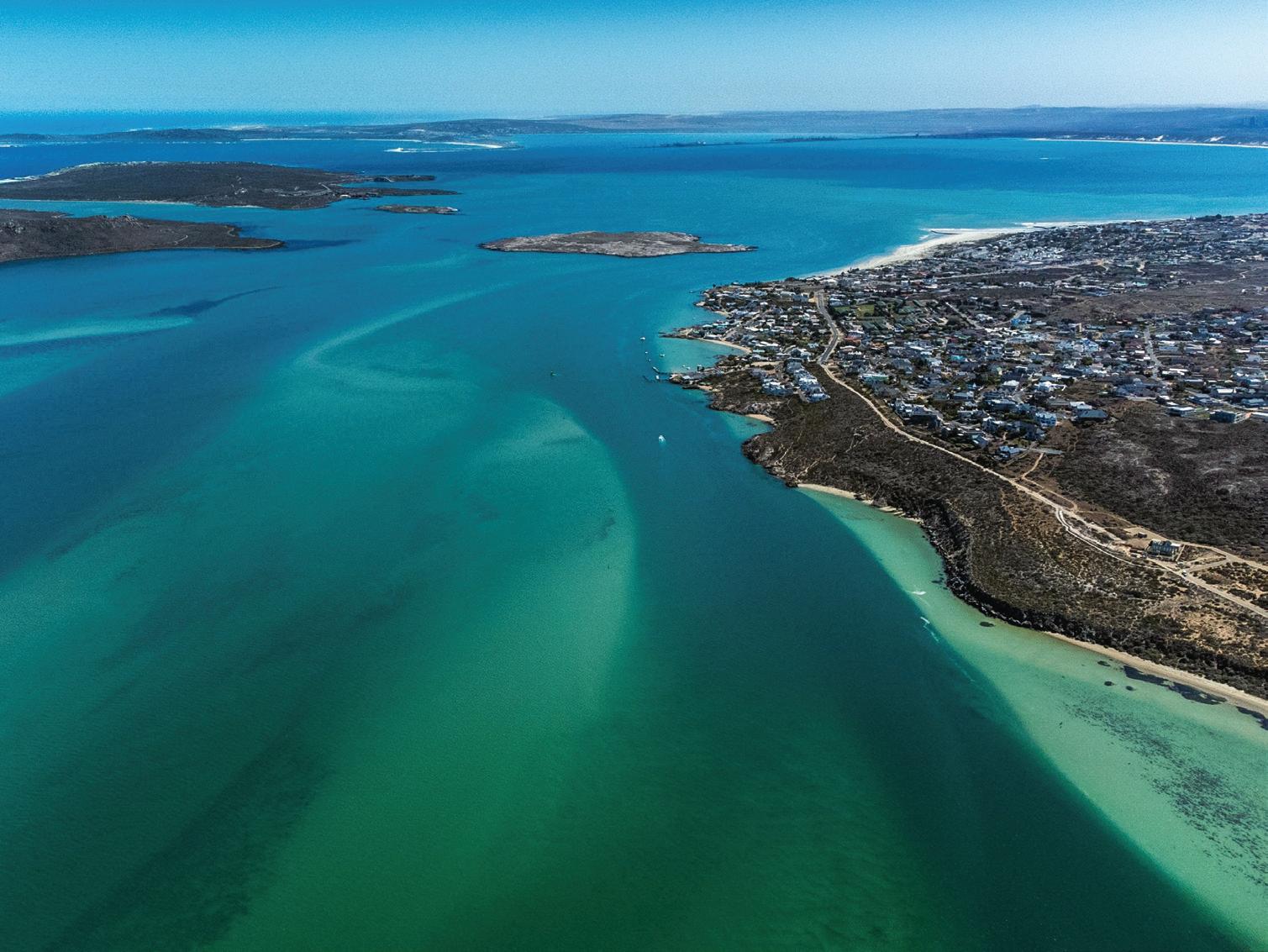

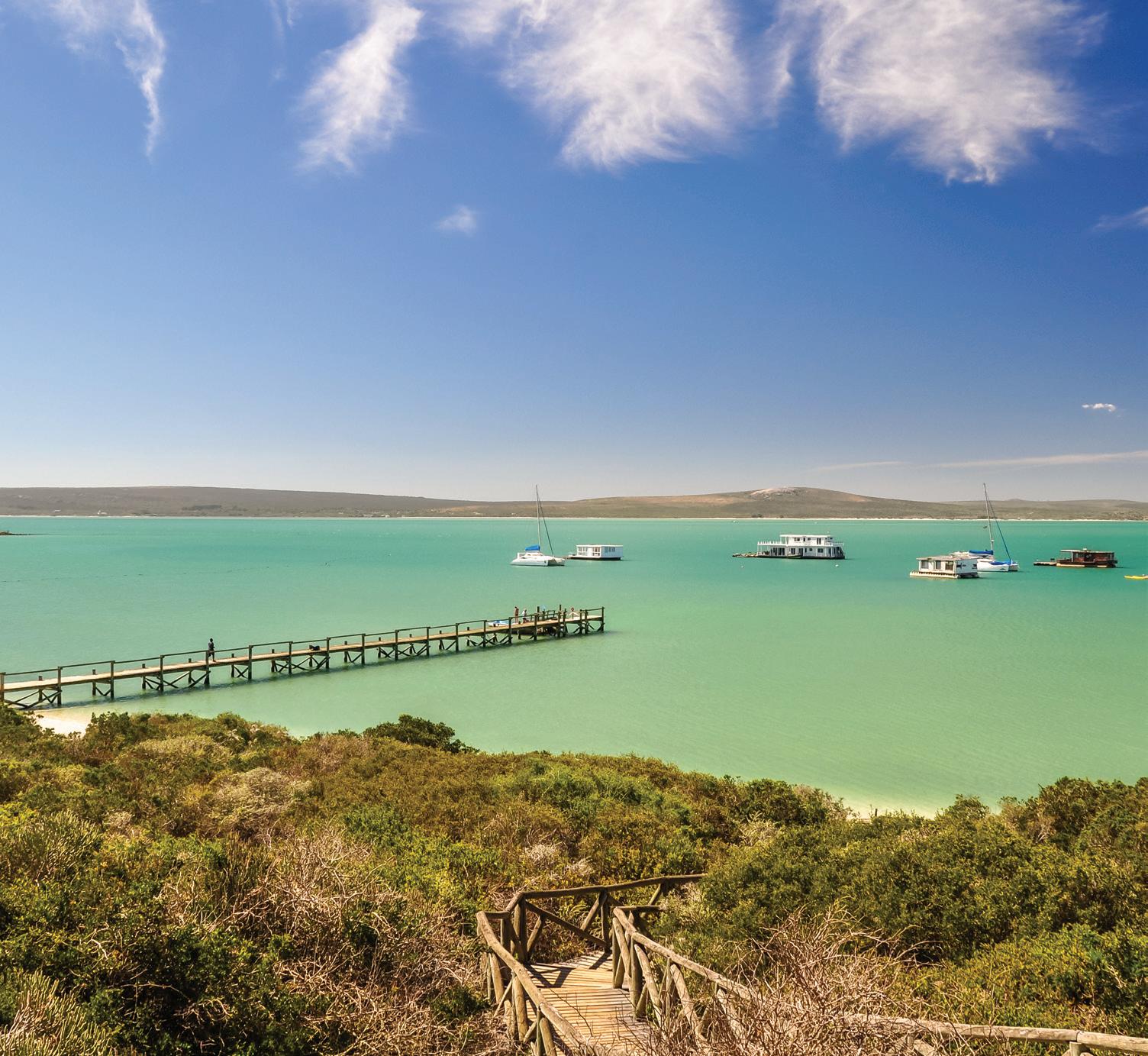
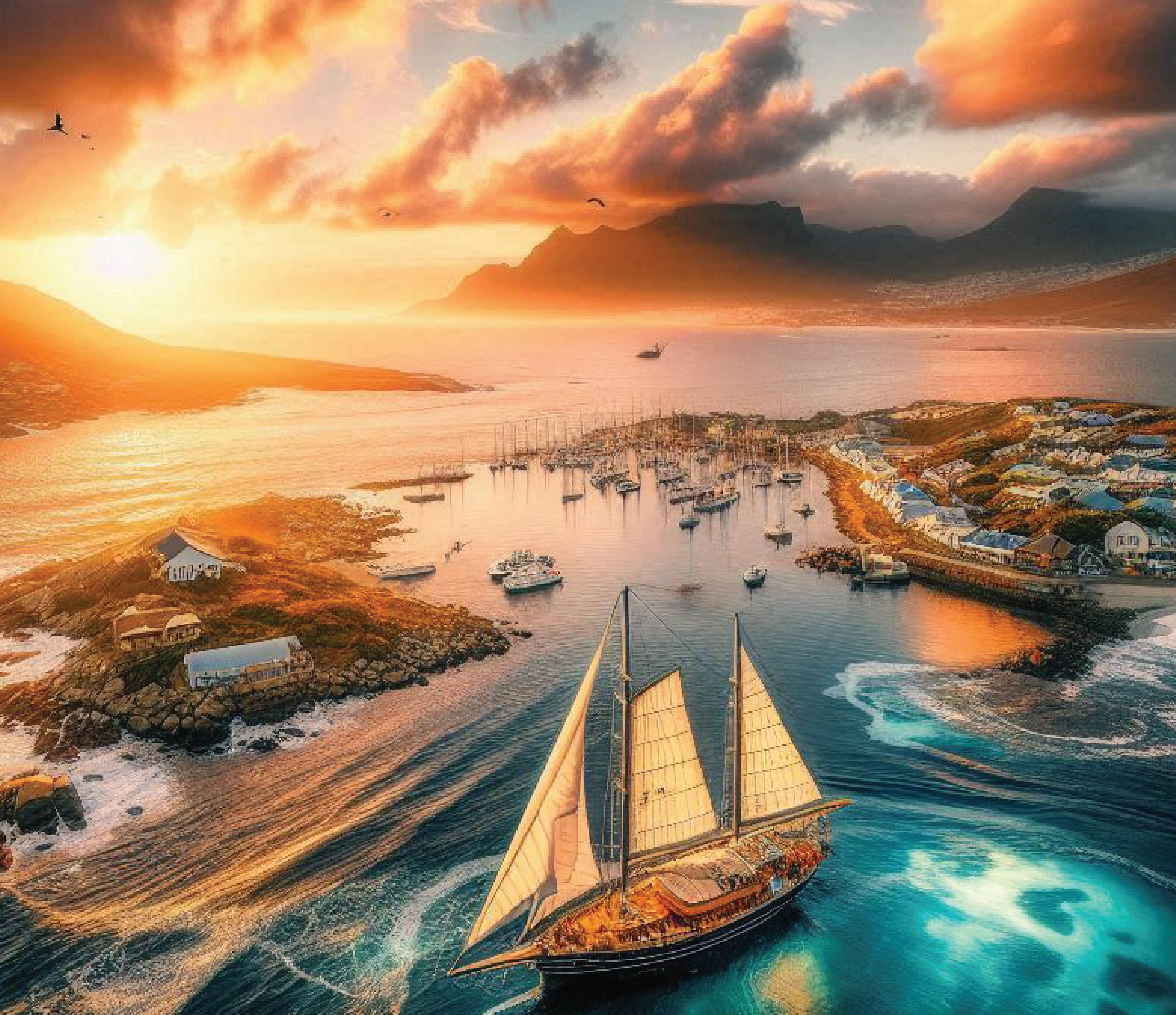
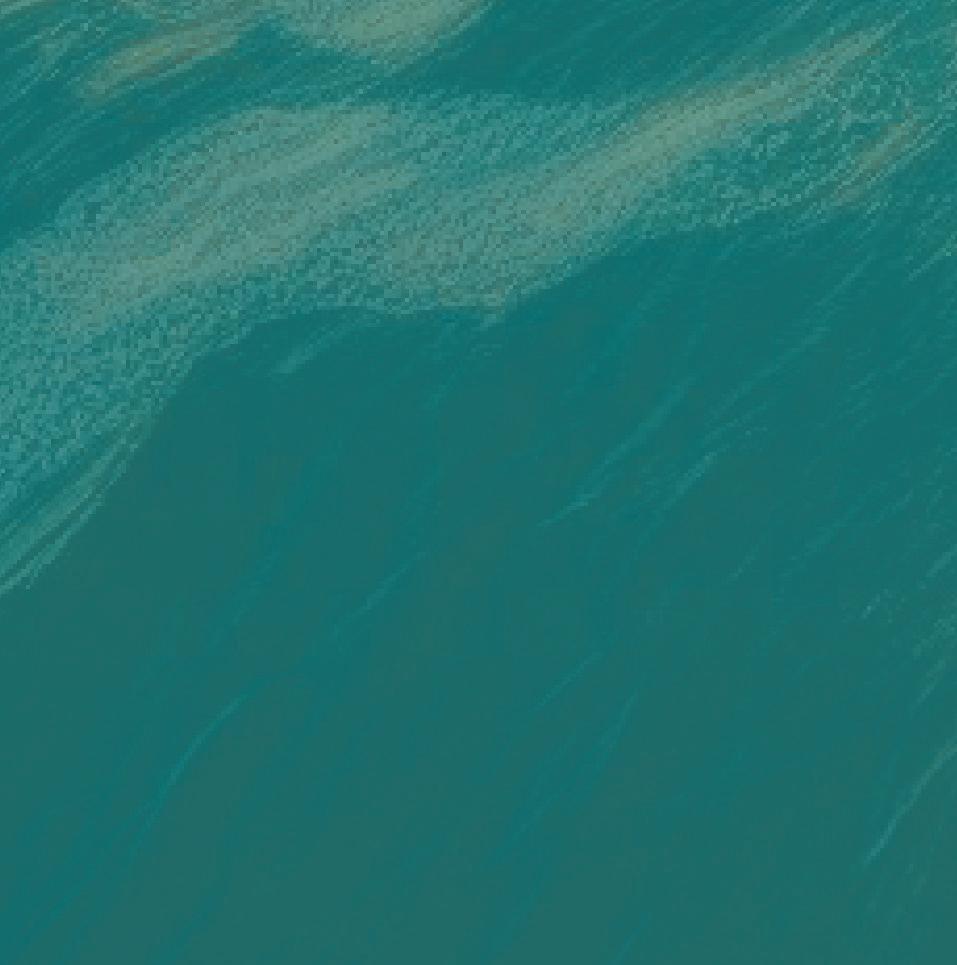
influenced by the indigenous Khoisan people and later European settlers. Many coastal towns offer cultural tours that delve into the area’s past, showcasing its fishing heritage and the impact of the ocean on local communities.
A visit to the West Coast Fossil Park is an excellent opportunity to learn about the ancient marine life that once inhabited this region. The park features fossilised remains of creatures that lived millions of years ago, providing a fascinating glimpse into the Earth’s history.

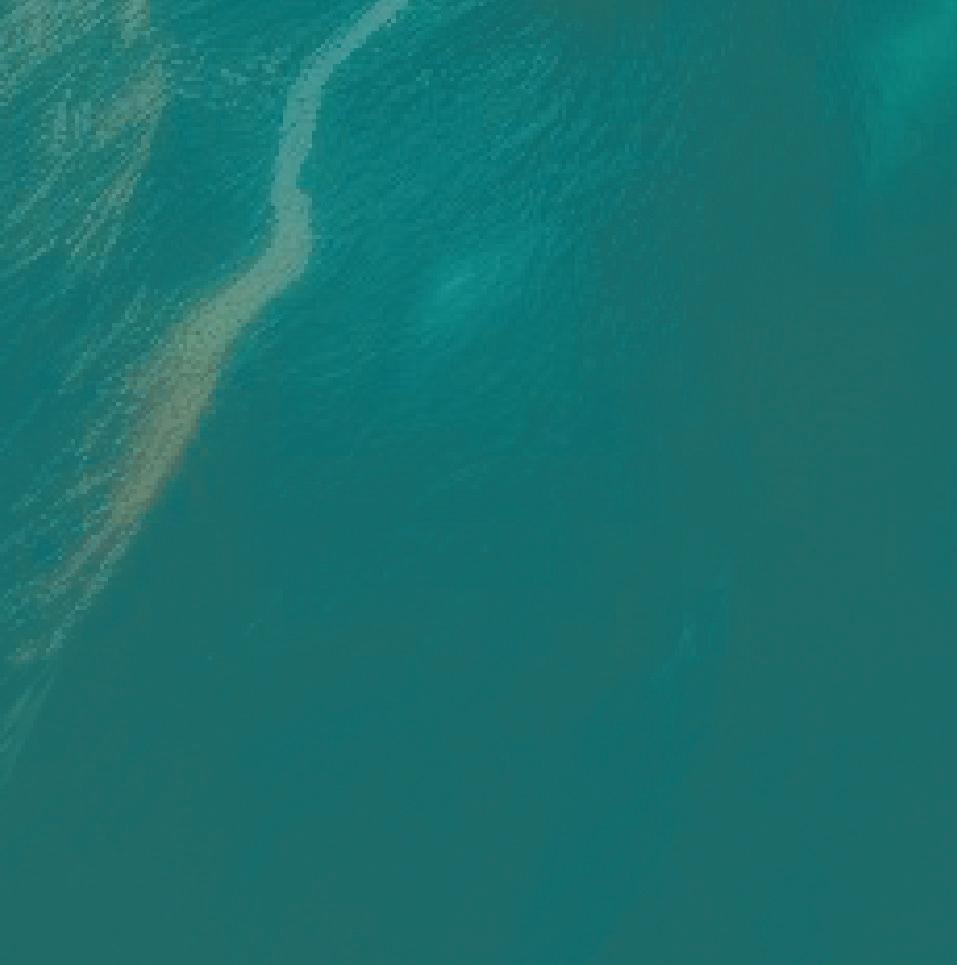
vineyards, and many establishments offer tastings of exceptional wines produced in the nearby Swartland region. It’s the perfect way to reflect on your journey and celebrate the unforgettable moments spent sailing the breathtaking coast.
Sailing along the Cape West Coast is more than just a recreational activity; it’s an opportunity to connect with nature, experience vibrant culture and create lasting memories.
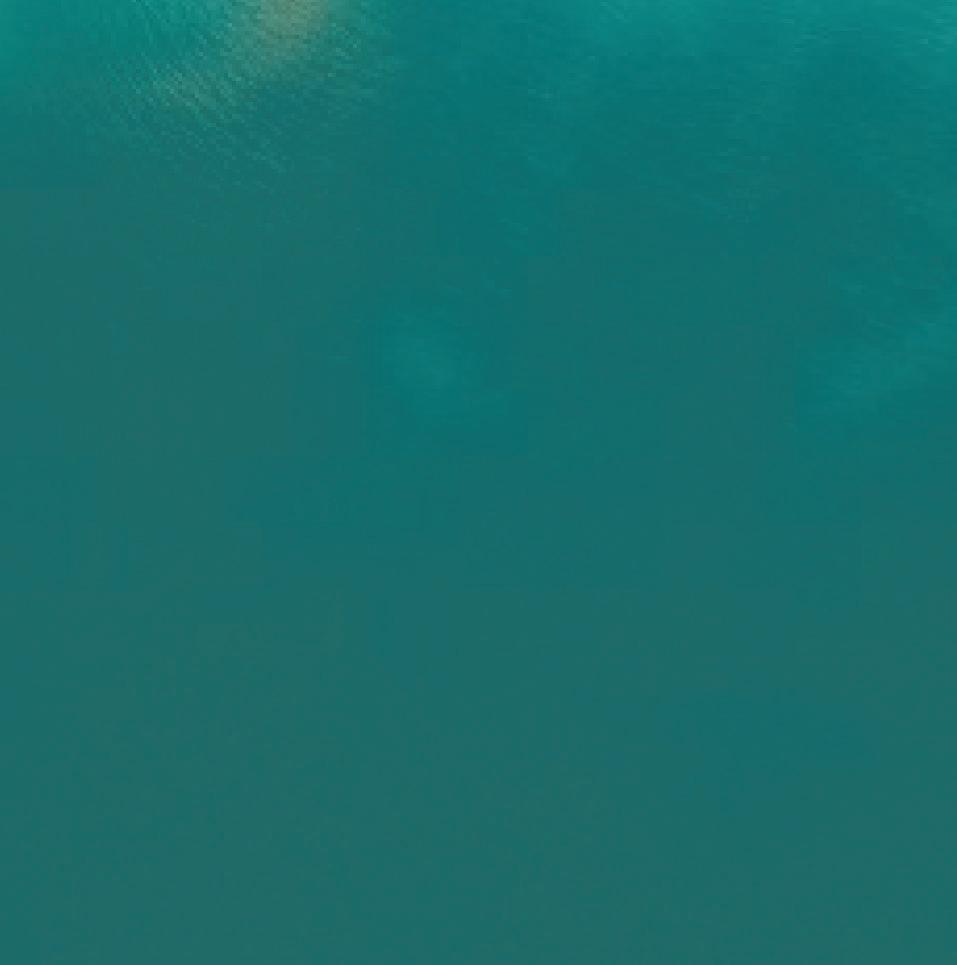
As your sailing adventure comes to an end, consider spending your last evening at a waterfront bar, sipping on a local wine while watching the sun dip below the horizon. The Cape West Coast is renowned for its

Whether you’re gliding over tranquil lagoons or exploring hidden coves, the beauty of this region will leave you captivated.
So grab your sailing gear, set your course and prepare for an adventure that will enrich your spirit and ignite your love for the sea. The Cape West Coast is ready to offer you the ultimate nautical experience.


From luxury catamarans to more modest sailboats, there’s something to suit every preference and budget. “

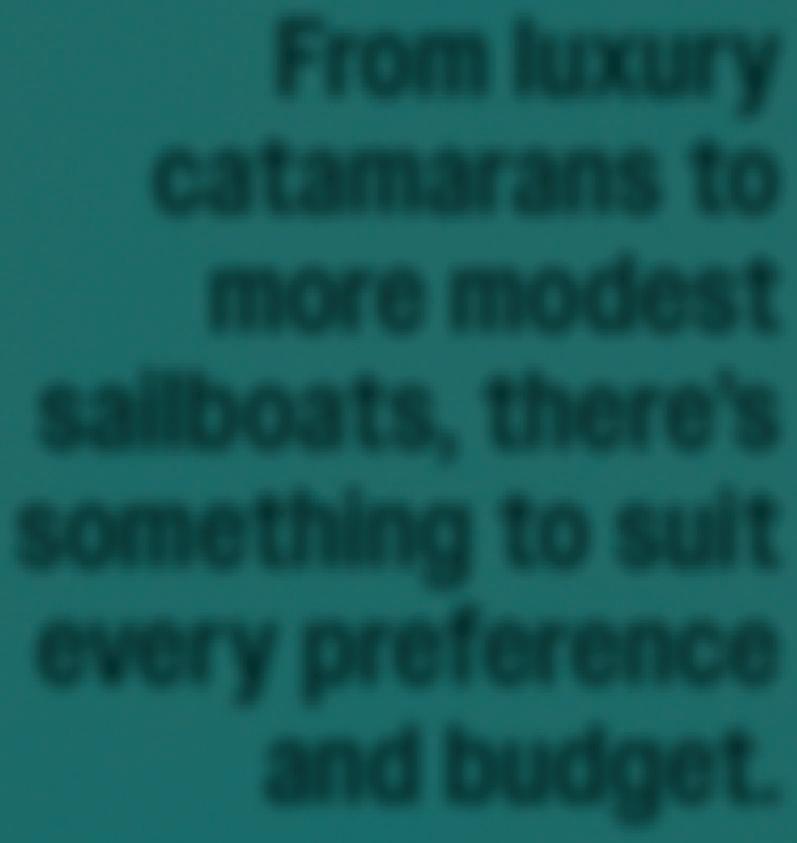


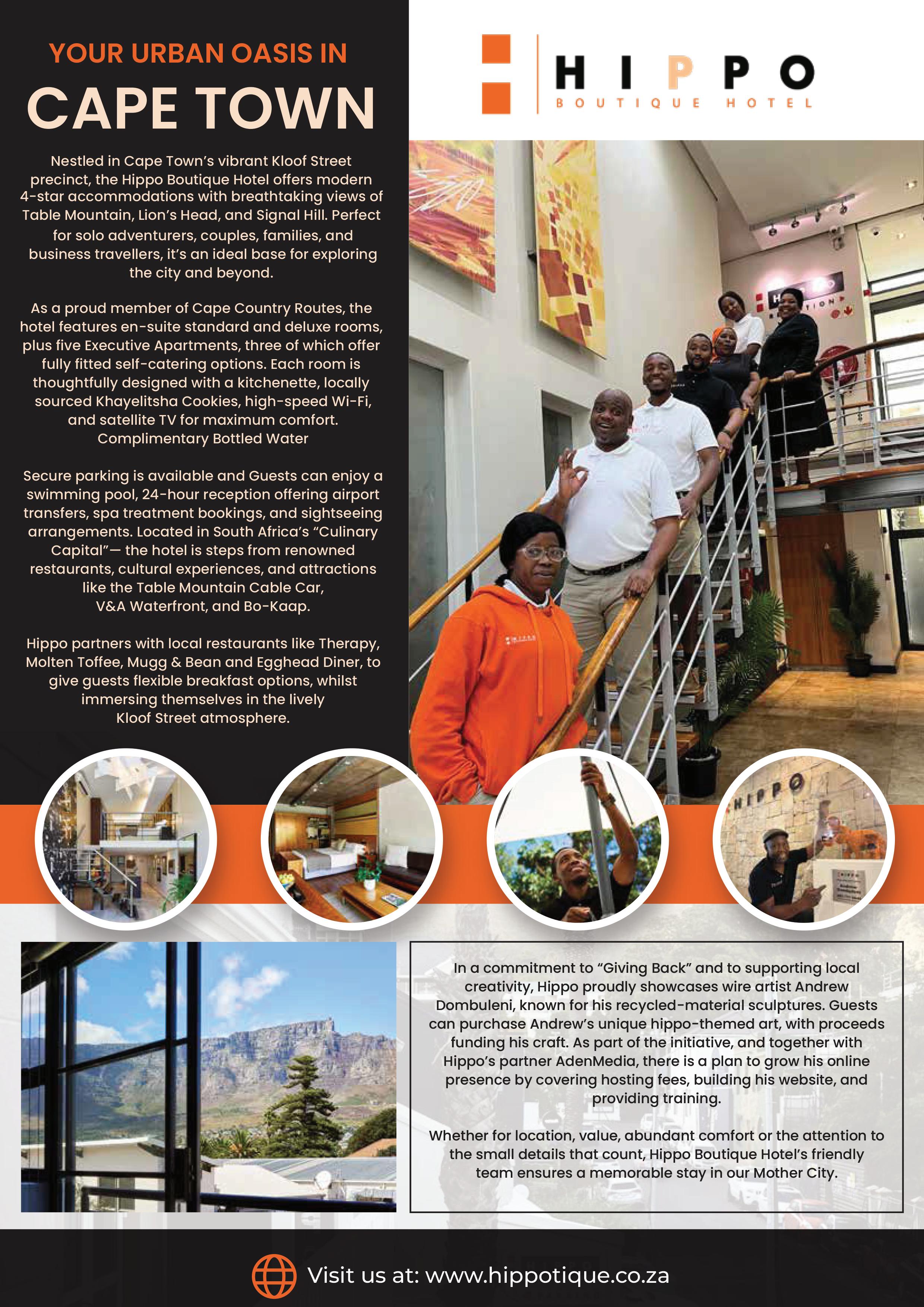













With its verdant fairways, splendid wildlife and gorgeous surroundings of mountain and ocean, the Garden Route ticks all the boxes for a memorable golfing getaway
By Tania Griffin
Whether you’re a pro or a novice, you’ll be mesmerised by the fairways and greens of the Garden Route’s award-winning courses .
Stretching eastward from Mossel Bay on the Cape South Coast to Port Elizabeth, the Garden Route is an extraordinary section of forested coastline—with the mountains of the Outeniqua and Tsitsikamma standing sentinel over the Indian Ocean.
With its mild to warm summers, and mild to cool winters, the Garden Route has the mildest climate in South Africa, which is ideal for all manner of leisurely pursuits. Secreted in this green fairyland are many jewels just waiting for those willing to take the time to discover them.
One such worthy diversion is golf. Whether you’re a pro or a novice, you’ll be mesmerised by the fairways and greens of the Garden Route’s award-winning courses. With towering forests and mighty seas as your backdrop, and actual ‘birdies’ and ‘eagles’ as your spectators, you’ll be excused for hitting over par among all these distractions.
Located just seven kilometres from George Airport, the premier leisure resort of Fancourt (www.fancourt. co.za) offers world-class golfing facilities as well as luxury 5-star accommodation and a sumptuous spa. And being a family-friendly destination, there’s much to keep the youngsters entertained while the grown-ups putt away.
All three 18-hole golf courses—The Links, Outeniqua and Montagu—are ranked highly in Golf Digest’s 100 top courses in the country, having been designed by a team headed by the
highly lauded South African golfer Gary Player and the estate’s owner, Dr Hasso Plattner.
The Links (ranked no. 2) is the hallmark of Fancourt, with its windswept terrain and dune-style landscape overlooked by the Outeniqua mountains and modelled on the links courses of the British Isles—described by Player as his greatest feat as a course designer. The Links is a private club, but limited tee times are available for guests staying at Fancourt Hotel or Manor House.
The tree-lined Montagu course (ranked no. 5) covers large tracts of varying terrain on rolling land, while the Outeniqua’s (ranked no. 23) parkland layout provides a more laidback experience for easier game play, though still offering some challenges and water hazards to keep the game exciting. Both courses feature a warm-up area with full-length range as well as a chipping and bunker practice area to get you into the swing of things.
For those looking to improve their game, the on-site Golf Academy is managed by a team of qualified PGA specialists who offer expert advice and tuition. There are also two fully equipped pro shops that provide everything you’ll need for an enjoyable golfing experience: from high-end branded golfing apparel to clubs and accessories.
Part of the Oubaai residential estate and golf resort just outside George,

the 5-star hotel offers 100 stylish guestrooms and suites to visitors; plus the award-winning Freesia Spa, and a choice of three top restaurants.

Africa. It is set on more than 200 hectares of outstanding fynbos
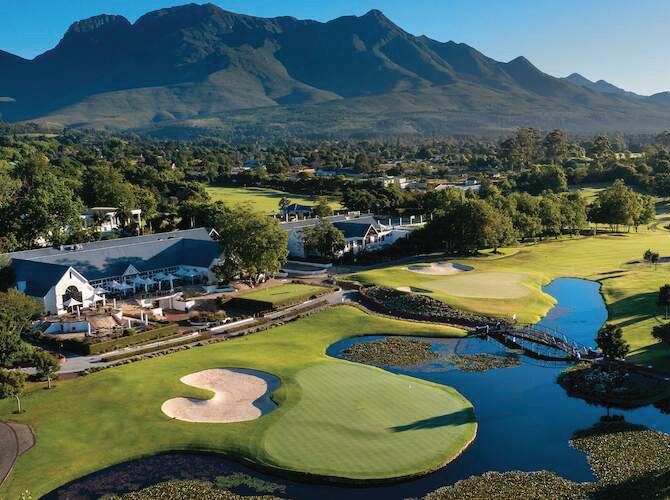
Oubaai (www.oubaaigolfclub. com) has been moulded to the landscape—resulting in courses that


the 5-star hotel offers 100 stylish guestrooms and suites to visitors; plus the award-winning Freesia Spa, and a choice of three top restaurants. There’s also a kids’ club run by qualified childcare professionals. The resort has its own Oubaai Heritage hiking trail and a viewing deck from which to spot dolphins and whales.
But the crowning glory is, of course, the first Ernie Els signature championship golf course in South Africa. It is set on more than 200 hectares of outstanding fynbos surroundings that are home to indigenous bird species and freeroaming game. The 18-hole course has a typical links layout with veld
grass lining the fairways that are always in mint condition.
Designed by South Africa’s own Ernie “Big Easy” Els, with the support of Jack Nicklaus’ technical team, Oubaai (www.oubaaigolfclub.com) has been moulded to the landscape— resulting in courses that enhance the natural environment and that make for great golfing for both pros and amateurs. A highlight is the 17th hole, where the green meets the ocean; but watch out for the four bunkers and ever changing winds that make this one of the most challenging plays.
Membership benefits are numerous. The Clubhouse boasts panoramic views of the ocean and
the Gwaing River Valley. A full-service practice facility is at your disposal, and includes a large driving range, putting green and short-game area;
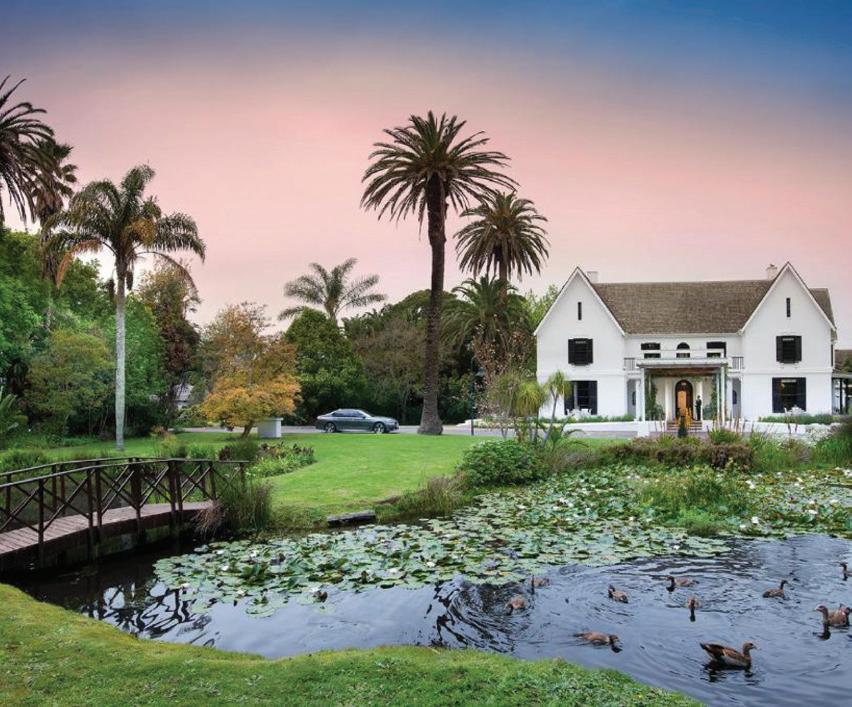

while the pro shop at the Clubhouse is where you can book your round of golf, purchase apparel and equipment, rent a GPS–enabled golf cart, or arrange for a lesson with a qualified professional.
Pezula Nature Retreat
This resort (pezulanatureretreat. com) on the eastern head of Knysna is surrounded by nature in all its glory: ancient forests, majestic mountains, crystal-clear lakes and glorious beaches. Add luxurious accommodation, locally sourced food, activities for both young and old, a modern spa, wood-fired hot tubs and a championship golf course—and you have the makings of an unforgettable holiday.
The award-winning 18-hole golf course offers a unique experience within 254ha located on the Knysna clifftops. This sweeping spectacle of fairways and greens overlooks both the lagoon and the ocean, making it one of the most scenic courses in the world.
Golf course architects Ronald Fream and David Dale of GolfPlan USA have sculptured an incredibly diverse coastal terrain into a course that offers a total golfing experience for all players.
The par-72 course has been designed to be challenging yet rewarding for players of all levels. Signature holes are the 13th with its 200-foot drop, and the postcardworthy 14th. Tee times must be booked in advance and handicaps are required.
Pezula’s Clubhouse, as with the rest of the resort, provides 5-star service in all its facilities: from the restaurant and bar, to the golf shop and practice area. Top up your golf ball supply from the ProShop’s wide range, or grab some new attire. The in-house PGA professionals will assist you in choosing the correct equipment and give a few lessons. After your game, have a refreshing shower in the comfortable change rooms, and then sip on a cooling drink on the terrace with its magnificent views.
Another scenic masterpiece, the course at Pinnacle Point (pinnaclepointestate.co.za) overlooks the Indian Ocean from its perch atop a cliff. It forms part of an expansive estate that provides a comfortable lifestyle with a touch of opulence. Stay for a couple of days, or a week… or a lifetime! Lodges, villas or penthouses—the choice is yours.
Designed by renowned golf course architect Peter Matkovich and top Irish golfer Darren Clarke, the 72-par Clifftop Fynbos Golf Course has a challenging layout that’s made all the more memorable by its dramatic views and extraordinary terrain: Seven holes line the ocean cliffs, while four are played over the ocean and cliff; there are 7km of fairways, 80 bunkers and the only water hazard is the sea.
Matkovich himself called this “the most dramatic golf course site I’ve ever encountered anywhere in the world”.

There are five tee options per hole: pro tee, championship tee, club tee, pensioner tee and ladies tee.
Golfers want for nothing at Pinnacle Point. World-class facilities include a putting green, repairs workshop, pro shop and clubhouse with 270-degree sea views, and the Louis Oosthuizen Junior Academy for the younger players. A full-length driving range and practice facilities, swing assessments and private tuition packages are also available.
Children are well cared for and kept occupied while you enjoy your round of golf. And after the 18th, you can indulge in a pampering treatment at the world-class La Vita Spa; savour a delicious meal at The Cliffside Restaurant; go for a dip at the nearby beaches; head out on a hiking, walking or mountain bike trail; or witness a piece of heritage at the Pinnacle Caves archaeological site.
Goose Valley Golf Club
Surrounded by pristine nature, Goose Valley (www.goosevalleygolfclub. com) borders on the Keurbooms Lagoon, 4km from the heart of Plett. Adding a special touch to your golfing experience are the fynbos, indigenous trees, animal- and birdlife, as well as views of the ocean, Tsitsikamma Mountains and the famous Robberg Peninsula.
Goose Valley’s 72-par, 18-hole signature golf course was designed by Gary Player and sits on a sand dune, which allows for easy drainage after heavy rains. It will provide a great day out on the greens for players of all abilities, with a few water features to make things a bit more interesting. Before you tee off, have a go at the ball on the state-of-the-art driving range with practice chipping, putting and bunker play facilities; and ensure you stock up on garb and gear at the golf shop (there’s also a junior section for younger players). The pro shop handles green fees, as well as the hiring of golf carts and clubs.
And at the end of a superb day, refresh yourself in the modern change room and head to the clubhouse for a sundowner and a delightful meal at the Verandah Restaurant & Bar.
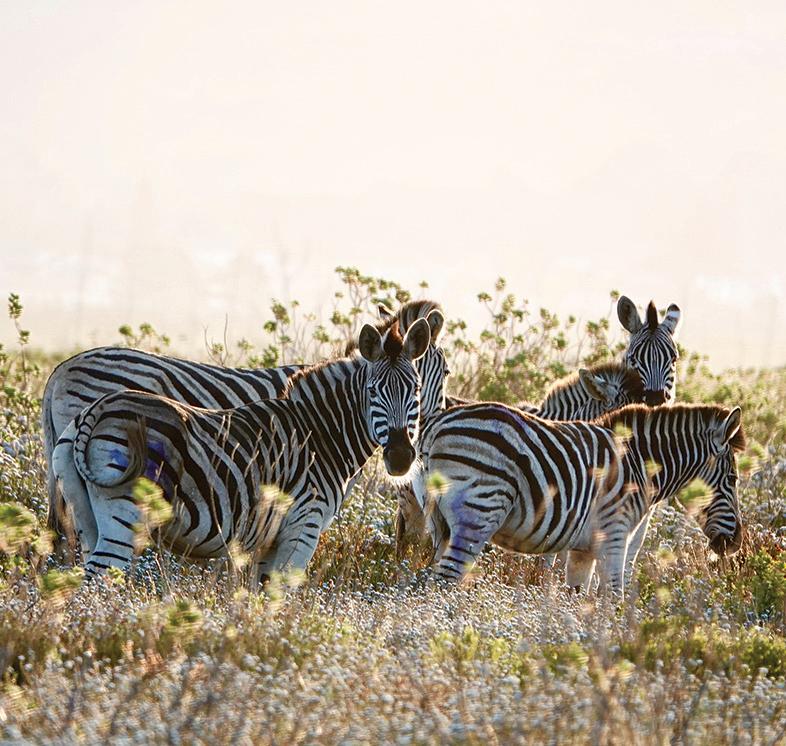
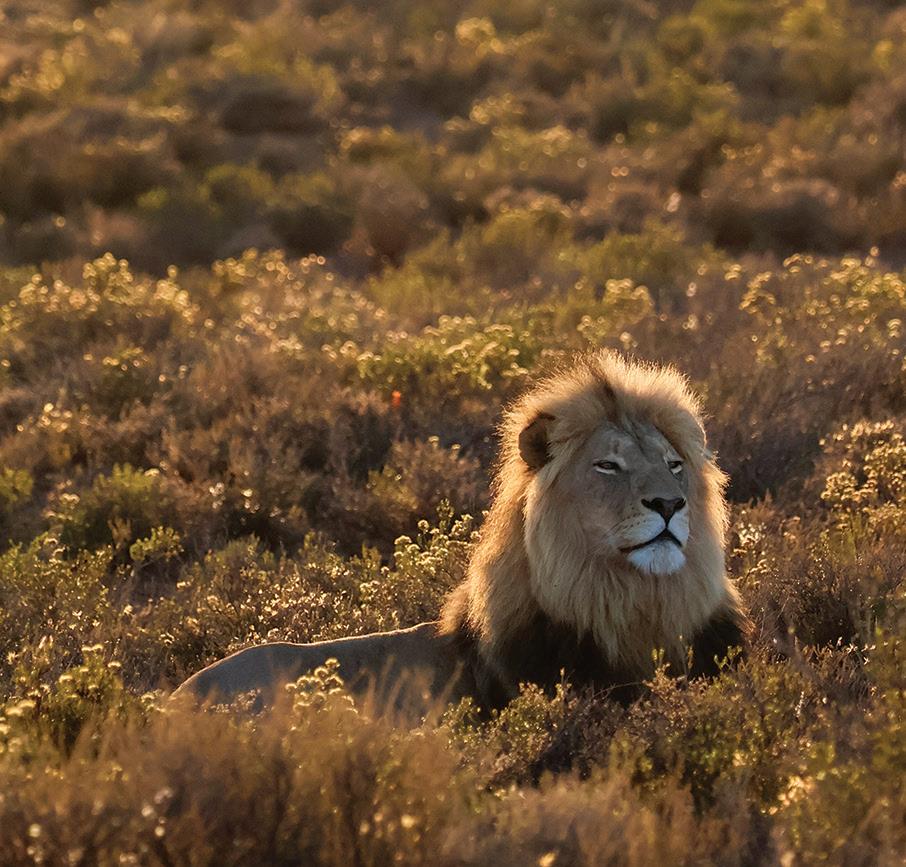
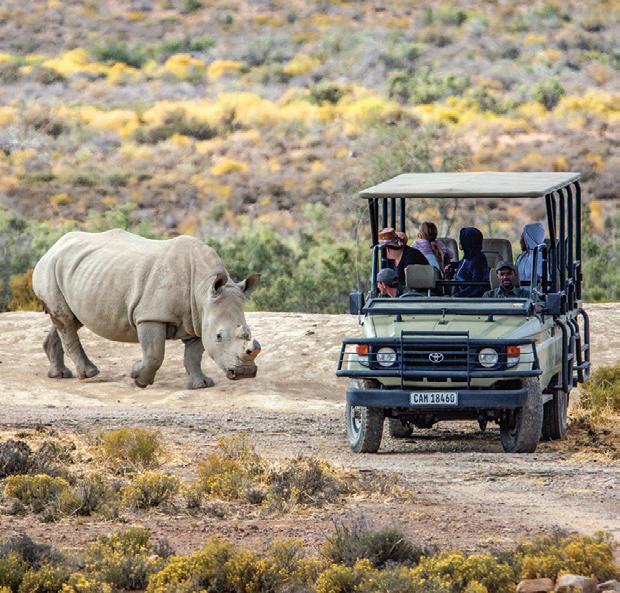
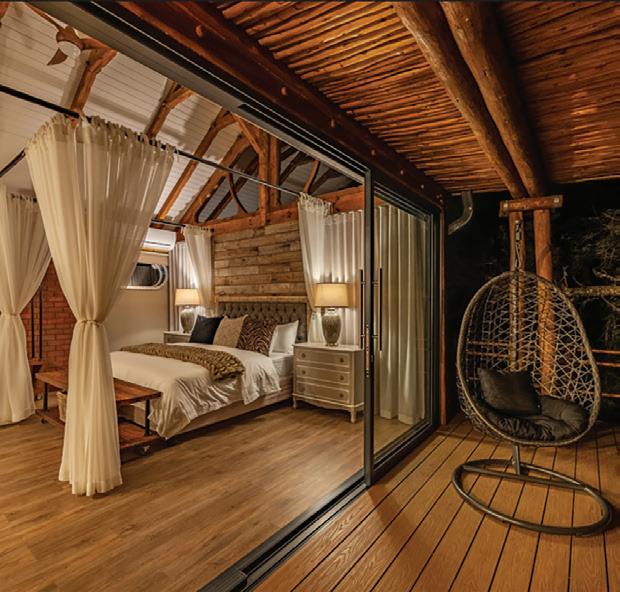
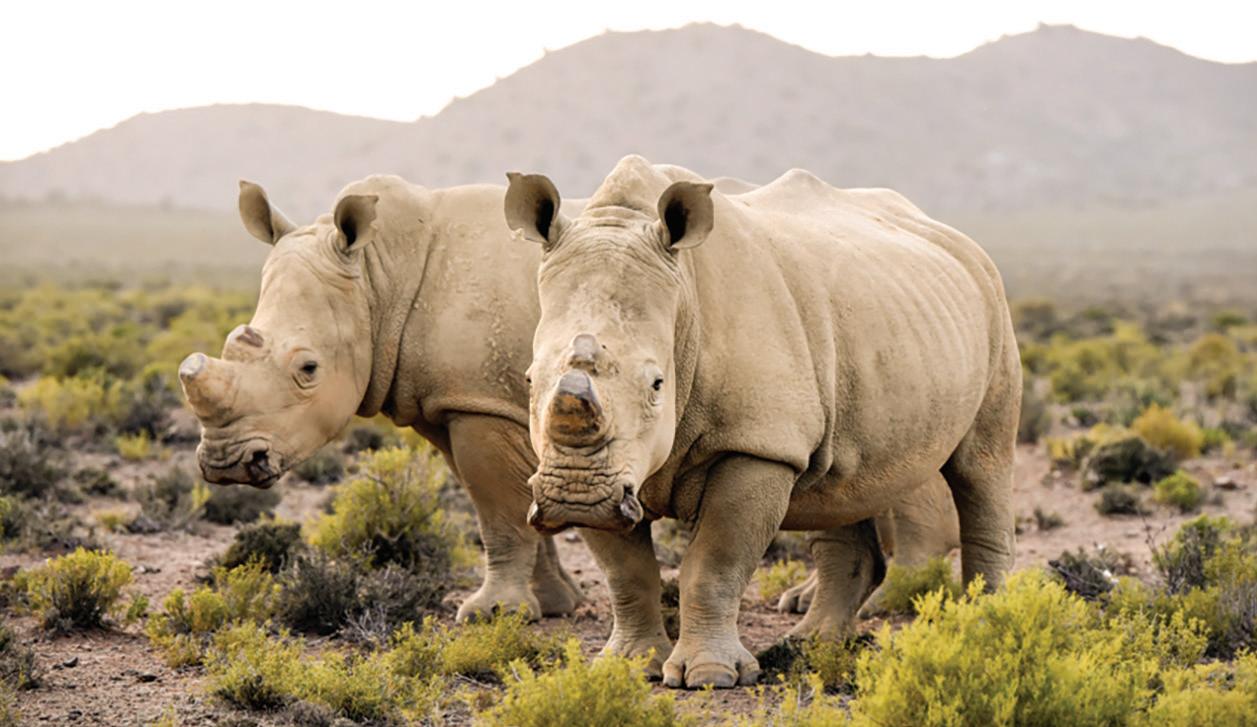
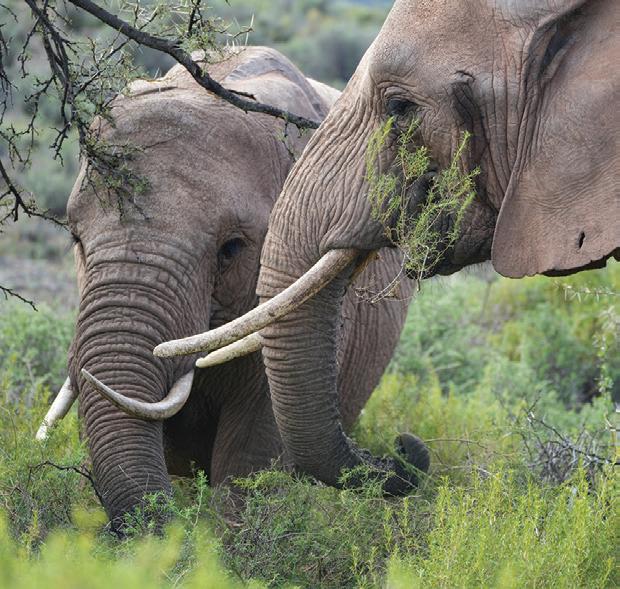

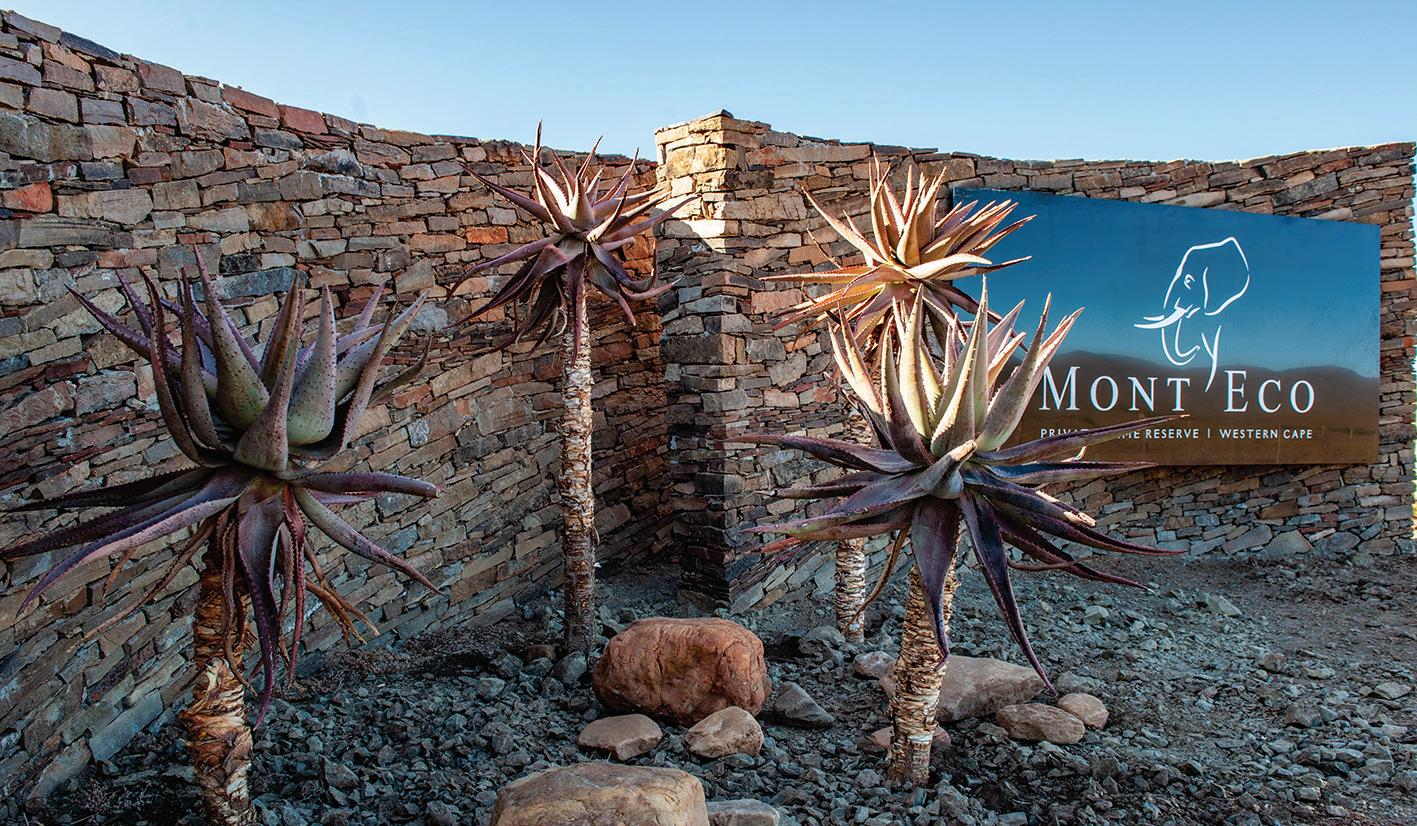
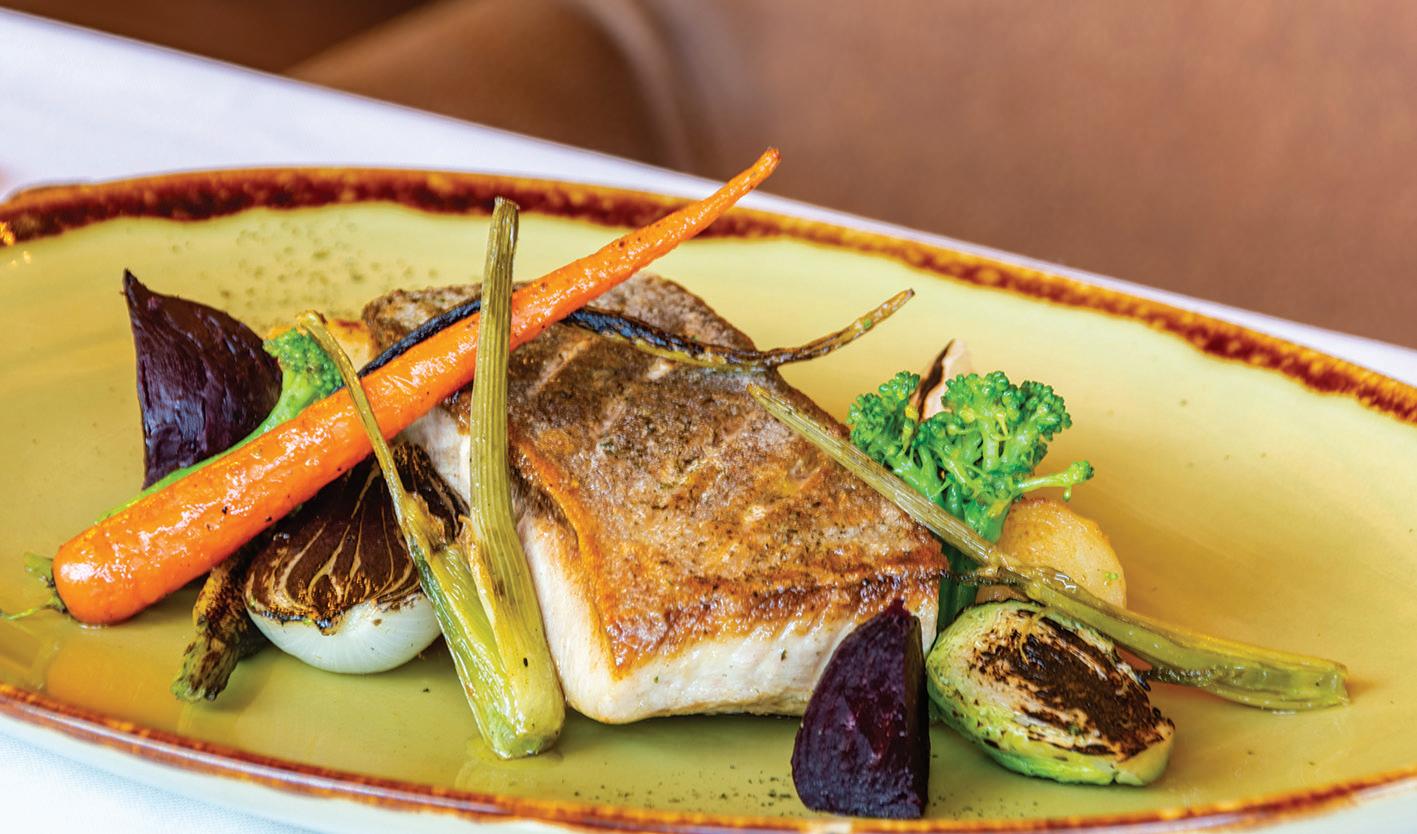

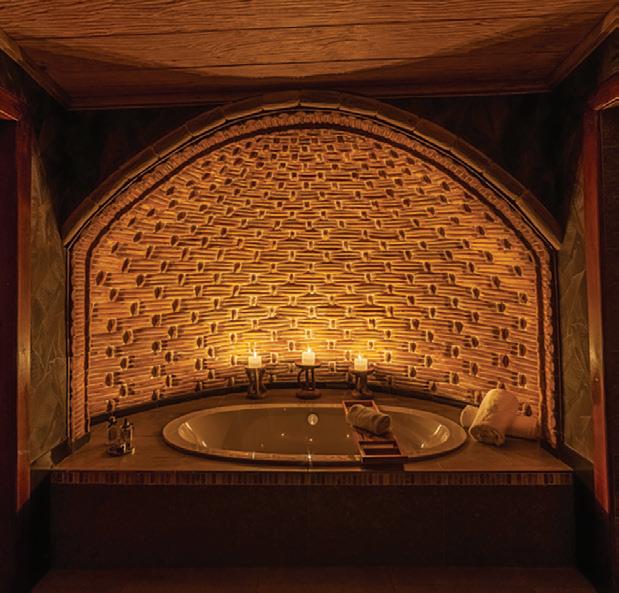
2 hours 45 minutes from Cape Town International Airport.
7-Suite lodge on 6750 hectares of exclusive use reserve.
Hi-speed Wi-Fi available in all rooms and general lodge areas.
Authentic 8-seater game drive vehicles (Land cruiser)
Professionally trained and registered guides.
Free roaming Big 5 safari reserve.
Guided walks offered daily by qualified guides.
Located in the Malaria Free Klein Karoo.
Air-conditioning in all rooms.
Well-stocked wine cellar.
Day trip safaris also available.







the hustle and bustle of the city, Mont Eco Private Game Reserve is the ideal destination for relaxation and an immersive experience with nature. Nestled in the heart of the Klein Karoo in the Western Cape, this 6 500-hectare (16 000-acre) reserve offers an unparalleled blend of luxury, seclusion, and the untamed beauty of South Africa’s landscapes.
At Mont Eco, the atmosphere is designed to help you unwind. Each of our seven standalone luxury suites offers a unique sense of intimacy and privacy, hard to find in today’s fast-paced world. These 80-squaremetre suites are equipped with full-length king-size beds draped in the finest linens to ensure ultimate comfort. The cosy lounge, complete with a fireplace, creates a warm, homey feeling, perfect for relaxing with a good book, sipping wine or simply soaking in the majestic views of the surrounding bush. For a touch of indulgence, unwind in the African Khoi San bath, situated beneath a basket weave dome, offering an unparalleled experience of relaxation.
While the suites provide seclusion and comfort, Mont Eco’s centrally located lodge offers a communal space for those looking to connect with others or explore additional facilities. The main lodge houses a spacious lounge area, a dining room, a curio shop for unique finds, and a Breakfast Dome with spectacular views. After a morning game drive, enjoy the lodge’s swimming pool and pool deck, which provide a perfect vantage point for observing the wildlife that frequently passes by on the nearby hills.
The view deck, located above the pool area, is particularly magical at
night. Far from city lights, the stars
shine brilliantly, offering a stargazing experience like no other. If you simply want to enjoy gazing at the night sky, Mont Eco’s absence of light pollution provides some of the most mesmerising nightscapes imaginable.
The reserve’s diverse landscapes include bush, valleys and majestic mountains, making each game drive a unique exploration. Guided by experienced rangers, you’ll traverse ancient riverbeds lined with acacia trees and marvel at the sheer expanse of the land, with the towering Langeberg Mountain range always in view.
Morning and afternoon game drives are included with your stay, each offering different opportunities to spot wildlife. Keep your eyes peeled for the elusive leopard, or marvel at herds of springbok, wildebeest and giraffes that roam the plains, much as they did centuries ago.
For a more intimate encounter with nature, opt for a guided bush walk
and get up close with the flora and fauna of this exceptional region.
The reserve also offers a fascinating glimpse into the past with ancient Bushman paintings and fossils scattered across the land, telling stories of early inhabitants and ancient ecosystems.
Conservation efforts at Mont Eco have meticulously restored this land to its former glory, allowing visitors to witness a vibrant ecosystem in action.
Mont Eco is not only about luxury but also about sustainability and conservation. The game reserve falls within the Cape Floral Kingdom, one of the most biodiverse regions in the world, and is home to three major biomes: the Nama Karoo, Succulent Karoo and Fynbos. After years of careful conservation and restoration, the reserve now thrives with an impressive array of succulent plant species, representing nearly half of the world’s succulent diversity. In line with its commitment to conservation, Mont Eco has
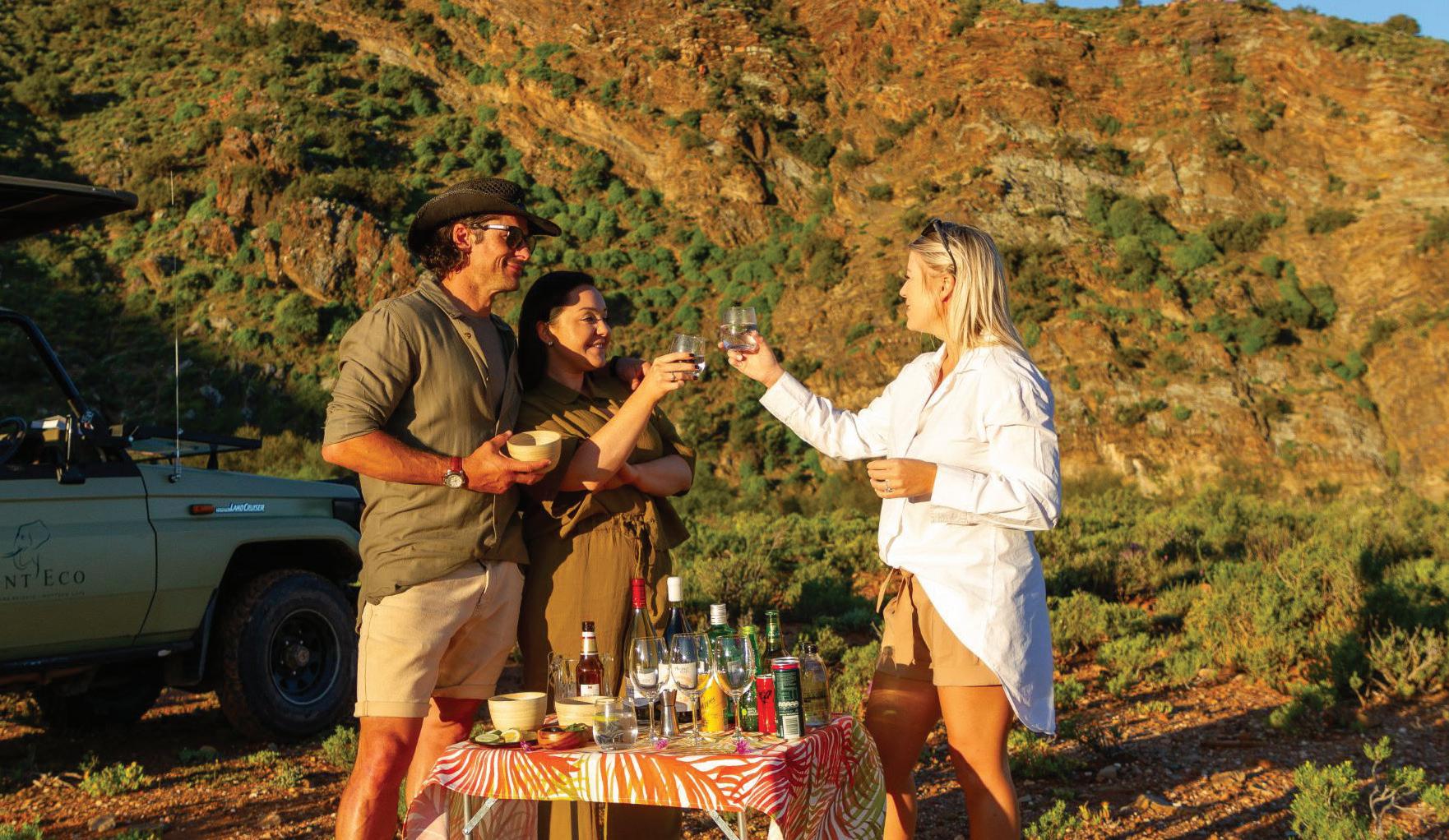





successfully reintroduced the African Big Five to the region. After thorough research into the species that previously roamed the area, lions, leopards, elephants, rhinos and buffalo have made a triumphant return to the reserve. Watching these majestic animals roam freely in their natural habitat is an awe-inspiring experience that highlights the success of Mont Eco’s conservation efforts.
Each suite features cutting-edge optical fibre Wi-Fi, a ceiling fan and air conditioning for your comfort.



The private wooden deck offers sweeping views of a seasonal river and the surrounding wilderness, while the custom sofa bed makes the suites ideal for families seeking both comfort and style.
In the colder months, relax by the lodge’s fireplaces or enjoy a meal in the cosy dining room, warmed by two additional fireplaces.
For a bit of fun, the lodge’s games room offers entertainment options including a pool table, big-screen TV and a variety of other games.


Mont Eco Private Game Reserve is more than just a luxury retreat; it’s a place where you can reconnect with nature and immerse yourself in the raw beauty of the Klein Karoo. With its unique blend of luxury, conservation and adventure, Mont Eco offers an unparalleled escape from the modern world.
Whether you’re seeking solitude, adventure or a bit of both, Mont Eco promises an unforgettable experience that will leave you with lasting memories of the Karoo’s breathtaking landscapes and remarkable wildlife.
To begin your journey into the heart of the Karoo, contact our reservations department today.
CONTACT INFORMATION
Driekuilshoogte Road Montagu, 6720
+27 (0) 71 410 9716
+27 (0) 23 111 0014 reservations@montecogamereserve. co.za
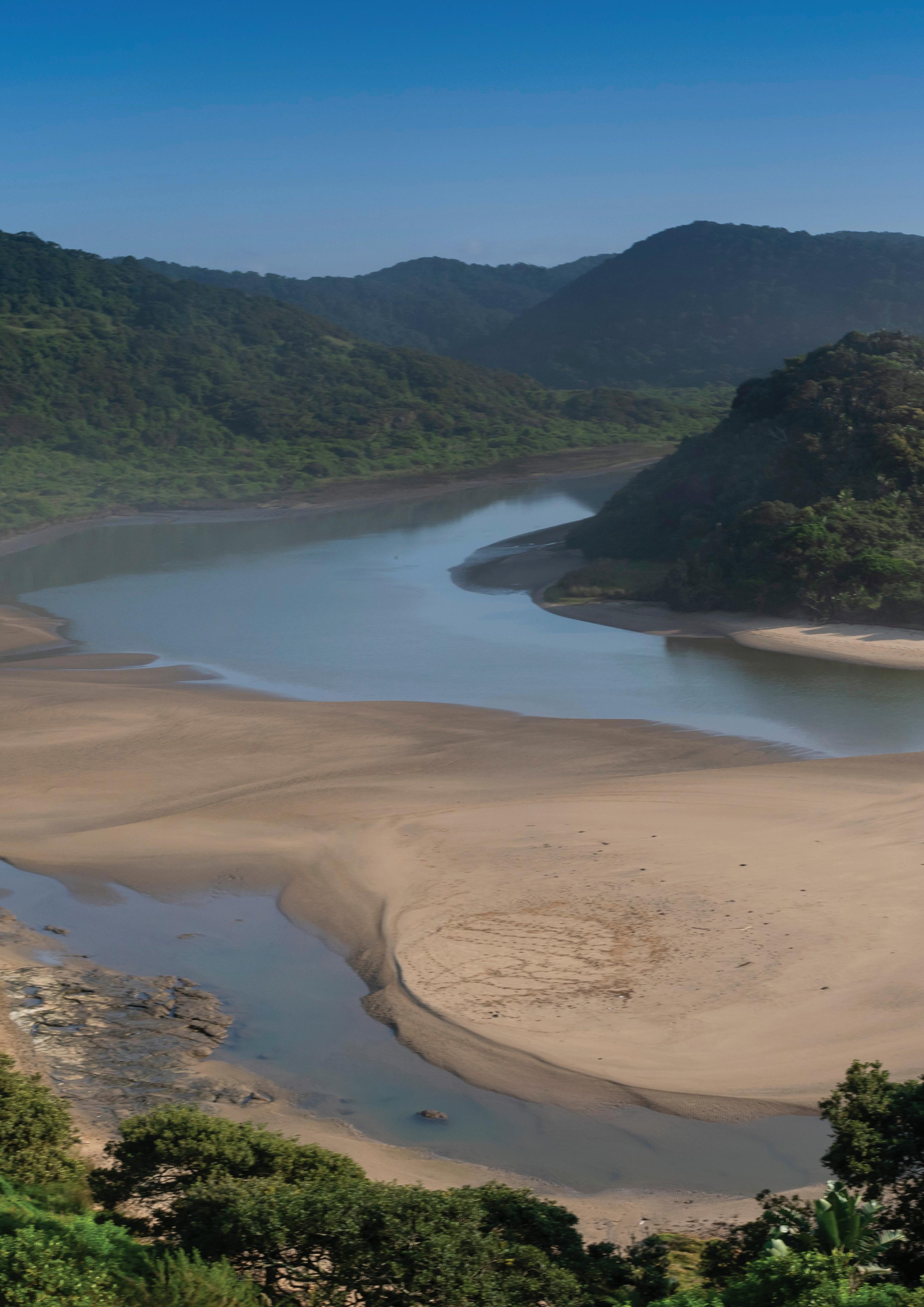
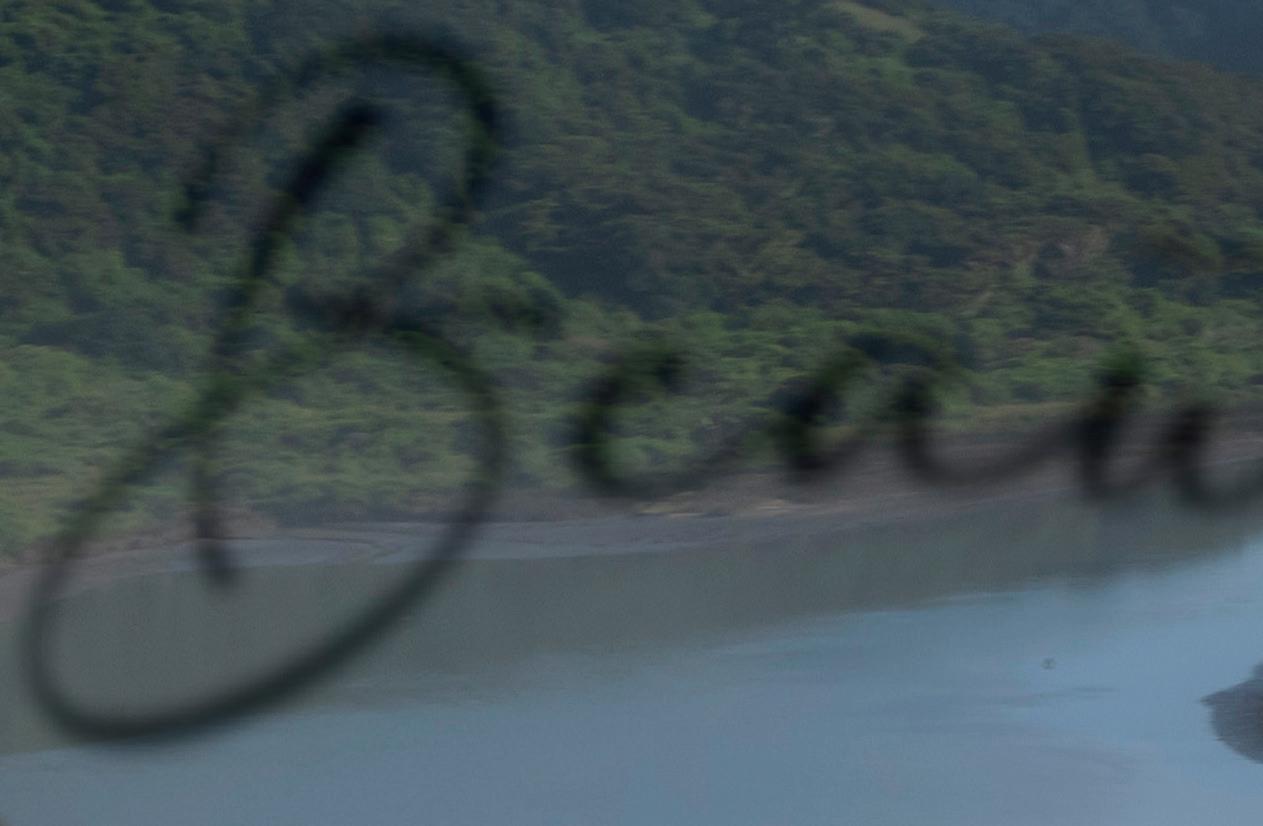
The Wild Coast is calling—pristine nature, exciting adventure, rich culture and unforgettable memories await
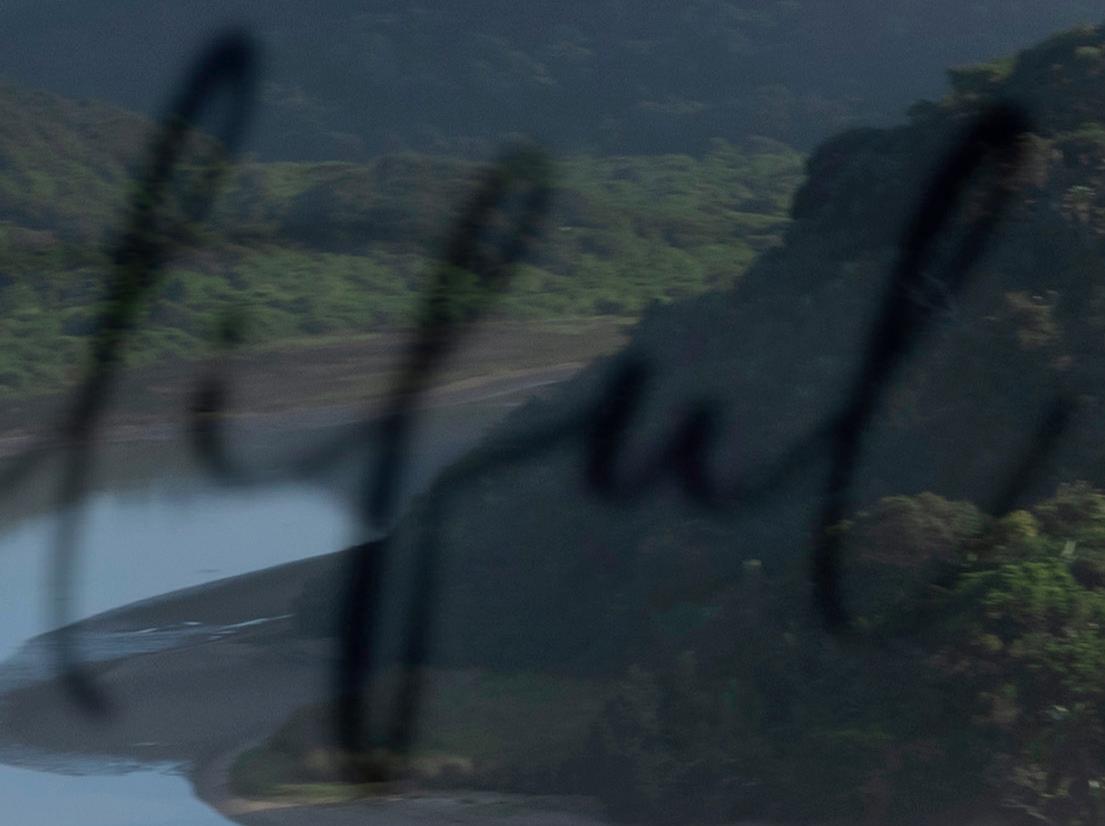
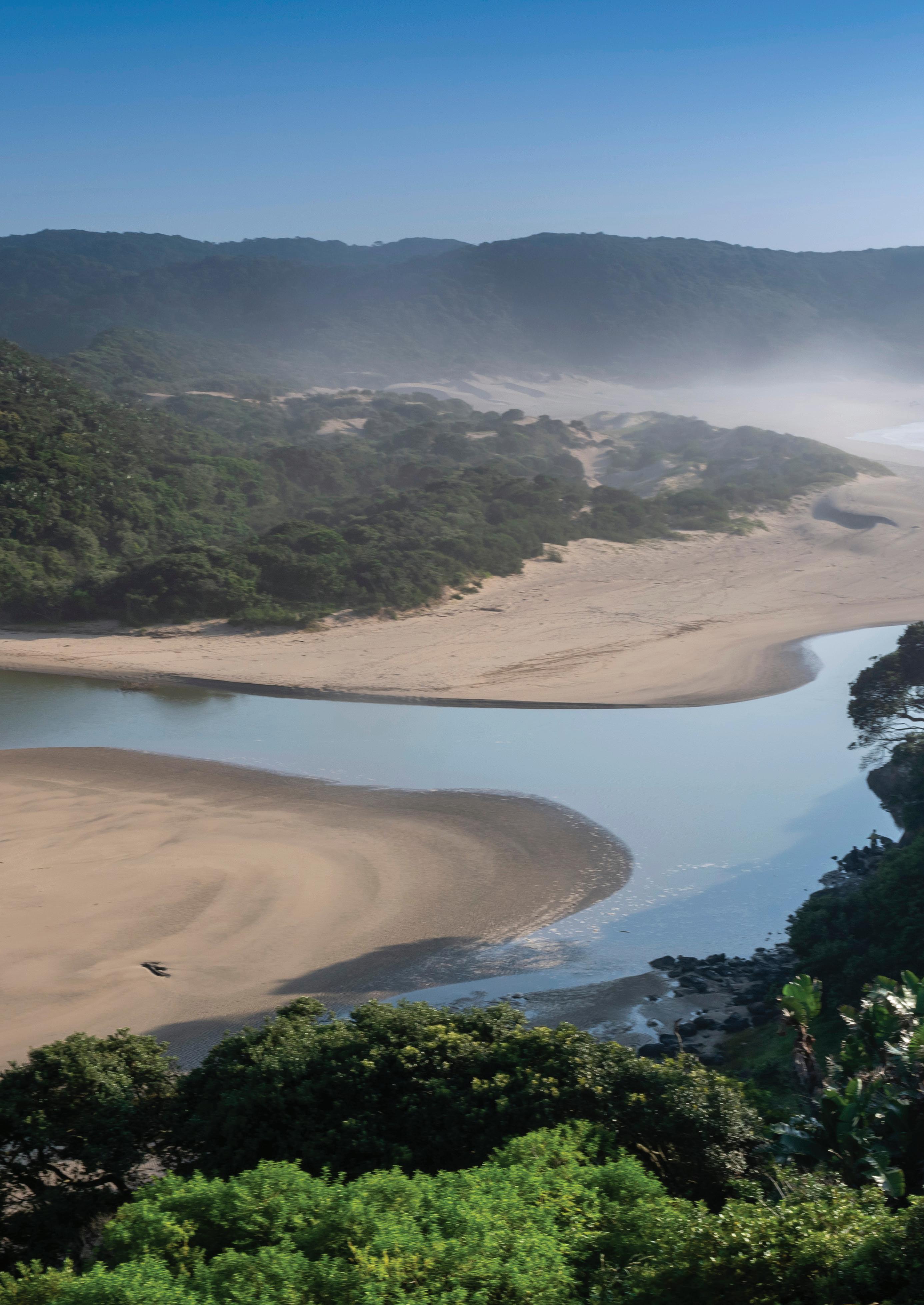
Known as the “Jewel of the Wild Coast”, Port St. Johns is an ideal base for exploring the region.
The Wild Coast of South Africa, stretching along the Eastern Cape, is a hidden gem that embodies the spirit of adventure and the allure of unspoilt landscapes. This rugged coastline is home to pristine beaches, dramatic cliffs and vibrant local culture.
From the charming town of Port St. Johns to the tranquil shores of Mazeppa Bay, each destination along this enchanting coast offers unique experiences that captivate travellers.
Located between the Umtata and Umzimvubu Rivers, Port St. Johns is often regarded as the heart of the Wild Coast. This quaint town is famous for its breathtaking scenery, characterised by lush hillsides and stunning beaches. Known as the “Jewel of the Wild Coast”, Port St. Johns is an ideal base for exploring the region.
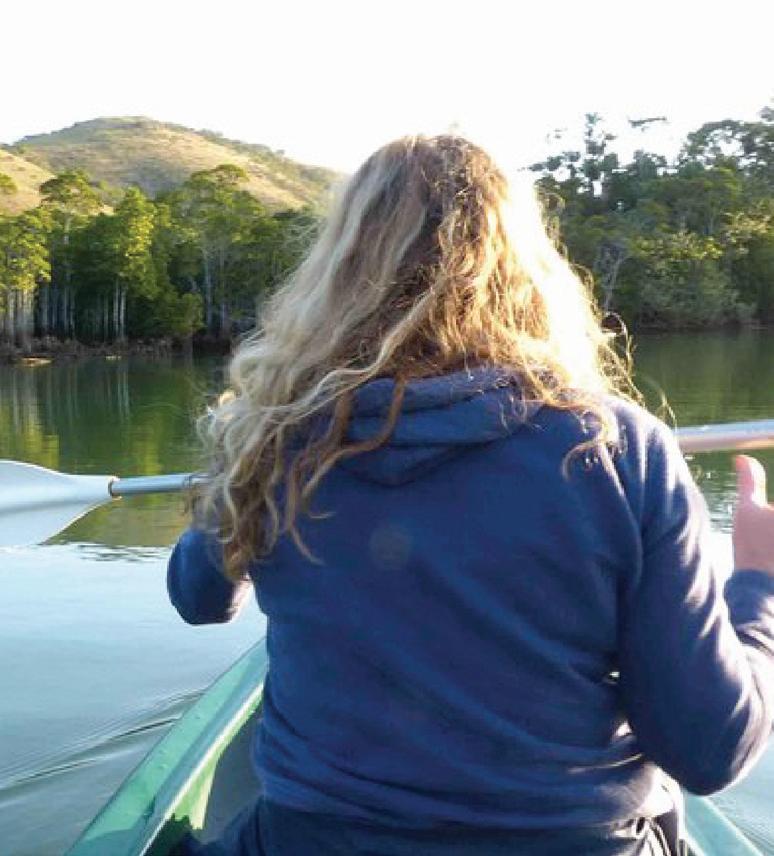
The highlight of any visit here is a hike to the iconic Second Beach, which offers stunning views of the coastline and the opportunity to spot dolphins frolicking in the waves. It’s not advised to swim here, however, as there have been quite a few shark attacks.
For the more adventurous, there are numerous trails leading to nearby waterfalls and viewpoints, providing a chance to immerse yourself in the region’s rich biodiversity.
Port St. Johns also serves as a hub for various activities. From fishing and kayaking to whale watching, there’s no shortage of adventures waiting for you.
The town attracts anglers from all over, offering a chance to connect with locals and experience the vibrant fishing culture that thrives in this coastal community. The ocean teems with game fish, the rivers abound with grunter, shad, skipjack and kingfish, while the inland waters produce huge rainbow trout.
Just a short drive from Port St. Johns, Coffee Bay is a haven for surfers and beach lovers alike. This laid-back village boasts some of the most consistent surf breaks on the Wild Coast, making it a popular destination for both novice and experienced surfers. The pristine beaches, framed by rocky cliffs and lush greenery, provide the perfect backdrop for a day of riding the waves.
One of the must-visit spots in Coffee Bay is the famous Hole in the Wall, a natural rock formation that
The famous Hole in the Wall is a natural rock formation that stands as a testament to the power of the ocean “
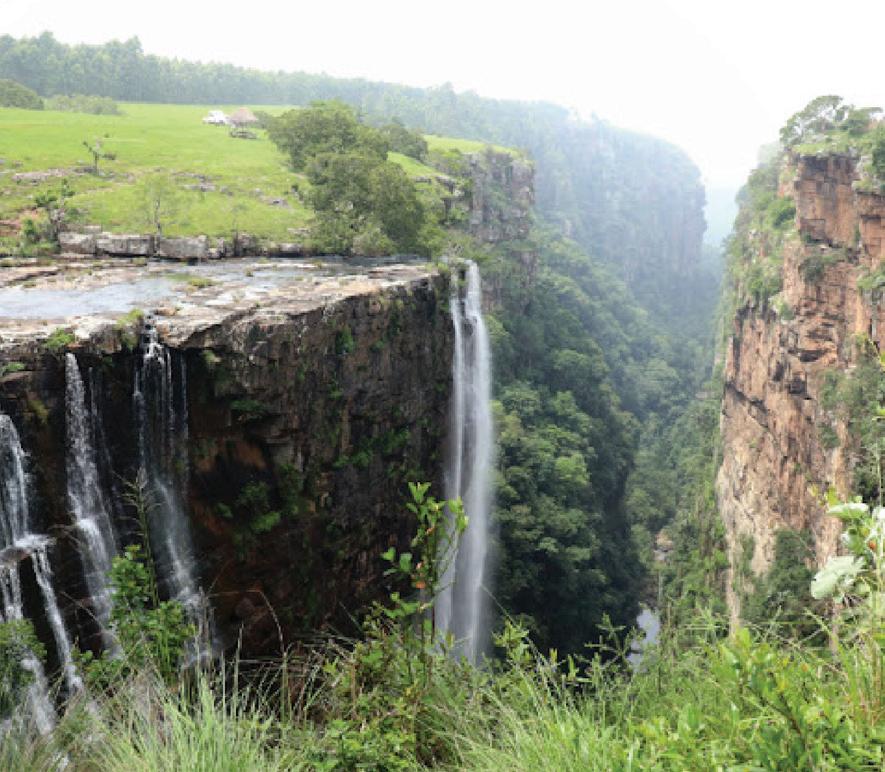
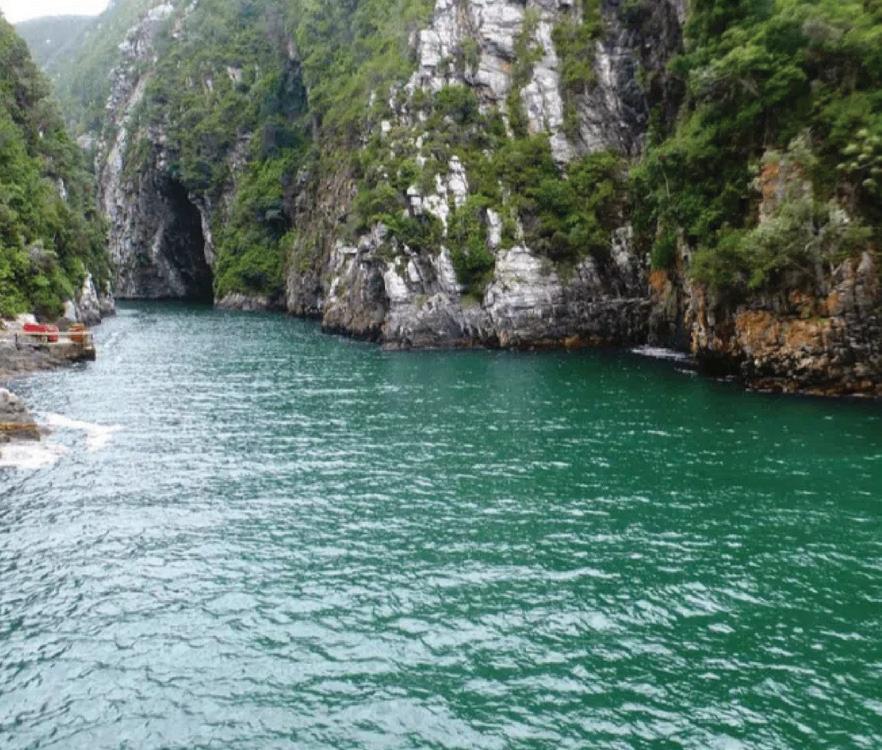
stands as a testament to the power of the ocean. Legend has it that this formation is a gateway to the spirit world, and a hike to this stunning landmark is both a spiritual and visual journey.
The surrounding area is rich in cultural heritage, with opportunities to engage with local Xhosa communities and learn about their traditions and way of life.
As the sun sets over Coffee Bay, the vibrant atmosphere comes alive. Beachfront bars and restaurants serve delicious local cuisine, including fresh seafood and traditional Xhosa dishes.
Enjoy a cold beer or a cocktail while soaking in the stunning views, and perhaps even catch some live music that reflects the local culture.
A little further south, Chintsa (or Cintsa) offers a different experience—a serene escape from the hustle and bustle of everyday life. Known for its long stretches of unspoilt beach and tranquil lagoon, Chintsa is perfect for those seeking relaxation and natural beauty. The area is rich in birdlife, making it a popular spot for birdwatchers and
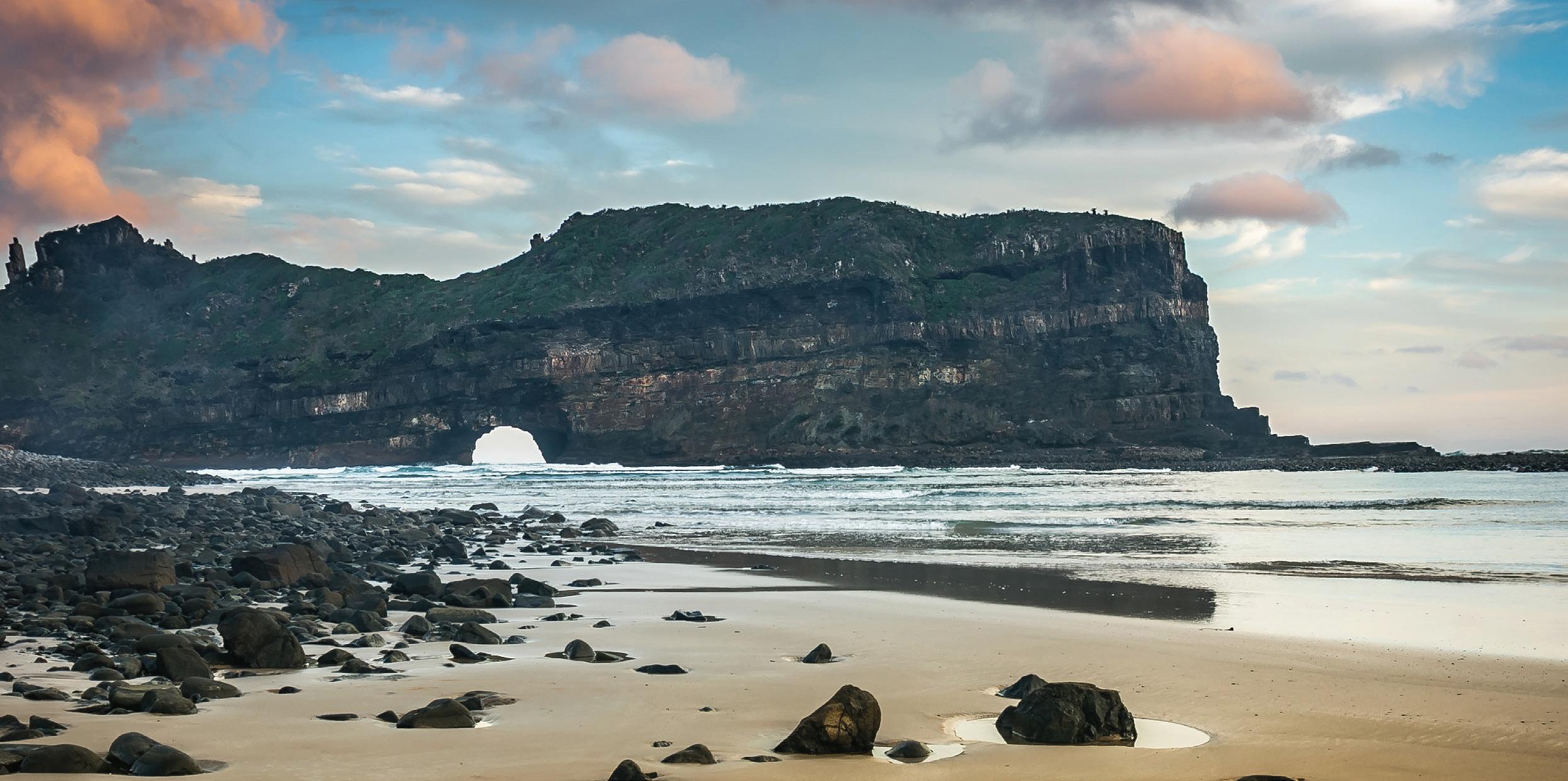
nature lovers.
Chintsa is also home to several ecofriendly accommodations that blend seamlessly with the environment, providing a comfortable yet sustainable experience.
Spend your days lounging on the beach, exploring the nearby dunes or taking a leisurely canoe ride on the lagoon. The calm waters are perfect for families and those looking to unwind in nature.
For the more adventurous, hiking trails wind through the lush coastal vegetation, offering breathtaking views of the ocean and the surrounding landscapes. The area’s biodiversity is a highlight, with various plant and animal species waiting to be discovered.
Morgan’s Bay is a small coastal village that exudes charm and tranquility. This hidden gem is famous for its stunning beach, which stretches for miles and offers opportunities for swimming, fishing and hiking. The idyllic setting makes it a perfect spot for families, or couples looking for a romantic getaway.
One of the highlights of Morgan’s Bay is the iconic Morgan’s Bay cliffs, which provide dramatic views of the Indian Ocean.
A hike along the cliffs leads to secluded coves and pristine beaches, perfect for a picnic or a quiet moment to take in the scenery. The cliffs are
also a great spot for birdwatching, as various species can be seen soaring above the waves.
The village itself boasts a relaxed atmosphere, with friendly locals and cosy accommodations. Traditional eateries serve delicious home-cooked meals, showcasing the region’s culinary delights. Don’t miss the opportunity to savour freshly caught fish, a staple of the local diet.
As you continue along the coast, Mazeppa Bay awaits—often considered one of the Wild Coast’s best-kept secrets. This tranquil spot is known for its breathtaking landscapes including pristine beaches, rocky outcrops and the famous Mazeppa Island, which can be accessed at low tide.
Mazeppa Bay is ideal for those looking to escape the crowds. The area is perfect for fishing, with a variety of species found in the waters off the coast. Fishing charters are available for those eager to cast a line and enjoy a day on the ocean.
The beach at Mazeppa Bay is a stunning stretch of sand, perfect for sunbathing or leisurely walks along the shore. The scenery is complemented by dramatic sunsets that paint the sky in vibrant hues, providing a perfect backdrop for reflection and relaxation.
The local community is known for its warm hospitality, and visitors often
leave with lasting memories of the people they meet. Engaging with the Xhosa culture here offers insight into the traditions and lifestyles of the people who call this beautiful region home.
Travelling along South Africa’s Wild Coast is not just about visiting beautiful places; it’s about embracing the spirit of adventure and connecting with nature. Whether you’re exploring the rugged cliffs of Port St. Johns, catching waves in Coffee Bay or basking in the tranquility of Mazeppa Bay, each destination offers a unique experience that showcases the region’s incredible diversity.
For those willing to venture off the beaten path, the Wild Coast rewards with breathtaking beauty, rich culture and unforgettable memories.
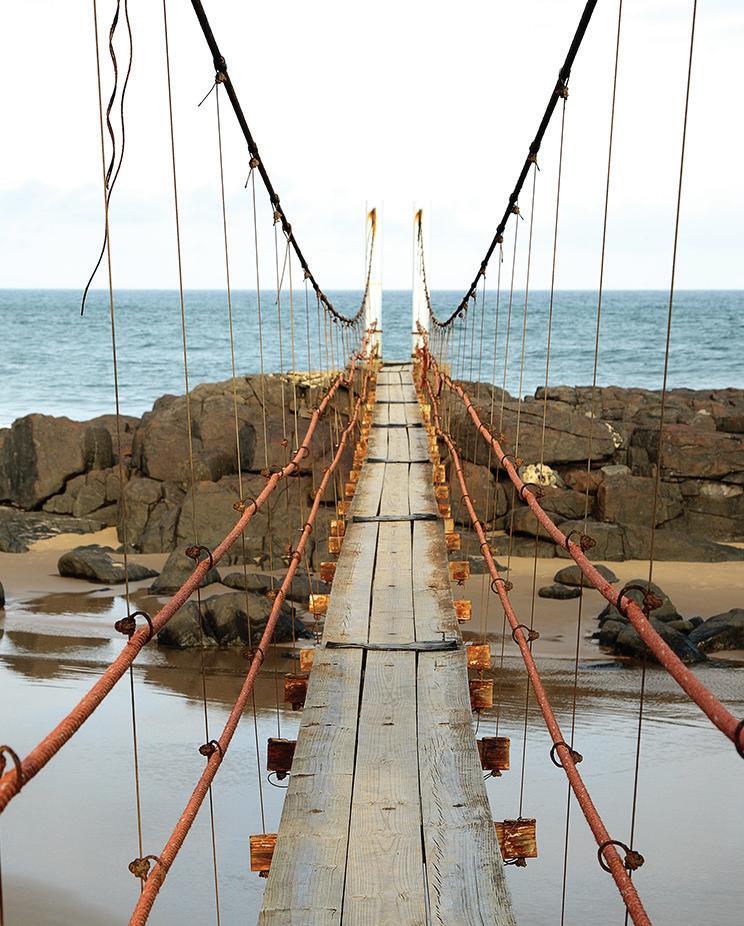
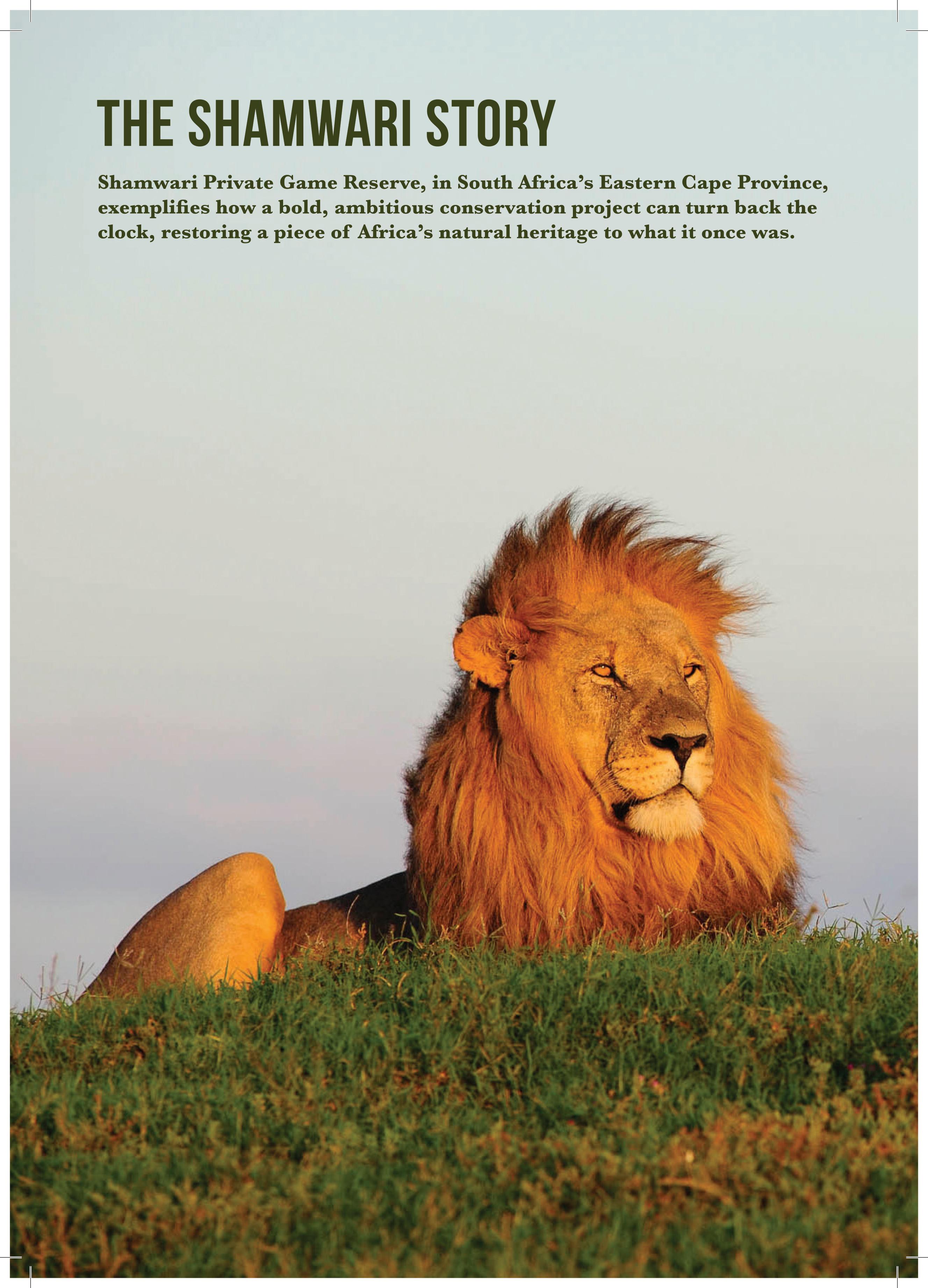

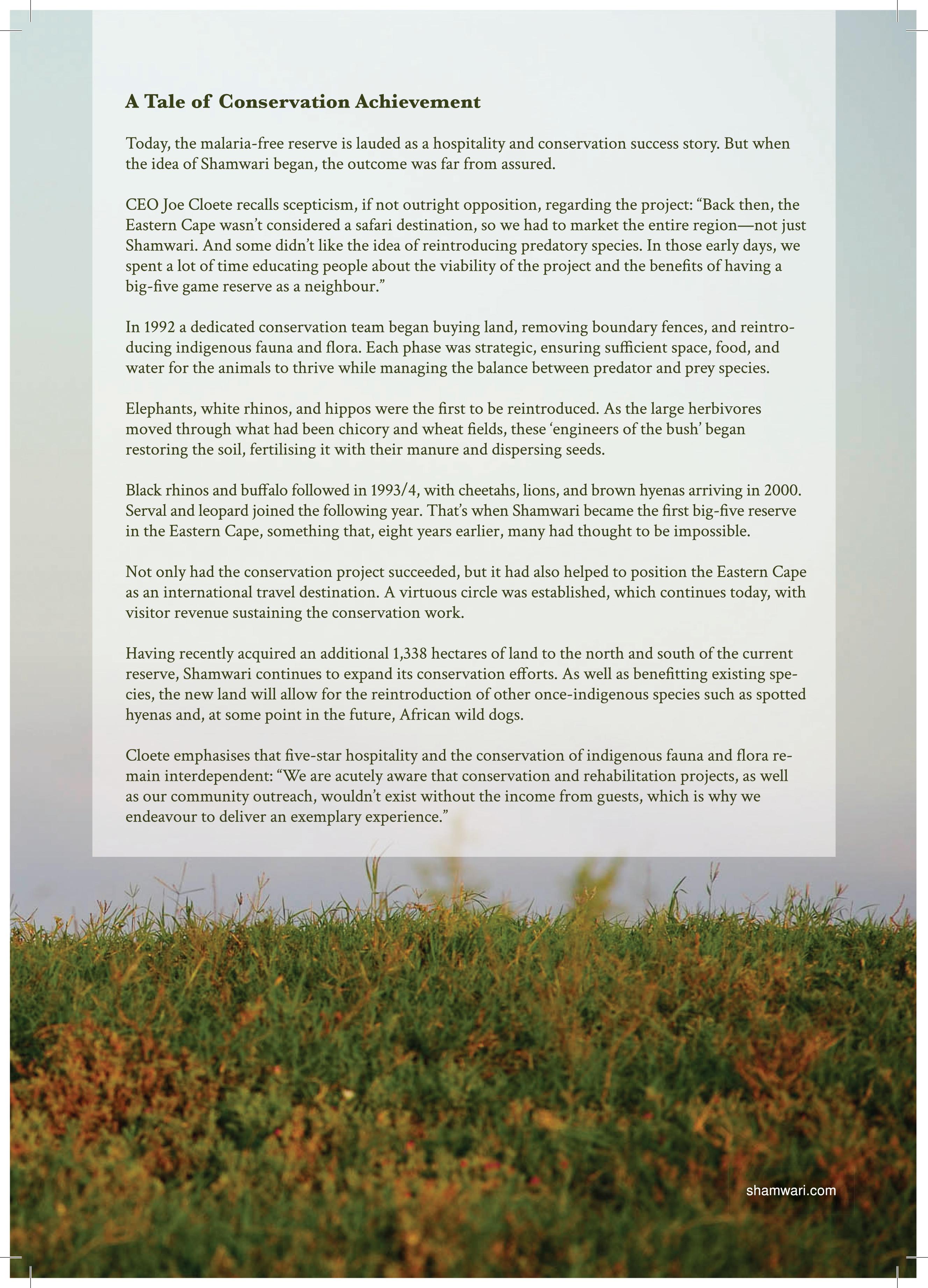












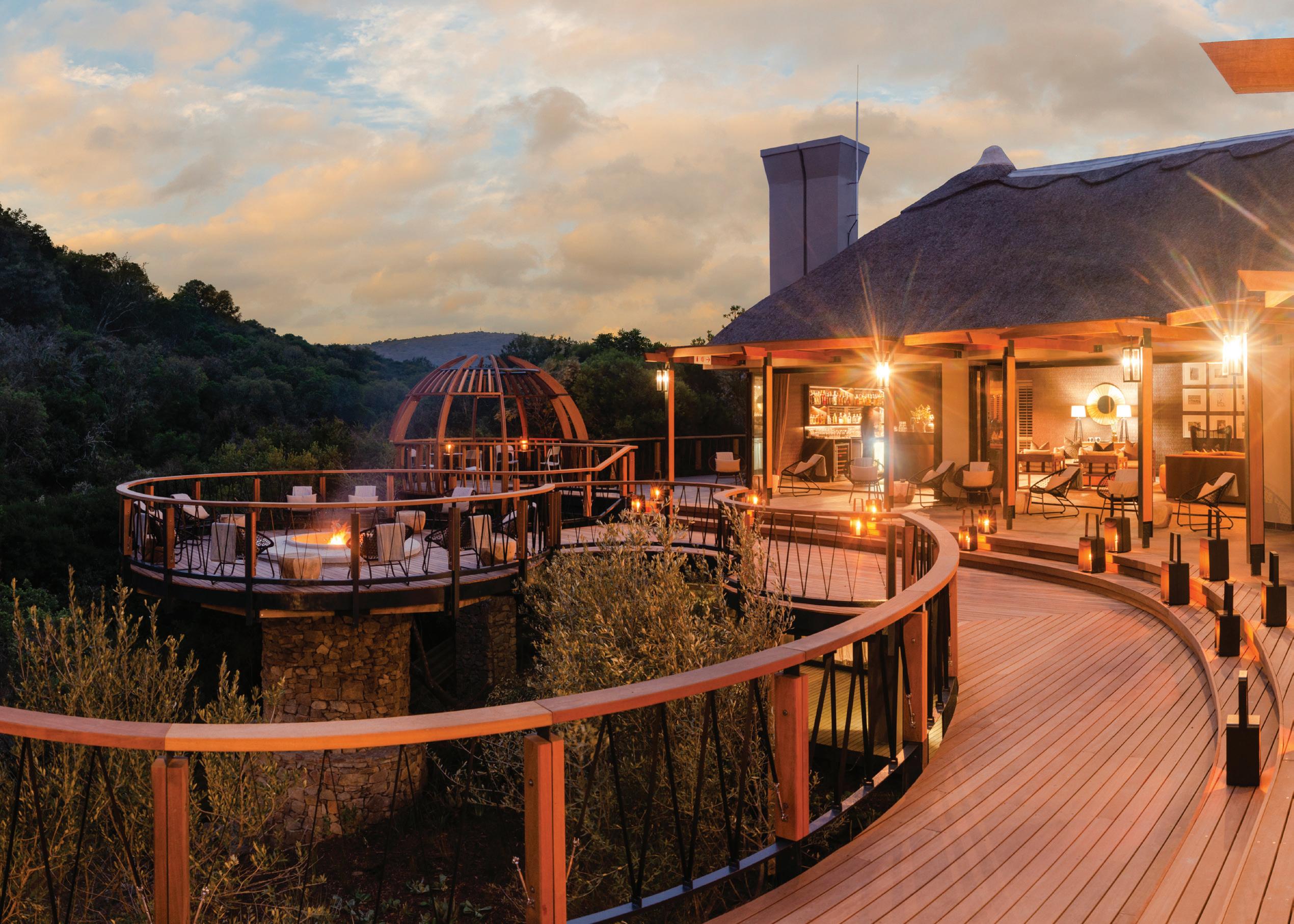

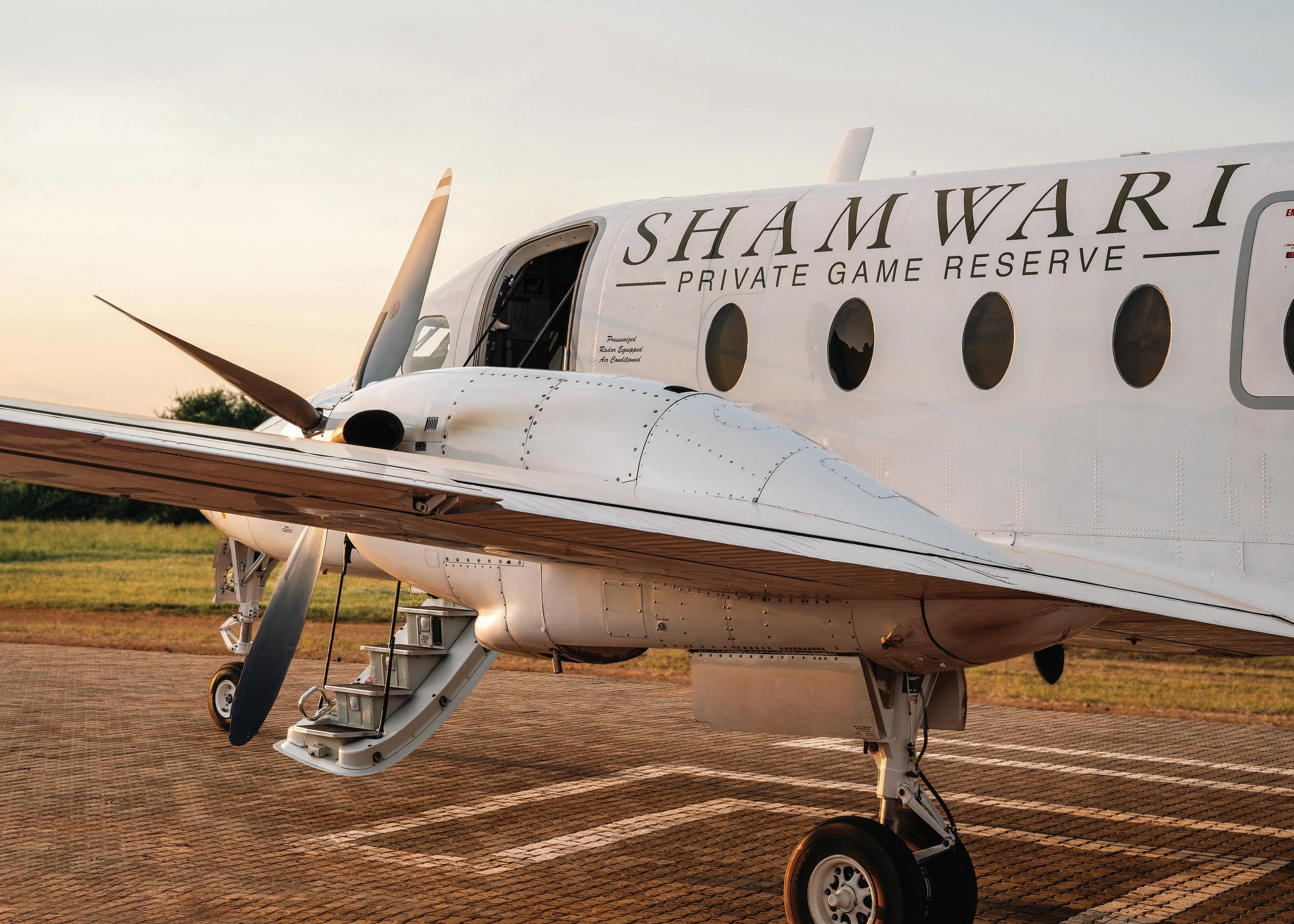

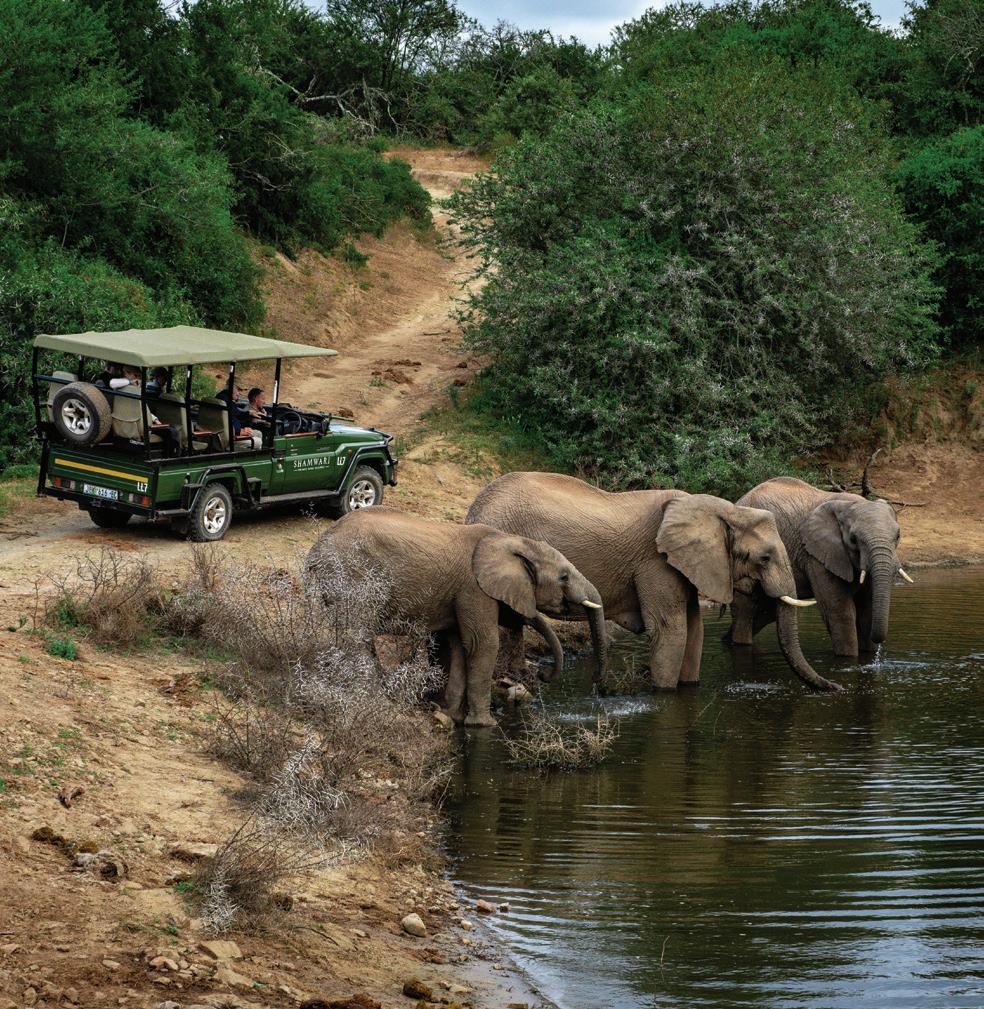
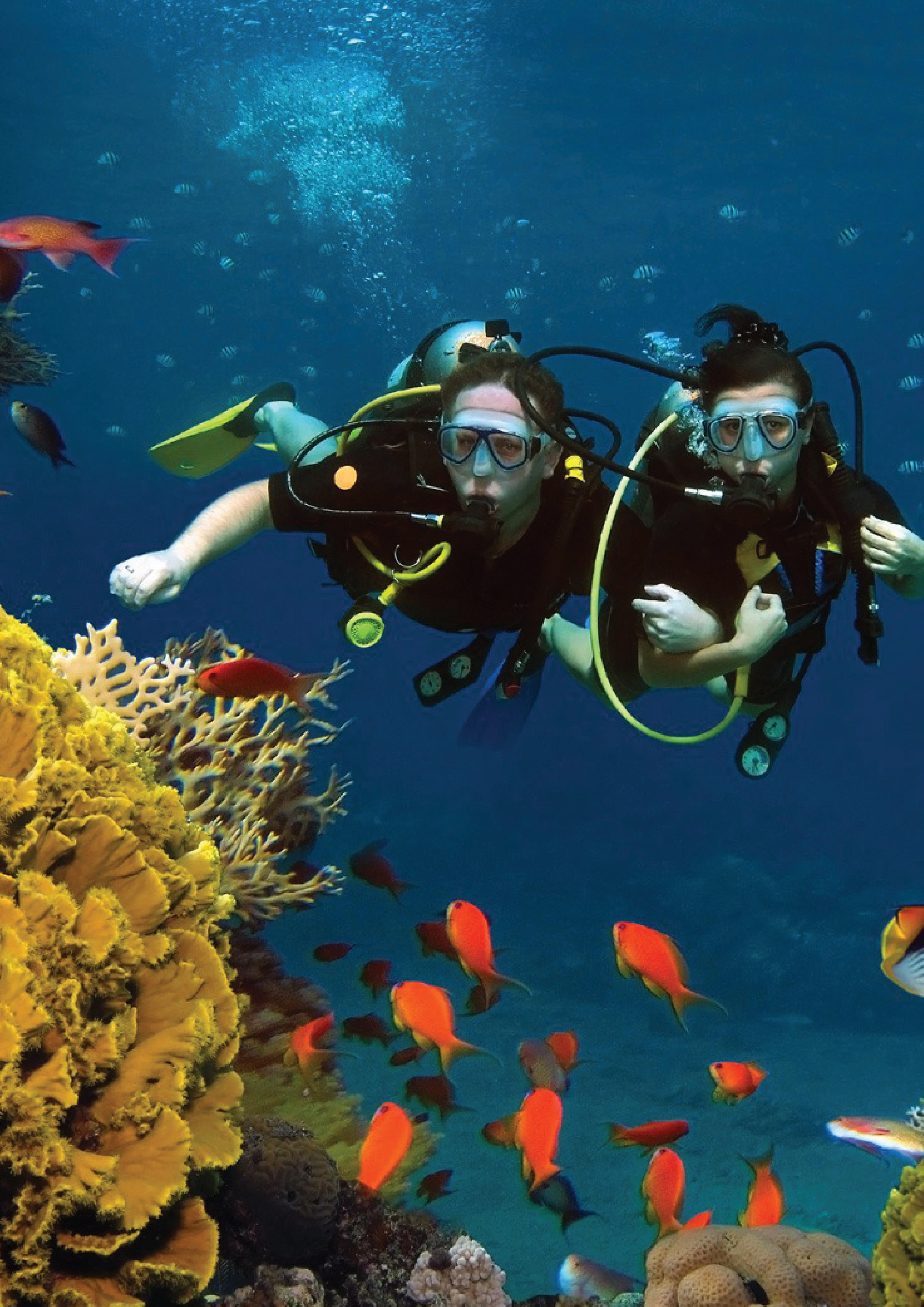

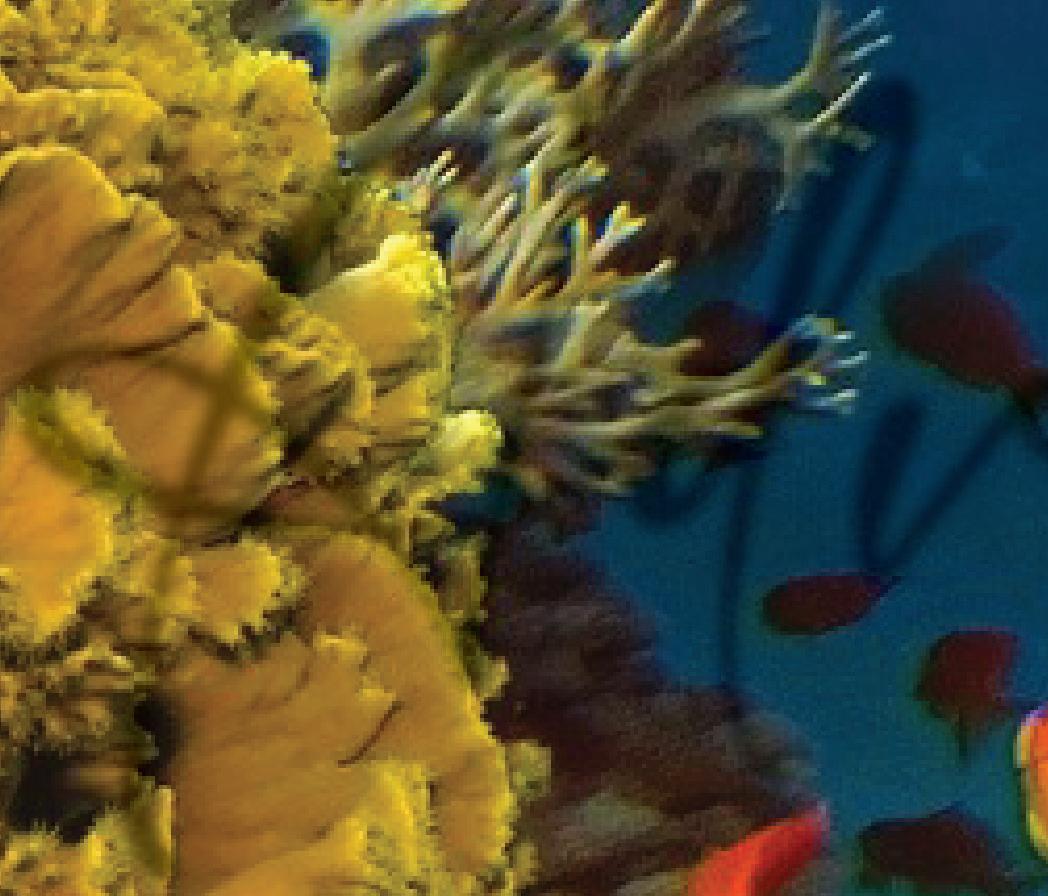
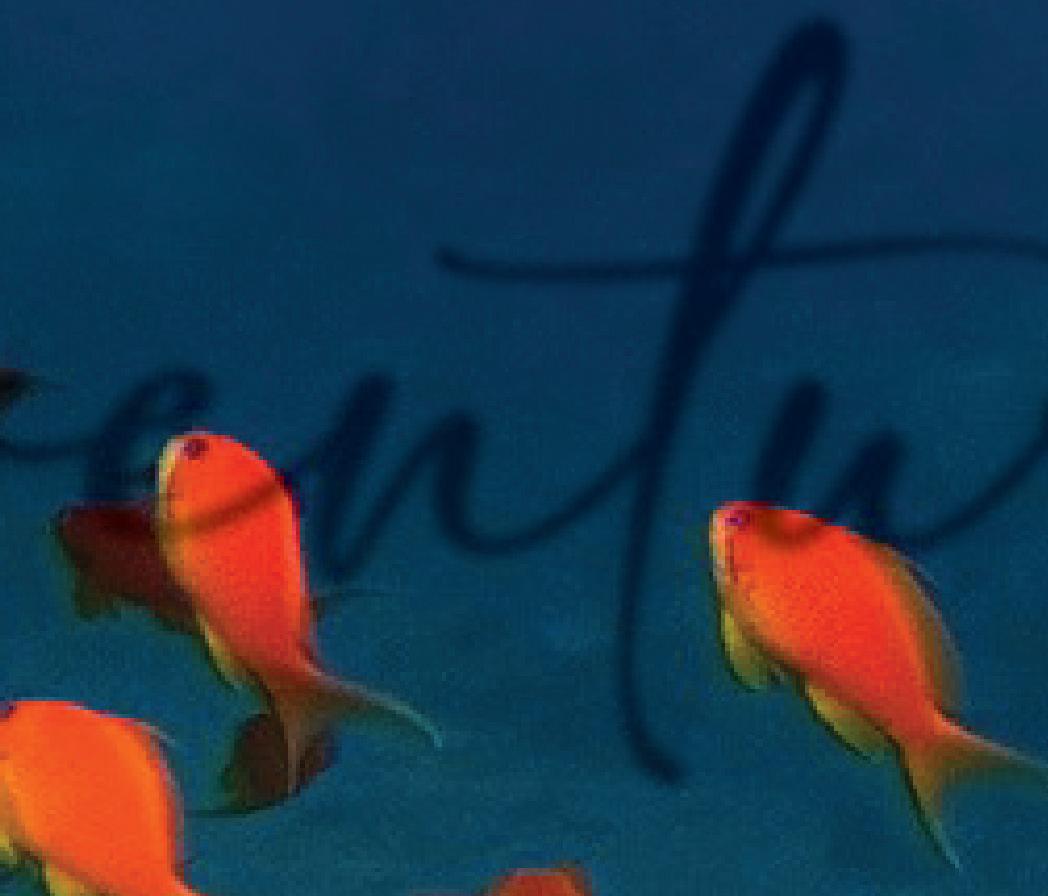
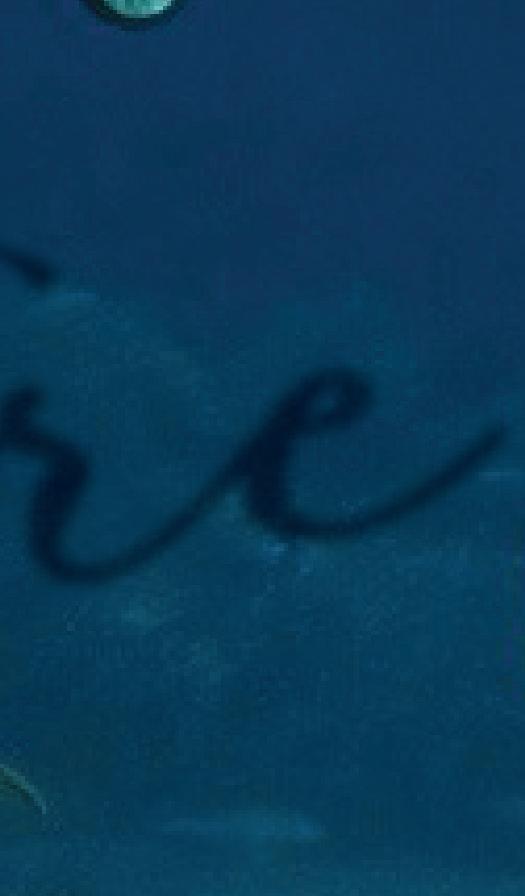
Let’s take a deep dive into Sodwana Bay on the KZN Elephant Coast, and immerse ourselves in its crystal-clear waters and vibrant coral reefs
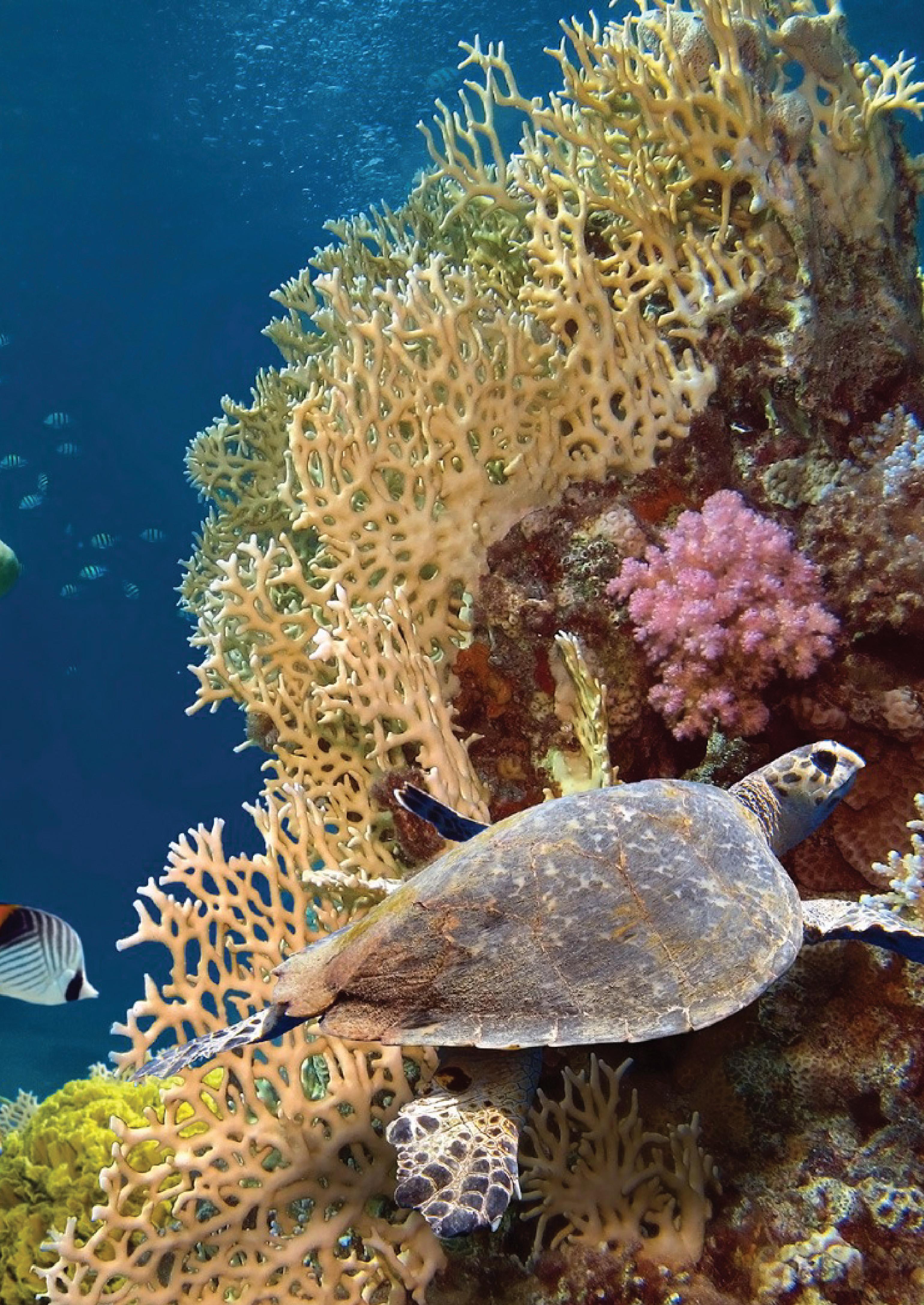
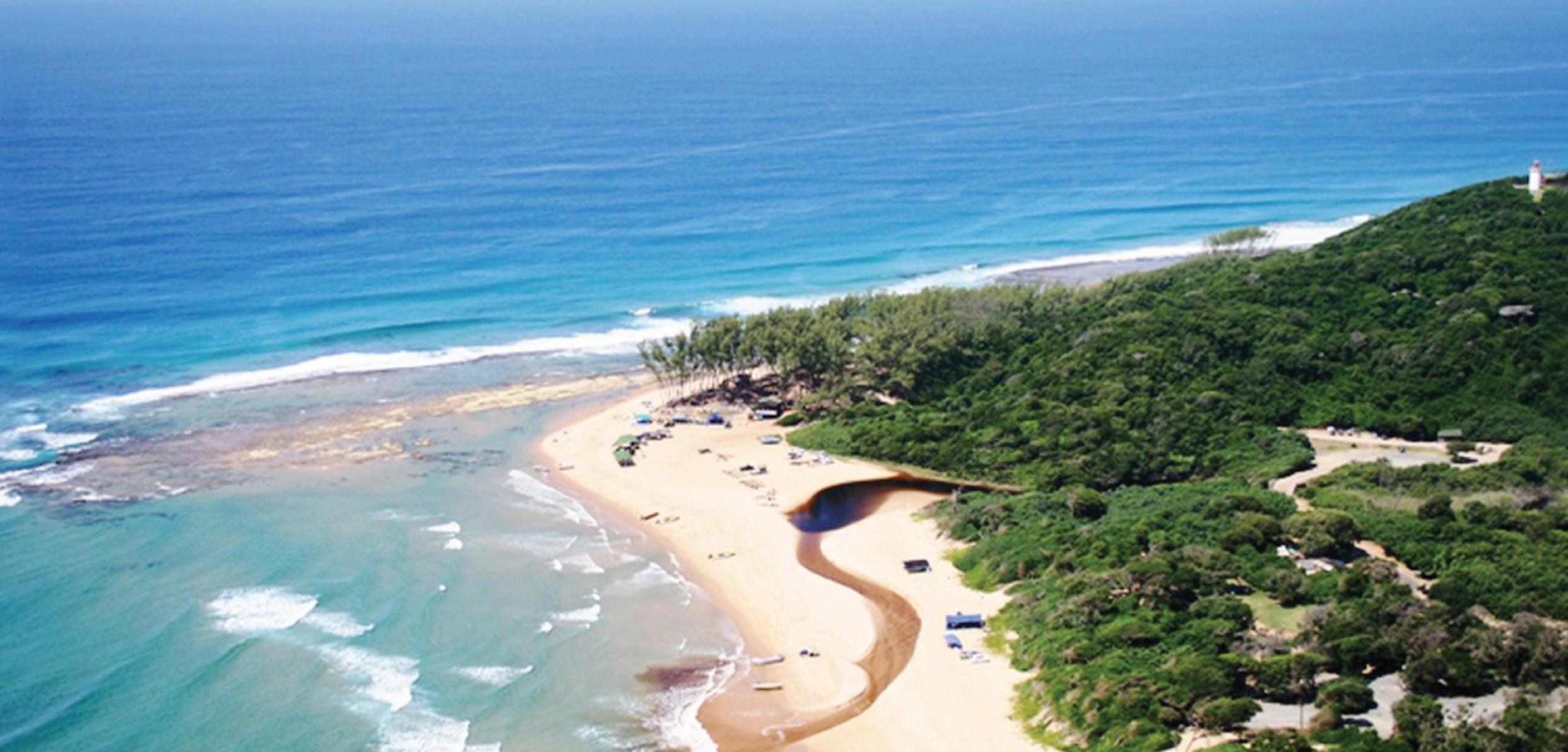
Along the northeastern coast of South Africa, you’ll find the Elephant Coast: a paradise for nature lovers and adventure seekers alike. This stunning region, which encompasses the iSimangaliso Wetland Park World Heritage Site, boasts some of the most breathtaking landscapes and biodiversity in the country.
Among its many treasures, Sodwana Bay stands out as a premier destination for ocean activities, making it a must-visit for travellers seeking both relaxation and adventure.
Sodwana Bay is renowned for its crystal-clear waters, vibrant coral reefs and abundant marine life, making it one of the top scuba-diving spots in the world. Located within the iSimangaliso Wetland Park, this coastal gem offers a unique combination of stunning natural beauty and exhilarating water activities.
The bay’s warm waters are home to a rich tapestry of marine ecosystems. With over 1 200 species of fish and numerous species of coral, Sodwana Bay provides divers and snorkellers with the chance to explore a vibrant underwater world teeming with life. Whether you’re a seasoned diver or a beginner, Sodwana Bay offers an array of experiences tailored to suit all skill levels.
Diving in Sodwana Bay is often
described as a magical experience. The bay is known for its diverse dive sites, each with its own unique features and attractions. One of the most popular sites is the 2 Mile Reef, a breathtaking underwater paradise where divers can encounter colourful reef fish, turtles and even the occasional dolphin or shark.
For those new to diving, numerous dive schools offer lessons and guided dives. Certified instructors ensure a safe and enjoyable experience while providing insights into the local marine environment. Many dive operators also offer equipment rentals, making it easy for travellers to dive without the hassle of bringing their own gear.
In addition to reef diving, Sodwana Bay is famous for its seasonal diving excursions to view the majestic ragged-tooth sharks, which are often spotted between June and September. This thrilling experience is not only about the adrenaline rush but also about understanding these fascinating creatures and their role in the marine ecosystem.
If diving isn’t your preference, Sodwana Bay offers fantastic snorkelling opportunities that allow visitors to explore the beauty of the underwater world without the need for scuba gear. The warm, shallow waters are perfect for families and beginners, providing an accessible way to enjoy the vibrant marine life.
Several snorkelling tours operate from the beach, taking participants to the best spots for observing colourful fish and coral formations. The experience of floating above a bustling reef, watching clownfish darting between anemones and majestic rays gliding beneath you, is nothing short of enchanting.
Sodwana Bay’s lagoons and tidal pools also offer safe environments for children to discover marine life. These natural aquariums provide an opportunity for kids to get up close and personal with starfish, sea urchins and various shellfish, making it an educational adventure for the whole family.
If diving isn’t your preference, For those looking to explore the waters at a more leisurely pace, kayaking and stand-up paddleboarding (SUP) are fantastic options. Paddling along the shoreline offers a unique perspective of the bay and its stunning surroundings. You may even spot dolphins gamboling in the distance or enjoy the serene beauty of the landscape from the water.
Local outfitters offer kayak rentals and guided tours, allowing visitors to paddle through the mangroves and estuaries that surround Sodwana Bay. This eco-friendly activity provides an intimate connection with nature and an opportunity to observe the rich birdlife that inhabits the area.

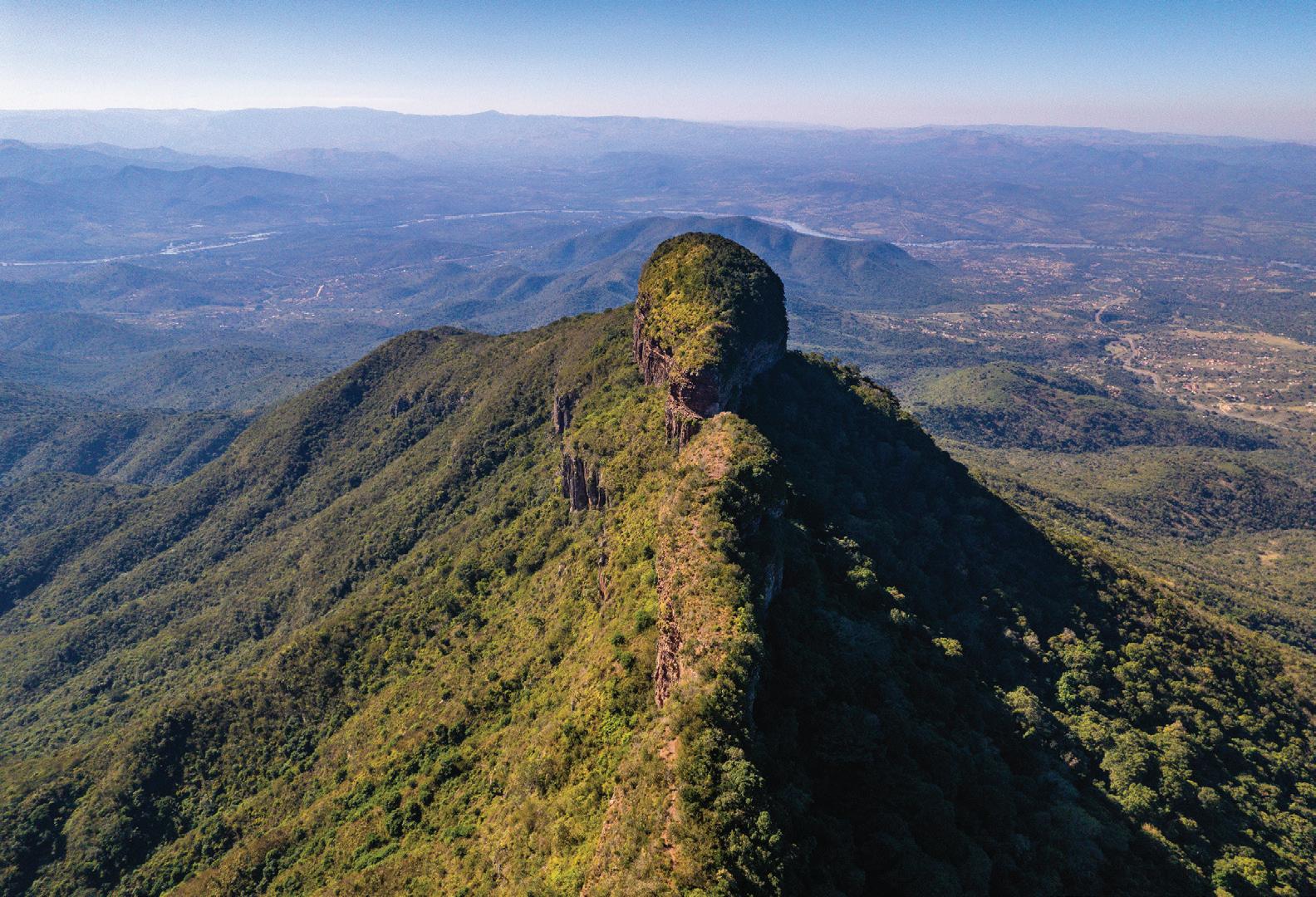


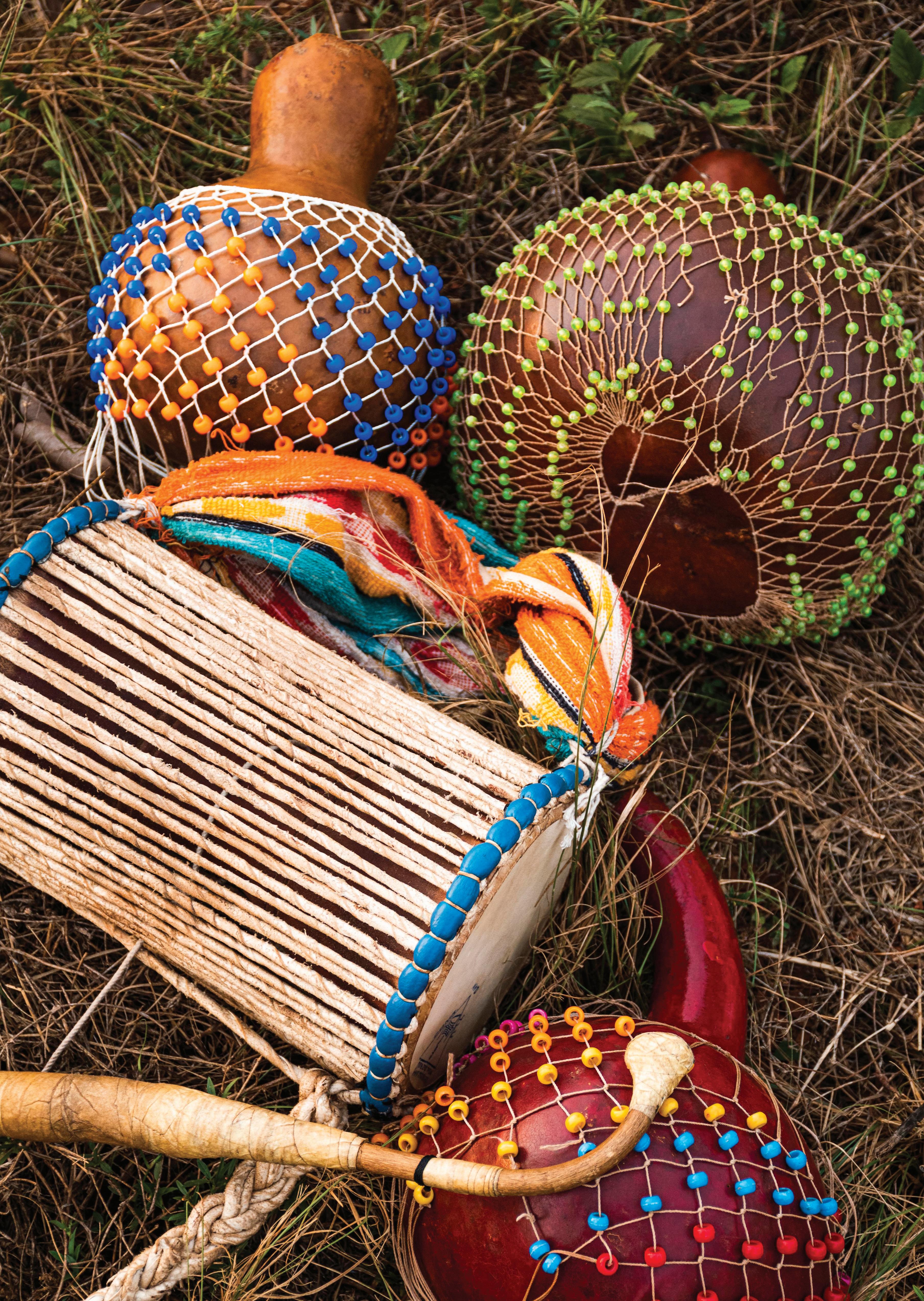

Sodwana Bay is also a popular destination for sport fishing enthusiasts. The waters off the coast are home to a variety of game fish including marlin, tuna and dorado. Many fishing charters operate from the bay, providing equipment and expert guidance for both novice and experienced anglers.
Charter operators often offer half-day or full-day fishing trips, which can include both inshore and offshore fishing. The thrill of reeling in a big catch while surrounded by the stunning backdrop of the Indian Ocean is an experience that should not be missed.


While the ocean activities in Sodwana Bay are undoubtedly thrilling, the area offers plenty of opportunities to simply relax and soak up the sun. The pristine beaches are perfect for lounging, picnicking or taking long walks along the shore.
The soft white sands and gentle waves create a serene environment, ideal for unwinding after a day of adventure. Whether you choose to read a book under the shade of a palm tree or take a dip in the warm waters, the beach at Sodwana Bay is a slice of paradise.
As a part of the iSimangaliso Wetland Park, conservation is a crucial aspect of the experience in Sodwana Bay. The area is not only celebrated for its natural beauty but also for its commitment to protecting its diverse ecosystems. Tour operators and local organisations emphasise sustainable practices, ensuring the natural environment is preserved for future generations.
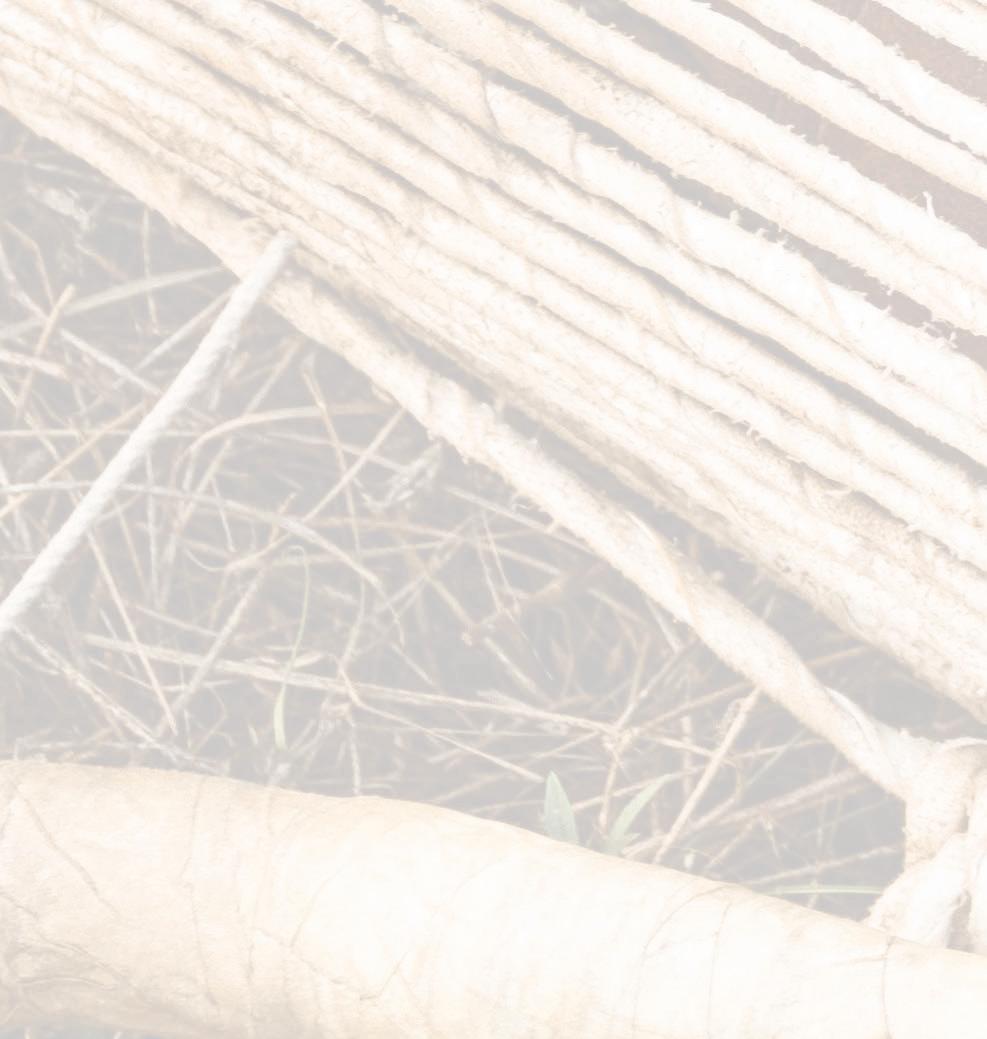

Visitors are encouraged to engage in eco-friendly practices while enjoying the area’s offerings. This includes respecting marine life, not touching corals and using reef-safe sunscreen to protect the delicate underwater ecosystems.
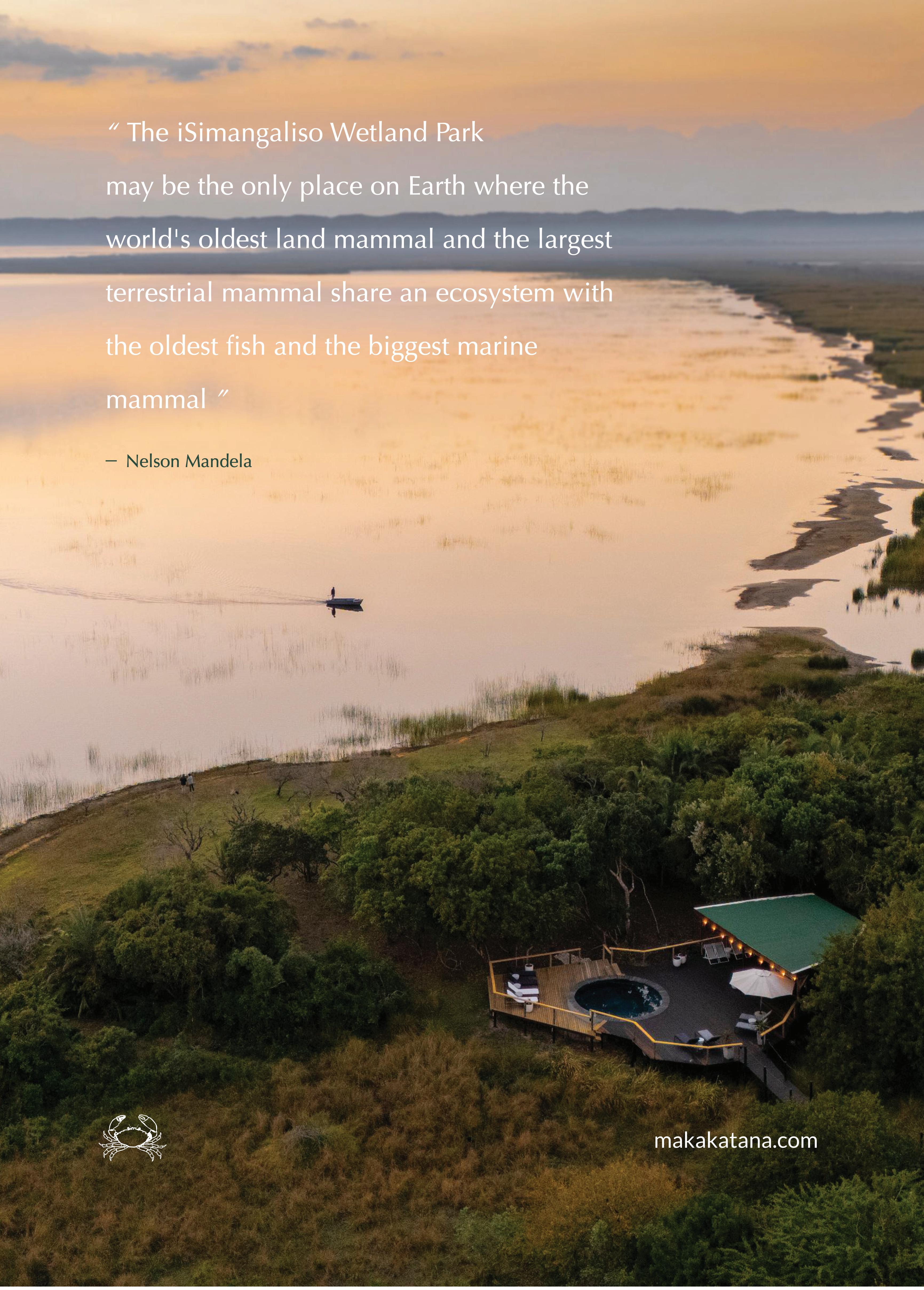

After a day of exploring, visitors to Sodwana Bay can immerse themselves in the local culture and cuisine. The nearby town of St. Lucia offers a range of dining options, from casual beachside cafés to more upscale restaurants. Seafood is a highlight, of course, with freshly caught fish often taking centre stage on the menu.
Local markets showcase the region’s crafts and produce, providing a glimpse into the culture of the Zulu people who inhabit the area. Visitors can find handmade crafts, traditional clothing and delicious local delicacies—making it a great opportunity to take home a piece of the Elephant Coast.
The best time to visit Sodwana Bay is during the dry season, from May to September, when the weather is mild and visibility for diving is excellent. However, the area is beautiful yearround, with each season offering unique experiences.
Accommodations range from luxury lodges to budget-friendly guesthouses, ensuring there’s something for every visitor.
Many options are located right on the beach or within close proximity, making it easy to access the water and enjoy all that Sodwana Bay has to offer.

Sodwana Bay and the surrounding Elephant Coast provide an extraordinary escape into nature’s embrace. With its stunning landscapes, vibrant marine life and thrilling ocean activities, it’s a destination that promises adventure, relaxation and unforgettable memories.
Whether you’re diving into the depths of the Indian Ocean, paddling through tranquil waters or simply soaking up the sun on a pristine beach, Sodwana Bay invites you to experience the magic of South Africa’s coastal paradise.
Embrace the adventure, and let the beauty of the Elephant Coast leave an indelible mark on your heart.


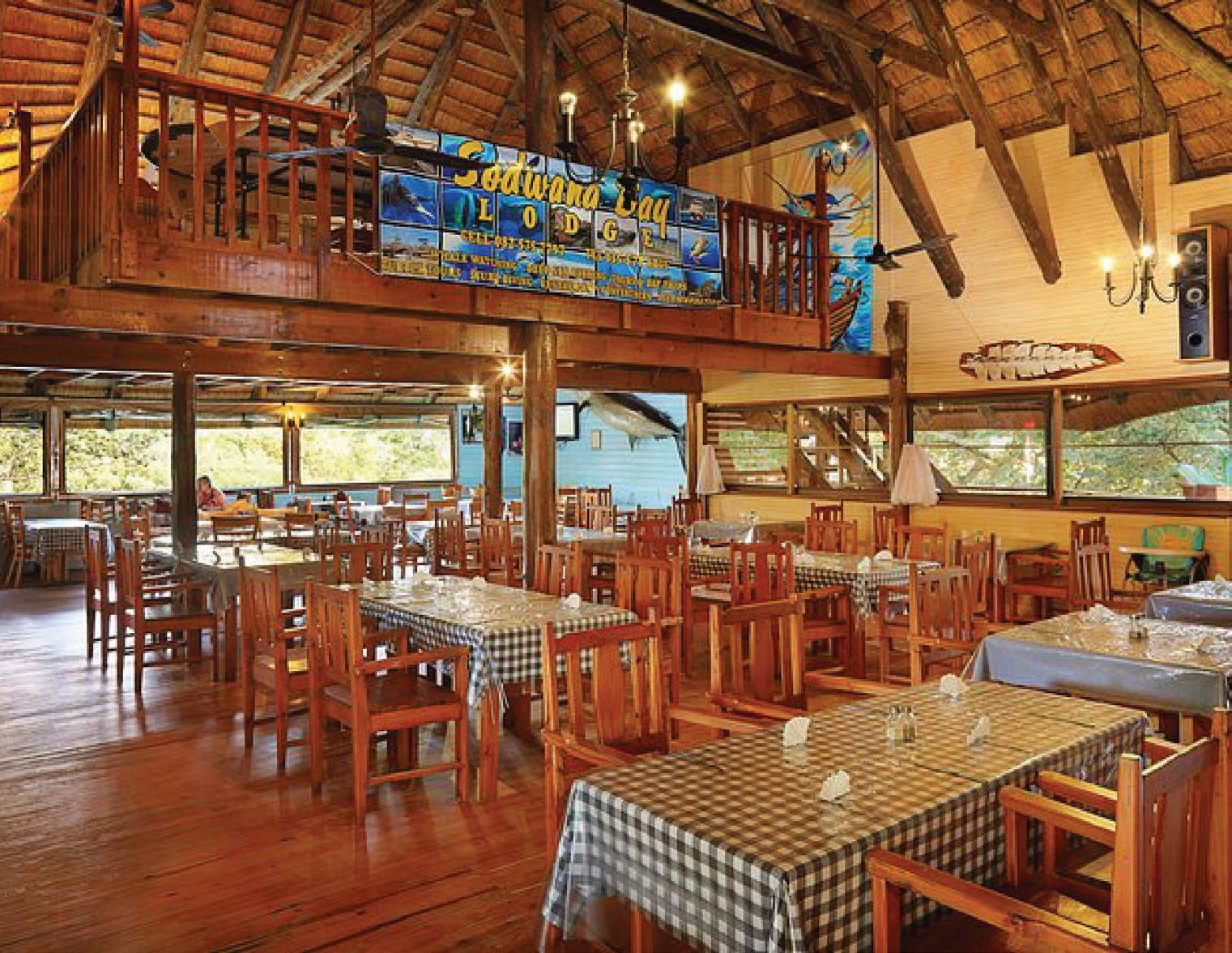




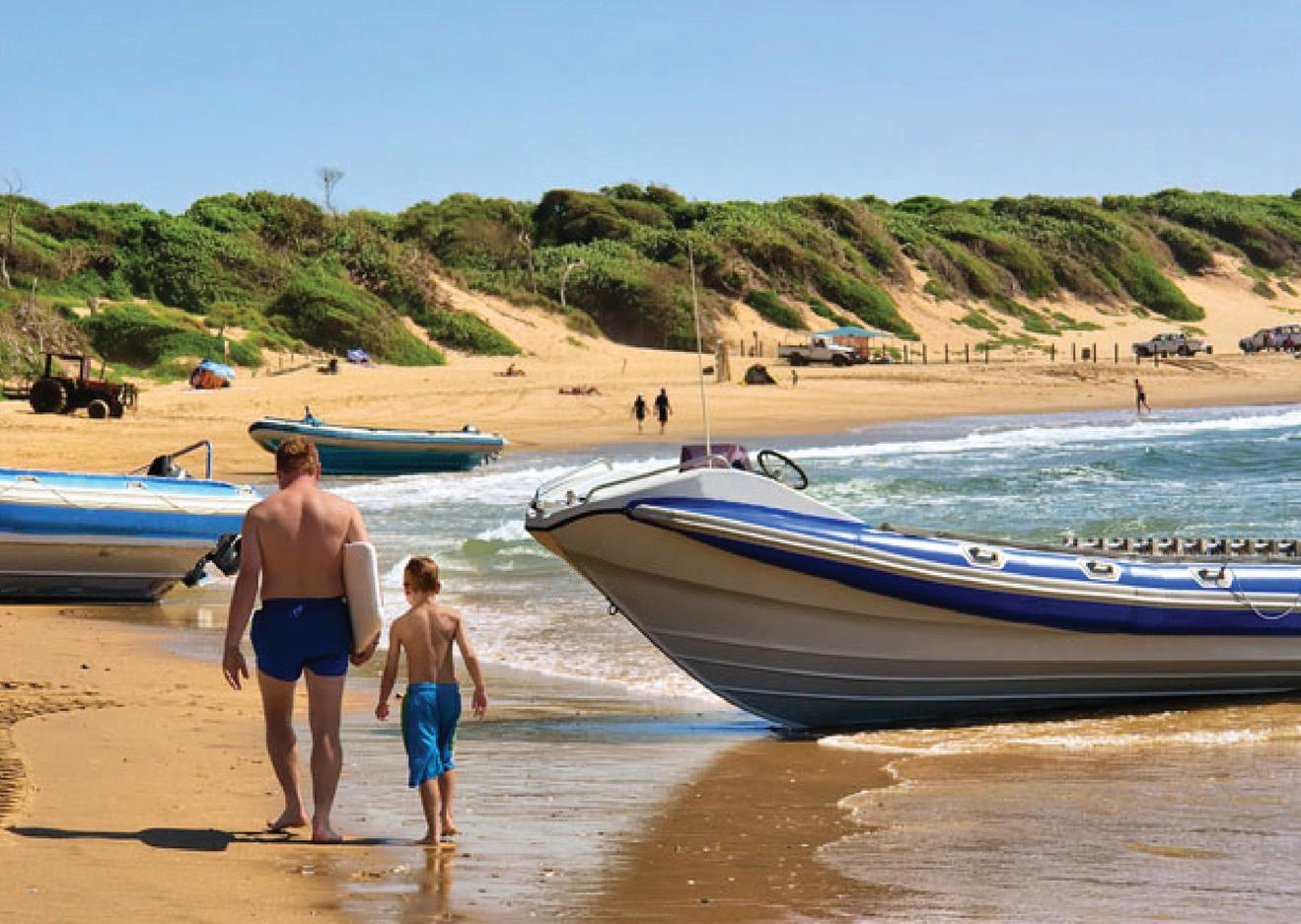







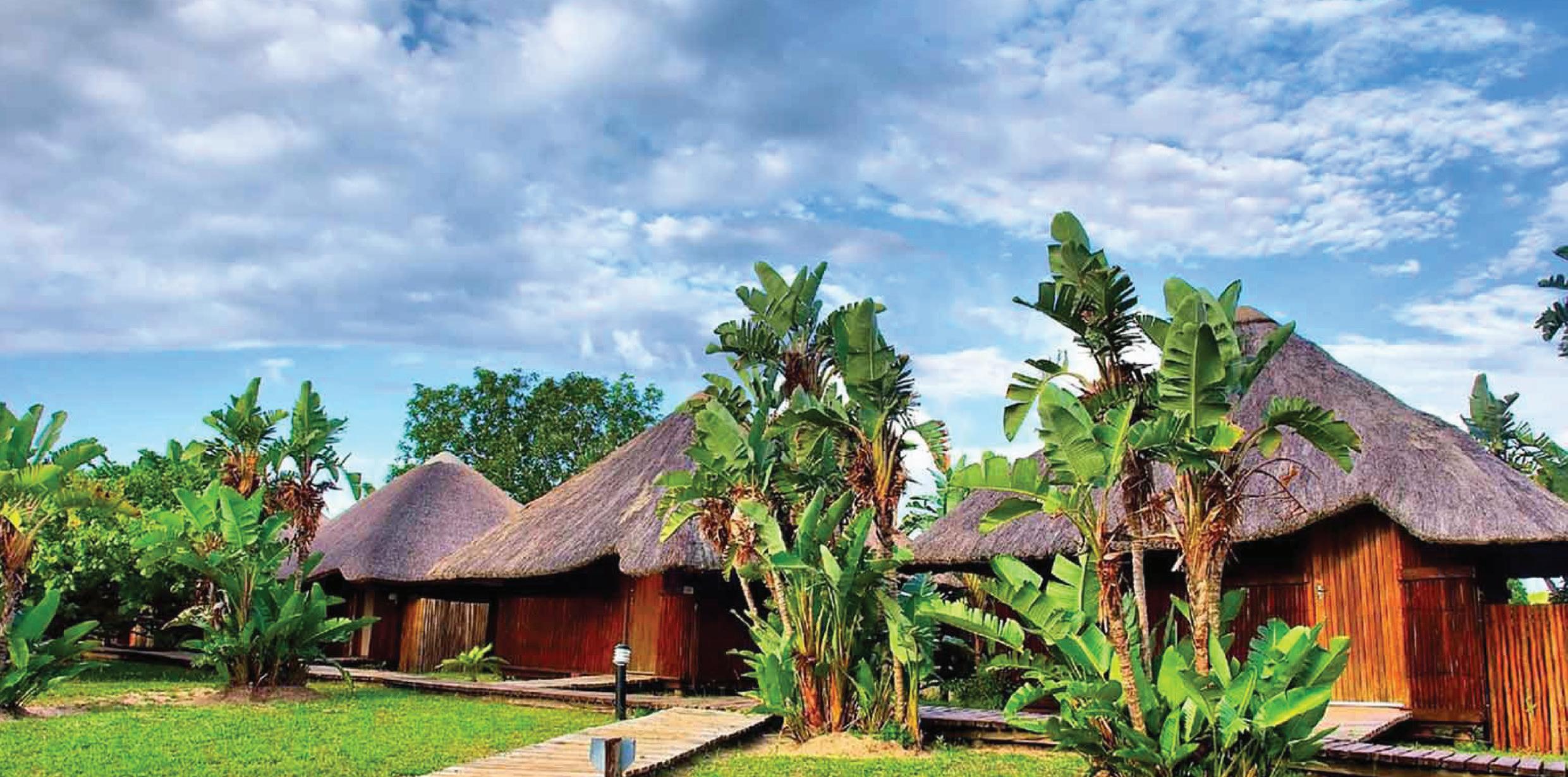
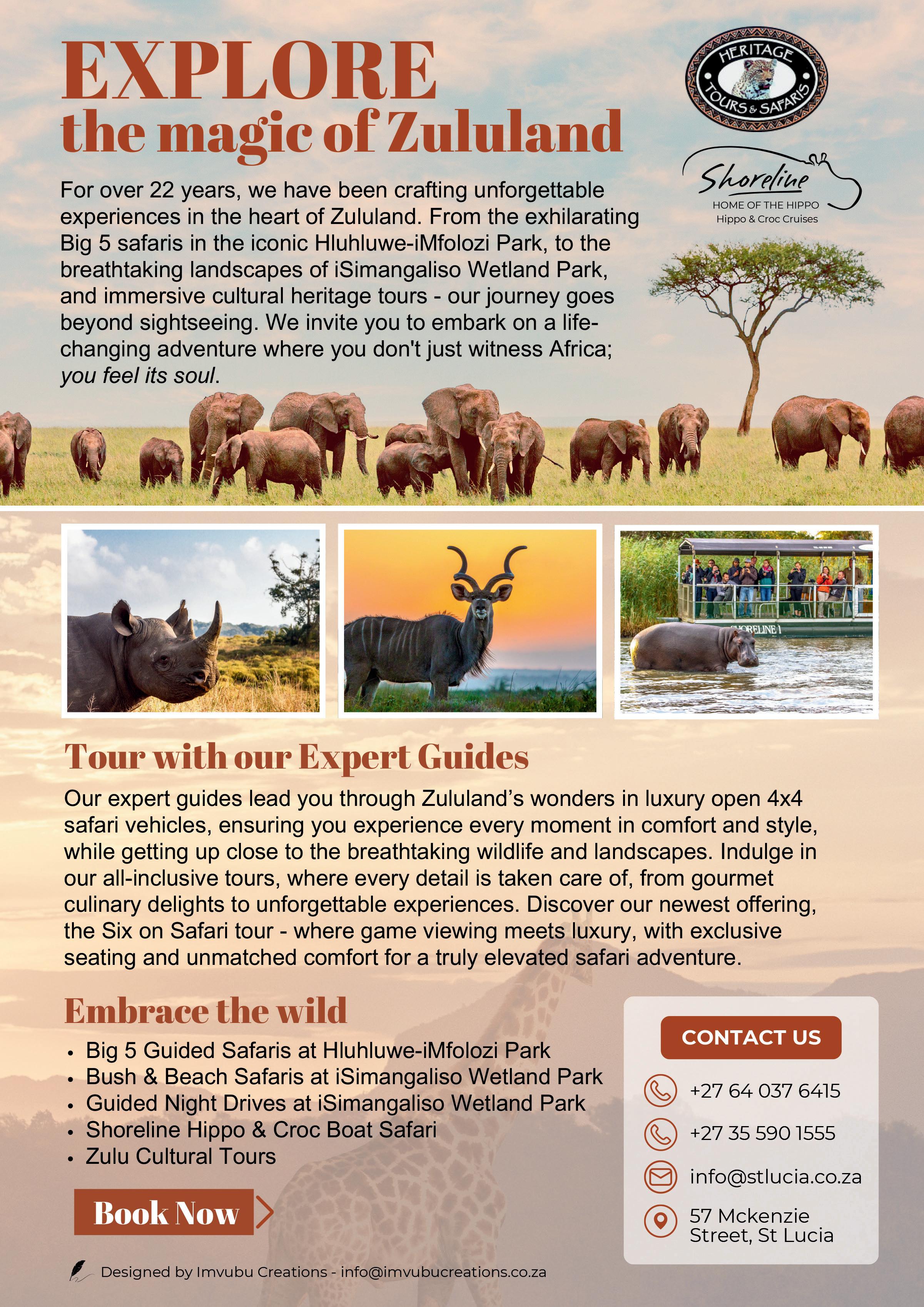
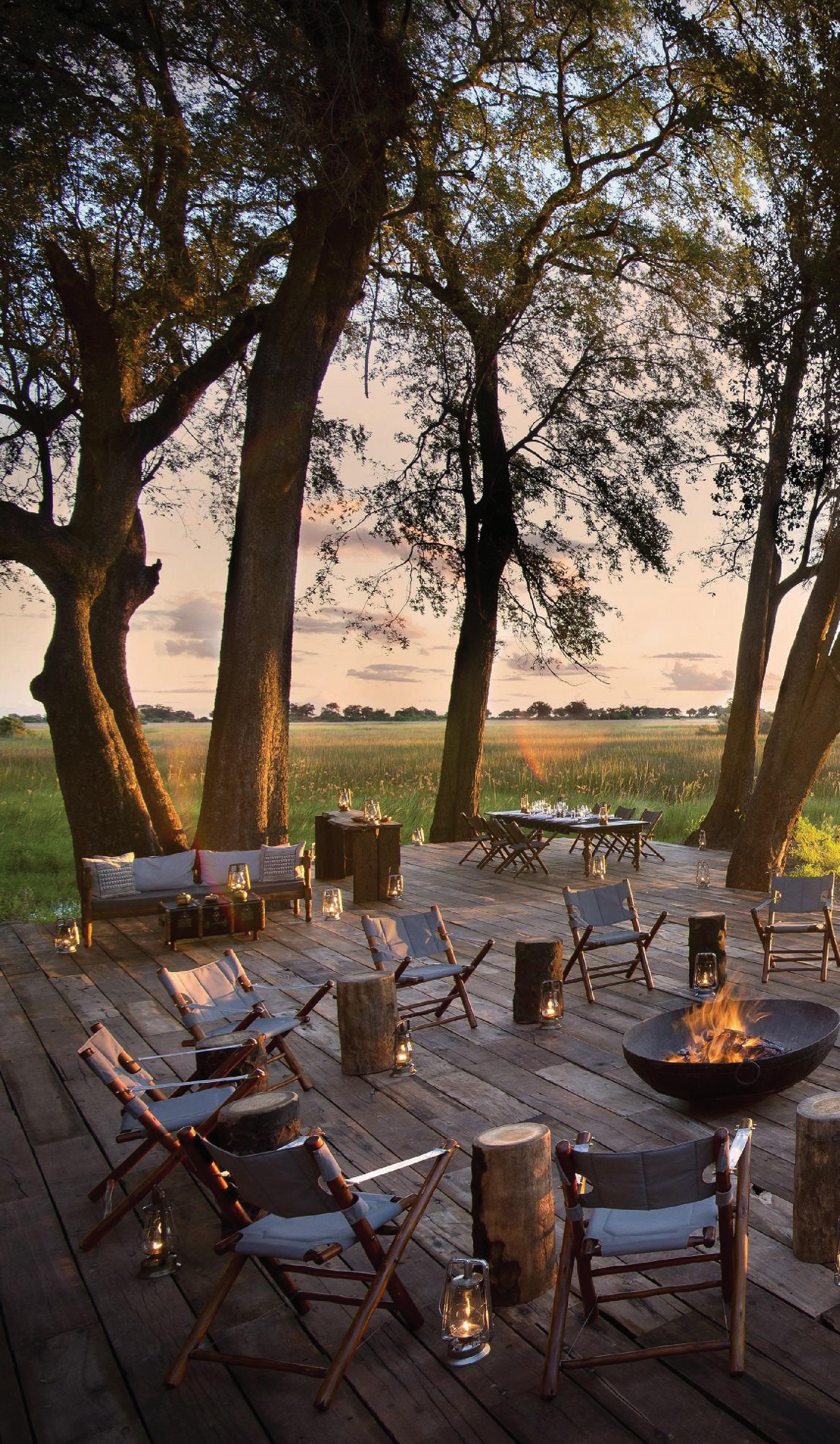
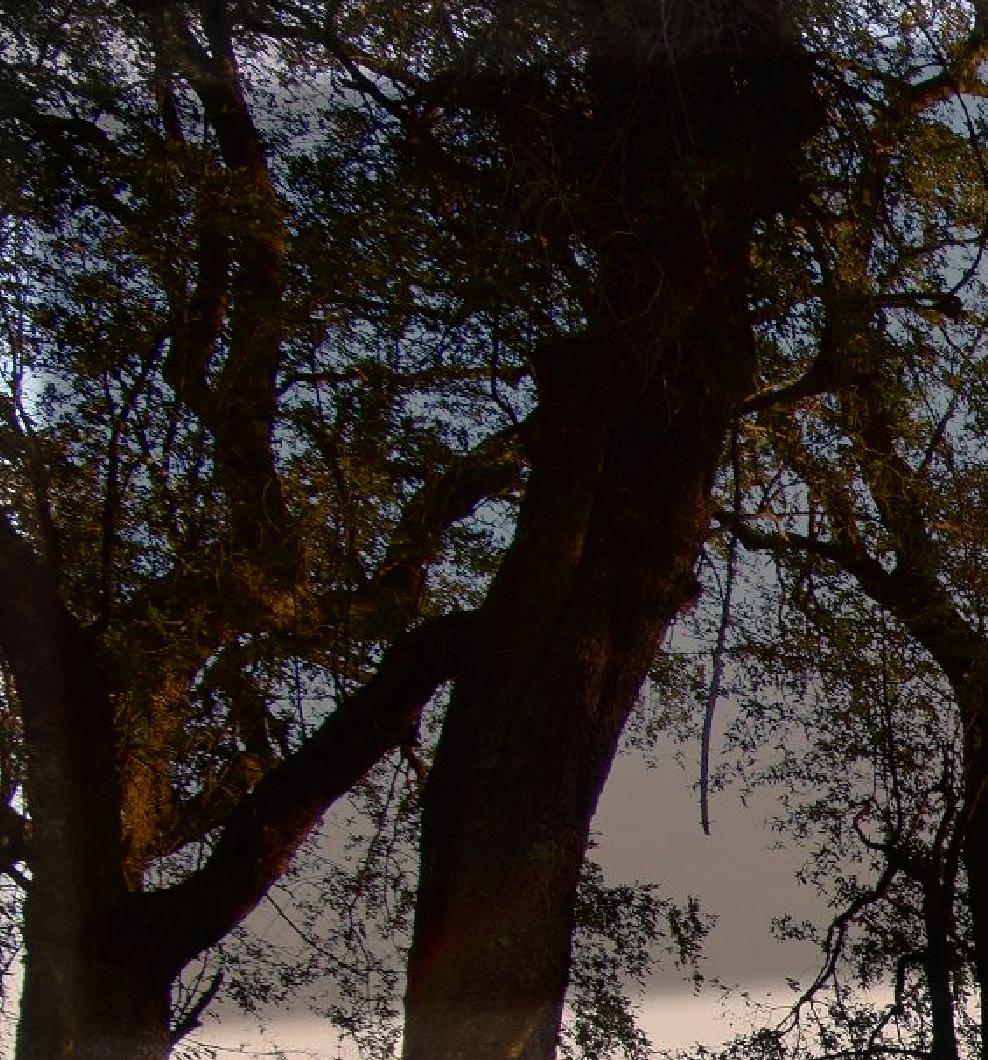

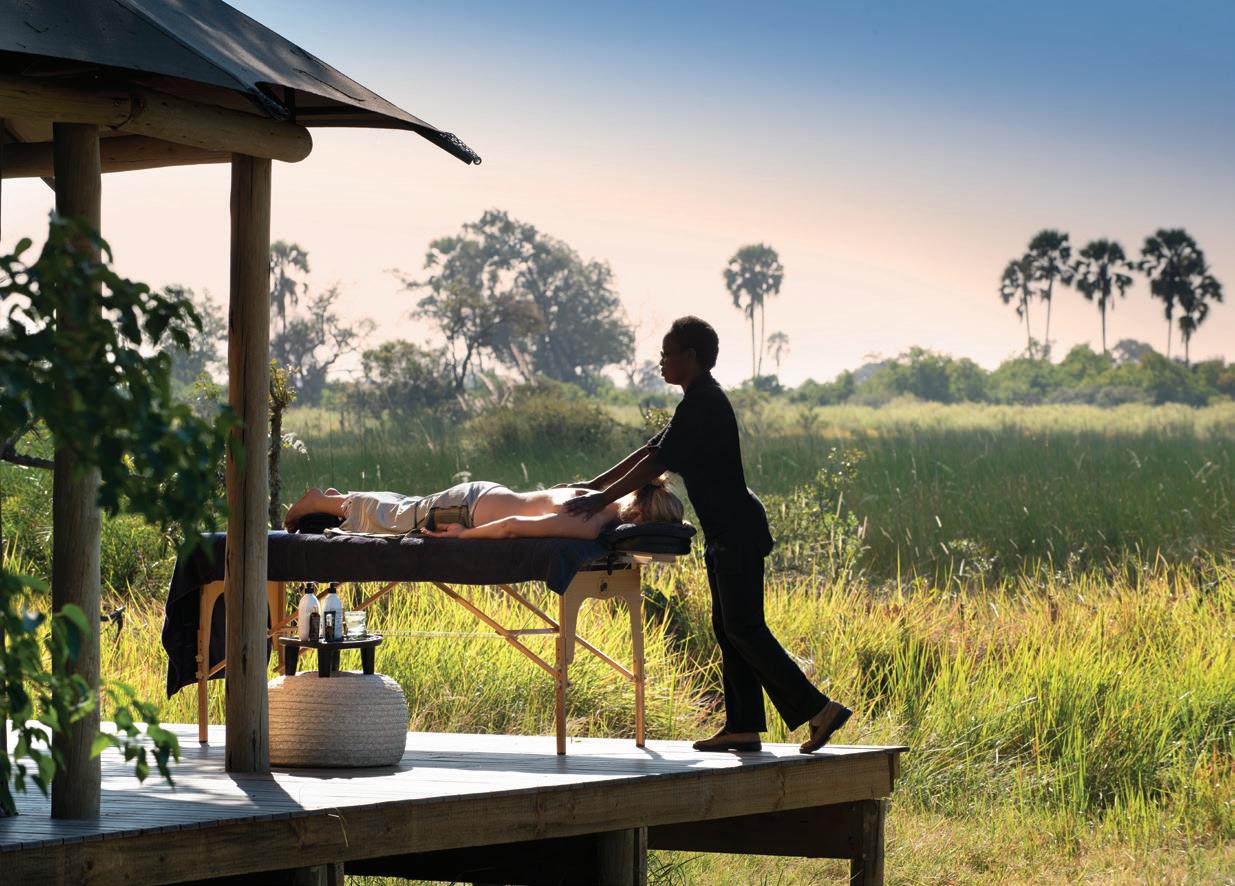
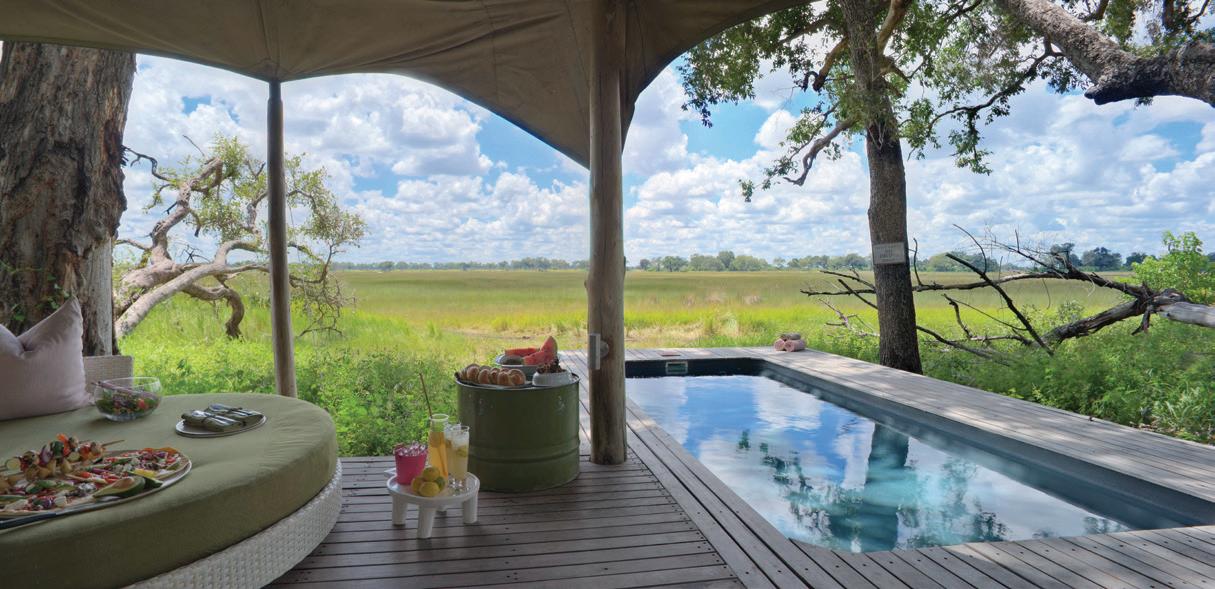
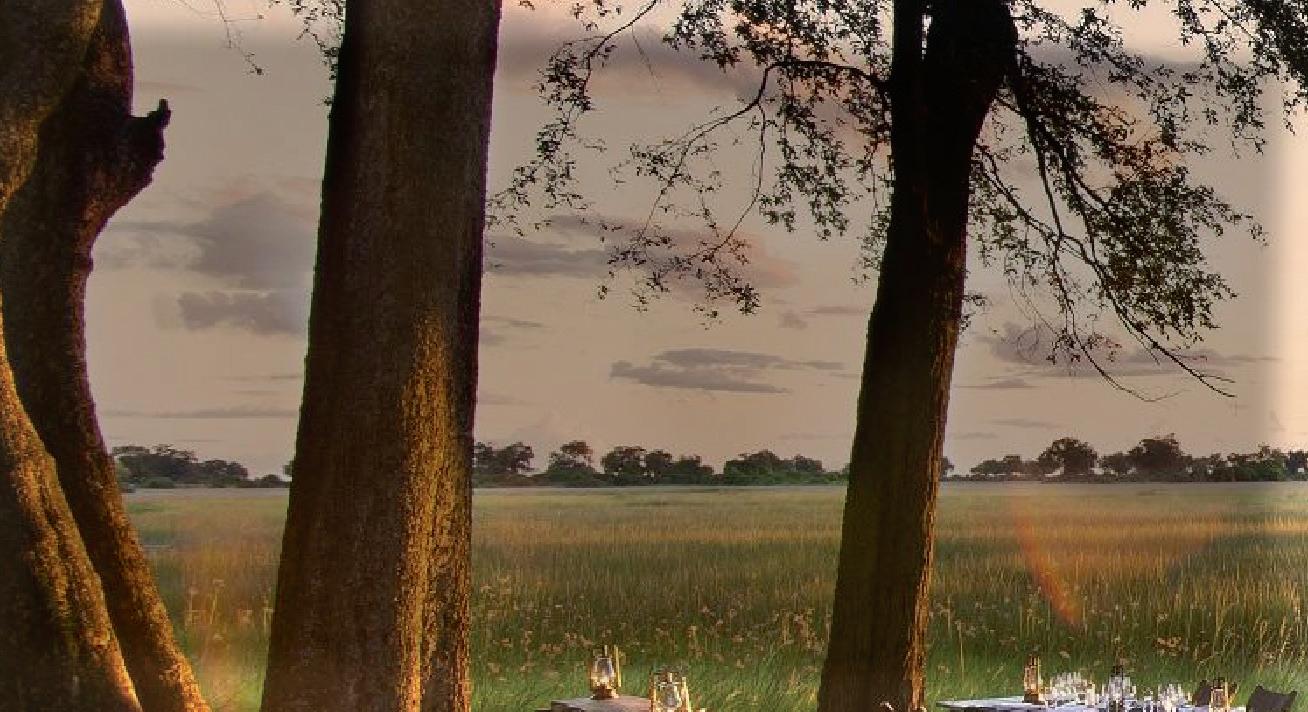
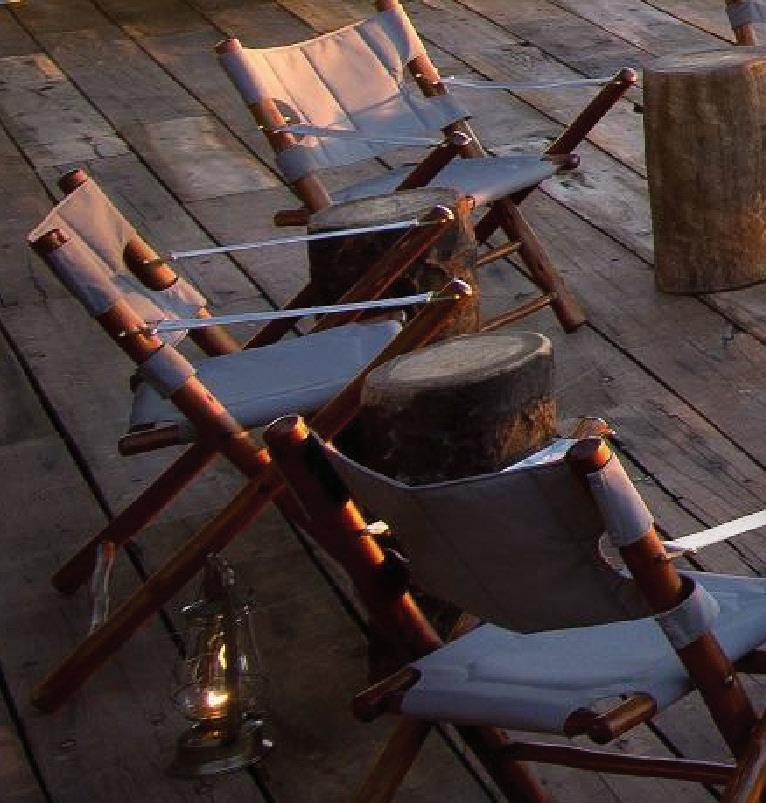



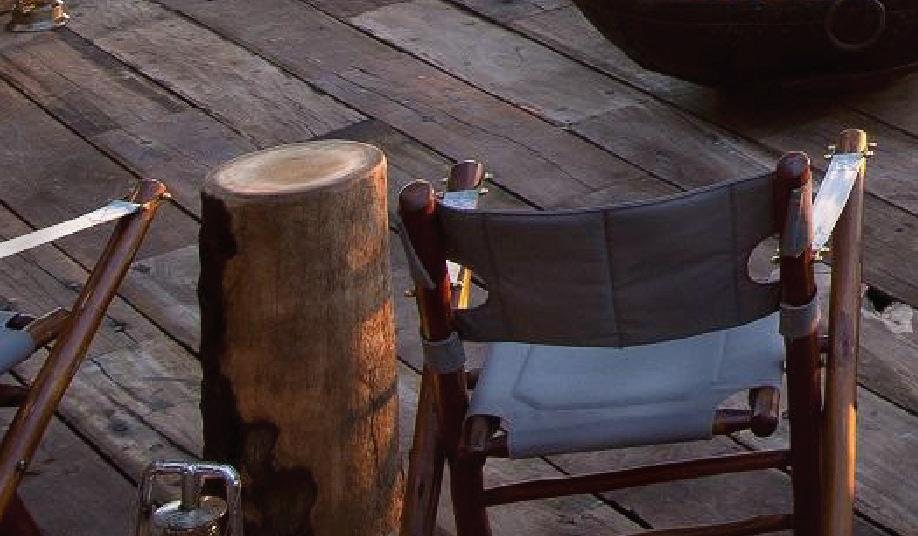


Tented safari camps in Botswana’s Okavango Delta provide an exemplary blend of luxury and immersion in the African wilderness

Yes, Botswana is a landlocked country, far away from the ocean. But we couldn’t pass up the opportunity to showcase the beauty of the Okavango Delta: one of the world’s largest inland deltas with a stunning network of waterways, wetlands and lush islands. It’s a veritable water wonderland!
This Unesco World Heritage Site is arguably the crown jewel of Botswana’s safari offerings, being home to a breathtaking array of wildlife. As the country is renowned for its raw, untamed wilderness and unparalleled natural beauty, it’s a premier destination for safari enthusiasts.
And for those seeking a luxurious, immersive and authentic safari experience, few accommodations rival the opulence and intimacy of luxury tented safari camps scattered across the delta. These camps offer a perfect blend of adventure and comfort—providing an experience that brings guests face to face with nature in its most magnificent form.
Tented safari camps in the Okavango Delta offer a remarkable balance between being fully immersed in nature while enjoying the comforts of five-star luxury. They combine the rustic appeal of traditional camping with the lavish amenities of a high-end resort. Think vast safari tents furnished with plush bedding, elegant wooden floors, chic lounges, gourmet dining, private plunge pools and expansive verandas with panoramic views of the delta’s wild beauty.
This luxury doesn’t come at the expense of authenticity, however. These camps are designed to blend seamlessly into their surroundings, offering guests a deep connection to the delta’s ecosystem.
The allure of staying in a luxury tented camp is not merely about the lavish surroundings; it’s about the experience. Each day in the Okavango brings new wonders: from intimate encounters with elephants and lions to the sight of a brilliant African sunset painting the sky in hues of gold, purple and orange.
Luxury tented camps make every guest feel like part of the landscape, with exceptional service
and personalised attention ensuring a truly memorable and unique experience.
Located in the northwest of Botswana, the Okavango Delta is a vast network of channels, lagoons and floodplains spread across an area of approximately 15 000 square kilometres. What makes this region even more remarkable is that it’s an inland delta, meaning it has no connection to the sea. Instead, the waters of the Okavango River flow into the delta, creating an extraordinary, ever-changing ecosystem that sustains a wide variety of wildlife.
The delta is one of Africa’s most biodiverse areas, supporting a range of animal species such as elephant, lion, leopard, buffalo, hippo, crocodile and over 500 species of birds.
Whether you’re exploring on foot, in a mokoro (traditional dugout canoe) or in a 4x4 vehicle, the Okavango offers incredible opportunities for wildlife viewing. The wet season, from November to April, transforms the region into a verdant paradise; while the dry season, from May to October, brings the promise of predator action as animals congregate around water sources.
Luxury tented safari camps are often strategically located to offer exclusive access to some of the delta’s best wildlife areas, ensuring guests experience the best of the wilderness while still enjoying the privacy and comfort of their accommodations.
A stay at one of the Okavango Delta’s luxury tented safari camps is not just about relaxing in stylish accommodations—it’s about embarking on an extraordinary adventure.
Activities at these camps are meticulously designed to enhance the safari experience and allow guests to explore the delta in diverse and exciting ways:
Early-morning game drives are an iconic part of any Okavango safari, and staying in a luxury tented camp
ensures you’ll be able to experience this in the most comfortable and intimate way. These drives are conducted in custom-built 4x4 vehicles, allowing you to traverse the region’s varied terrain with ease.
Whether you’re observing herds of elephants or tracking predators like lion and leopard, the expertise of the guides adds a layer of depth to your experience. These trained professionals share their knowledge of animal behaviour, the intricacies of the ecosystem and the delicate balance of the delta’s natural world.
Glide through the reeds
The mokoro, a traditional dugout canoe, is a quintessential mode of transport in the Okavango Delta. Glide silently through the water as you experience the tranquility all around. Mokoro safaris allow you to get up close to aquatic wildlife like hippo, crocodile and a stunning variety of bird species.
These safaris offer a peaceful alternative to the traditional game drive, providing a unique perspective on the delta’s beauty. Guides skillfully manoeuvre the mokoro through the reeds, pointing out hidden wildlife and explaining the delicate ecosystems that thrive here.
For those looking for a more personal and intimate experience with the bush, walking safaris are the perfect option. Led by expert guides and armed with the knowledge of local wildlife, walking safaris allow you to see the smaller details of the delta which are often missed from a vehicle.
From animal tracks to the subtle sounds of the bush, walking safaris offer a deeper connection to the environment and a greater understanding of the landscape.
As the sun sets over the Okavango, the wildlife of the delta enters into a different phase of activity. Night drives, conducted with the help of powerful spotlights, offer the chance to witness the nocturnal behaviour of animals such as leopard, hyena and the elusive African wild cat.
The transition from day to night in this unique wilderness adds an unforgettable dimension to the safari experience.
Luxury home away from home
The luxury of staying in a tented camp is amplified by the impeccable service and thoughtful touches that make each guest’s stay exceptional. From the moment you arrive, you are treated like royalty. Camp staff anticipate your needs: from organising your safari activities to
ensuring your comfort at all times. Meals are prepared by top chefs who create exquisite, freshly prepared dishes that showcase local flavours, and dining is often al fresco— surrounded by the stunning sights and sounds of the wilderness.
For those seeking total relaxation after a day of adventure, many luxury tented camps offer private plunge pools, spas and massage services. The ambiance of the camp is one of peace and serenity, with the sounds of the bush providing a soothing backdrop.
The tents themselves are a haven of comfort, offering plush beds, elegant
They combine the rustic appeal of traditional camping with the lavish amenities of a highend resort.
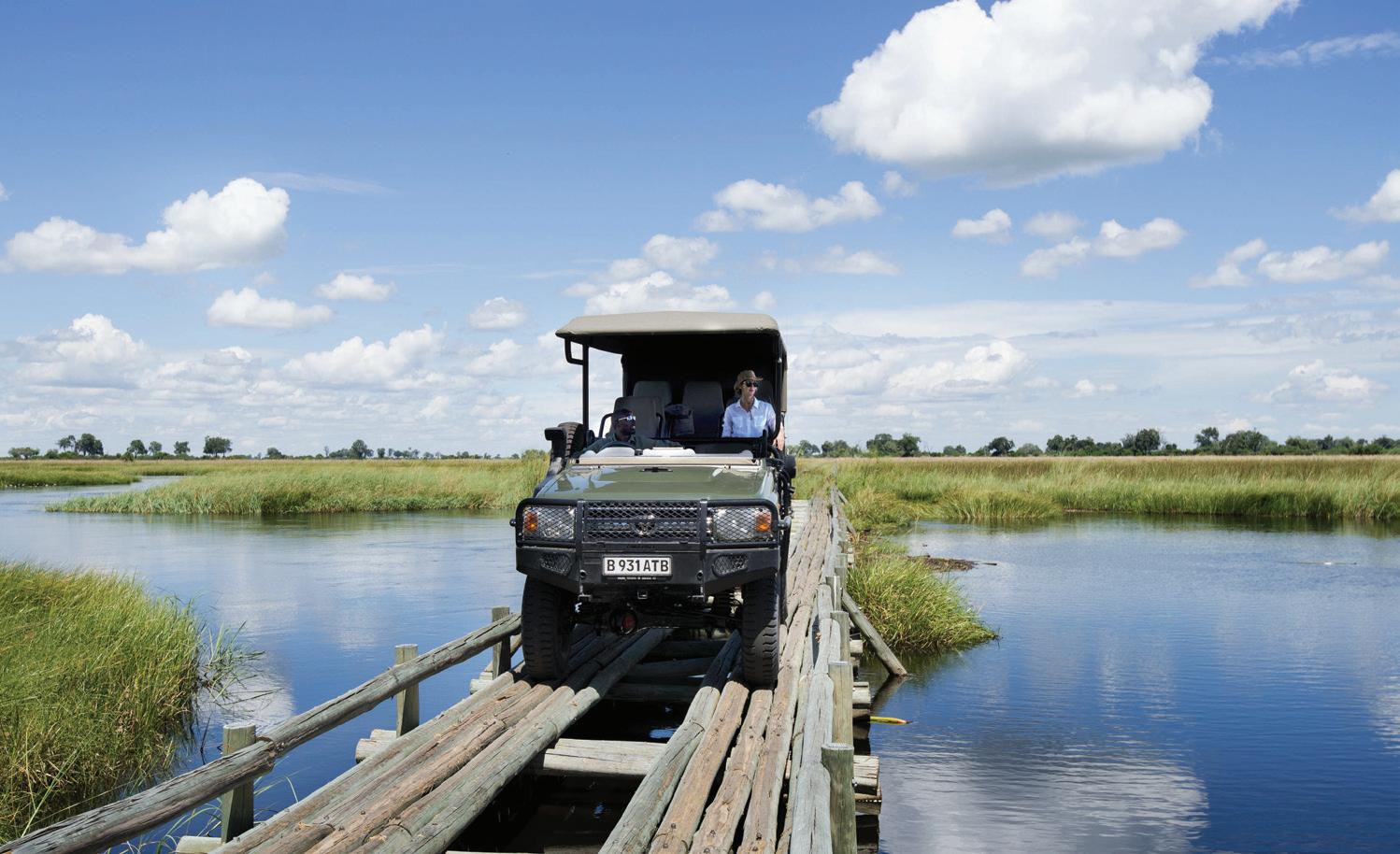

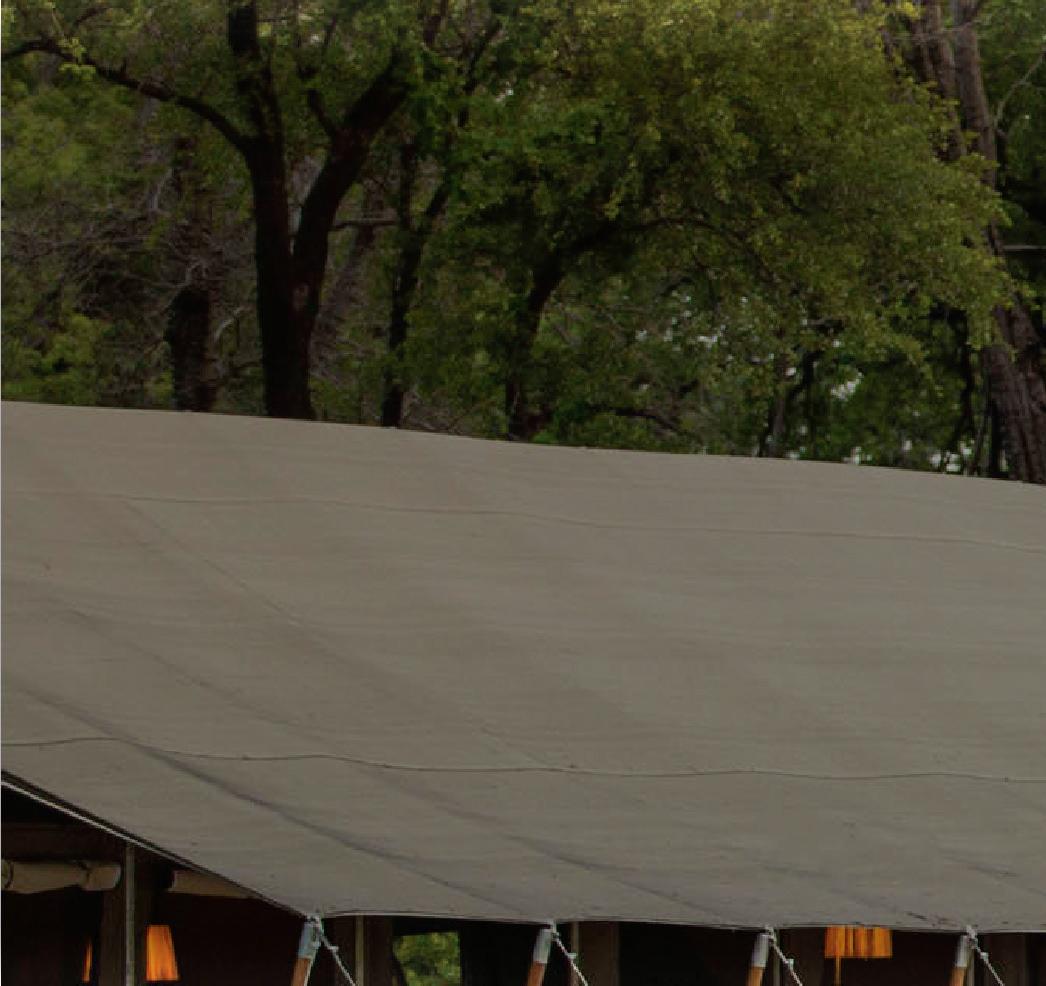

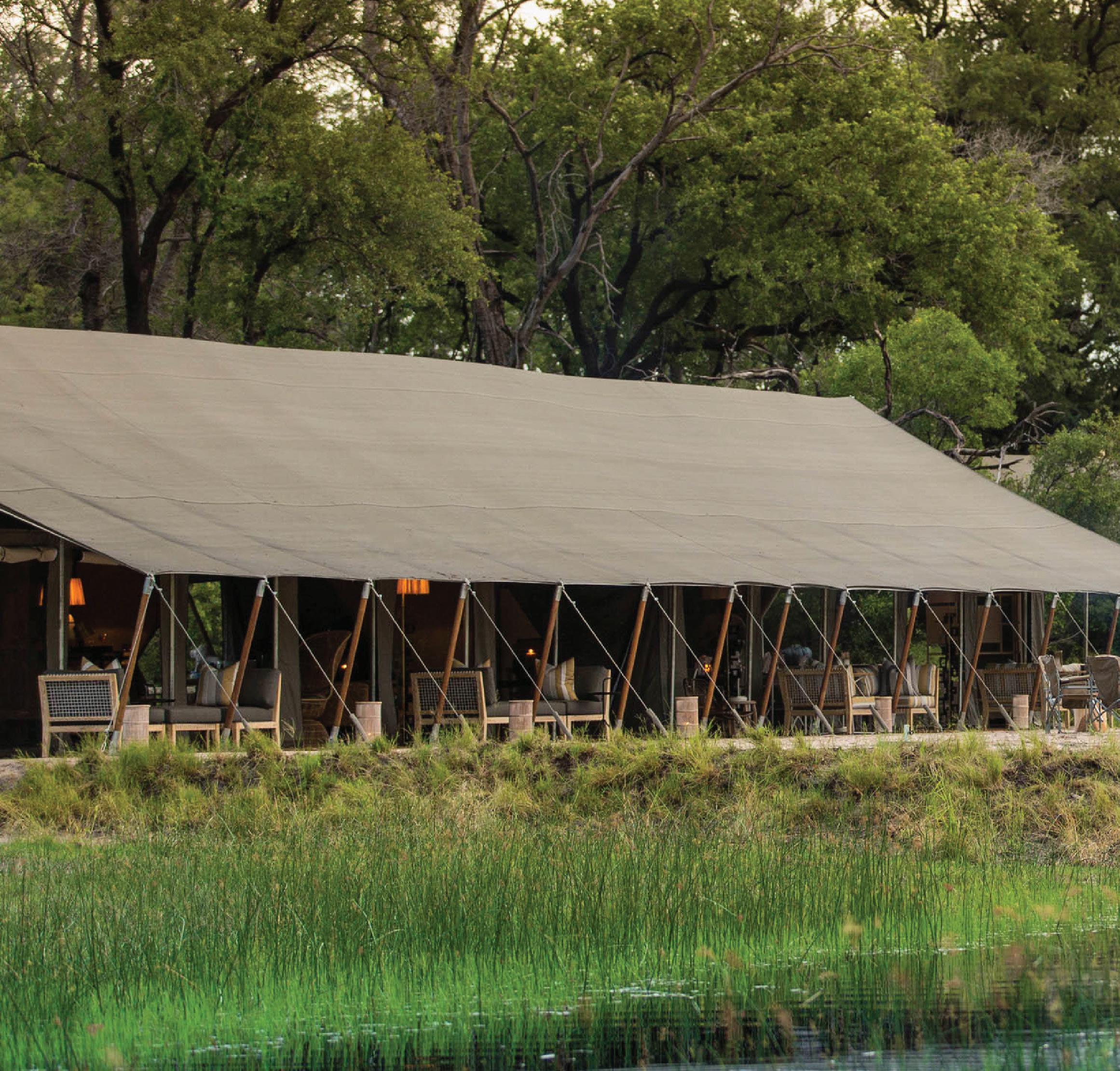
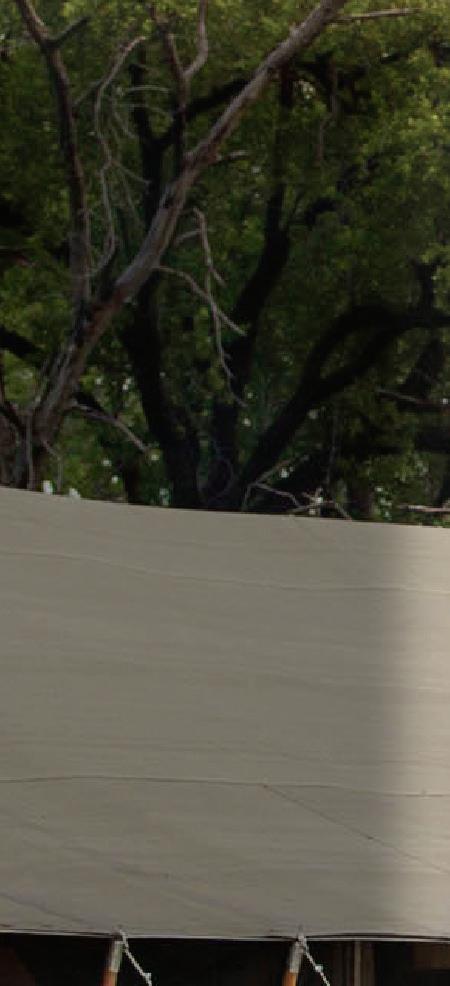
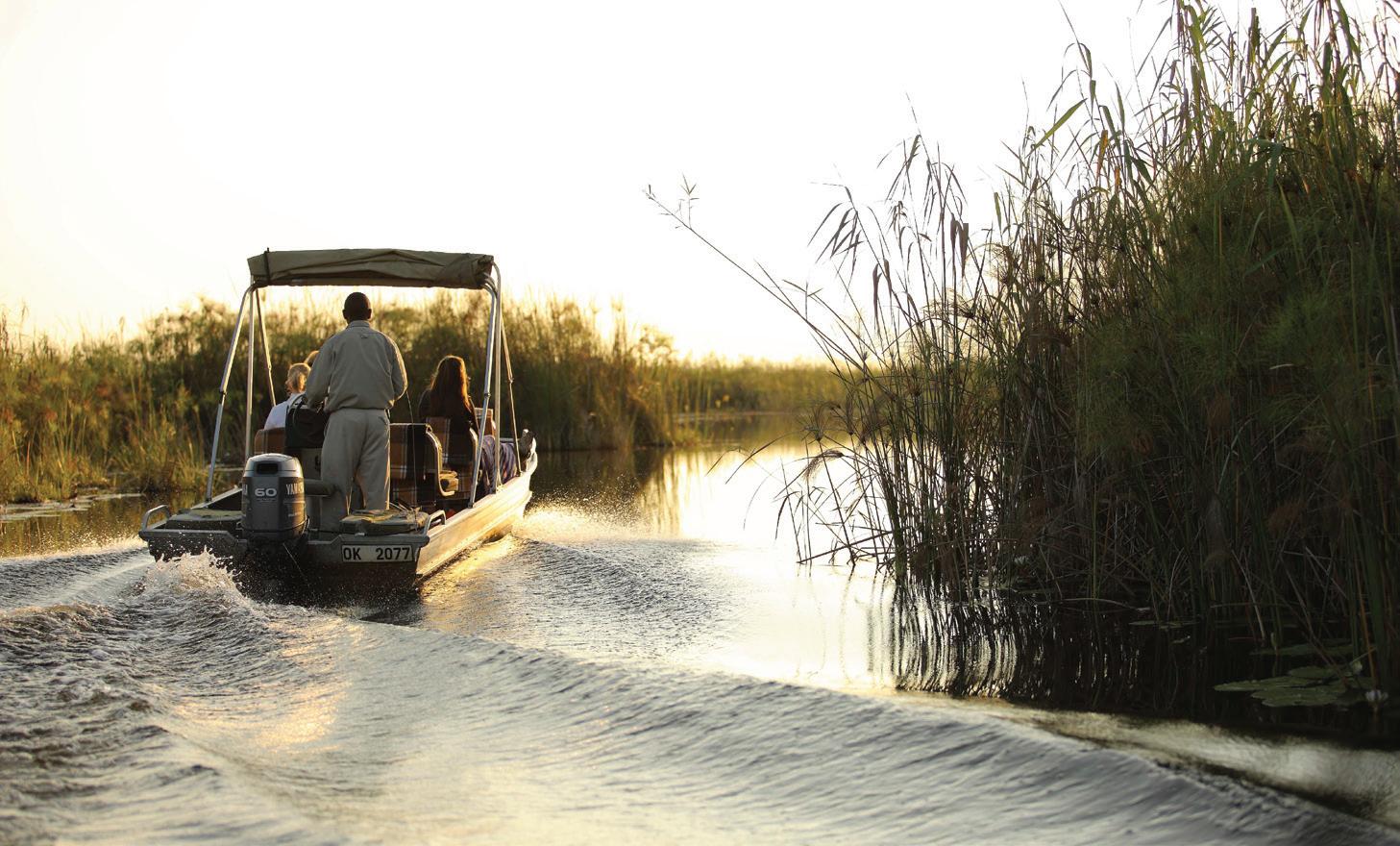

furnishings, en-suite bathrooms with rain showers, and expansive decks with stunning views.
Leave nothing behind
As ecotourism has grown in popularity, so too has the commitment to sustainable practices in the Okavango Delta. Many luxury tented camps in the region are dedicated to minimising their environmental impact and supporting local conservation efforts. The camps often operate on a low environmental
footprint, using solar power, minimising waste and sourcing food locally.
Moreover, many of these camps are involved in community development and wildlife conservation initiatives, helping preserve the delta’s delicate ecosystems for future generations.
Luxury tented safari camps in the Okavango Delta offer one of the most extraordinary and memorable ways to experience Africa’s wild beauty. They provide an intimate and exclusive setting,
where guests can embrace the raw, unfiltered magnificence of nature without sacrificing the comforts and indulgences of high-end travel.
From thrilling wildlife encounters to luxurious accommodations, a safari in Botswana’s Okavango Delta is a oncein-a-lifetime experience that offers something for every kind of traveller.
Whether you seek adventure, relaxation or simply a deeper connection with the natural world, the Okavango’s luxury tented camps are the perfect destination.

Machaba Safaris
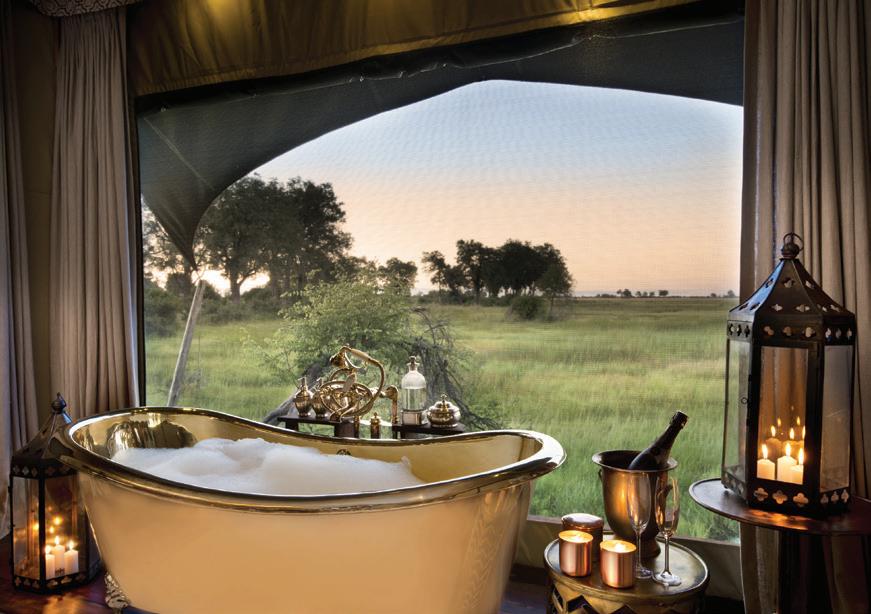



Abercrombie & Kent

Abercrombie & Kent




Abercrombie & Kent
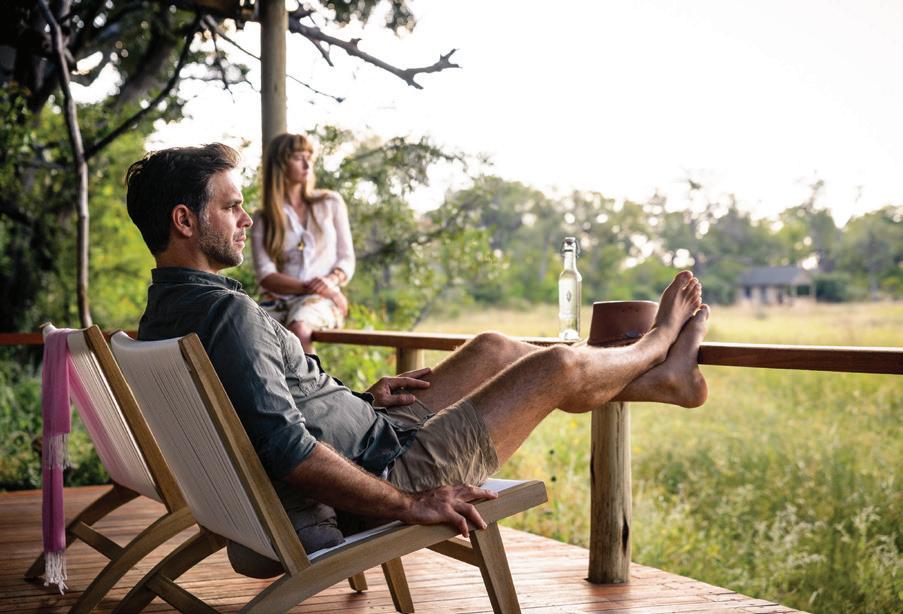


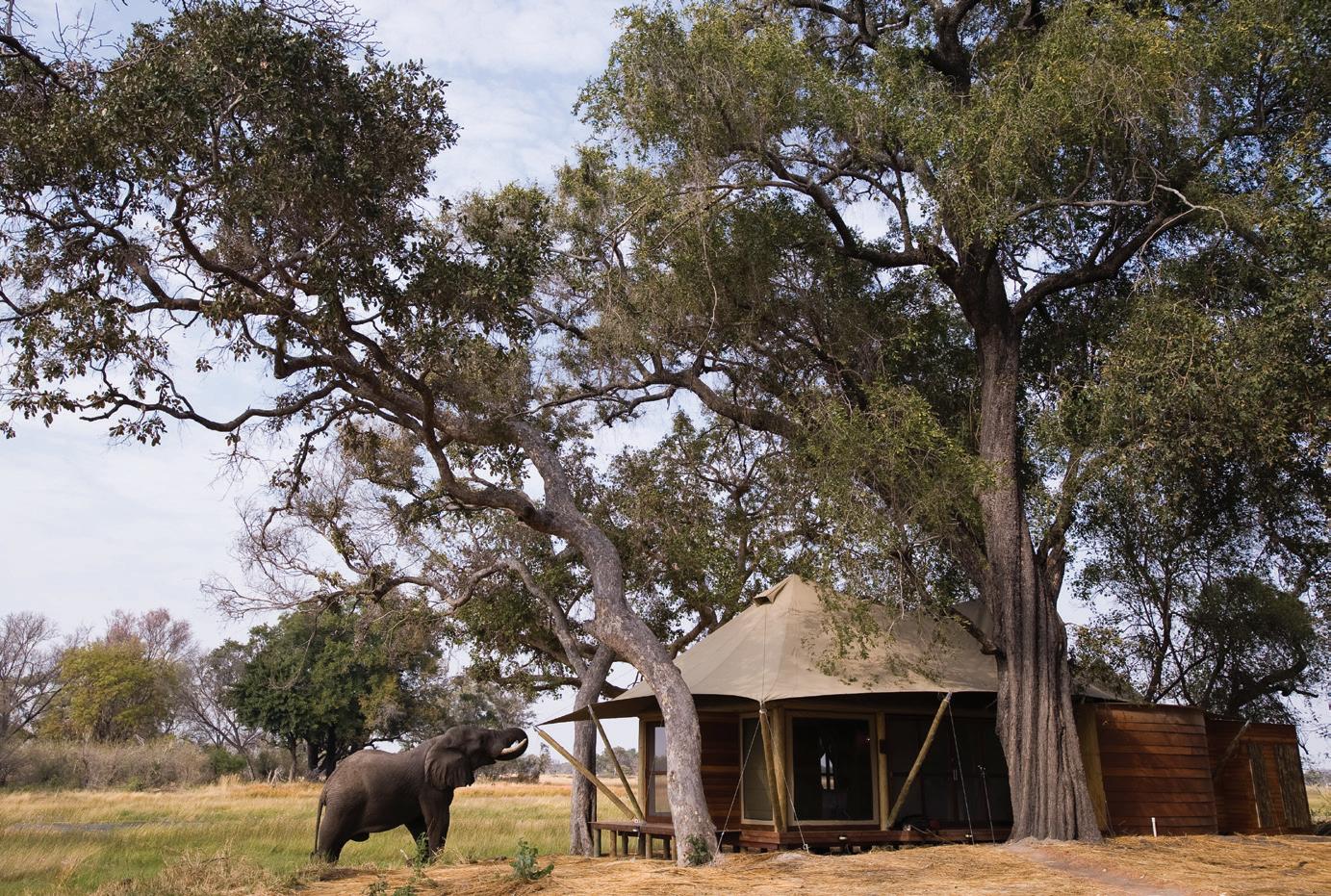
&Beyond


Several luxury tented camps in the Okavango Delta offer an unforgettable experience for visitors seeking both comfort and adventure:
&Beyond Nxabega
Okavango Tented Camp www.andbeyond.com
Blending harmoniously with the environment, nine tented suites (including a family option) set on raised wooden platforms are cradled under a canopy of towering ebony trees—boasting breathtaking views of mopane woodlands and seasonally flooded grasslands.
&Beyond Xaranna
Okavango Delta Camp www.andbeyond.com
Xaranna is a delightful camp, with just nine en-suite safari tents that luxuriously combine canvas, soft drapes and bleached timber. You’ll love the romantic outdoor sala, private plunge pool, indoor bathtub and al fresco shower.
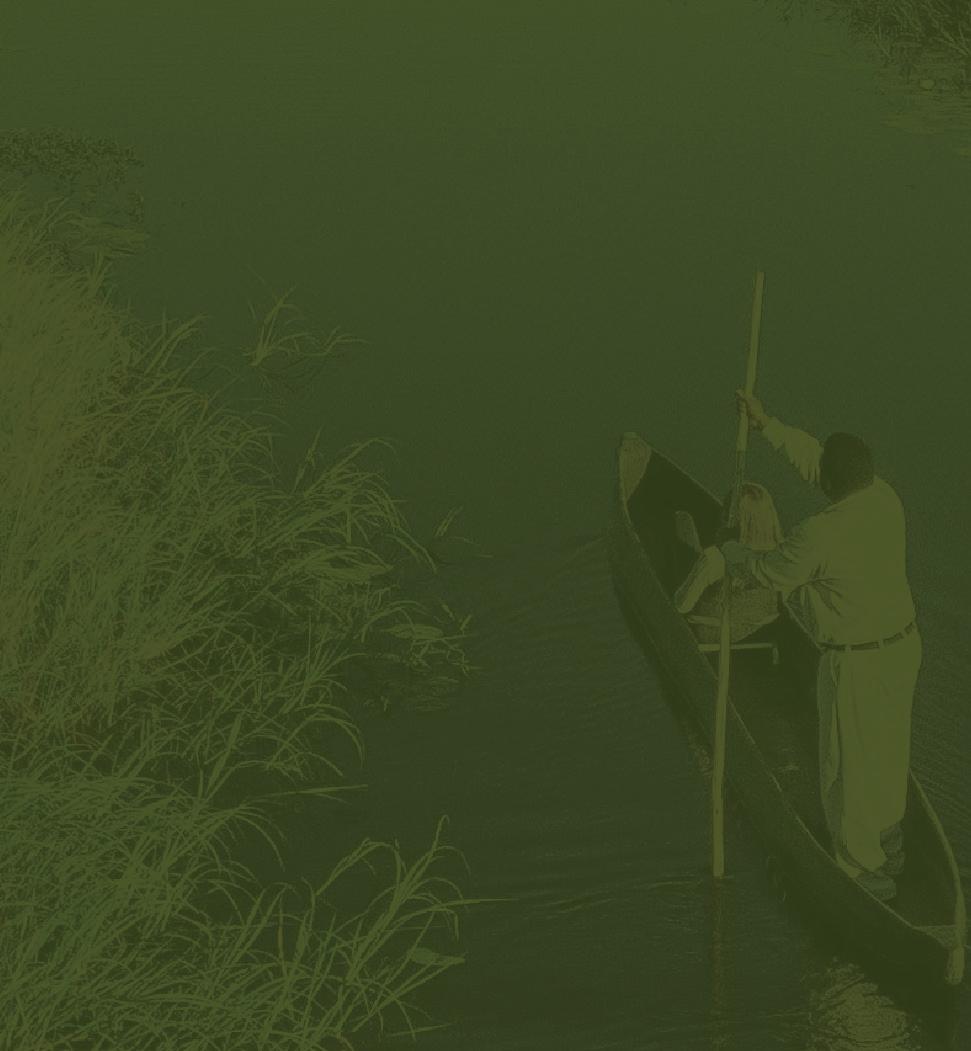
Gomoti Plains Camp machabasafaris.com
Framed by towering palm trees, these iconic canvas tents provide eco-luxurious comfort in an area that is alive with superb land- and water-based game-viewing opportunities.
Stanley’s Camp www.abercrombiekent.com
Stanley’s Camp is a picture of understated yet frankly undeniable luxury of a kind that footsore 19th-century explorers could scarcely have imagined. It comprises just 10 tented villas, each with a private deck with magnificent views over the glimmering floodplain and its unending pageant of wildlife.
Duba Plains Camp greatplainsconservation.com
Duba Plains Camp is the epitome of a Botswana luxury safari. It offers five bespoke private suites, the design of which ensures each blends into the landscape while evoking a classical 1920s inspired African safari style.





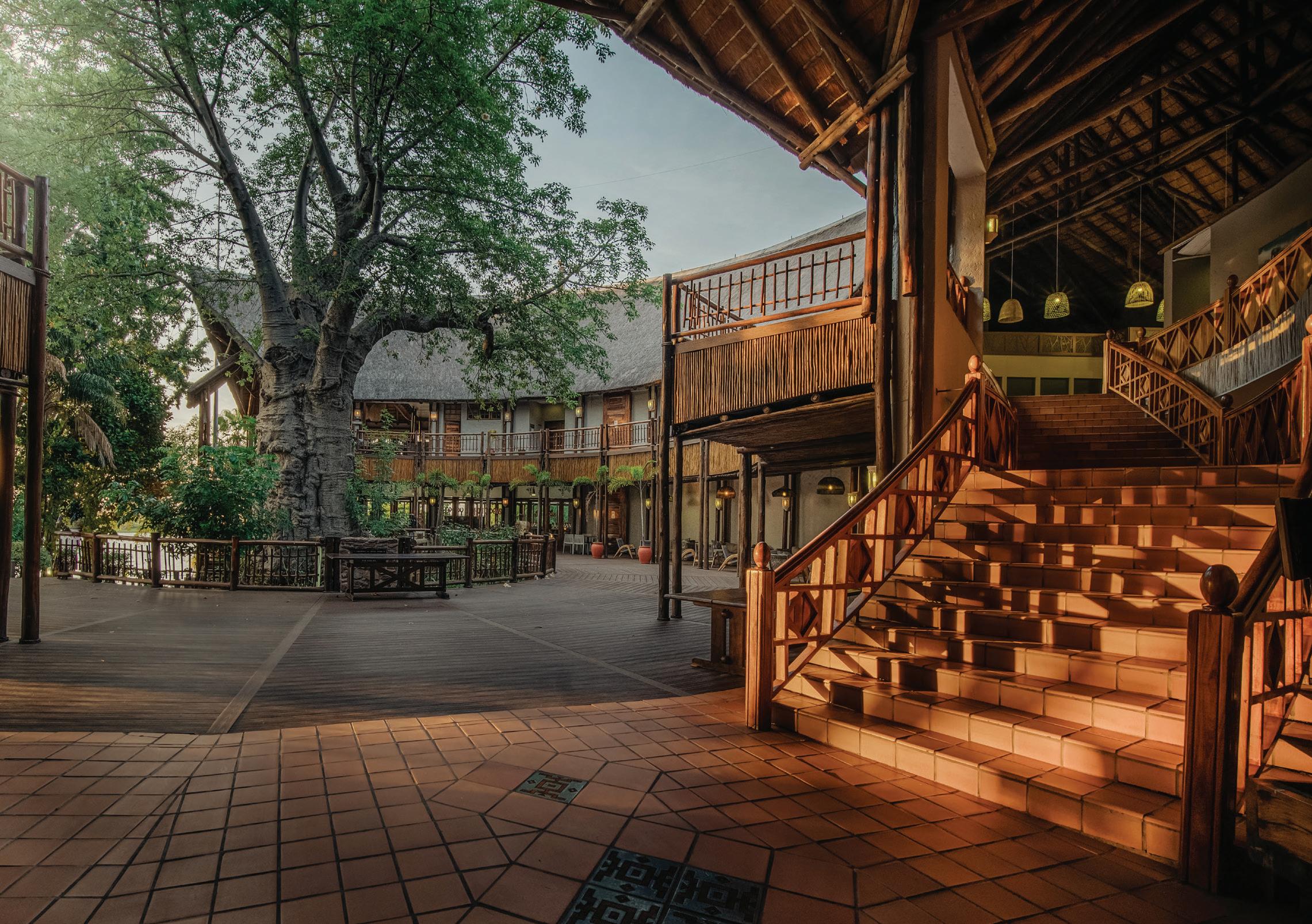
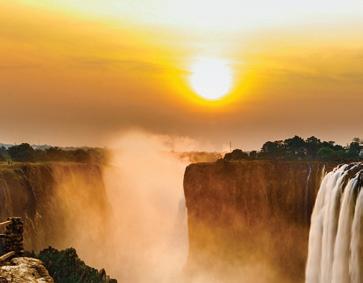
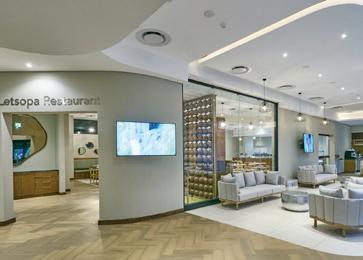


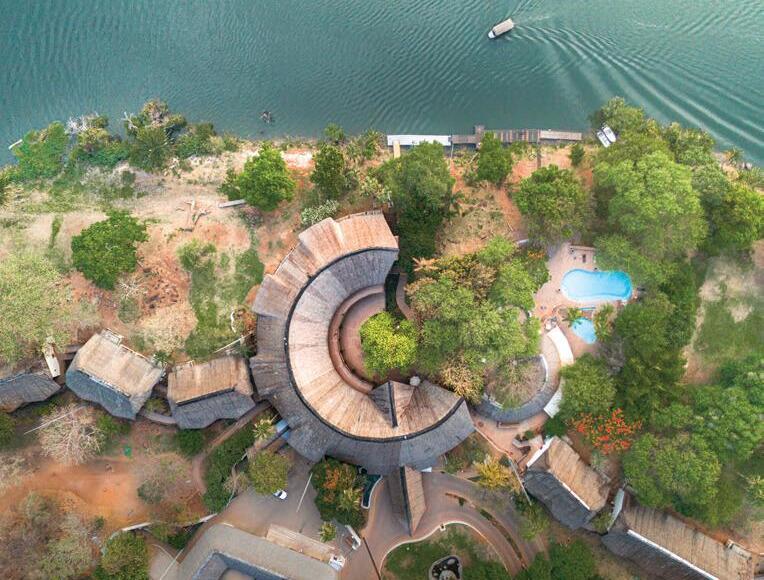
Prepare to embark on a sensory journey that will leave you enchanted by the charms (and aromas) of Zanzibar, the Spice Island





Zanzibar’s association with spices dates back centuries.


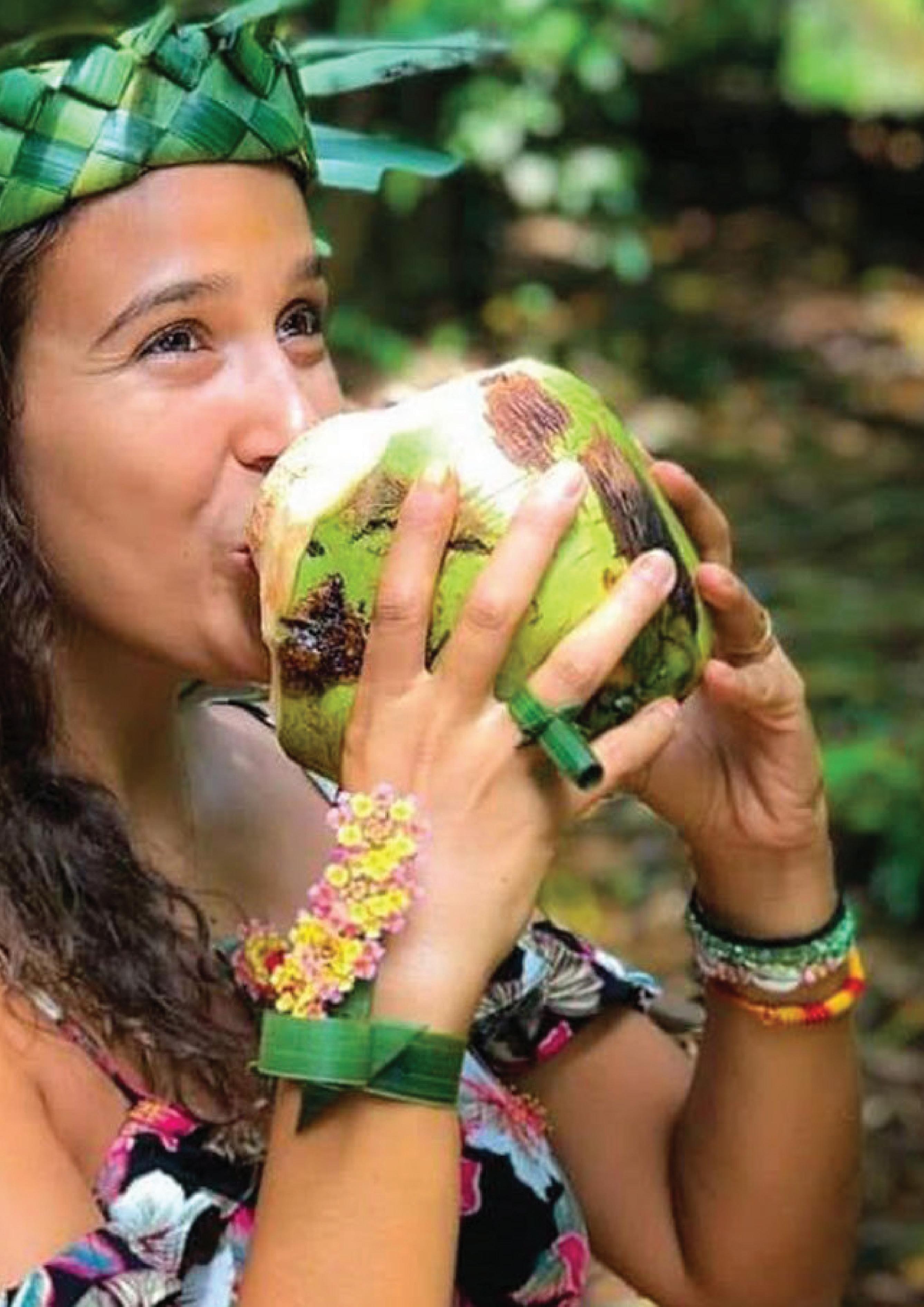


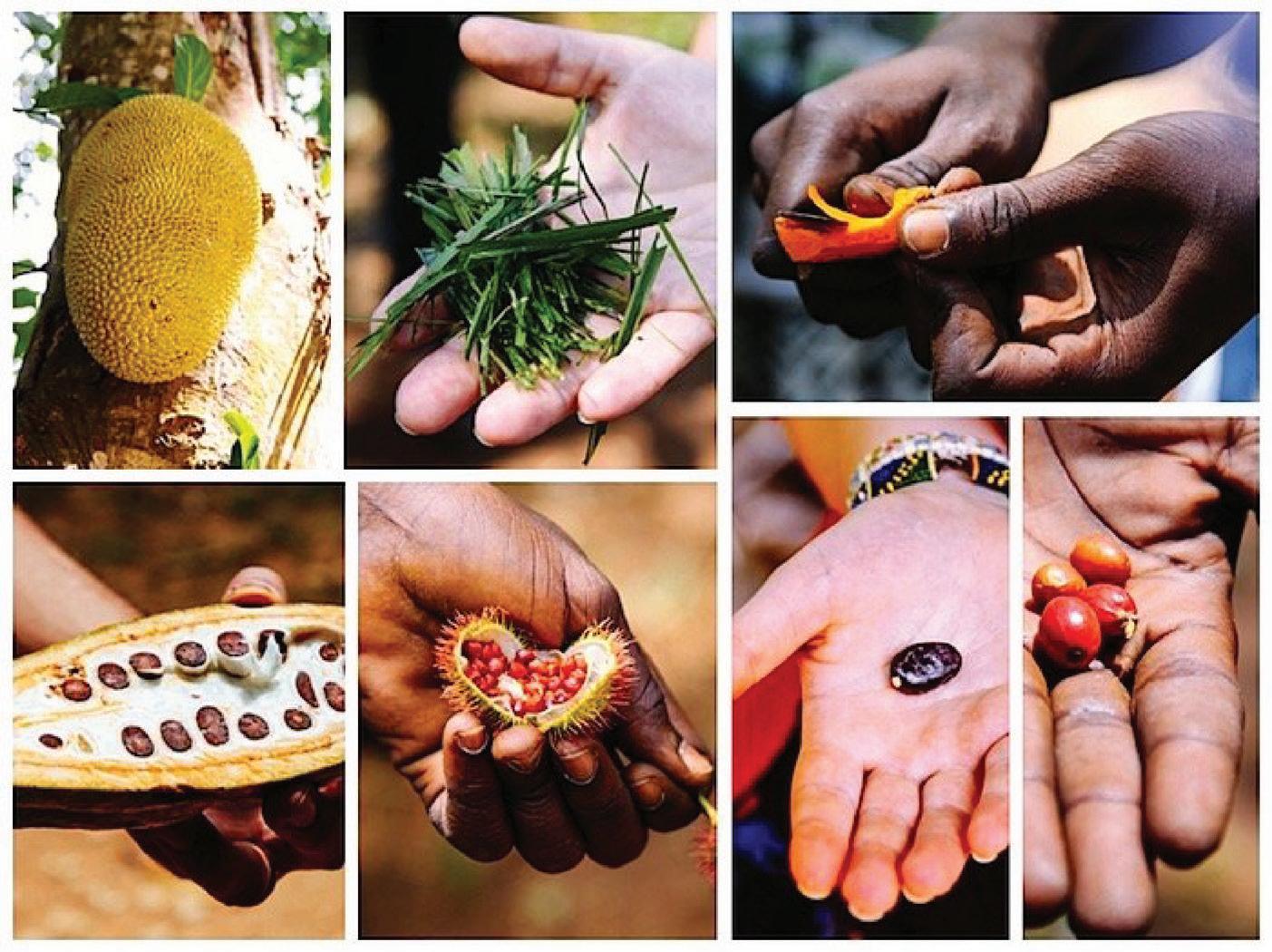

Zanzibar, an archipelago off the coast of Tanzania, is often referred to as the “Spice Island” due to its rich history and cultivation of various spices. With its lush landscapes, vibrant culture and tantalising aromas, Zanzibar offers travellers an immersive experience into the world of spices.
Spice tours are a highlight for visitors, revealing the island’s agricultural heritage and introducing them to the flavours that have shaped its identity.
Zanzibar’s association with spices dates back centuries. During the 19th century, the island became a key trading hub for spices, particularly cloves, nutmeg, cinnamon and pepper. The strategic location of Zanzibar made it an ideal port for traders from the Middle East, India and Europe, leading to a fusion of cultures that influenced its culinary landscape.
Cloves, in particular, became Zanzibar’s most important cash crop, with the island producing over 90% of the world’s supply during its peak. This lucrative spice trade transformed the local economy and attracted settlers from various regions, leaving an indelible mark on the island’s
culture and history. Today, the spice trade continues to play a vital role in Zanzibar’s economy and identity, making spice tours a must-do activity for any visitor.
A spice tour in Zanzibar is an engaging journey through lush plantations, where visitors can see, smell and taste the spices that have made the island famous.
Most tours begin in Stone Town, the island’s capital, where local guides take you to the spice farms located in the surrounding countryside.
As you walk through the plantations, the guide will introduce you to a wide variety of spices, many of which you might have only seen in jars at the grocery store. The experience is hands-on; you’ll have the opportunity to touch and smell everything from cardamom to vanilla, learning about their culinary uses and health benefits.
One of the highlights of the tour is the chance to see how spices are cultivated.
For instance, cloves grow on tall trees and are hand-harvested, while vanilla beans hang from vines, requiring careful pollination. Observing the growth process adds a layer of appreciation for the spices that flavour your food back home.


This spice is native to the Banda Islands in Indonesia, but Zanzibar has made it a staple. Its warm, slightly sweet flavour is essential in both sweet and savoury dishes.


The island’s most famous spice, cloves have a strong, aromatic flavour. Visitors often enjoy clove tea, a fragrant beverage that highlights this spice’s versatility.
Zanzibar is home to many unique spices, each with its own story and significance:


Known for its sweet and spicy notes, Zanzibar’s cinnamon is often used in traditional dishes and teas.


Although a smaller crop, Zanzibar’s vanilla is known for its intense aroma and flavour, adding a special touch to desserts and drinks.


Often called the ‘king of spices’, black pepper from Zanzibar has a robust flavour and is a favourite among chefs.
During the tour, you’ll often be invited to taste some of the local dishes prepared with these spices, such as pilau (spiced rice), curry and fresh fruit salads—showcasing how spices are integral to Zanzibari cuisine.
Spice tours in Zanzibar are not just about the spices; they also offer insight into the local culture and traditions. Many spice farmers are from the Swahili community, and their rich heritage is woven into the fabric of the tour. You’ll learn about their daily lives, traditional farming methods and the significance of spices in their culture.
Some tours include cultural performances, where local musicians and dancers showcase traditional Zanzibari music and dance. This vibrant display adds to the experience, allowing you to immerse yourself fully in the island’s cultural richness.
Additionally, many spice farms have small markets where you can
purchase freshly harvested spices, essential oils and handmade crafts.
A spice tour in Zanzibar is an unforgettable journey that engages all your senses. From the rich history of the Spice Island to the fragrant aromas and vibrant flavours, every moment exploring the spice plantations is a celebration of culture and nature.
As you navigate through lush landscapes, interact with local farmers and savour the spices that have shaped this island’s identity, you’ll gain a deeper appreciation for the culinary treasures of Zanzibar. This experience is more than just a tour; it’s a flavourful exploration of a place where history and nature intertwine beautifully.
The tropical climate can be hot and humid, so lightweight, breathable clothing is recommended. Comfortable shoes are essential for walking through the plantations.
The lush landscapes, vibrant colours and unique plants make for fantastic photography opportunities. Capture the moments and the beauty of the island.


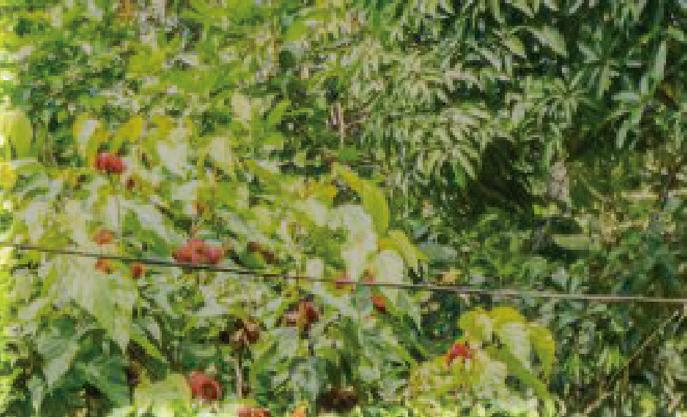
Your guide has a wealth of knowledge about spices, culture and history. Don’t hesitate to ask questions and immerse yourself in the learning experience.
Consider purchasing spices and handicrafts from local vendors. This not only supports the community but also allows you to bring home a taste of Zanzibar.
Many tours include tastings of local dishes, teas and spices. Embrace the opportunity to sample the flavours of Zanzibar!


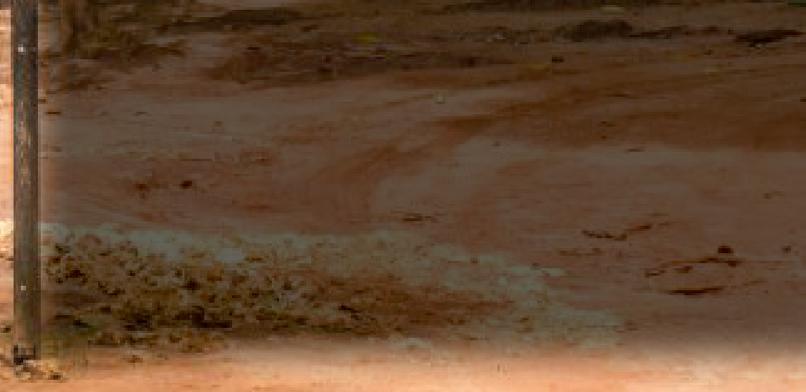



Get ready for an unforgettable deep-sea fishing adventure on the waters of Mombasa—where the ocean’s bounty awaits

“The city offers unforgettable fishing experiences, catering to both seasoned anglers and beginners”

The Kenyan Coast, with its azure waters and stunning landscapes, is a paradise for those seeking adventure on the high seas. Among its many attractions, Mombasa stands out as a premier destination for deep-sea fishing enthusiasts. With a rich marine ecosystem and a variety of fish species, the city offers unforgettable fishing experiences, catering to both seasoned anglers and beginners.
Whether you’re after the thrill of reeling in a marlin or enjoying a leisurely day on the water, deep-sea fishing in Mombasa is an adventure you won’t want to miss.
Mombasa is Kenya’s second-largest city and a bustling port on the Indian Ocean. Its unique blend of cultures— African, Arab, Indian and European— creates a vibrant atmosphere that permeates everything from the local cuisine to the architecture. The city serves as the perfect base for exploring the surrounding marine life and embarking on fishing expeditions.
The Indian Ocean, known for its warm waters and diverse ecosystems, is home to an array of fish species including marlin, sailfish, tuna and barracuda. The coastline is dotted with several fishing charters and operators that cater to various skill levels and preferences, ensuring everyone can enjoy the thrill of the catch.
Setting out on a deep-sea fishing expedition is an exhilarating experience. Most charters typically begin early in the morning, allowing you to take advantage of prime fishing conditions. As you board the boat and head out into the open ocean, the excitement builds with every wave you traverse.
The journey itself is a treat for the senses. The salty breeze on your face, the gentle sway of the boat and the expansive blue horizon create an atmosphere of adventure. Many fishing charters offer refreshments on board, so you can enjoy a cold drink while taking in the spectacular views.
Once you reach the fishing grounds, the real fun begins. Experienced
crew members will guide you through the process, explaining the different techniques used for deepsea fishing. Whether you choose to troll for marlin or bottom-fish for snapper, you’ll find the crew ready to assist, ensuring a safe and enjoyable experience.
Mombasa’s waters are teeming with a variety of game fish, making it an ideal location for deep-sea fishing. Here are some of the most soughtafter species you may encounter:
* Marlin: Known for their acrobatic displays and fierce fighting ability, marlin are one of the most prized catches among anglers. The prime months for marlin fishing are from November to April, with blue marlin and striped marlin being the most common.
* Sailfish: Another exciting catch, sailfish are known for their spectacular jumps and speed. They can be found in the same waters as marlin and are a popular target for both sport and catch-and-release fishing.
* Tuna: The Indian Ocean is home to several species of tuna, including yellowfin and big-eye. These fish are often found in schools, making for an exhilarating experience when you hook one.
* Barracuda: Known for their
sharp teeth and aggressive nature, barracuda are an exciting catch for anglers. They are often found near reefs and can provide thrilling fights.
* Snapper and grouper: For those who prefer bottom fishing, snapper and grouper are abundant in the waters off Mombasa. These fish are delicious and make for a satisfying meal after a day on the water.
Selecting the right fishing charter is crucial to having a successful deepsea fishing experience. Mombasa boasts a variety of operators, each offering different types of boats, equipment and services.
Here are some tips to help you choose the best charter for your needs:
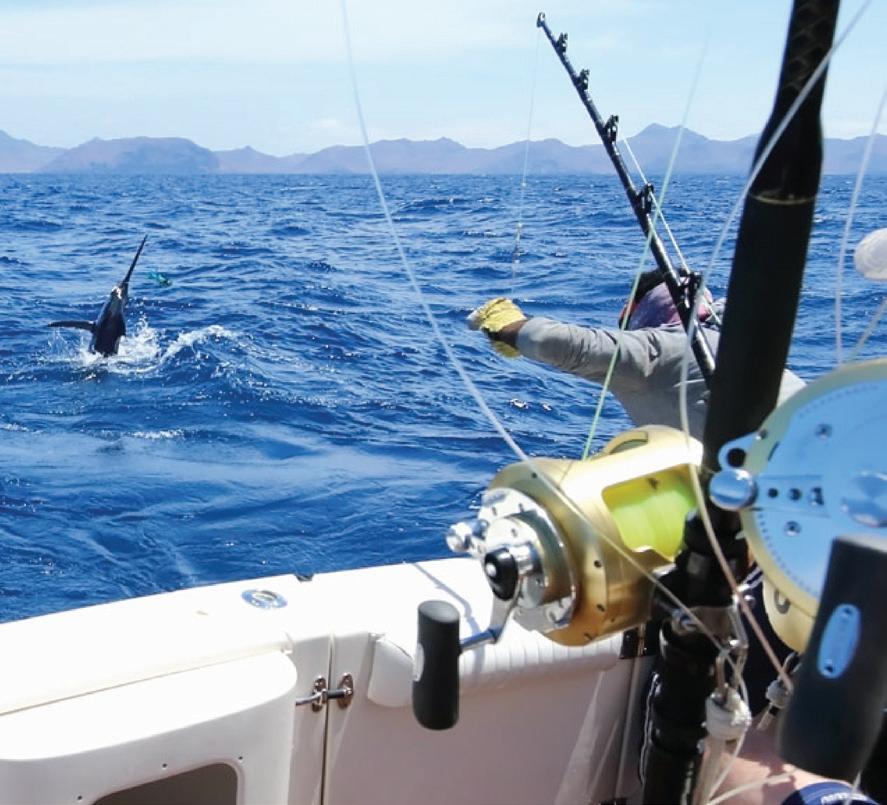
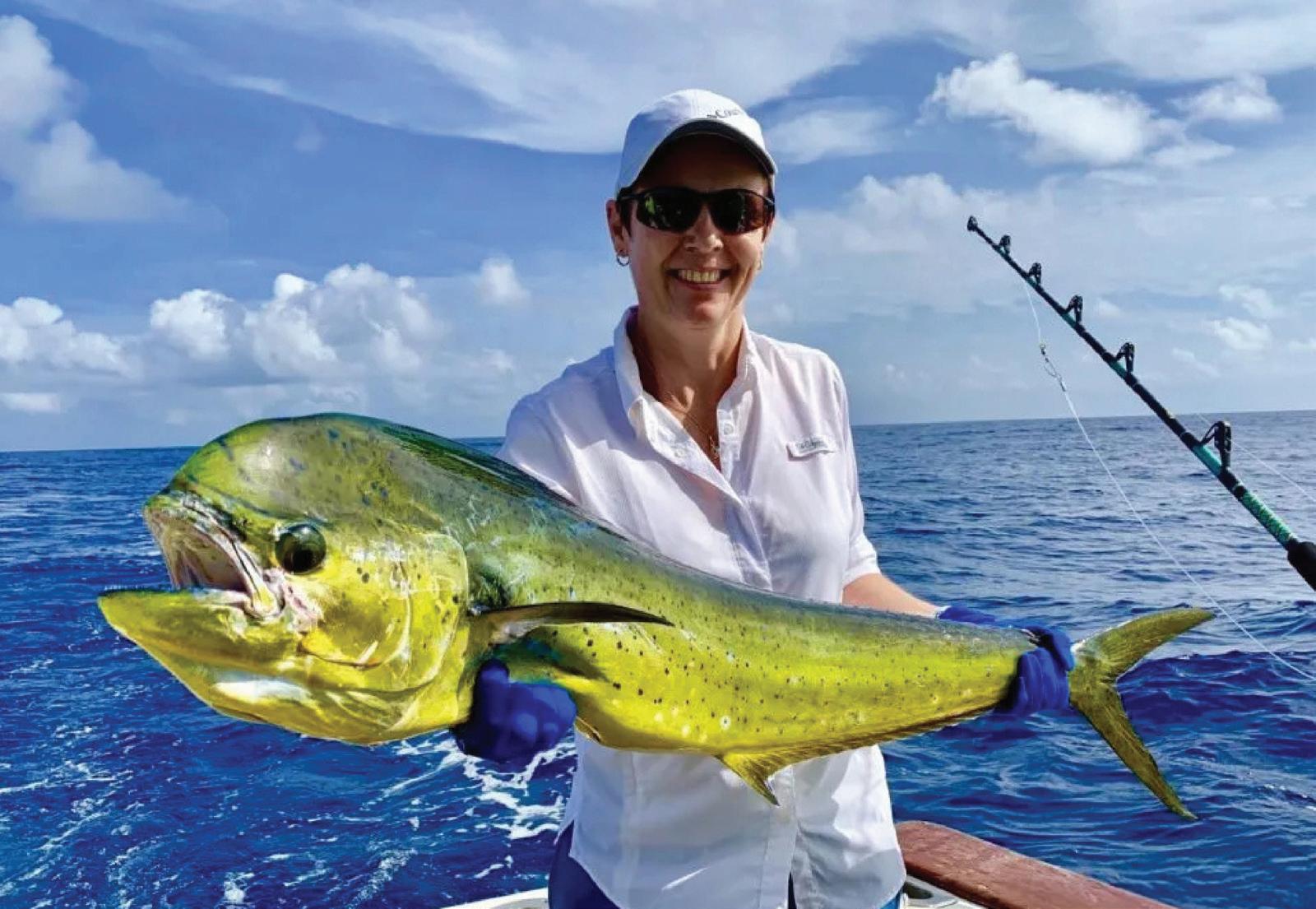
* Research and reviews: Look for charters with good reviews from previous clients. Websites like TripAdvisor and fishing forums can provide valuable insights into the experiences of other anglers.
* Experience of crew: The expertise of the crew can significantly impact your fishing experience. Choose a charter with experienced guides who are knowledgeable about the local waters and fishing techniques.
* Equipment provided: Ensure the charter provides quality fishing gear and equipment. A well-maintained boat with safety equipment is essential for a successful and safe fishing trip.
* Group size: Consider the size of the group you’re travelling with. Some charters accommodate large groups, while others focus on smaller, more personalised experiences. A smaller group often allows for more individual attention from the crew.
* Inclusions: Check what’s included in the price—some charters may offer lunch, drinks and bait, while others may charge extra. Understanding what to expect can help you plan your budget accordingly.
After a thrilling day of fishing, there’s nothing quite like enjoying the
fruits of your labour. Many charters offer the option to have your catch prepared at a local restaurant, allowing you to savour a delicious meal made from the freshest seafood imaginable. Imagine sitting by the ocean, enjoying a grilled tuna steak or a marlin fillet, seasoned to perfection and served with local sides.
For those looking to further immerse themselves in the culinary scene, consider joining a local cooking class. Learning to prepare traditional Swahili dishes with fresh seafood can be a delightful way to extend your fishing adventure.
Best time to fish: The prime fishing season runs from November to April, with specific species peaking during different months. Research the best times for your target species. Dress appropriately: Wear comfortable clothing and bring a hat, sunglasses and sunscreen. The sun can be intense, so protecting yourself is essential while out on the water. Stay hydrated: Bring plenty of water to stay hydrated during your trip, especially if you’re out for several hours.
Respect local regulations: Be aware of local fishing regulations including catch limits and size restrictions, to ensure sustainable fishing practices.
While deep-sea fishing is a highlight of Mombasa, the city has much more to offer. Take some time to explore the vibrant Old Town, with its narrow streets, bustling markets and historical sites like Fort Jesus. The blend of cultures in Mombasa is reflected in its food, architecture and daily life.
For relaxation, head to one of Mombasa’s beautiful beaches, such as Nyali or Diani. Here, you can unwind, swim or partake in other water sports such as snorkelling and diving to discover the rich marine life beneath the surface.
Deep-sea fishing in Mombasa is more than just a sport; it’s an adventure that connects you with the stunning beauty of the Kenyan Coast and its rich marine life. With the thrill of the catch, the camaraderie of fellow anglers and the backdrop of the Indian Ocean, it promises an experience that will be etched in your memory long after the last line is reeled in.
Whether you’re an experienced angler or a novice looking to cast your first line, Mombasa’s deep-sea fishing expeditions offer something for everyone.

“The Indian Ocean, known for its warm waters and diverse ecosystems, is home to an array of fish species including marlin, sailfish, tuna and barracuda”
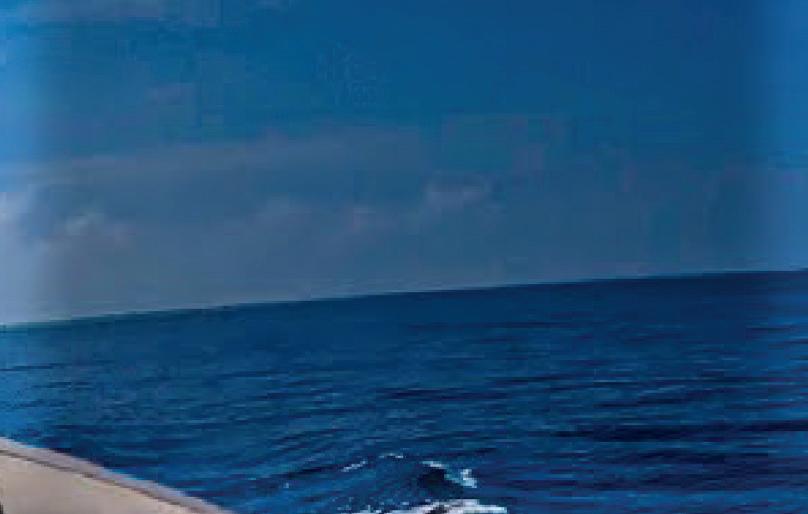
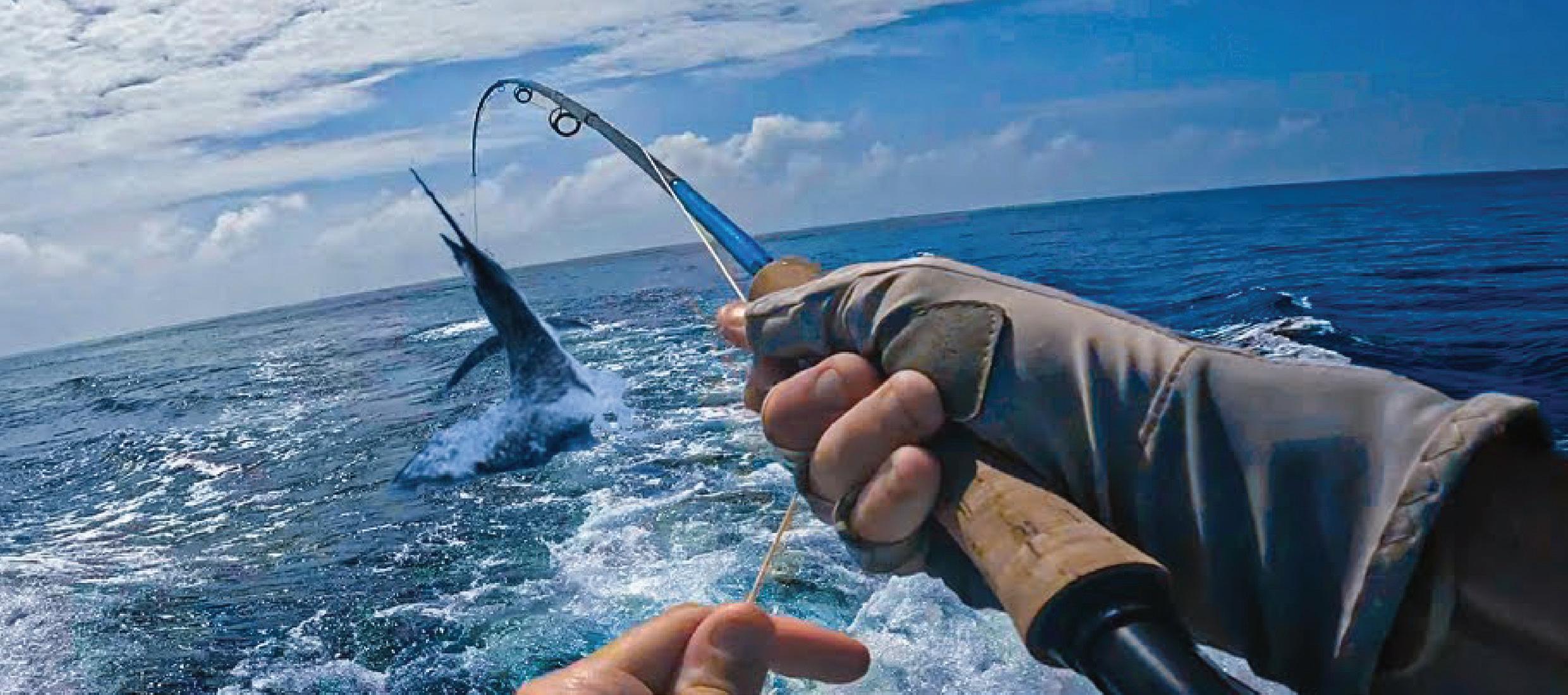
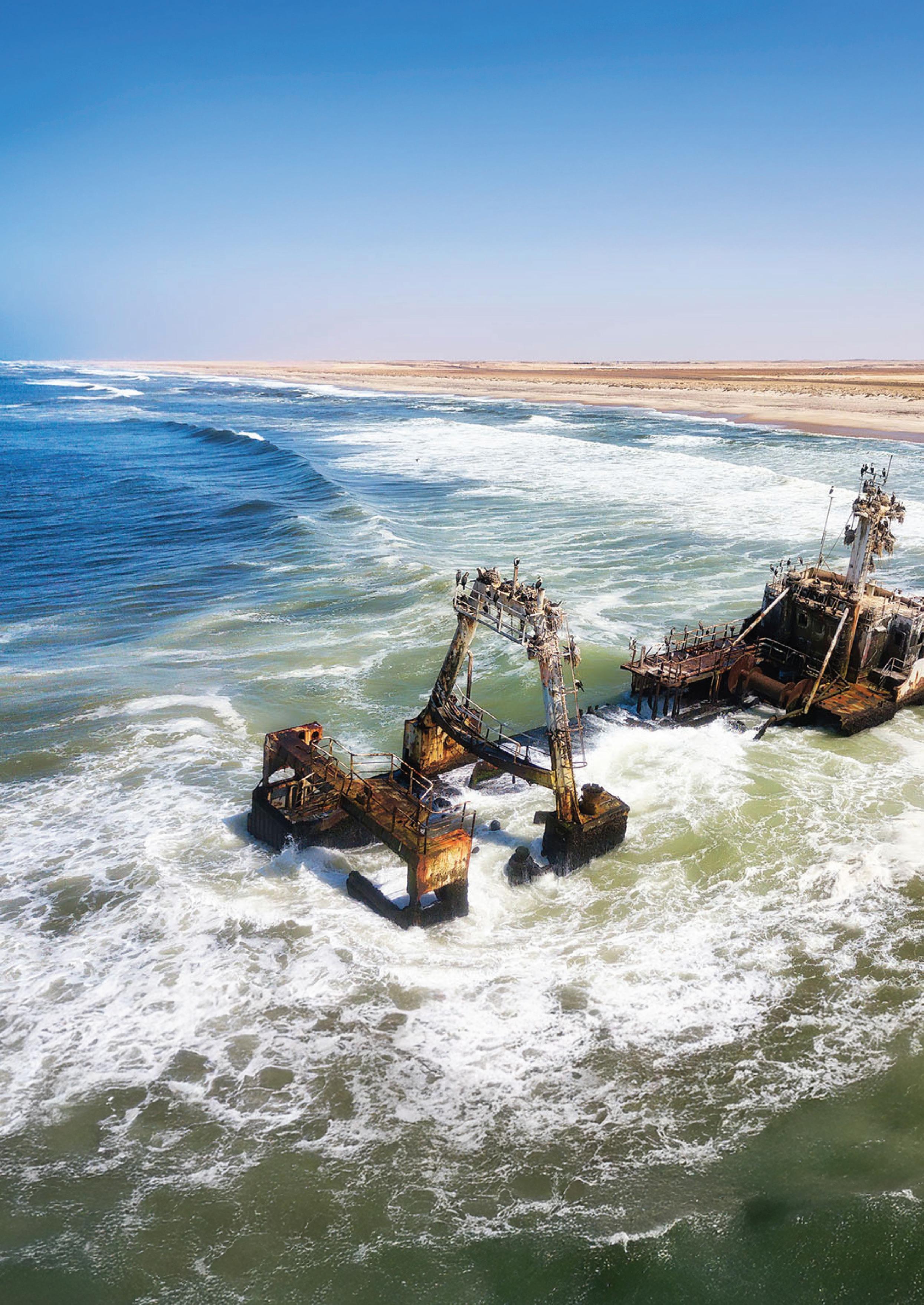
“Today, the Skeleton Coast is no longer a place of death, but of beauty and wonder.”
For travellers willing to venture into this untamed part of Namibia, the Skeleton Coast promises an experience like no other

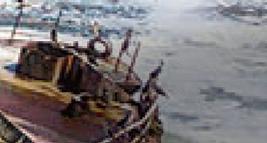

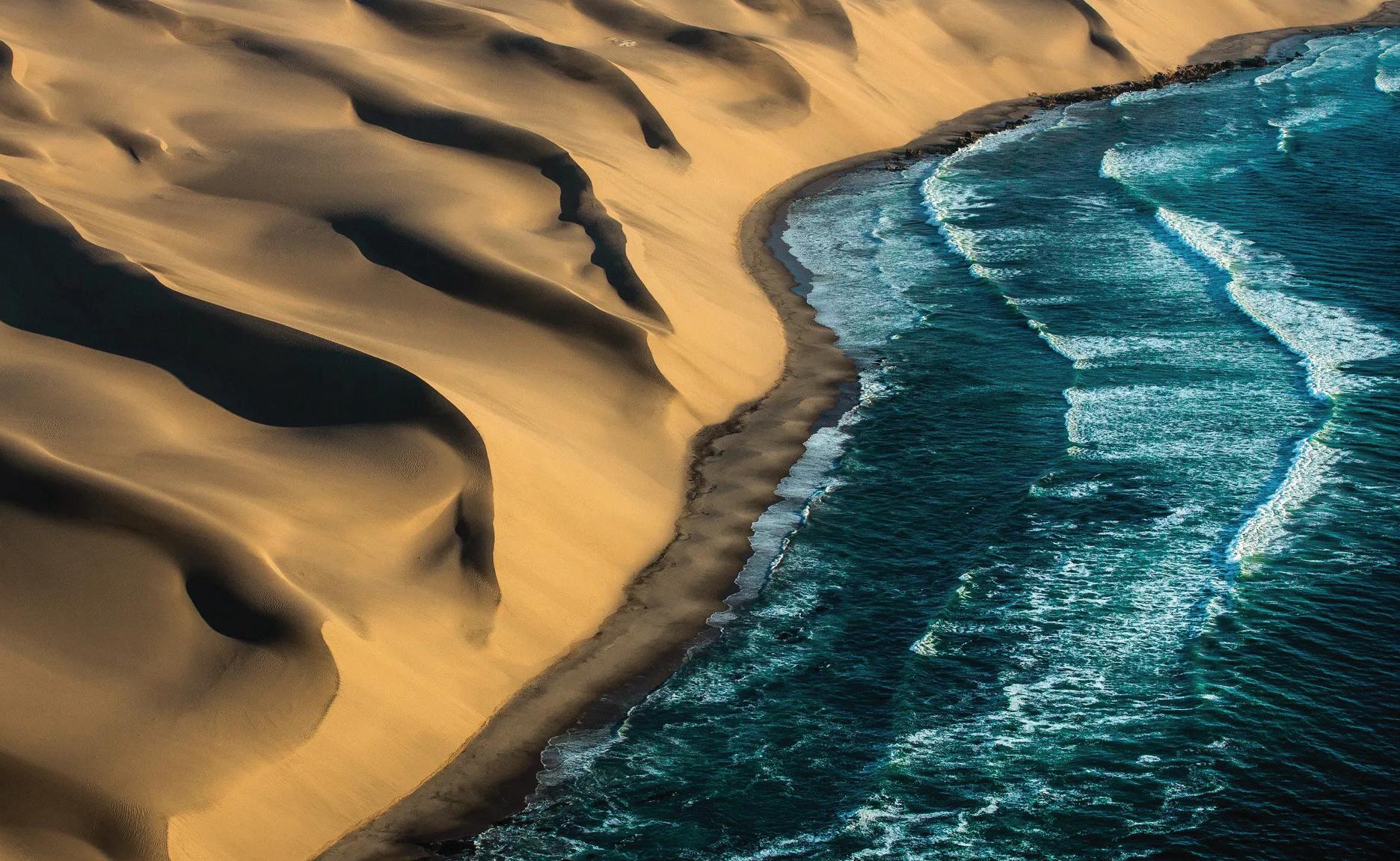






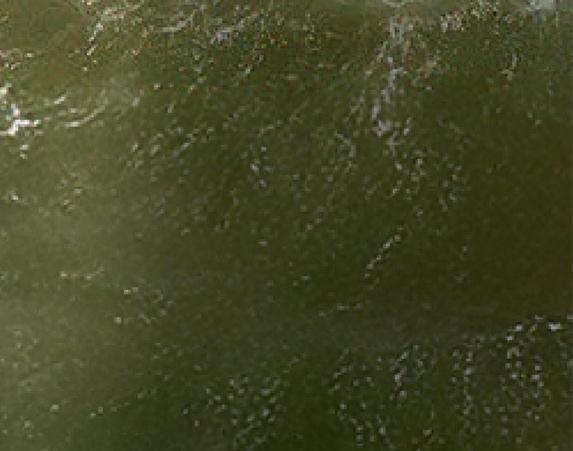
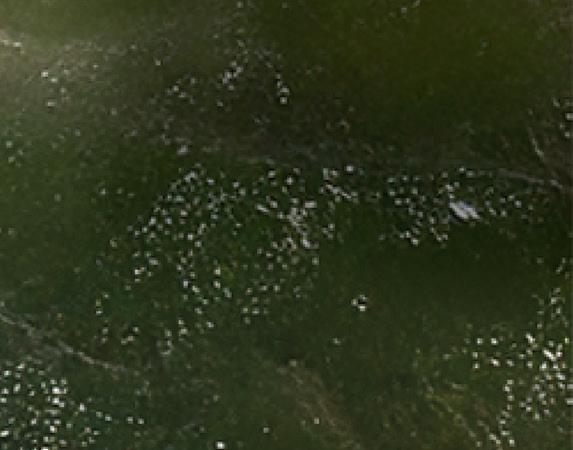


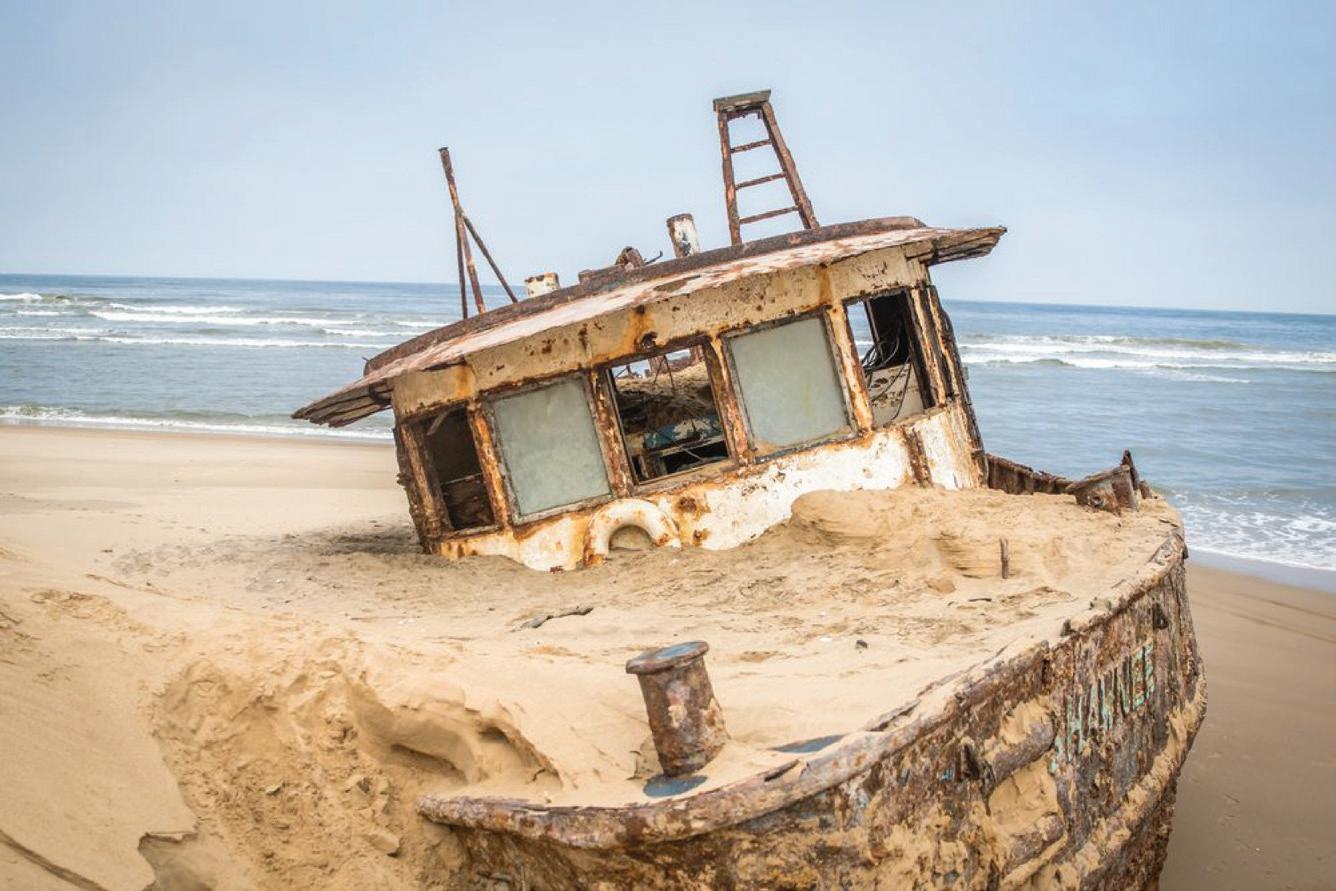




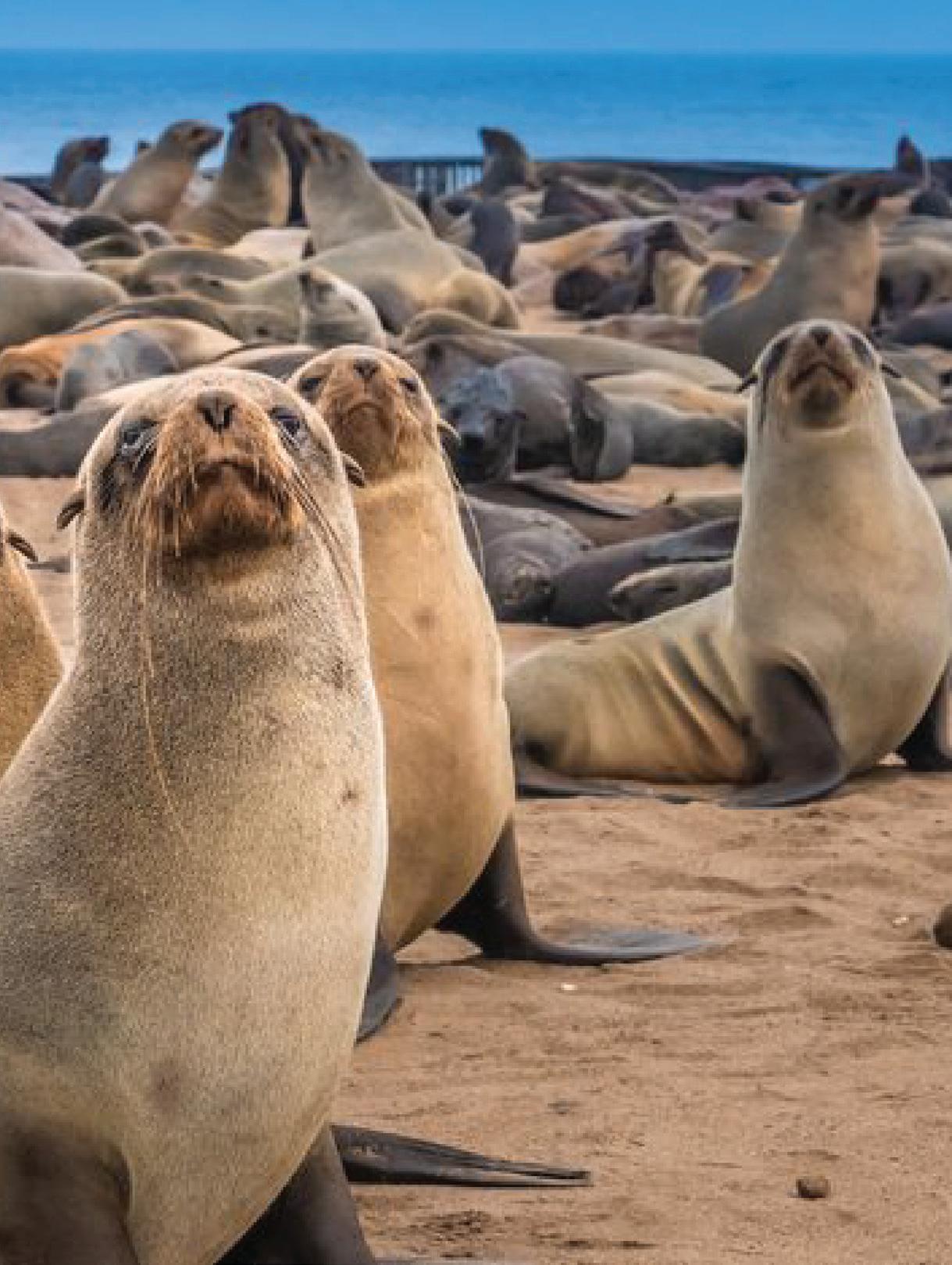
“Death would be preferable to banishment to such a country,” said the early Swedish explorer Charles John Andersson. The indigenous San people of the Namibian interior called the region “The Land God Made in Anger”, while Portuguese sailors once referred to it as “The Gates of Hell”.
But this area, the Skeleton Coast, is now acknowledged as one of Namibia’s greatest treasures.
It’s a wild, untamed stretch of desert coastline where the Atlantic Ocean crashes against the barren shore, and the rugged terrain is interspersed with dramatic dunes and rocky outcrops. Famed for its eerie beauty, this remote region has been both a symbol of mystery and danger for centuries. From the treacherous shipwrecks that dot its shores to the rich diversity of wildlife that thrives in its harsh environment, the Skeleton Coast is a place where the natural world and human history collide in the most extraordinary of ways.
Located in the far northwest of Namibia, the Skeleton Coast stretches along the Atlantic Ocean, from the Angola border to the mouth of the Hoanib River, covering a vast area of desert, dunes and canyons. It’s a destination that appeals to those seeking adventure, solitude and a glimpse into a part of Africa that few get to experience.
Whether you’re interested in its fascinating history, its unique flora and fauna, or the chance to explore one of the most remote places on Earth, the Skeleton Coast offers something for every type of traveller.
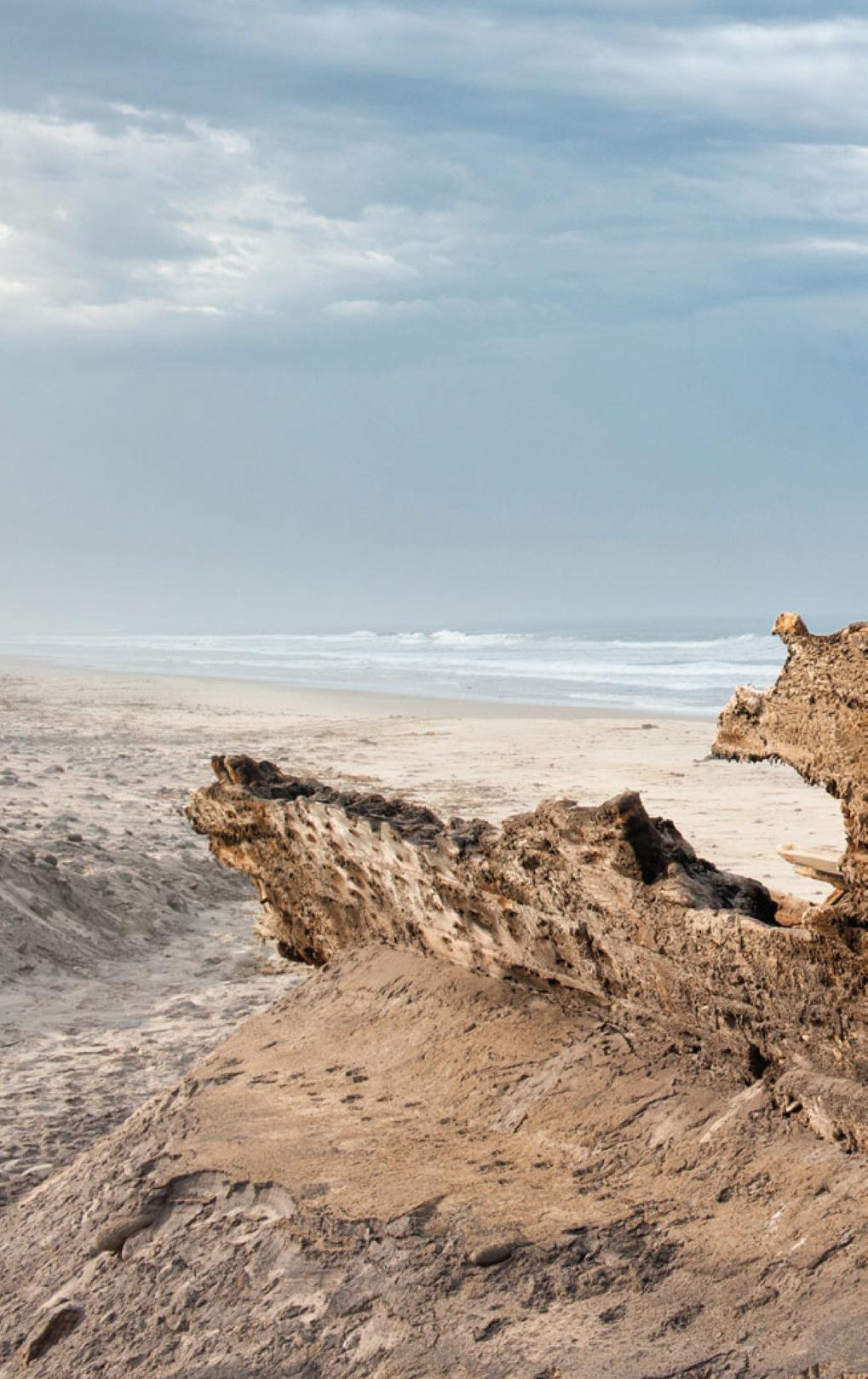
The name “Skeleton Coast” evokes images of desolation and death, and the region certainly earned its ominous moniker due to the many shipwrecks that have occurred along its shoreline. The coast became infamous in the 16th century, when Portuguese explorers, navigating the rough waters of the Atlantic, began to report the area’s hazardous conditions.
The high, shifting dunes and foggy weather create a dangerous combination for vessels, with many ships getting lost and stranded on the rocky shores.
Over the centuries, the coast’s name was sealed by the discovery of human remains, scattered shipwrecks and other wreckage, which became a haunting reminder of the region’s perilous reputation. While many of the vessels that met their end were lost in the past, the skeletons of the ships, their rusty remains and the scattered bones of their crew, are reminders of just how hostile the environment can be.
In addition to shipwrecks, the Skeleton Coast has a darker history of its indigenous people, particularly the Himba and Herero tribes. They navigated the desert long
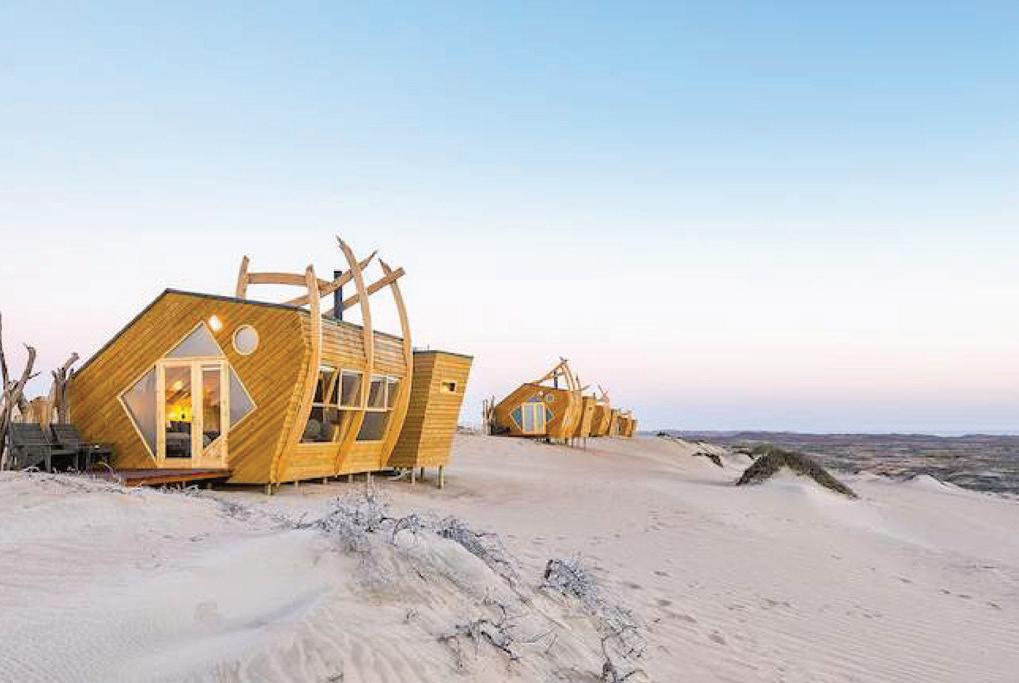
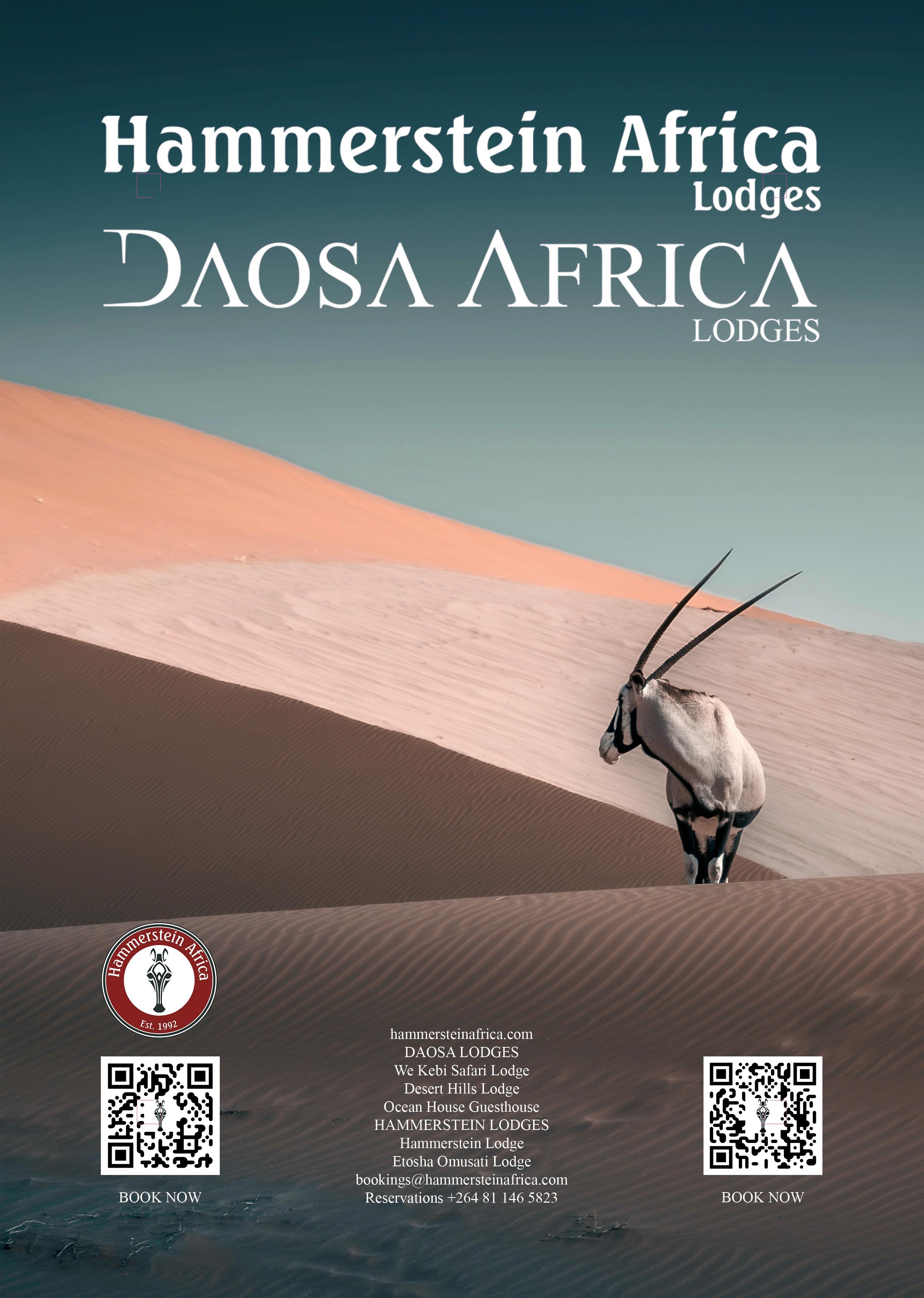
before European explorers arrived, surviving in the harsh conditions by using their knowledge of the terrain.
However, it was the arrival of German colonial forces in the early 20th century that would leave a lasting impact on the area, as they forced many of the indigenous groups off their land and into concentration camps.
Today, the Skeleton Coast is no longer a place of death, but of beauty and wonder.
Its dramatic landscape, combined with the tales of its past, make it a captivating destination for those looking for a deeper connection with the land’s history.
One of the most fascinating features of the Skeleton Coast is the legacy of shipwrecks that line the shore. Since the 16th century, hundreds of vessels have succumbed to the treacherous conditions of the coast.
The most famous wrecks are those from the 19th and early 20th centuries, when the coast was a key part of the international shipping route between Europe and Africa.
Some of the most notable shipwrecks include:
* Dunedin Star: Perhaps the most famous shipwreck on the Skeleton Coast, the Dunedin Star ran aground in 1942, despite repeated warnings from local pilots. The wreck remains in situ and is a popular site for visitors, serving as a reminder of the coast’s dangerous allure.
* SS Eduard Bohlen: One of
the more striking wrecks, this German vessel ran aground in 1909, and its skeletal remains can still be seen half-buried in the sand near the dry mouth of the Uniab River.
* Ovamboland: This freighter wrecked in 1977 and remains partially exposed by the shifting sands, offering another ghostly testament to the power of the Atlantic.
While these shipwrecks are a haunting reminder of the coast’s dangers, they also add an eerie, atmospheric charm to the Skeleton Coast.
Some of these wrecks are far from the nearest town, only accessible by guided tours or in the case of fly-in safaris, but they provide an incredible sense of connection to the past.
Despite the harsh, arid conditions, the Skeleton Coast is home to an astonishing array of wildlife, many of which have adapted to survive in this inhospitable environment. The coast’s ecosystem is a fragile yet vital part of Namibia’s biodiversity, with species ranging from desert-adapted elephants to the elusive brown hyena.
The constant mist from the cold Atlantic waters provides enough moisture for a variety of life to thrive, particularly in the sheltered valleys and riverbeds where water is sometimes found.
One of the region’s most iconic wildlife species is the desert-adapted elephant. These pachyderms have
evolved to survive in one of the harshest environments on Earth, with the ability to traverse long distances in search of water. The desert elephants of the Skeleton Coast are smaller than their inland counterparts and have a lighter skin colour, which helps reflect the heat of the desert sun. They are often seen in the dry riverbeds of the Hoanib and Kunene rivers, where they dig for water deep beneath the surface of the sand.
Another creature that thrives on the Skeleton Coast is the elusive brown hyena. Known for its nocturnal nature, it’s a scavenger that thrives in the arid conditions. These animals have adapted to the Skeleton Coast’s lack of traditional food sources by foraging for whatever they can, including the carcasses of seals, dead marine life and even the remains of shipwrecks.
The brown hyena is particularly well-suited to the coast’s sparse environment, able to survive on a diet of mostly carrion, and it plays a crucial role in maintaining the ecological balance.
While the Skeleton Coast is largely barren, it’s not entirely devoid of plant life. In fact, some plant species have adapted to the harsh desert environment, often thriving in the sheltered valleys or along the riverbeds that occasionally fill with water.
Perhaps the most famous plant of the Skeleton Coast, the prehistoric Welwitschia mirabilis plant is known for its unique appearance and
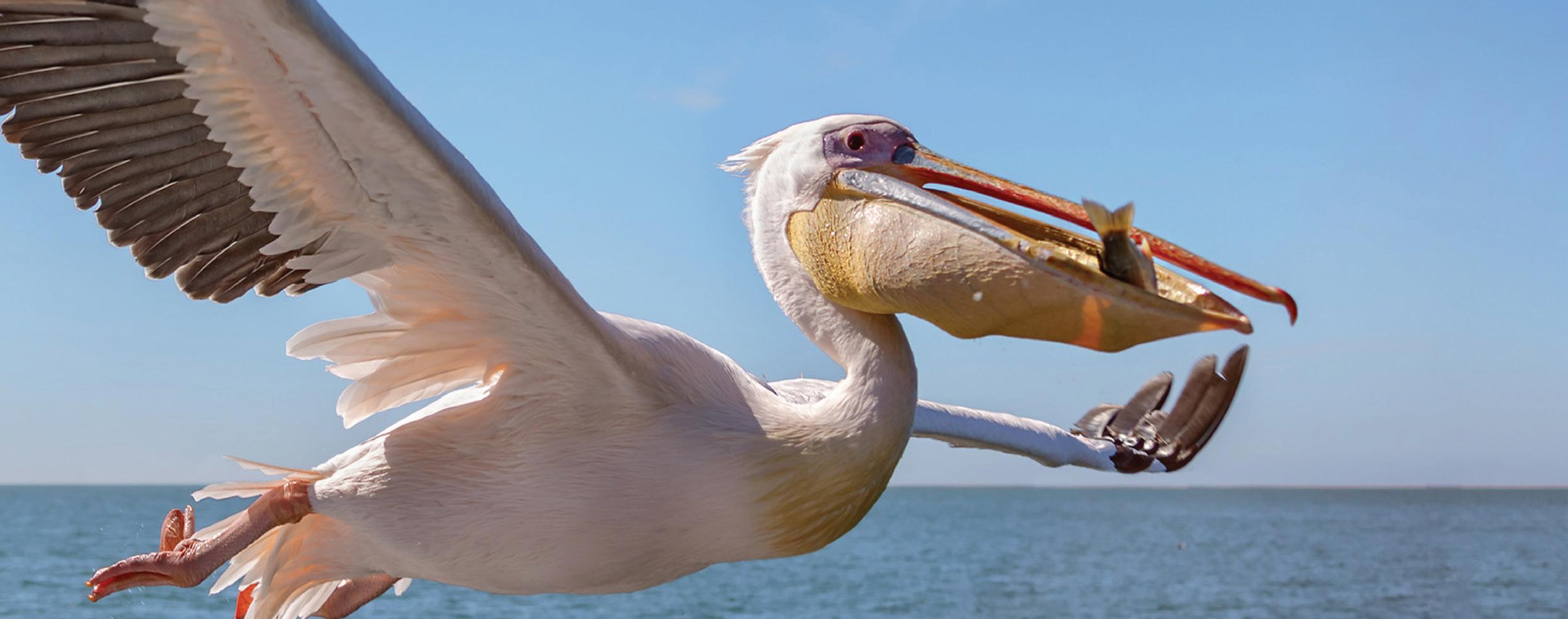
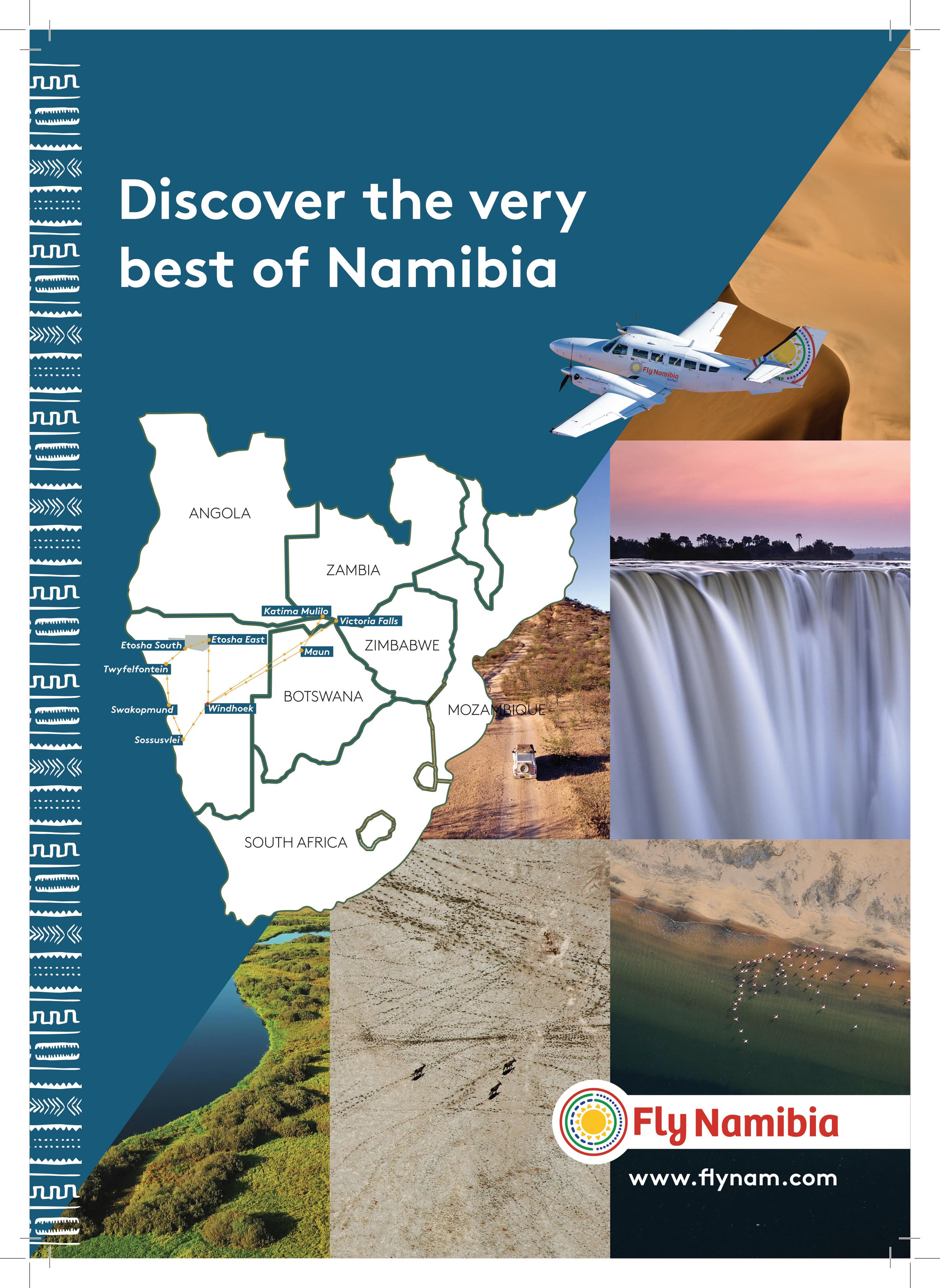
longevity. Welwitschia can live for up to 2 000 years and are capable of surviving in extremely arid conditions. Its broad, strap-like leaves and deep roots help it survive the desert’s harsh conditions.
Hardy camelthorn trees, with their long, spiny branches, can be found in some of the more sheltered areas of the Skeleton Coast, providing much-needed shade for both wildlife and travellers.
Several species of succulents, such as the Klein Dune succulent, can also be found along the coast, with their thick, fleshy leaves storing water to help them survive in the region’s dry conditions.
The Skeleton Coast is home to one of the largest colonies of Cape fur seals in the world, with thousands of these playful marine mammals calling the coastline home.
The seal colonies at Cape Cross, located to the south of the Skeleton Coast, are a must-visit for wildlife enthusiasts. Here, the colony sprawls across the coastline, with seals lounging on the rocky shores and in the shallow waters of the Atlantic.
The waters off the Skeleton Coast are also teeming with life. The cold Benguela Current brings a rich variety of marine life including schools of fish, crustaceans and an abundance of seabirds.
Dolphins, sharks and even whales can be spotted off the coast during certain times of the year, making it an excellent destination for marine life enthusiasts.
The Skeleton Coast is also a birdwatcher’s paradise, particularly for those interested in seabirds. The region is a key breeding ground for many species, thanks to the abundance of food from the rich marine environment.
Some of the most commonly spotted birds include the endangered African penguin, often nesting on offshore islands; Cape cormorants that nest on the rocky outcrops along the coast, diving into the ocean to catch fish and squid; and various species of gulls and pelicans that thrive in the nutrient-rich waters.
Birdwatching on the Skeleton Coast offers a unique opportunity to see these coastal and migratory species in their natural habitat, often with the backdrop of the dramatic desert scenery.
The Namibia government declared the 16 000km2 area of coastline and adjacent deserts, scrub and marshlands as the Skeleton Coast National Park, from the Ugab River to the Kunene.
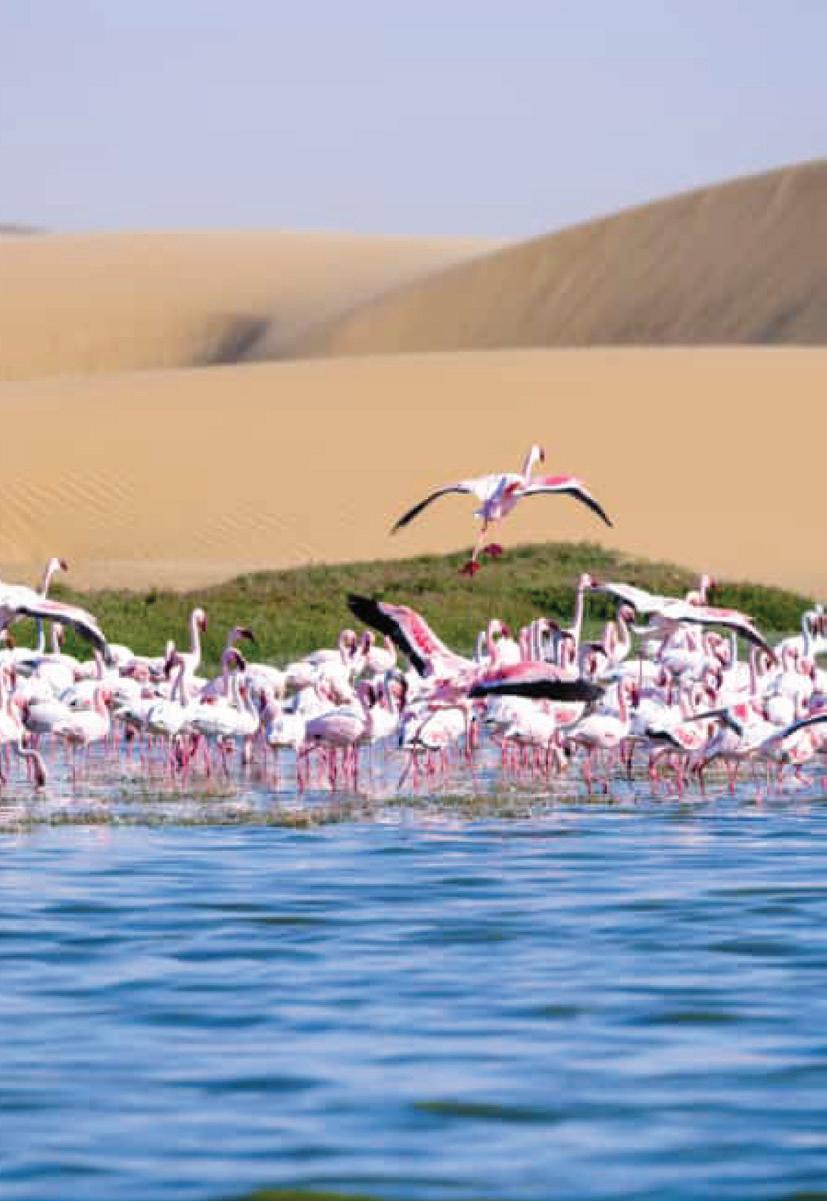
The park is divided into two sections: the southern section, which is open to tourism and can be explored by 4x4, on foot or via fly-in safaris, and the northern part from Torra Bay up to the Kunene at the Angolan border, which is not accessible. This latter area can only be reached with a tour operator holding a concession and qualification; it’s worth the effort, though, as this is the most attractive.
The park is renowned for its isolation, and visitors to the park can expect to encounter very few people, making it an ideal destination for those seeking solitude and adventure.
The Skeleton Coast National Park is home to a wide range of wildlife, and it provides a rare opportunity to see desert-adapted animals in their natural habitat.
For those seeking to explore the Skeleton Coast, accommodation options are varied, ranging from basic camping to luxurious lodges. There are several safari lodges and camps that offer guided tours and all-inclusive packages, many of which are located near the park’s southern entrance.
One of the most unique accommodations in the region, Shipwreck Lodge (shipwrecklodge. com.na) offers an unforgettable experience, with luxury tented cabins designed to
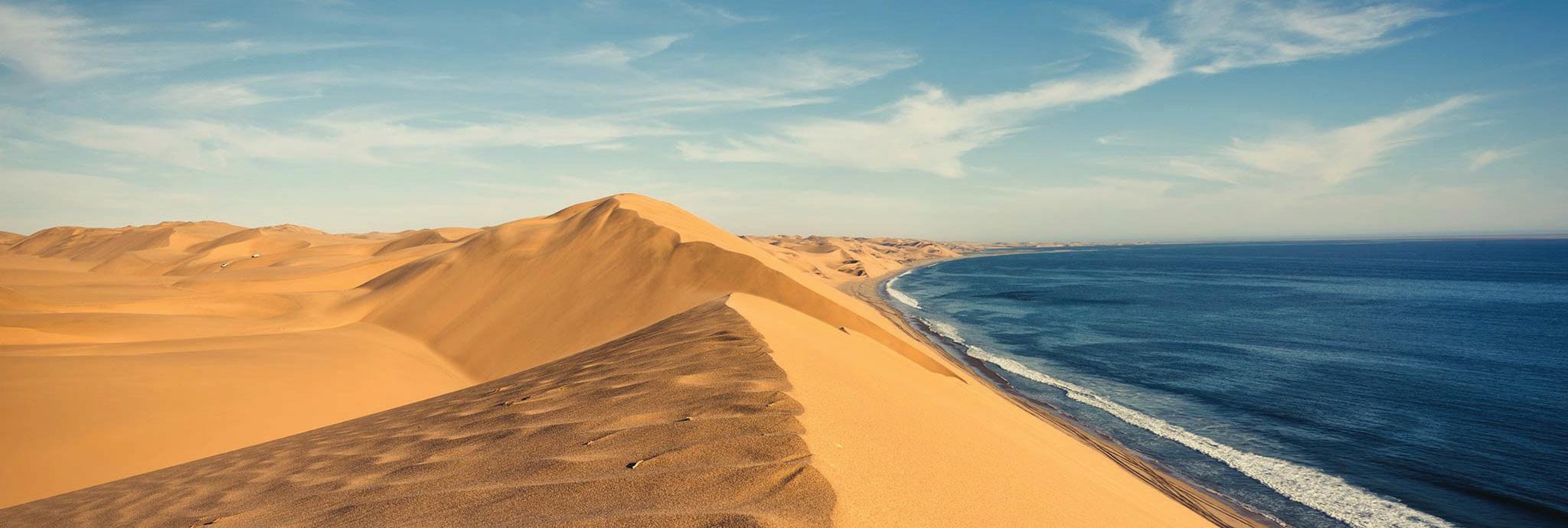
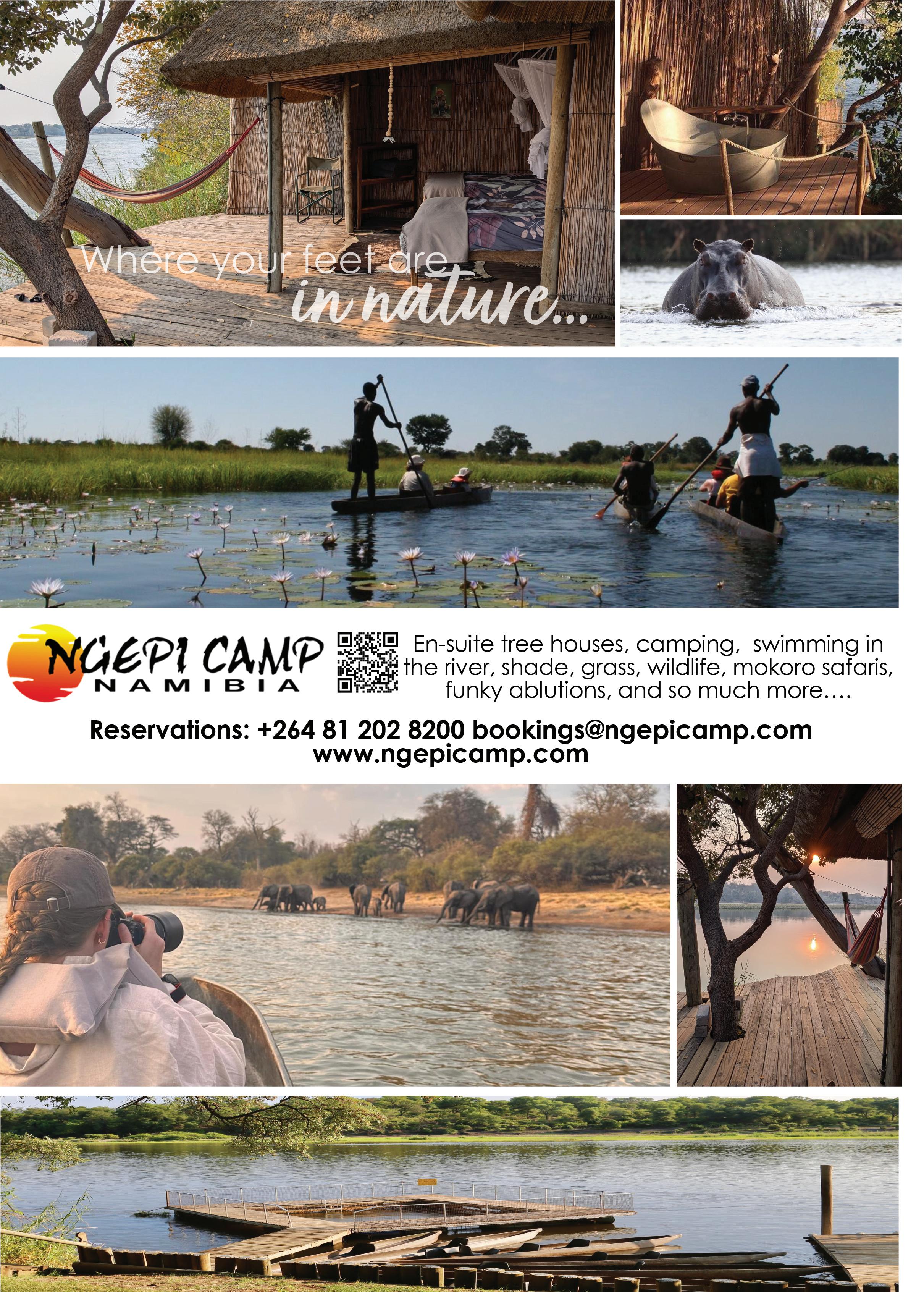
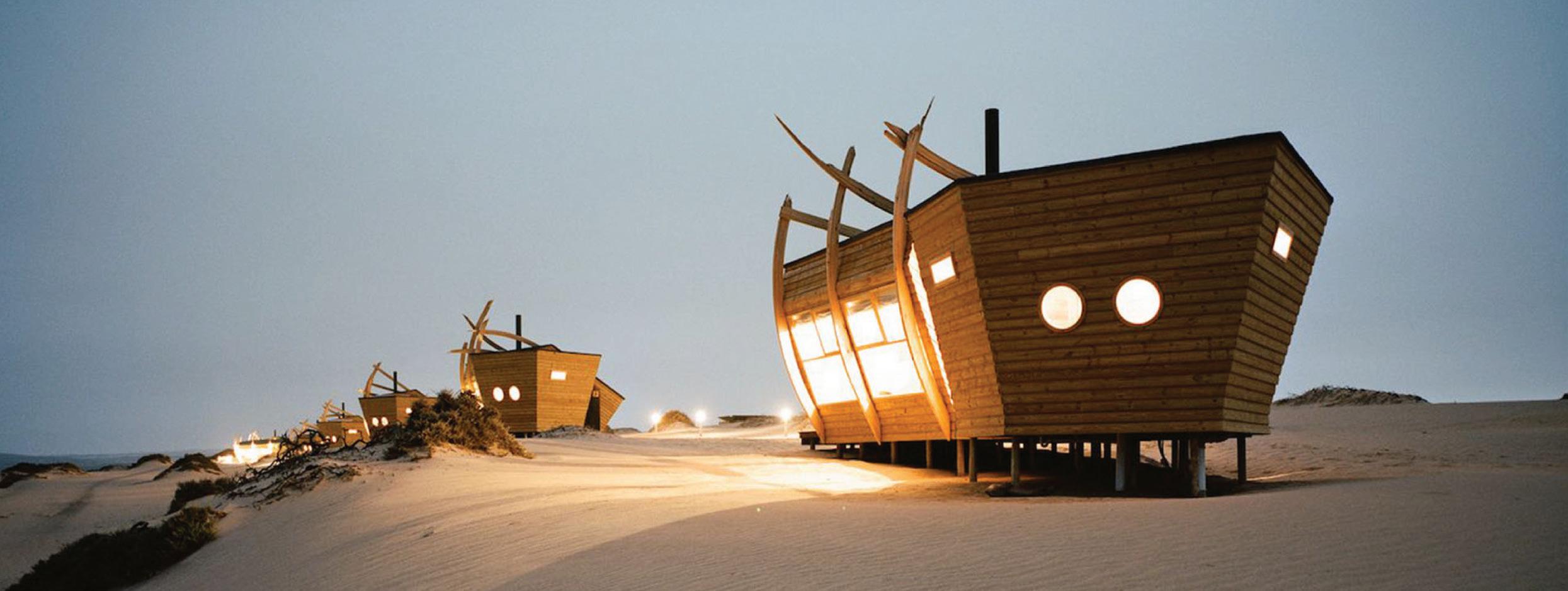


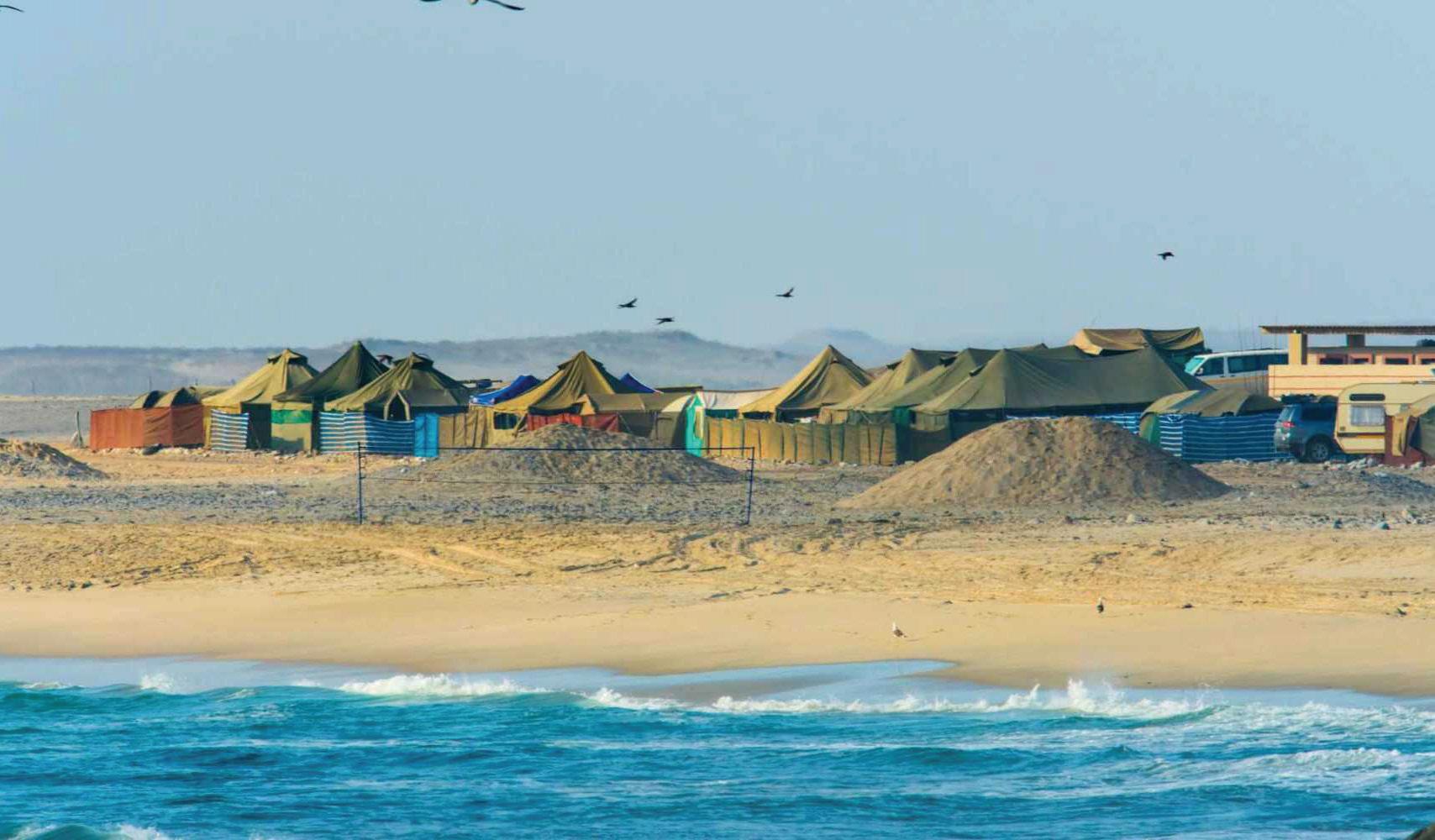
resemble the rusted remains of a shipwreck. Located on the edge of the Skeleton Coast National Park, it offers stunning views and access to guided excursions to see the shipwrecks, wildlife and dramatic desert landscapes.

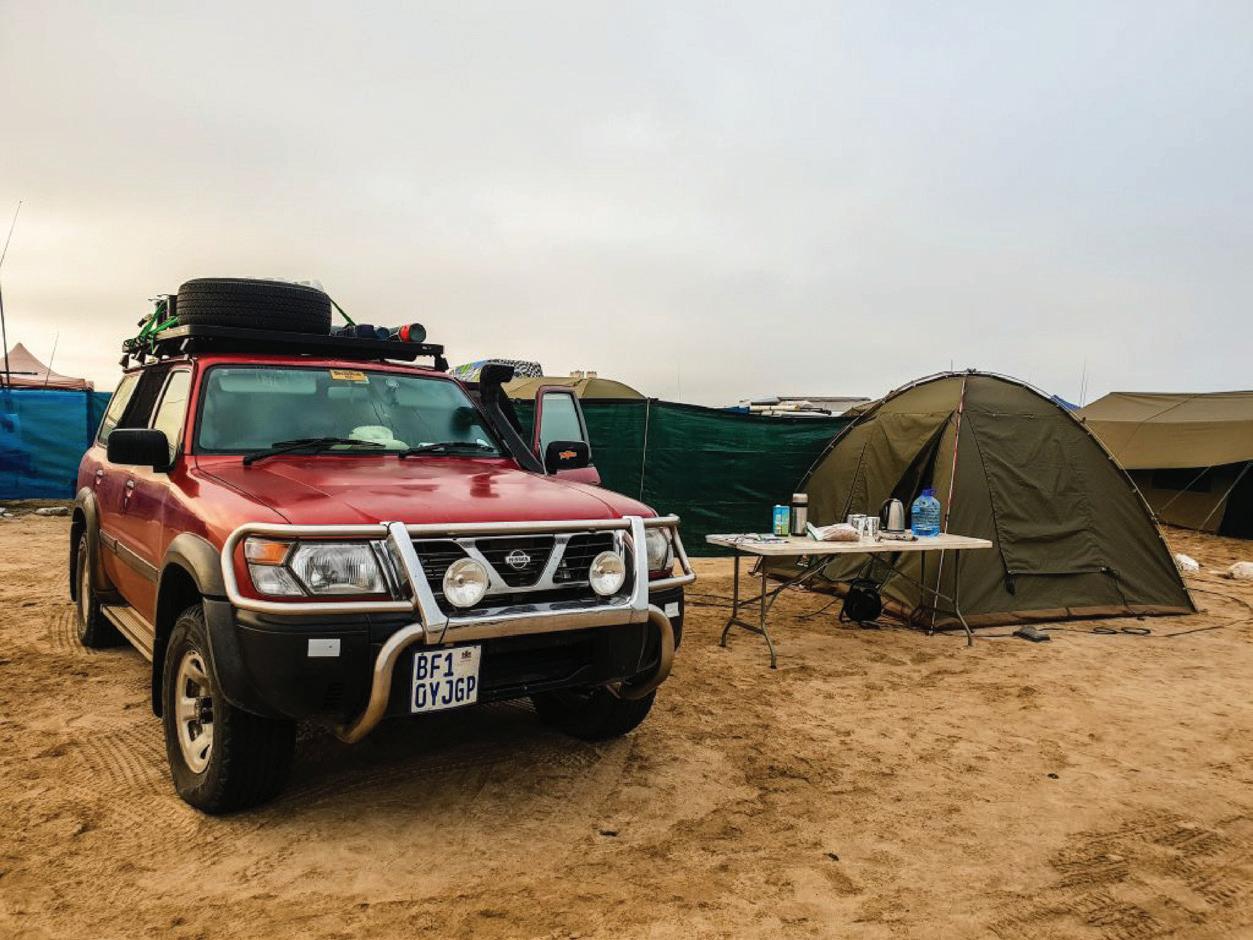





For those who really want to ‘rough it’, there’s a campsite at Torra Bay (www.nwr.com.na) that’s open during the tourist season (December to January) and which has very basic amenities only. It’s a popular seasonal fishing retreat due to the bounty of fish coming down on the Atlantic current.
For those seeking the ultimate in luxury, private fly-in safaris are available, offering a truly exclusive experience. These safaris allow visitors to explore the coast by air, stopping off at remote locations along the way to view wildlife and shipwrecks, while also offering unparalleled views of the stark desert landscape.
Namibia’s Skeleton Coast is a place of haunting beauty, where history, wildlife and nature converge in the most dramatic of ways.
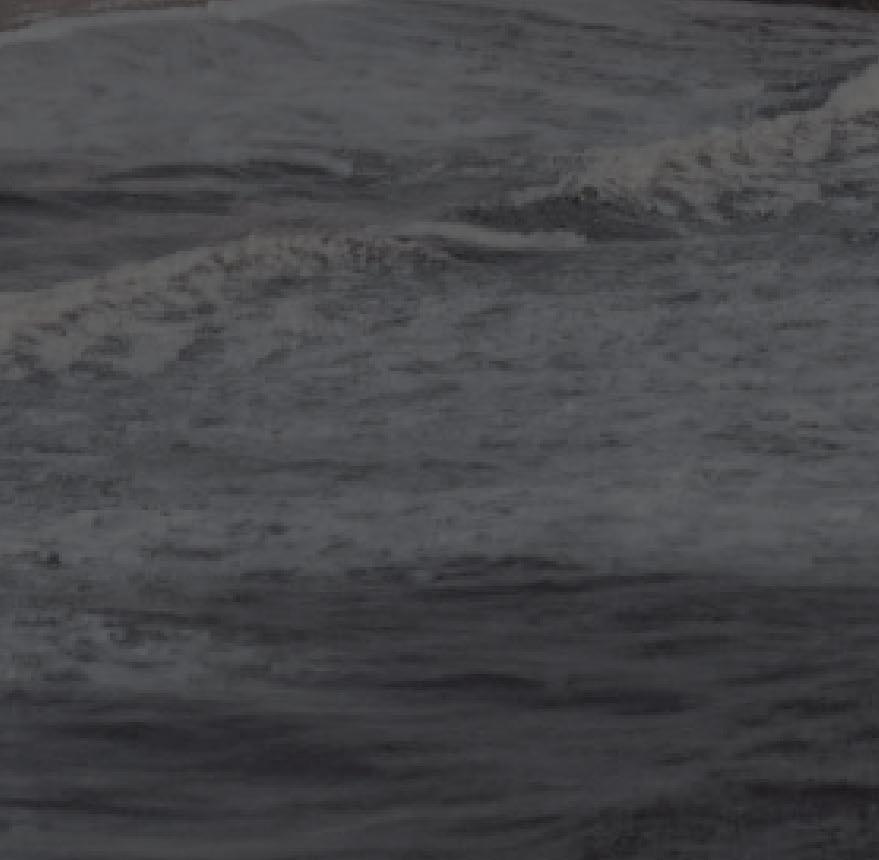
It’s a destination that appeals to those seeking adventure, solitude and a deeper connection to a land that has been shaped by time, weather and the forces of the Atlantic Ocean.
From its eerie shipwrecks and desert-adapted wildlife to its rugged landscapes and remote luxury lodges, the Skeleton Coast is a journey into one of the world’s last true wildernesses.


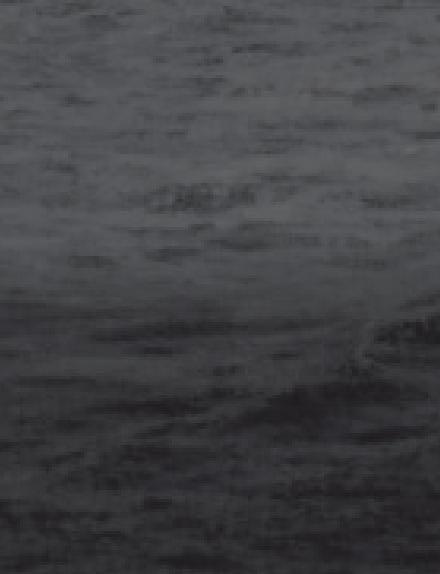

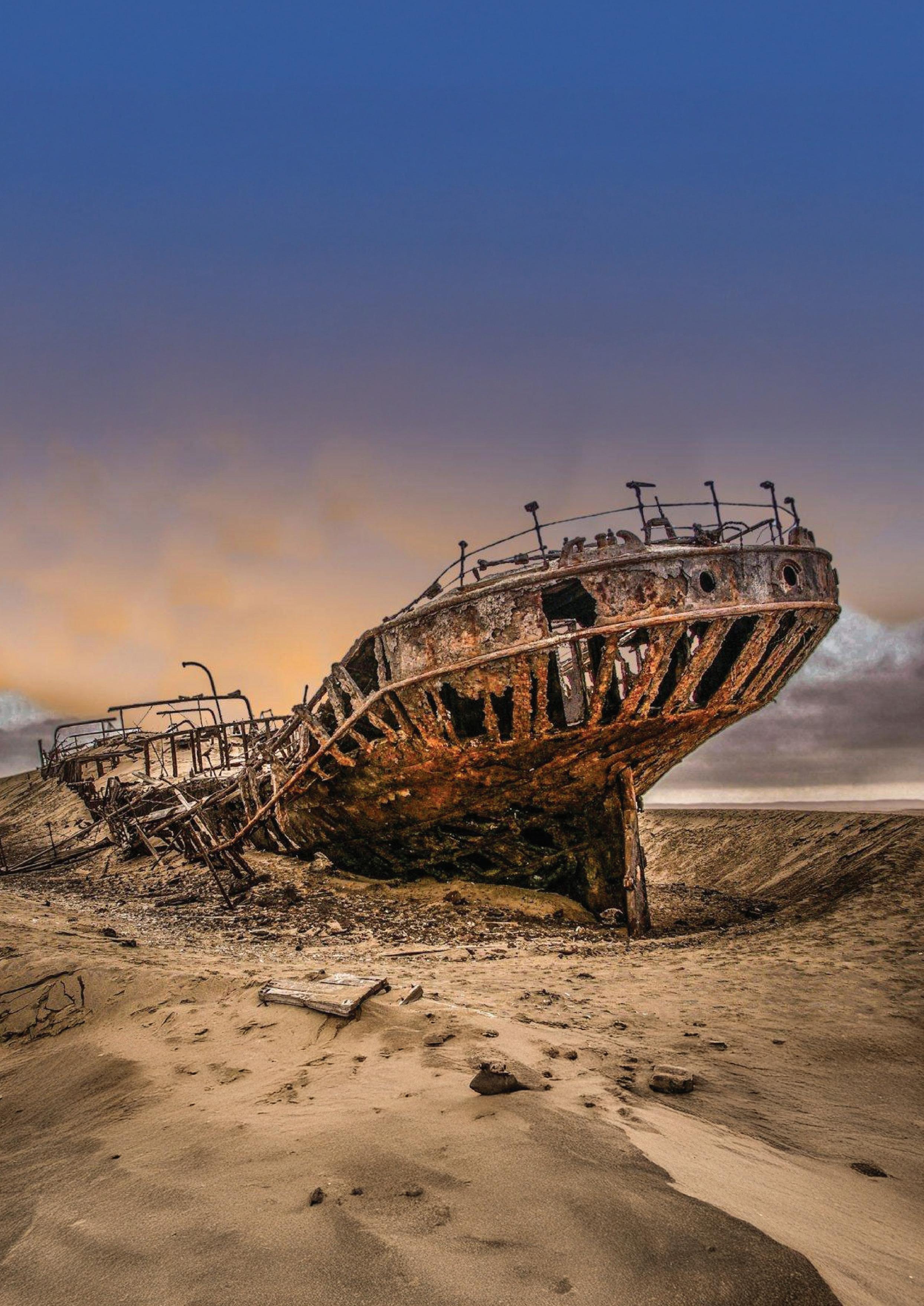
“One of the most fascinating features of the Skeleton Coast is the legacy of shipwrecks that line the shore.”
